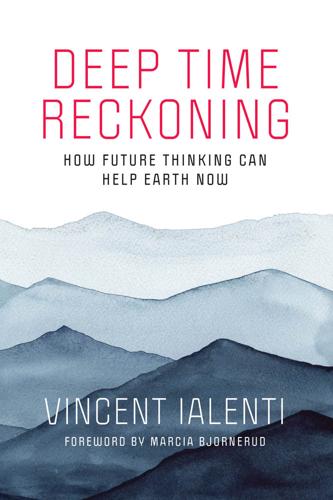
Deep Time Reckoning: How Future Thinking Can Help Earth Now
by
Vincent Ialenti
Published 22 Sep 2020
Rudwick, Scenes from Deep Time, 2. 31. Julia Thomas, “History and Biology in the Anthropocene: Problems of Scale, Problems of Value,” American Historical Review 119, no. 5 (2014). 32. Andreas Malm, “The Anthropocene Myth,” Jacobin, March 30, 2015, https://www.jacobinmag.com/2015/03/anthropocene-capitalism-climate-change/. 33. Jason Moore, “The Capitalocene, Part I,” Journal of Peasant Studies 44, no. 3 (2017). 34. Erik Swyngedouw, “Anthropocenic Promises,” lecture at the CERI, Sciences Po Paris, France, June 2, 2014. 35. Donna Haraway, “Anthropocene, Capitalocene, Plantationocene, Chthulucene: Making Kin,” Environmental Humanities 6 (2015): 159–165. 36.
…
So, with Finland’s nuclear waste repository project in mind, let’s return to the Anthropocene. This is, after all, the key historical setting that makes embracing deep time learning all the more essential. ENTER THE ANTHROPOCENE The Anthropocene is, as I write, not (yet) a formal interval of geological history. But the idea behind it is not new.20 The view that humanity has affected the Earth so profoundly that it has become a formidable geological force has gained considerable ground. The atmospheric chemist and Nobel Prize–winner Paul Crutzen revived the Anthropocene concept in 2000, advocating for it at an International Geosphere-Biosphere Programme conference in Mexico.
…
In the decades to follow, ideas of humanity as a geological force interspersed the development of what would become Earth systems science, but the topic remained something of a sideline item (Steffen et al., “The Anthropocene,” 843–844). Biologist Eugene Stoermer, however, has used the term Anthropocene informally since at least the 1980s. Andrew Revkin, in a 1992 book on global warming, speculated that future earth scientists would give the name Anthrocene to a post-Holocene “geological age of our own making” (Revkin, Global Warming: Understanding the Forecast [New York: Abbeville Press, 1992], 55). 21. Jan Zalasiewicz, “Response to Adrian J. Ivakhiv’s ‘Against the Anthropocene’ Blog Post,” Immanence 7 (July 2014). 22. Steffen et al., “The Anthropocene.” 23. J. Zalasiewicz, C.N.
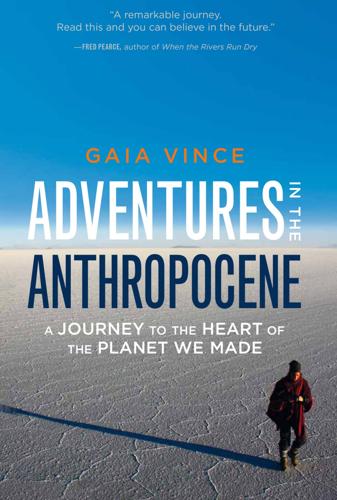
Adventures in the Anthropocene: A Journey to the Heart of the Planet We Made
by
Gaia Vince
Published 19 Oct 2014
This stability led to the development of culture and civilisations – our species became more populous and so successful we spread across six continents. The impacts of the Anthropocene will be just as profound. It was Nobel laureate Paul Crutzen who came up with the term Anthropocene. The Dutch chemist was sitting in a scientific conference, he told me, when it occurred to him that all the biophysical changes that researchers were discussing ‘meant we weren’t in the Holocene any more. The planet had changed too much from what would be considered normal for the Holocene.’ Crutzen made a case for the Anthropocene in an article in Nature in 2002, and over the past decade the term has gained use in the scientific community.7 Now, the British Geological Society is beginning the slow process of formally deciding and listing this new epoch, based on the changes humans are making to the biosphere that will be preserved in the geology, chemistry and biology of our planet for thousands or millions of years.8 These include land-use changes, such as the conversion of forest to farmland, and radioactive fallout particles.
…
Marine ecologists are warning of worse to come: human changes to the marine environment may lead to a tipping point in which jellyfish rather than fish dominate the oceans of the Anthropocene, much as they did hundreds of millions of years ago in pre-Cambrian times.27 Jellyfish are simply better prepared than other marine life for Anthropocene conditions – warmer temperatures, salinity changes, ocean acidification and pollution work to their advantage. Jellyfish can cope far better with anoxia (low oxygen) than muscular fish. Even our infrastructure – pontoons, piers and drilling platforms – is a boon for jellyfish, providing an anchor for polyps. We need to decide what kind of ocean biodiversity we want for the Anthropocene – and then act fast if we are to save species.
…
And it’s thought that thousands of years before that, hunter-gatherer communities burned large areas to encourage grazers and their predators to the area for easier hunting. But not until the Anthropocene has the far-reaching, global impact of humanity come into play. Now, the sheer number of people, their spread and incredible harvesting of natural resources, means that Holocene ecosystems throughout the world are tipping into new Anthropocene states that have never been seen before. The megafauna extinctions that occurred at the end of the Pleistocene were small, insignificant happenings compared to what is occurring in the Anthropocene – we’ve lost a third of wild vertebrates just since 1970. In around 300 years, 75% of all current mammal species on Earth will be extinct – that’s the startling calculation made by palaeobiologist Anthony Barnosky, at the University of California, Berkeley, based on the current rates of extinction, and assuming the animals already threatened or endangered are wiped out this century.3 Renowned biologist E.
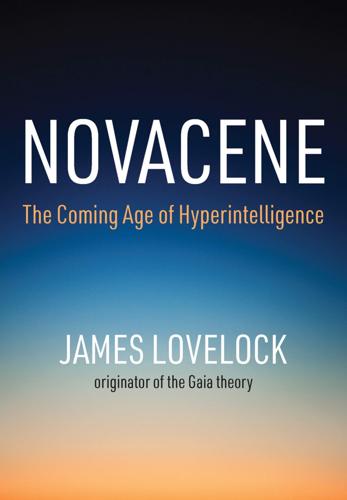
Novacene: The Coming Age of Hyperintelligence
by
James Lovelock
Published 27 Aug 2019
Lynas's point is not, however, negative. He believes that the Anthropocene could turn out to be a wonderful era for humanity. ‘As scholars, scientists, campaigners, and citizens,’ runs his Ecomodernist Manifesto, ‘we write with the conviction that knowledge and technology, applied with wisdom, might allow for a good, or even great, Anthropocene. A good Anthropocene demands that humans use their growing social, economic and technological powers to make life better for people, to stabilize the climate, and protect the natural world.’ This, say the believers in a bad Anthropocene, is madness. They see ecomodernism as a humanist superstition.
…
Though the term ‘Industrial Revolution’ is accurate enough, it neither catches the wider significance of the moment, nor does it encompass its full duration. The better name is the Anthropocene because it covers the full 300 years from Newcomen's installation of his steam pump until now and it captures the great theme of the era: the domination of human power over the entirety of the planet. The word ‘Anthropocene’ was first used in the early 1980s by Eugene Stoermer, an ecologist who worked on the waters of the Great Lakes that separate Canada from the United States. He coined it to describe the effect of industrial pollution on the wildlife of the lakes. It was one more sign that, in the Anthropocene, human activity could have global effects.
…
The numbers seem to rise consistently until you get back to the Big Bang, when they suddenly become impossibly small: the first age of the cosmos, known as the Grand Unification epoch, began 10-43 seconds after the Big Bang and only lasted until 10-36 seconds. If we accept the Anthropocene, as I believe we should, the ages are getting shorter again. In my view, the Novacene may only last 100 years, but I shall come back to that. For me, the key point that justifies the definition of the Anthropocene as a new geological period is the radical change that took place when humans first began to convert stored solar energy into useful work. This makes the Anthropocene the second stage in the planet's processing of the power of the Sun. In the first stage the chemical process of photosynthesis enabled organisms to convert light into chemical energy.
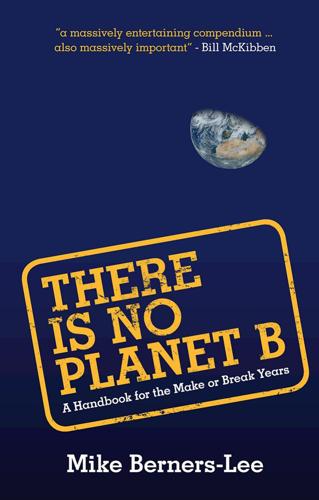
There Is No Planet B: A Handbook for the Make or Break Years
by
Mike Berners-Lee
Published 27 Feb 2019
ix 73 74 75 75 77 78 79 81 82 84 85 87 89 91 93 94 95 97 99 99 100 101 104 105 106 107 109 110 112 113 114 116 117 x CONTENTS 5 GROWTH, MONEY AND METRICS Which kinds of growth can be healthy in the Anthropocene? Why is GDP such an inadequate metric? How do our metrics need to change? What metrics do we need to take more note of? What metrics do we need to downgrade? Can the free market deal with Anthropocene challenges? Which is better, the market economy or the planned economy? What is trickledown and why is it dangerous? Why might wealth distribution matter more than ever? How is the world’s wealth distributed?
…
The energy released in that wave was about equivalent to 24 hours’ worth of human global energy consumption at the time. 150 years ago, it would have taken humanity about a month to acquire and use the same amount of energy. Today it only takes us 18 hours1. The ‘big people, small planet’ syndrome has a name that is going to be useful to us; the Anthropocene. I use this simply to mean the era in which human influence is the dominant source of change to the ecosystem. Our arrival in this ‘Anthropocene’ has been like a pH titration experiment. In the lab, acid might be dripped into a flask of alkali solution. For ages there is no colour change at all because the alkali still dominates, then suddenly, one more drip and the balance shifts.
…
Bear in mind before sharing this view that it is the scale of our energy supply that has taken us into the Anthropocene, and all the dangers that come with it. More energy to solve the problem is like ‘hair of the dog’ – a beer for breakfast to fend off a hangover. I tried that only once, a long time ago, and don’t recommend it. Luckily, perhaps, we are still a few breakthroughs away from getting fusion off the ground as an energy supply. We don’t know for sure how fast things might move forward but according to one group at MIT there could be fusion electricity feeding into the US grid by 203323. One way of looking at it is that we have until then to get to grips with the Anthropocene. 78 3 ENERGY Are biofuels bonkers?

Underland: A Deep Time Journey
by
Robert Macfarlane
Published 1 May 2019
When I consider our attempts to speak the Anthropocene, I think of that watchman with the ox on his tongue, unable to cry out his warning, so that the danger draws ever closer. The idea of the Anthropocene repeatedly strikes us dumb. In the complexity of its structures and the range of its scales within time and space – from nanometric to the planetary, from picoseconds to aeons – the Anthropocene confronts us with huge challenges. How to interpret, or even refer to it? Its energies are interactive, its properties emergent and its structures are withdrawn. We find speaking of the Anthropocene, even speaking in the Anthropocene, difficult.
…
Chapter 3: Dark Matter Pages 55 shielded from the surface by 3,000 feet of halite, gypsum . . . clay and topsoil: on the strata sequence at Boulby, see ‘Lithological Log of Cleveland Potash Ltd’, Borehole Staithes No. 20, drilled September–December 1968 to a depth of c.3500 feet (BGS ID borehole 620319, BGS Reference NZ71NE14). 58 ‘the revelation of a new order . . . and darkness as well’: Kent Meyers, ‘Chasing Dark Matter in America’s Deepest Gold Mine’, Harper’s Magazine (May 2015), 27–37: 28. 58 ‘As if. . .you could infer the meadow ‘: Rebecca Elson, ‘Explaining Dark Matter’, in A Responsibility to Awe (Manchester: Carcanet, 2001), p. 71. 75 ‘I suddenly thought. . . it seems to have stuck’: Paul Crutzen, quoted in Howard Falcon-Lang, ‘Anthropocene: Have Humans Created a New Geological Age?’, BBC, 11 May 2011 <http://www.bbc.co.uk/news/mobile/science-environ ment-13335683>. 75 ‘mankind [sic] . . . millions of years to come’: Paul Crutzen and Eugene Stoermer, ‘The Anthropocene’, International Geosphere-Biosphere Newsletter 41 (May 2000) <https://www.mpic.de/mitarbeiter/auszeichnungen-crutzen/the-anthropocene.html>. 75 As the Pleistocene was defined by the action of ice . . . at a global scale: for several years now I have taught a graduate course at Cambridge called ‘Cultures of the Anthropocene’. The literature of and on the idea of the Anthropocene is vast, various, disputatious and growing.
…
What will survive of us is plastic, swine bones and lead-207, the stable isotope at the end of the uranium-235 decay chain. There are many reasons to be suspicious of the idea of the Anthropocene. It generalizes the blame for what is a situation of vastly uneven making and suffering. The rhetorical ‘we’ of Anthropocene discourse smooths over severe inequalities, and universalizes the site-specific consequences of environmental damage. The designation of this epoch as the ‘age of man’ also seems like our crowning act of self-mythologization – and as such only to embed the technocratic narcissism that has produced the current crisis. But the Anthropocene, for all its faults, also issues a powerful shock and challenge to our self-perception as a species.

Green Swans: The Coming Boom in Regenerative Capitalism
by
John Elkington
Published 6 Apr 2020
A key reason for that is that we are moving into an unprecedented, exponentially charged era in Earth’s evolution. WELCOME TO THE ANTHROPOCENE One thing to know about the Anthropocene epoch is that we are likely to be in it for as long as human numbers are measured in the billions. As our population numbers push up against the capacity of our planet to nurture us and absorb the damage we inflict upon it, the potential for wicked problems, for Gray and Black Swans, goes off the scale. Like many baby boomers, I was born (just) in the earlier Holocene geological epoch, at least as the boundaries are currently understood, with the Anthropocene considered to have started in 1950. By geological standards, the Holocene is—or as many scientists now argue was—remarkably young.
…
On this basis picking out the Anthropocene in the rocks of days to come will be pretty easy. Cities will make particularly distinctive fossils. A city on a fast-sinking river delta (and fast-sinking deltas, undermined by the pumping of groundwater and starved of sediment by dams upstream, are common Anthropocene environments) could spend millions of years buried and still, when eventually uncovered, reveal through its crushed structures and weird mixtures of materials that it is unlike anything else in the geological record. Some scientists are still debating whether we should talk in terms of the Anthropocene, but the signs increasingly suggest that this is the term that future scientists will use.
…
Finally, The Economist moved from a discussion of how the dawn of the Anthropocene could herald a fundamental rebooting of our entire climate system, in ways that would spell the end of civilization as we know it, to a rather more positive framing: Better to embrace the Anthropocene’s potential as a revolution in the way the Earth system works [. . .] than to try to retreat onto a low-impact path that runs the risk of global immiseration. Such a choice is possible because of the most fundamental change in Earth history that the Anthropocene marks: the emergence of a form of intelligence that allows new ways of being to be imagined and, through co-operation and innovation, to be achieved.
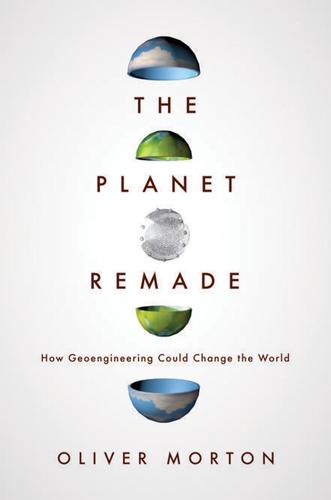
The Planet Remade: How Geoengineering Could Change the World
by
Oliver Morton
Published 26 Sep 2015
I do know that imagining that humans could double carbon-dioxide levels in just half a millennium was a dramatic claim at that time, even if today it is an underestimate. It could be done in a century. The Anthropocene That humans can, in lifetimes, make changes over which the Earth unaided would labour for millions of years is at the heart of the idea of the Anthropocene. Since Paul Crutzen brought the idea to prominence in 2000, the Anthropocene has been taken up as a framing device by a wide range of people interested in global change. Some natural scientists see it as a way of stressing the depth of human involvement in the earthsystem.
…
Some object to the idea as legitimizing the level of human interference in the earthsystem when the aim must be to reverse it. If talking about the Anthropocene shifts environmental debates towards the best strategies for managing human dominance over the earthsystem and away from a steadfast refusal to countenance such an idea, a fundamental back-to-nature strand in environmental thought would seem to be sundered. To the extent that there is any point in talking about the Anthropocene, in this analysis it is in the context of retreating from it and back into some more natural epoch as quickly as possible. And some see the Anthropocene as a category mistake; shoehorning the enormity of what humans are doing to the planet into the strict and objective confines imposed by the rules of geological nomenclature is, they say, a disservice both to the disciplinary niceties of geology and to the discourse surrounding human influences on nature.
…
His ideas also have a political dimension; Ruddiman did not conceive them that way, but that’s the Anthropocene for you – it makes ideas about how the earthsystem changes political more or less from the get-go. If you accept the idea that climate change brought about by the spread of agriculture constitutes an early Anthropocene, you dilute the shock of what is happening to the earthsystem today; the industrial changes of the climate become an extension of what was done unwittingly by farmers just by farming. The Anthropocene becomes an unwitting and more or less unavoidable consequence of there being people on the planet, and thus a rather friendlier concept.
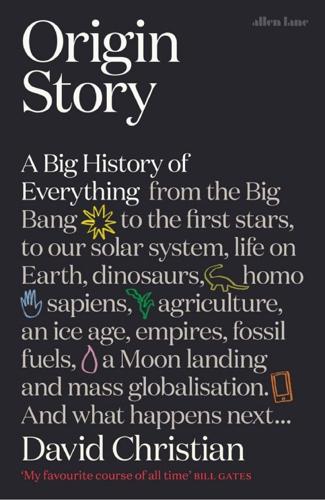
Origin Story: A Big History of Everything
by
David Christian
Published 21 May 2018
It occurred mostly in just the past one hundred years and primarily during the Great Acceleration of the second half of the twentieth century. This is the face of the Good Anthropocene (good from a human perspective). The Good Anthropocene has generated better lives for billions of ordinary humans, for the first time in human history. (If you doubt the improvement, think again about having surgery without modern anesthesia.) But there is also a Bad Anthropocene. The Bad Anthropocene consists of the many changes that threaten the achievements of the Good Anthropocene. First, the Bad Anthropocene has generated huge inequalities. Despite colossal increases in wealth, millions continue to live in dire poverty.
…
In the past, coal miners took canaries into mines to detect carbon monoxide. Today, rising carbon dioxide levels, declining biodiversity, and melting glaciers are telling us that something dangerous is happening, and we should take notice. The challenge we face as a species is pretty clear. Can we preserve the best of the Good Anthropocene and avoid the dangers of the Bad Anthropocene? Can we distribute the Anthropocene bonanza of energy and resources more equitably to avoid catastrophic conflicts? And can we, like the first living organisms, learn how to use gentler and smaller flows of resources to do so? Can we find global equivalents of the delicate proton pumps used to power all living cells today?
…
We are beginning to see red warning lights on the control panels of the global machine we humans have built. If, despite all the challenges, we humans are successful in our quest, what will a “mature Anthropocene” look like?6 It will not be a perfect world, of course. But it is important that we try to imagine such a world as we try to build it. There are so many imponderables here that we cannot produce any sort of architect’s sketch. Nevertheless, we can describe some of the main features of a world that preserves the best of the Good Anthropocene while avoiding the dangers of the Bad Anthropocene. Population growth will slow, eventually, to zero, and perhaps start falling. Rates of population growth are already falling in most parts of the world, and in some regions, the absolute number of people is beginning to fall.

The Human Age: The World Shaped by Us
by
Diane Ackerman
Published 9 Sep 2014
DIANE ACKERMAN THE HUMAN AGE THE WORLD SHAPED BY US W. W. NORTON & COMPANY NEW YORK LONDON CONTENTS I.WELCOME TO THE ANTHROPOCENE Apps for Apes Wild Heart, Anthropocene Mind Black Marble Handmade Landscapes A Dialect of Stone Monkeying with the Weather Gaia in a Temper Brainstorming from Equator to Ice Blue Revolution II.IN THE HOUSE OF STONE AND LIGHT Asphalt Jungles A Green Man in a Green Shade House Plants? How Passé Opportunity Warms III.IS NATURE “NATURAL” ANYMORE? Is Nature “Natural” Anymore? The Slow-Motion Invaders “They Had No Choice” Paddling in the Gene Pool For Love of a Snail IV.NATURE, PIXILATED An (Un)Natural Future of the Senses Weighing in the Nanoscale Nature, Pixilated The Interspecies Internet Your Passion Flower Is Sexting You When Robots Weep, Who Will Comfort Them?
…
The Slow-Motion Invaders “They Had No Choice” Paddling in the Gene Pool For Love of a Snail IV.NATURE, PIXILATED An (Un)Natural Future of the Senses Weighing in the Nanoscale Nature, Pixilated The Interspecies Internet Your Passion Flower Is Sexting You When Robots Weep, Who Will Comfort Them? Robots on a Date Printing a Rocking Horse on Mars V.OUR BODIES, OUR NATURE The (3D-Printed) Ear He Lends Me Cyborgs and Chimeras DNA’S Secret Doormen Meet My Maker, the Mad Molecule Conclusion: Wild Heart, Anthropocene Mind (Revisited) Acknowledgments Notes Further Reading Index PART I WELCOME TO THE ANTHROPOCENE APPS FOR APES On a blue-sky day at the Toronto zoo, flocks of children squired by teachers and parents mingle excitedly between exhibits. Some kids pull out cell phones and send texts or snap pictures with the easy camaraderie of wired life.
…
Once you start looking, it’s startling how many foods, shampoos, toothpaste, soaps, makeup, and other products use palm oil. Orangutan Outreach encourages people to boycott all palm oil–laced products, and dozens of multinational companies (McDonald’s, Pepsi, et al.) have agreed, for the sake of the rainforests. Wild Heart, Anthropocene Mind 11The term “Anthropocene” was coined by the aquatic ecologist Eugene Stoermer (Emeritus, University of Michigan), who used it at a conference, and Paul Crutzen, who currently works at the Department of Atmospheric Chemistry at the Max Planck Institute in Mainz, Germany; the Scripps Institution of Oceanography at the University of California, San Diego; and Seoul National University in South Korea. 12According to the BBC News website: http://www.bbc.co.uk/news/world-15391515. 12“Nature,” as E.

The Moon: A History for the Future
by
Oliver Morton
Published 1 May 2019
When some 50m people in the Americas died, new forests took root in what were once their fields, trees broke through the fallen roofs of their homes. The biosphere withdrew billions of tonnes of carbon from the atmosphere, investing it in trunk, root and leaf. How do the versions of the Anthropocene defined by these dates differ in what they say about the relationship between the two histories that have become one? An Anthropocene which starts in the 1950s is a purportedly value-neutral just-the-facts-ma’am Anthropocene: its beginning marks the point at which, looking back, the strains on the Earth system first became apparent. It doesn’t worry about why humans are having their impact, just notes that this is the well-marked point at which the scale of that impact started to increase very rapidly.
…
Shipping food to the Earth and getting nothing back—no replacement for the carbon, nitrogen, endless spacey cake and endless Earthly eating phosphorus and so on that the grain shipped down the gravity well contains—means that the Moon’s otherwise-closed ecology has a gaping hole in it, as frightening as an air-sucking meteorite puncture in a hab. The stuff of life is leaking away. “The Moon Is a Harsh Mistress” is thus an environmental novel. Indeed it is an Anthropocene one, as long as one remembers that the Moon’s branch of the Anthropocene is an inversion of the Earth’s, as well as an extension of it. The Earth’s Anthropocene is a breaking down of the environment’s prior encapsulation of the economy. On the Moon, it is the reverse. When a living environment arrived there, it did so in a curiously shaped aluminium box which marked the greatest single achievement of the Earth’s greatest economy—always already encapsulated.
…
CHAPTER IV The political and social context of the Apollo and early-post-Apollo years is dealt with thoughtfully in Maher (2015). For an introduction to the Anthropocene and debates over its timing, see Lewis and Maslin (2018), and for a consideration of its impact on the humanities, see Chakrabarty (2009). David Grinspoon puts forth his ideas about the Anthropocene and Tranquility Base in Grinspoon (2016); a broader take on the need to consider the Anthropocene beyond the Earth can be found in Olson and Messeri (2015). For the Chaotian and Hadean periodization of the very early solar system, see Goldblatt et al (2010).
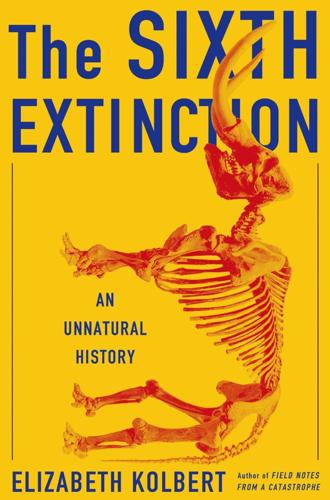
The Sixth Extinction: An Unnatural History
by
Elizabeth Kolbert
Published 11 Feb 2014
(One of Crutzen’s fellow Nobelists reportedly came home from his lab one night and told his wife, “The work is going well, but it looks like it might be the end of the world.”) Crutzen told me that the word “Anthropocene” came to him while he was sitting at a meeting. The meeting’s chairman kept referring to the Holocene, the “wholly recent” epoch, which began at the conclusion of the last ice age, 11,700 years ago, and which continues—at least officially—to this day. “’Let’s stop it,’” Crutzen recalled blurting out. “’We are no longer in the Holocene; we are in the Anthropocene.’ Well, it was quiet in the room for a while.” At the next coffee break, the Anthropocene was the main topic of conversation. Someone came up to Crutzen and suggested that he patent the term.
…
“Because of these anthropogenic emissions,” Crutzen wrote, the global climate is likely to “depart significantly from natural behavior for many millennia to come.” Crutzen published “Geology of Mankind” in 2002. Soon, the “Anthropocene” began migrating out into other scientific journals. “Global Analysis of River Systems: From Earth System Controls to Anthropocene Syndromes” was the title of a 2003 article in the journal Philosophical Transactions of the Royal Society B. “Soils and Sediments in the Anthropocene” ran the headline of a piece from 2004 in the Journal of Soils and Sediments. When Zalasiewicz came across the term, he was intrigued. He noticed that most of those using it were not trained stratigraphers, and he wondered how his colleagues felt about this.
…
(After much heated debate, the commission recently moved that epoch’s start date back from 1.8 to 2.6 million years ago.) Zalasiewicz had convinced the ICS to look into formally recognizing the Anthropocene, an effort that, logically enough, he himself was put in charge of. As head of the Anthropocene Working Group, Zalasiewicz is hoping to bring a proposal to a vote by the full body in 2016. If he’s successful and the Anthropocene is adopted as a new epoch, every geology textbook in the world immediately will become obsolete. CHAPTER VI THE SEA AROUND US Patella caerulea Castello Aragonese is a tiny island that rises straight out of the Tyrrhenian Sea, like a turret.

The Stack: On Software and Sovereignty
by
Benjamin H. Bratton
Published 19 Feb 2016
Manuel de la Pila housing block, Puerto Rico, 311–312 drones, hacking, 401n45 drowning nations, 100 Dürer, Albrecht, 53, 181 Durkheim, Emile, 266, 385n25 Dutch East India Company, 399n32 “Dymaxion File” (Fuller), 267 Dyson, Freeman, 106–107 Dyson sphere conjecture, 106–107 Eames, Charles and Ray, 52 Earth composability of, 84–86 in Earth layer, 76, 82–84 geoaesthetics, 83–87 geometrics, 90–91, 309 grids and networks, 37–38, 90–97, 149–153, 170, 180, 192, 229, 280, 294–296, 393n53 human transformation of, 354 loop topology of, 24 petawatts of radiant energy from sun, 106–107 planet-spanning architectural propositions, 178 remapping everything in, 191–192 second planetary computer overlaying, 300–301 as skin, 87–92 subdividing, 21–24, 193, 195, 309, 413n5 terraforming, 85–86, 181, 187, 404n11 two, parable of, 444n27 writing on (geo-graphy), 85–86, 149, 193, 249 Earth layer address geographies, 193–195 to come, 294–295, 300–307 computational transparency, 76–81, 101 defined, 370–371 design issues, 101–107 Earth in, 76, 82–84 emergencies, designing for/designing with, 101–104 energy monitored and provisioned, 87–92 function of, 107, 300 geodesign, 83–84, 288, 304 geopolitical architecture, 98, 300–302 governance, 98–104, 140 human-facing permeation, Apple's, 187–188 interfacial problematics of, 256 introduction, 69–70, 75–76 productive accidents of, 91, 93 sensing and sovereignty, 97–101 world-making/world-erasure projects, 91–92 Earth layer interactions Address layer, 211 City layer, 153 Cloud layer, 94, 110, 140–141 User layer, 154 Earth-order, 24 “Earthrise” photograph (Anders), 86, 150, 300, 442n11 Easterling, Keller, 182 e-citizenship, 446n42 Eco, Umberto, 125, 243 eco-computing, 258–263, 268, 354 ecoglobalism, 89, 259, 303 ecojurisdictions, 97–100 ecological crisis, contributors to Anthropocenic energy platforms, 106 anthropogenic climatic events, 102 electronics manufacturing, 82–83 planetary-scale computation, 82–83, 92–96, 106–107, 113, 140–141, 258–260, 303–304 ecological noise, 106 ecology Anthropocenic, 102, 106, 217, 458n15 of energy, 98–104 mobile, of interfaces, 237–238 popular ecology movement, 86 restoration of, 304–305, 442n14 ecology of the gut, 268 e-commerce, 131 economic inequity, 311–312, 439n66, 458n15 economic planning systems, cybernetic, 58–61, 328–329 economics. See also platform economics Anthropocenic, 58, 103 of borders, 173 capitalist, 56 City layer, 159–160 Cloud model, 137 electronics, mining and trading in, 82–83 zero-sum, 336 economy of additive manufacturing, 202 of cognitive capital, 110, 116 computational, 328 computer-controlled, 58–60 of contemporary warfare, 248 digital, 196 of energy, 92, 106–107 Facebook, 127 Google, 136–138, 159, 444n26 of identity, 270 of information, 199 of mobility, 280 of prostheticization, 273 of reversible partitions, 21 of scarcity, 208 and sovereignty and territory, 114, 316 ecopolitics, 100 ecosystems, 129, 178, 185, 336, 456n6 Ecumenopolis (Dioxiadis), 178 Eisenman, Peter, 410n50 Elden, Stewart, 335, 379n12 electricity, 93, 95, 141 electronics, mining and trading in, 82–83 electronic waste, 83 Elysium (Blomkamp), 311, 323, 444n27 emergency accommodating, 103–104 designing for/designing with, 101–104, 321, 325 ecojurisdictions in response to, 99–100 ecological, 105–106, 295, 305 ecopolitics emerging by, 100 exceptional, 103–104, 173, 321–322 permanent, 104 progress in response to, 321 sovereign decision and, 20, 32, 102–103 state of, 32–33, 99 emergent, the, 9 empty space, 30, 380n20 enclosure and escape, 22, 32–33, 149–150, 172–176, 303 “end of history,” 321 “End of Sykes-Picot, The” 430n65 energy alternative sources, 259 ecologies of, 98–104 economy, 92 efficiencies, 140–141 energy-information network, 93, 95 footprint, of planetary-scale computing, 82–83, 92–96, 106–107, 113, 140–141, 258–260, 303–304 grid, 92–96, 140, 152, 201, 294–295 needs, predicted, 113 political loyalty and availability, 141 polities, subdivided, 99–100 post-Anthropocene, 217 Eneropa, 99 Engelbart, Douglas, 343 Enlightenment, 251, 426n46 entertaining securitization, 156 entertainment identifier registry (EIDR), 207 entrance/exit, 149–150, 313, 315, 317, 371 envelope-interface borders, 172–173 envelopes airports, 156–157 architectural, 23, 165–167, 195, 303, 311–313, 323 cars as, 238 City layer, 12, 70, 148–149, 152, 154–155, 163–171, 173 as interface, 167 mixed, designing for, 168–172 paper, 46, 195 physical, 167 software, 167 urban, 168–172 urban platform, 180 User position in relation to, 252 environmental migrants/refugees, 100–101 Epicureanism, inverse, 358 equilibrium, cybernetic, 59, 158 error detection, 50 espionage, 398n21 Estates of The Oaks, 311 Estonia, 399n36, 446n42 Ethereum, 336 ethics, 258, 285, 362 European nomos of World Wars I and II, 25–26 European Space Agency, 181 European Union, 309 exception in Apple model, 130 automation of, 33 becomes the rule, 102–103, 111 emergency, 103–104, 173, 321–322 emergent order of, 110–111 inside and outside the law, 102 interface, 357 legitimate state of, 104 normalizing, 23, 32–33, 39, 103–104 reversibility of, 21, 32–33, 39, 145 sovereignty over, 20–21, 32, 105, 341 state of emergency as, 99, 105 territories of, 114 exclusion agency and, 173–175 augmented reality and, 236, 241–242 elective, 316–317 societal, 308–309, 311–312, 317 exclusive totalities, 245 exit.
…
In the figure of The Stack, we see not one totality but the production of multiple and incongruous totalities, some of which are “interfacial regimes,” some are superimposed landscapes of Addresses, and others are interwoven Cloud and state geometries. These geometries both draw and draw on the vertical platform of The Stack, and in doing so may also displace existing geographies with several alternatives at once. Perhaps these culminate in the apotheosis of Anthropocenic industrialism and perhaps they provide larval scripts for a post-Anthropocenic alternative, or both, or perhaps something much less decisive and dramatic. Our sights are not trained on how The Stack might hasten the messianic arrival of some seamless full-spectrum computational end of history, but how its gnashing and grating juxtapositions generate peculiar new spaces, normal enclaves, and how those exceptions are instructive as ways of deliberately reorganizing the world.
…
Is the reliance on the identification of ecological noise—a standing enemy of excess and waste to be disciplined and normalized—also to foreclose possibilities and to guarantee that Anthropocenic global society, as it exists now, can only be the antecedent enemy of another Stack-to-come? If we fashion the Earth layer of The Stack in these terms, we have set ourselves up as the enemy of the enemy of the enemy of the friend we hope to conjure up. The math is against us. Finally, as for the scale and program of the lines and frames we inscribe and the worlds we present by them, I would rather that design draw too big than draw too small. As we know, Anthropocenic energy platforms largely rely on sucking fossil fuels out of the ground and burning them in the sky, but planetary-scale computation cannot really grow if it powered by the oozy corpses of Mesozoic vegetation.
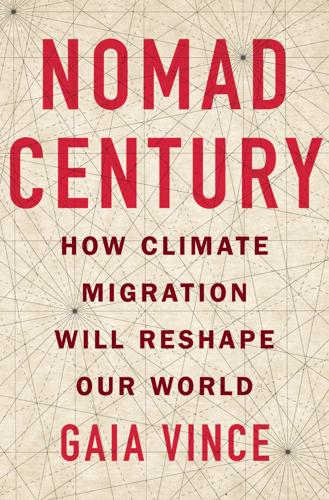
Nomad Century: How Climate Migration Will Reshape Our World
by
Gaia Vince
Published 22 Aug 2022
She is an honorary senior research fellow at the Anthropocene Institute at University College London and is the author of Transcendence and Adventures in the Anthropocene. You can sign up for email updates here. Thank you for buying this Flatiron ebook. To receive special offers, bonus content, and info on new releases and other great reads, sign up for our newsletters. Or visit us online at us.macmillan.com/newslettersignup For email updates on the author, click here. Contents Title Page Copyright Notice Dedication List of Figures Introduction 1. The Storm 2. The Four Horsemen of the Anthropocene 3. Leaving Home 4.
…
Sea levels are already rising faster than even the most pessimistic predictions.15 Our future world is one depleted of the biodiversity we’re dependent on, and where we’re facing a cocktail of negative shocks all the time, from fires to droughts. Within decades, we risk a turbulent, conflict-ridden world with great loss of life and perhaps the end of our civilizations. 2 The Four Horsemen of the Anthropocene Climate change is a threat multiplier, which exacerbates the other social, environmental and economic problems that populations face. Fire, heat, drought and flood will transform our world this century. These four horsemen of the Anthropocene will make much of our world unliveable for people. Here’s how. FIRE The first dawn of 2020 never arrived for my Auntie Helen on the south coast of New South Wales, Australia.
…
While the dramatic devastation of a hurricane erasing whole villages can make refugees of people overnight, the impacts of climate change on people’s lives are usually gradual – another poor harvest or another season of unbearable heat, which becomes the final straw that pushes people to seek better locations. Such people would be categorized as economic migrants, but they are also refugees from the Holocene world, the pre-Anthropocene landscapes that their ancestors’ cultures and societies learned how to make into a home. With those Holocene environments gone, we are all finding our feet in the Anthropocene, and no one has better claim than anyone else to the habitable twenty-first-century landscapes. 5 Wealth of Migrants Our recently invented national border controls, and our newly inherited attitudes towards national identity and migrants, are causing us all huge and unnecessary trouble.
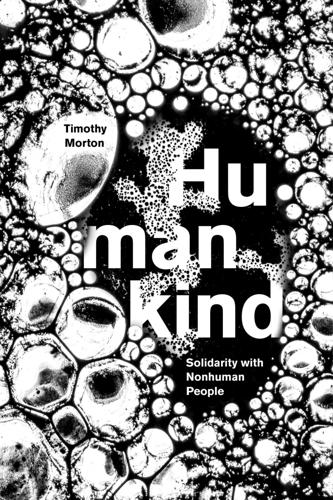
Humankind: Solidarity With Non-Human People
by
Timothy Morton
Published 14 Oct 2017
Humankind is not a negation of a human being, but rather an implosive whole that is susceptible to all kinds of phenomena. The Anthropocene is one of the first truly anti-anthropocentric concepts because via thinking the Anthropocene, we get to see the concept of “species” as it really is—species as a subscendent hyperobject, brittle and inconsistent. The Anthropocene is the moment at which humans come to recognize humankind, insofar as it subscends its parts (such as plastics and concretes in Earth’s strata). The Anthropocene is the moment at which species as such becomes thinkable in a non-metaphysical way, such that humankind cannot rigidly exclude nonhumans.
…
And solidarity is also used for the constitution of a group as such, the example given being the notorious notion of “the human race,” aka species, what is now called the “Anthropos” of the dreaded Anthropocene, a new geological era (officially dated to 1945) marked by human-made materials such as plastics, nucleotides and concretes in the upper layers of Earth’s crust.24 Existing thought protocols in the humanities make this geological era look like an embarrassing generalization, an Enlightenment horror that strips historical specificity, race, class and gender from the human. The concept of species as such, lurking behind the notion of the Anthropocene, seems violently antique, like a rusty portcullis. To add insult to injury, solidarity can mean “community,” and this term is also compromised by notions of full presence and volkisch sentiments.
…
But they produce only their own immediate needs or those of their young; they produce one-sidedly, while man produces universally; they produce only when immediate physical need compels them to do so, while man produces even when he is free from physical need and truly produces only in freedom from such need … It is therefore in his fashioning of the objective that man really proves himself to be a species-being … estranged labour therefore tears away from him his species-life, his true species-objectivity, and transforms his advantage over animals into the disadvantage that his inorganic body, nature, is taken from him.48 In the second passage, not a page later, only humans get to universalize. We end up with the idea that only humans have species-being. Notice, then, that species-being is ambiguously anthropocentric. It has one foot in anthropocentrism, but one foot not. Humankind is arguing that we can lift out the foot standing in anthropocentrism. The Anthropocene is the time at which the human becomes truly thinkable in a non-teleological, non-metaphysical sense. The waste products in Earth’s crust are also the human in this expanded, spectral sense, as if what the human becomes is a flickering ghost surrounded by a penumbra of flickering shadows that seem to hover around it like a distorted halo.
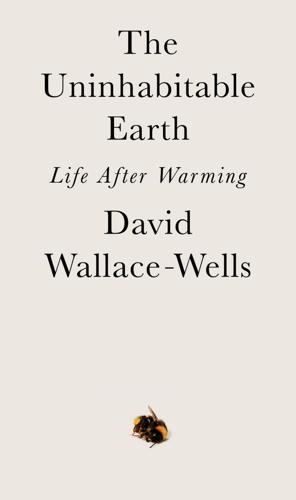
The Uninhabitable Earth: Life After Warming
by
David Wallace-Wells
Published 19 Feb 2019
* * * — When Bill McKibben declared “The End of Nature,” in 1989, he was posing a hyperbolic kind of epistemological riddle: What do you call it, whatever it is, when forces of wilderness and weather, of animal kingdoms and plant life, have been so transformed by human activity they are no longer truly “natural”? The answer came a few decades later with the term “the Anthropocene,” which was coined in the spirit of environmental alarm and suggested a much messier and more unstable state than “end.” Environmentalists, outdoorspeople, nature lovers, and romantics of various stripes—there are many who would mourn the end of nature. But there are literally billions who will shortly be terrified by the forces unleashed by the Anthropocene. In much of the world, they already are, in the form of lethal close-to-annual heat waves in the Middle East and South Asia, and in the ever-present threat of flood, like those that hit Kerala in 2018 and killed hundreds.
…
around ten times faster: Sarah Griffiths, “Global Warming Is Happening ‘Ten Times Faster than at Any Time in the Earth’s History,’ Climate Experts Claim,” The Daily Mail, August 2, 2013. See also Melissa Davey, “Humans Causing Climate to Change 170 Times Faster than Natural Forces,” The Guardian, February 12, 2017; this estimate for a rate of warming 170 times faster came from Owen Gaffney and Will Steffen, “The Anthropocene Equation,” The Anthropocene Review, February 10, 2017, https://doi.org/10.1177/2053019616688022. the average American emits: Dirk Notz and Julienne Stroeve, “Observed Arctic Sea-Ice Loss Directly Follows Anthropogenic CO2 Emission,” Science, November 3, 2016. See also Robinson Meyer, “The Average American Melts 645 Square Feet of Arctic Ice Every Year,” The Atlantic, November 3, 2016.
…
This is a note of contrarian optimism echoing Michael Shellenberger and Ted Nordhaus, in their Break Through: Why We Can’t Leave Saving the Planet to Environmentalists and Love Your Monsters: Postenvironmentalism and the Anthropocene; and the Canadian, Swedish, and South African academics behind the research collaboration “Bright Spots,” who, despite considerably more concern about the effects of global warming, nevertheless keep a running list of positive environmental developments they believe makes the case for what they call a “good Anthropocene.” “The Second Coming”: Among other things, Yeats gave Joan Didion the lines she built into her essay “Slouching Towards Bethlehem”: “Things fall apart; the centre cannot hold; / Mere anarchy is loosed upon the world.”
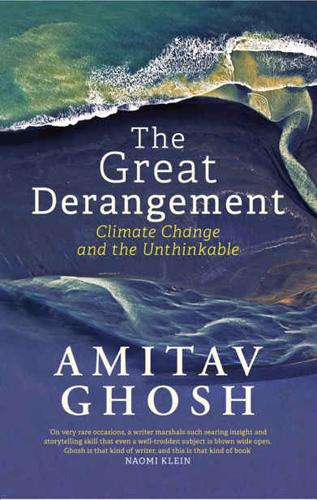
The Great Derangement: Climate Change and the Unthinkable
by
Amitav Ghosh
Published 16 Jan 2018
Richardson, ‘When the End of Human Civilization Is Your Day Job’, Esquire, 7 July 2015. 12 era of the Anthropocene: Dipesh Chakrabarty, ‘The Climate of History: Four Theses’, Critical Inquiry 35 (Winter 2009). 12 ‘processes of the earth’: The quote is from Naomi Oreskes, ‘The Scientific Consensus on Climate Change: How Do We Know We’re Not Wrong’, in Climate Change: What It Means for Us, Our Children and Our Grandchildren, ed. Joseph F.C. DiMento and Pamela Doughman (Cambridge, MA: MIT Press, 2007). For a discussion of the genealogy of the concept of the Anthropocene, see Paul J. Crutzen, ‘Geology of Mankind’, Nature 415 (January 2002): 23; and Will Steffen, Jacques Grinevald, Paul Crutzen and John McNeill, ‘The Anthropocene: Conceptual and Historical Perspectives’, Philosophical Transactions of the Royal Society 369 (2011): 842–67. 13 the wind in our hair: Stephanie LeMenager calls this ‘the road-pleasure complex’ in Living Oil: Petroleum Culture in the American Century (Oxford: Oxford University Press, 2014), 81. 14 Bangkok uninhabitable: Cf.
…
In thinking about the mismatch between my personal concerns and the content of my published work, I have come to be convinced that the discrepancy is not the result of personal predilections: it arises out of the peculiar forms of resistance that climate change presents to what is now regarded as serious fiction. 4 In his seminal essay ‘The Climate of History’, Dipesh Chakrabarty observes that historians will have to revise many of their fundamental assumptions and procedures in this era of human-induced climate change, in which ‘humans have become geological agents, changing the most basic physical processes of the earth’. I would go further and add that the Anthropocene presents a challenge not only to the arts and humanities, but also to our common-sense understandings and beyond that to contemporary culture in general. There can be no doubt, of course, that this challenge arises in part from the complexities of the technical language that serves as our primary window on climate change.
…
His review, when I read it, made a great impression on me: I found that in the process of writing about Munif’s book Updike had also articulated, elegantly and authoritatively, a conception of the novel that was indisputably an accurate summing-up of a great deal of contemporary fiction. Yet it was a conception with which I found myself completely at odds. The differences between Updike’s views and mine have an important bearing on some of the aspects of the Anthropocene that I have been addressing here, so it is best to let him speak for himself. Here is what he had to say about Cities of Salt: ‘It is unfortunate, given the epic potential of his topic, that Mr. Munif . . . appears to be . . . insufficiently Westernized to produce a narrative that feels much like what we call a novel.
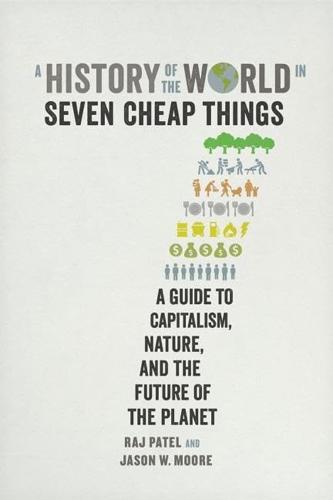
A History of the World in Seven Cheap Things: A Guide to Capitalism, Nature, and the Future of the Planet
by
Raj Patel
and
Jason W. Moore
Published 16 Oct 2017
These ideas, we suggest, offer a way to think beyond a world of cheap things to imagine how we might live without the real abstractions of Nature and Society and the strategies that capitalism’s ecology has spawned. If this sounds revolutionary, so much the better. Notes INTRODUCTION Epigraph. Nietzsche 2001, §125, 120. 1. Roberts 1989; Hansen and Sato 2012. 2. Carrington 2016; Working Group on the ‘Anthropocene’ 2016. Here we refer to the Anthropocene as a field of geological inquiry: the Geological Anthropocene. It is distinct from its widely circulated sibling, the Popular Anthropocene, which encompasses a broad discussion of the origins of ecological crisis. See Moore 2016, 2017a, 2017b. 3. Barnosky et al. 2012, 52. 4. See, e.g., the excellent N. Klein 2014. 5. Barnosky et al. 2004. 6.
…
Woods, Jeremy, Adrian Williams, John K. Hughes, Mairi Black, and Richard Murphy. 2010. “Energy and the Food System.” Philosophical Transactions of the Royal Society B: Biological Sciences 365, no. 1554: 2991–3006. Working Group on the “Anthropocene.” 2016. “What Is the ‘Anthropocene’?—Current Definition and Status.” Last modified January 4. http://quaternary.stratigraphy.org/workinggroups/anthropocene/. World Economic Forum. 2012. Energy for Economic Growth: Energy Vision Update 2012. Geneva: World Economic Forum. http://reports.weforum.org/energy-for-economic-growth-energy-vision-update-2012/. ———. 2016. The New Plastics Economy: Rethinking the Future of Plastics.
…
Accounting, Business and Financial History 16, no. 2: 219–43. Carney, Judith Ann. 2001. Black Rice: The African Origins of Rice Cultivation in the Americas. Cambridge, MA: Harvard University Press. Carrington, Damian. 2016. “The Anthropocene Epoch: Scientists Declare Dawn of Human-Influenced Age.” Guardian, August 29. www.theguardian.com/environment/2016/aug/29/declare-anthropocene-epoch-experts-urge-geological-congress-human-impact-earth. Catz, Rebecca. 1993. Christopher Columbus and the Portuguese, 1476–1498. Westport, CT: Greenwood. Cavanagh, Edward. 2013. “Kingdom or Colony? English or British? Early Modern Ireland and the Colonialism Question.”
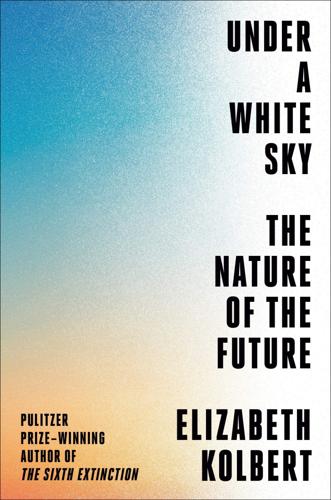
Under a White Sky: The Nature of the Future
by
Elizabeth Kolbert
Published 15 Mar 2021
This system has allowed the Chinese to harvest immense quantities of carp—almost fifty billion pounds in 2015 alone. In the sort of irony the Anthropocene teems with, the number of free-swimming carp in China has crashed even as pond-raised populations have soared. Thanks to projects like the Three Gorges Dam, on the Yangtze, river fish are having trouble spawning. The carp are thus at once instruments of human control and victims of it. The four famous fish ended up in the Mississippi, at least in part, owing to Silent Spring—another Anthropocene irony. In the book, whose working title was The Control of Nature, Rachel Carson denounced the very idea.
…
The quantities involved were comparatively small, but, according to advocates of this theory, known as the “early Anthropocene hypothesis,” the effect was fortuitous. Owing to natural cycles, CO2 levels should have been falling during this period. Human intervention kept them more or less constant. “The start of the switchover from control of climate by nature to control by humans occurred several thousand years ago,” William Ruddiman, a professor emeritus at the University of Virginia and the most prominent proponent of an “early Anthropocene,” has written. According to a second, more widely held view, the switchover only really started in the late-eighteenth century, after the Scottish engineer James Watt designed a new kind of steam engine.
…
“In fact,” as a recent paper in the Proceedings of the National Academy of Sciences observed, “humans and livestock outweigh all vertebrates combined, with the exception of fish.” We have become the major driver of extinction and also, probably, of speciation. So pervasive is man’s impact, it is said that we live in a new geological epoch—the Anthropocene. In the age of man, there is nowhere to go, and this includes the deepest trenches of the oceans and the middle of the Antarctic ice sheet, that does not already bear our Friday-like footprints. An obvious lesson to draw from this turn of events is: be careful what you wish for. Atmospheric warming, ocean warming, ocean acidification, sea-level rise, deglaciation, desertification, eutrophication—these are just some of the by-products of our species’s success.

Numbers Don't Lie: 71 Stories to Help Us Understand the Modern World
by
Vaclav Smil
Published 4 May 2021
Vulcan Inc., 2016. http://www.greatelephantcensus.com/final-report. Pinnock, D., and C. Bell. The Last Elephants. London: Penguin Random House, 2019. Why calls for the Anthropocene era may be premature Davies, J. The Birth of the Anthropocene. Berkeley, CA: University of California Press, 2016. Subcommission on Quaternary Stratigraphy, “Working Group on the ‘Anthropocene.’” May 21, 2019. http://quaternary.stratigraphy.org/working-groups/anthropocene/. Concrete facts Courland, R. Concrete Planet: The Strange and Fascinating Story of the World’s Most Common Man-Made Material. Amherst, NY: Prometheus Books, 2011.
…
And if the slaughter were to stop, some African regions might face a new problem, evident for years in parts of South Africa: a surfeit of elephants. It is no easy matter to manage expanding numbers of large and potentially destructive animals, especially those living in proximity to farmers and herders. Why calls for the Anthropocene era may be premature Many historians and scientists argue that we are living in the Anthropocene, a new epoch characterized by human control of the biosphere. In May 2019, the Anthropocene Working Group formally voted to recognize this new geologic epoch, and its proposal will be considered by the International Commission on Stratigraphy that governs epoch-naming. My reaction, echoing the Romans: Festina lente.
…
Energy Intensity of Passenger Travel (2019) The inexcusable magnitude of global food waste Food Waste (2016) The slow addio to the Mediterranean diet Addio to the Mediterranean Diet (2016) Bluefin tuna: On the way to extinction Bluefin Tuna: Fast, but Maybe Not Fast Enough (2017) Why chicken rules Why Chicken Rules (2020) (Not) drinking wine (Not) Drinking Wine (2020) Animals vs. artifacts—which are more diverse? Animals vs. Artifacts: Which are more diverse? (2019) Planet of the cows Planet of the Cows (2017) The deaths of elephants The Deaths of Elephants (2015) Why calls for the Anthropocene era may be premature It’s Too Soon to Call This the Anthropocene Era (2015) Concrete facts Concrete Facts (2020) What’s worse for the environment—your car or your phone? Embodied Energy: Mobile Devices and Cars (2016) Who has better insulation? Bricks and Batts (2019) Triple-glazed windows: A see-through energy solution The Visionary Energy Solution: Triple Windows (2015) Improving the efficiency of household heating Heating Houses: Running Out of Combustion Efficiency (2016) Running into carbon The Carbon Century (2019) A B C D E F G H I J K L M N O P Q R S T U V W X Y Z Index The page numbers in this index refer to the printed version of this book.
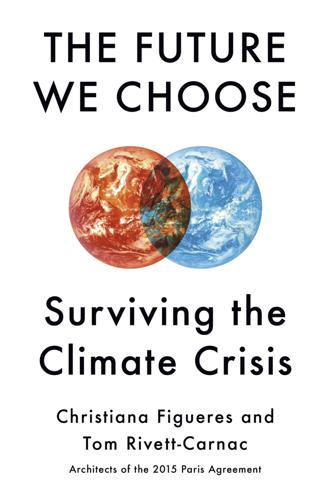
The Future We Choose: Surviving the Climate Crisis
by
Christiana Figueres
and
Tom Rivett-Carnac
Published 25 Feb 2020
National Aeronautics and Space Administration, “As Seas Rise, NASA Zeros In: How Much? How Fast?” August 3, 2017, https://www.nasa.gov/goddard/risingseas. 13. Joseph Stromberg, “What Is the Anthropocene and Are We in It?” Smithsonian, January 2013, https://www.smithsonianmag.com/science-nature/what-is-the-anthropocene-and-are-we-in-it-164801414/. 14. An exploration can be found in Darrell Moellendorf, “Progress, Destruction, and the Anthropocene,” Social Philosophy and Policy 34, no. 2 (2017): 66–88. See also the documentary film Anthropocene: The Human Epoch, 2018, https://theanthropocene.org/film/. 15. More than 3 degrees Celsius warmer than the preindustrial average global temperature. 16.
…
Some suggest we are already living through the sixth mass extinction.7 According to the latest research, 12 percent of all surviving species are currently threatened, and climate breakdown will significantly amplify that threat.8 Oceans have absorbed more than 90 percent of the extra heat we have produced over the last fifty years.9 As a result, half the world’s coral reefs are already dead,10 and the Arctic summer sea ice, whose reflective capacity helps to regulate temperatures all over the world, is shrinking rapidly.11 The melt from land glaciers has already caused sea levels to rise more than twenty centimeters, leading to major salt intrusion in many aquifers, worsening storm surges and existential threats to low-lying islands.12 In short, in just the last fifty years we have catapulted humanity and the planet out of the previous benevolent Holocene epoch and into the Anthropocene, a new geological period where biogeochemical conditions are dominated not by natural processes but by the palpable impact of human activity. Humans are for the first time ever the prime driver of large-scale climate change on the planet.13 All studies you may read about the Anthropocene epoch point to the unprecedented levels of destruction that we have caused in just five decades.14 The underlying assumption in those analyses is that we have irretrievably cast our die and that increasing destruction will be the leitmotif of the entire geological era.
…
Sir David Attenborough, one of the most renowned naturalists of our time, has warned us that “the Garden of Eden is no more.” We agree. That is why we now have to create a Garden of Intention—a deliberately regenerative Anthropocene. Instead of strip-mined mountains, destroyed forests, and depleted oceans, imagine millions of rewilding projects covering over a billion hectares of forests, regenerating wetlands and grasslands, and restoring coral farms in all tropical oceans. We will not have a regenerative Anthropocene by default, but we can create it by design. With directional intent, we can shift our aspirations from our current extractive growth to a life-sustaining society of regenerative values, principles, and practices.
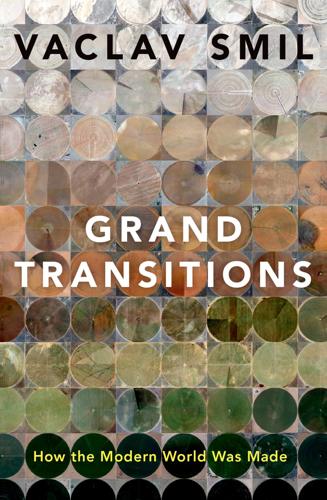
Grand Transitions: How the Modern World Was Made
by
Vaclav Smil
Published 2 Mar 2021
Jeanne Calment: The secret of longevity. https://www.researchgate.net/publication/329773795_Jeanne_Calment_the_secret_of_longevity Zalasiewicz, J. et al. 2016. The geological cycle of plastics as a stratigraphic indicator of the Anthropocene. Anthropocene 13:4–17. Zalasiewicz, J. et al. 2017. The Working Group on the Anthropocene: Summary of evidence and interim recommendations. Anthropocene 19:55–60. Zarfl, C. et al. 2011. Microplastics in oceans. Marine Pollution Bulletin 62(8):1589–1591. Zarfl, C. et al. 2014. A global boom in hydropower dam construction. Aquatic Sciences. doi 10.1007/s00027-014-0377- Zhang, B. 2015.
…
This is an apposite place to note that some critics would dismiss these prefatory remarks concerning environmental changes as being fundamentally insufficient because we now live in the Anthropocene, a new geological era supposedly characterized by the dominant role of humans: The Anthropocene concerns human impacts on the Earth System, not on the environment, and one cannot understand the emergence of the concept of the Anthropocene without an understanding of the radically new conception of the Earth System that emerged with Earth System science in the 1980s and 1990s. . . . The Earth System is not “the landscape,” it is not “ecosystems,” and it is not “the environment” (Hamilton 2015, 103).
…
The progressive increase of food waste in America and its environmental impact. http://www.plosone.org/article/metrics/info:doi/10.1371/journal.pone.0007940 Hallmann, C.A. et al. 2017. More than 75 percent decline over 27 years in total flying insect biomass in protected areas. PLoSONE 12(10): e0185809. https://doi.org/10.1371/journal.pone.0185809 Hamilton, C. 2015. Getting the Anthropocene so wrong. The Anthropocene Review 2:102–107. Hanemann, T. and M. Huotari. 2017. Record Flows and Growing Imbalances: Chinese Investment in Europe in 2016. Berlin: Mercator Institute of China Studies. Hanley, S.B. 1974. Fertility, mortality, and life expectancy in pre-modern Japan. Population Studies 28:127–142.

This Will Make You Smarter: 150 New Scientific Concepts to Improve Your Thinking
by
John Brockman
Published 14 Feb 2012
While such “inconvenient truths” about the carbon cycle have been the poster child for our species’ slow-motion suicide, that’s just part of a much larger picture, with all the eight global life-support systems under attack by our daily habits. Anthropocene thinking tells us the problem is not necessarily inherent in the systems like commerce and energy that degrade nature; one hopes that these can be modified to become self-sustaining, with innovative advances and entrepreneurial energy. The real root of the Anthropocene dilemma lies in our neural architecture. We approach the Anthropocene threat with brains shaped by evolution to survive the previous geological epoch, the Holocene, when dangers were signaled by growls and rustles in the bushes, and it served one well to reflexively abhor spiders and snakes.
…
Could any of the computer, behavioral, or brain sciences come up with an information prosthetic that might reverse our course? Paul Crutzen, the Dutch atmospheric chemist who received a Nobel for his work on ozone depletion, coined the term “Anthropocene” ten years ago. As a meme, “Anthropocene” has as yet little traction in scientific circles beyond geology and environmental science, let alone the wider culture: A Google check on “anthropocene,” as of this writing, shows 78,700 references (mainly in geoscience), while, by contrast, “placebo,” a once esoteric medical term now well established as a meme, has more than 18 million (and even the freshly coined “vuvuzela” has 3,650,000).
…
William Calvin Find That Frame What has been cropped out of the frame can lead the unwary to an incorrect inference. Jay Rosen Wicked Problems In the United States, rising health care costs are a classic case of a wicked problem. No “right” way to view it. Daniel Goleman Anthropocene Thinking Beginning with cultivation and accelerating with the Industrial Revolution, our planet left the Holocene epoch and entered . . . the Anthropocene, in which human systems erode the natural systems that support life. Alun Anderson Homo dilatus Cancun follows Copenhagen follows Kyoto, but the more we dither and no extraordinary disaster follows, the more dithering seems just fine.
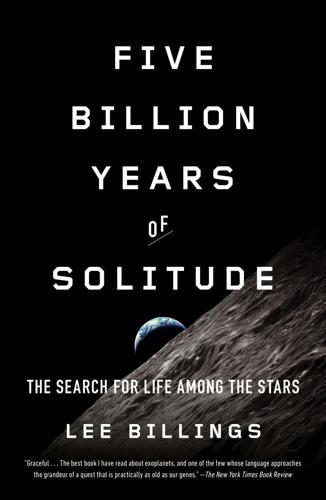
Five Billion Years of Solitude: The Search for Life Among the Stars
by
Lee Billings
Published 2 Oct 2013
We cannot say, however, whether whatever may later find the Anthropocene’s new shales will, as we did, extract and burn the accompanying deposits of oil and gas to build a global technological civilization. Fossils abutting the Holocene-Anthropocene transition will record a planetary mass extinction event, the sixth in Earth’s history, one in which species-rich ecosystems developed over tens of millions of years suddenly, irretrievably vanished and were replaced with agrarian homogeneity. Upper Holocene fossil beds will reward any future paleontologists with finds such as lithified coral reefs and carbonized amphibians; lower Anthropocene beds will more likely offer corn cobs, cow bones, petrified oil palms, and perhaps even some remains of their human masters, to whose needs they were bent and bred.
…
Crutzen felt compelled to coauthor an influential paper with the aquatic ecologist Eugene Stoermer arguing that our newfound planetary powers placed us in an entirely new geological period. In this “recent age of man,” the “Anthropocene,” human dominance altered the skies and seas, and even changed the very rocks that through the eons would endure as mute testament to our era. For many millions of years to come, the Holocene-Anthropocene transition will be clearly visible to the naked eye wherever a proper rock face is exposed. In marine basins where white carbonate sediment once settled to form limestone and chalk, CO2-saturated ocean water will have become more acidic, depositing instead dark carbonate-depleted clays and muds.
…
Gas shale seems, in fact, to be so abundant that it could almost unilaterally transform the fortunes of many developing countries, bringing economic prosperity and soaring levels of consumption and greenhouse emissions. In developed nations already hooked on ancient carbon, the shales could be a lifeline, found and seized just before the Anthropocene’s fossil-fuel boom would otherwise reach its end. Arthur looked down at his desk, strewn with unsteady piles of paper, charts of geologic sections and maps of stratigraphic thickness—the detritus of a scientist working to unwrap rockbound gifts from the Earth. He briefly closed his eyes and raised his fingers to rub his forehead, as if to stave off the full-steam arrival of a freight-train headache.
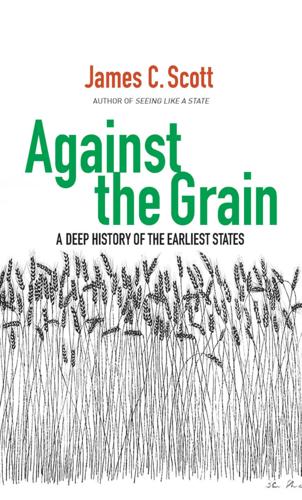
Against the Grain: A Deep History of the Earliest States
by
James C. Scott
Published 21 Aug 2017
While the thick Anthropocene is judged by some to have begun with worldwide deposit of radioactivity following the dropping of the first atomic bomb, there is what I have termed a “thin” Anthropocene that dates from the use of fire by Homo erectus roughly half a million years ago and extends up through clearances for agriculture and grazing and the resulting deforestation, and siltation. The impact and tempo of this early Anthropocene grows as the world’s population swells to roughly twenty-five million in 2,000 BCE. There is no particular reason to insist on the label “Anthropocene”—a term both in vogue and in much dispute as I write—but there are many reasons to insist on the global environmental impact of the domestication of fire, plants, and grazing animals.
…
Just how massive that impact has become is captured in the lively debate swirling around the term “Anthropocene,” coined to name a new geological epoch during which the activities of humans became decisive in affecting the world’s ecosystems and atmosphere.1 While there is no doubt about the decisive contemporary impact of human activity on the ecosphere, the question of when it became decisive is in dispute. Some propose dating it from the first nuclear tests, which deposited a permanent and detectable layer of radioactivity worldwide. Others propose starting the Anthropocene clock with the Industrial Revolution and the massive use of fossil fuels.
…
A case could also be made for starting the clock when industrial society acquired the tools—for example, dynamite, bulldozers, reinforced concrete (especially for dams)—to radically alter the landscape. Of these three candidates, the Industrial Revolution is a mere two centuries old and the other two are still virtually within living memory. Measured by the roughly 200,000-year span of our species, then, the Anthropocene began only a few minutes ago. I propose an alternative point of departure that is far deeper historically. Accepting the premise of an Anthropocene as a qualitative and quantitative leap in our environmental impact, I suggest that we begin with the use of fire, the first great hominid tool for landscaping—or, rather, niche construction. Evidence for the use of fire is dated at least 400,000 years ago and perhaps much earlier still, long predating the appearance of Homo sapiens.2 Permanent settlement, agriculture, and pastoralism, appearing about 12,000 years ago, mark a further leap in our transformation of the landscape.

The God Species: Saving the Planet in the Age of Humans
by
Mark Lynas
Published 3 Oct 2011
Wherever you look, this truth is there to behold: Pristine nature—Creation—has disappeared forever. There is a name for this new geological era. The Holocene—the 10,000-year, climatically equable post–ice age era during which human civilization evolved and flourished—has slipped into history, to make way for the Anthropocene. For the first time since life began, a single animal is utterly dominant: the ape species Homo sapiens. Evolution has equipped us with huge brains, stunning adaptability, and brilliantly successful technical prowess. In less than half a million years we have gone from prodding anthills with sticks to constructing a worldwide digital communications network.
…
My thesis is the reverse: playing God (in the sense of being intelligent designers) at a planetary level is essential if creation is not to be irreparably damaged or even destroyed by humans unwittingly deploying our newfound powers in disastrous ways. At this late stage, false humility is a more urgent danger than hubris. The truth of the Anthropocene is that the Earth is far out of balance, and we must help it regain the stability it needs to function as a self-regulating, highly dynamic, and complex system. It cannot do so alone. This means jettisoning some fairly sacred cows. Nuclear power is, as many Greens are belatedly realizing, environmentally almost completely benign.
…
Being against something can have just as big an opportunity cost as being for it. Certainly deciding on something as epochal as intentional climatic geoengineering would involve us in some truly awesome collective decisions, which we have only just begun to evolve the international governance structures to manage. But if we want the Anthropocene to resemble the Holocene rather than the Eocene (roughly 55–35 million years ago, which was several degrees hotter and had neither ice caps nor humans) we will need to act fast. On climate change, meeting the proposed planetary boundary means being carbon-neutral worldwide by mid-century, and carbon-negative thereafter.
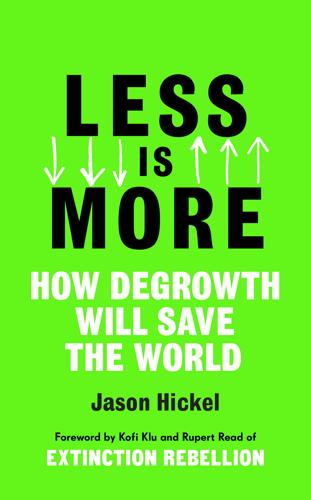
Less Is More: How Degrowth Will Save the World
by
Jason Hickel
Published 12 Aug 2020
It was only with the rise of capitalism over the past few hundred years, and the breathtaking acceleration of industrialisation from the 1950s, that on a planetary scale things began to tip out of balance. Once we understand this, it changes how we think about the problem. We call this human epoch the Anthropocene, but in fact this crisis has nothing to do with humans as such. It has to do with the dominance of a particular economic system: one that is recent in origin, which developed in particular places at a particular time in history, and which has not been adopted to the same extent by all societies. As the sociologist Jason Moore has pointed out, this isn’t the Anthropocene – it’s the Capitalocene.1 This can be difficult to wrap our minds around at first. We tend to take capitalism so much for granted that we just assume it has more or less always been around, at least in nascent form.
…
The language I’ve been using here – the language of ‘we’ – isn’t quite accurate. Even when we accept that capitalism is driving ecological breakdown, we have a tendency to describe it in collective terms, as if all humans are equally responsible. The ideology of the Anthropocene has a way of worming its way back into our discourse. But this assumption blinds us to what’s really going on. The word ‘Anthropocene’ is wrong not just because previous economic systems did not pose a threat to global ecology in the way that capitalism does today. It’s also that even today not all people are equally responsible. Once we grasp the relationship between GDP growth and ecological impact, it’s easy enough to guess that countries with higher GDP per capita will have higher ecological impact, and vice versa.
…
Jason Hickel * * * LESS IS MORE How Degrowth Will Save the World Table of Contents PREFACEBy Kofi Mawuli Klu and Rupert Read of XR INTRODUCTIONWelcome to the Anthropocene Part OneMore is Less ONECapitalism – A Creation Story TWORise of the Juggernaut THREEWill Technology Save Us? Part TwoLess is More FOURSecrets of the Good Life FIVEPathways to a Post-Capitalist World SIXEverything is Connected Acknowledgements Endnotes About the Author Jason Hickel is an economic anthropologist, Fulbright Scholar and Fellow of the Royal Society of Arts. He is originally from Eswatini (Swaziland) and spent a number of years with migrant workers in South Africa, writing about exploitation and political resistance in the wake of apartheid.
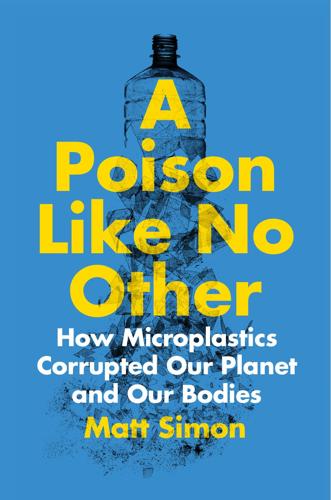
A Poison Like No Other: How Microplastics Corrupted Our Planet and Our Bodies
by
Matt Simon
Published 24 Jun 2022
Lewis, Simon L., and Mark A. Maslin. 2018. The Human Planet: How We Created the Anthropocene. New Haven, CT: Yale University Press. Gowdy, John, and Lisi Krall. 2013. “The Ultrasocial Origin of the Anthropocene.” Ecological Economics 95:137–47. https://doi.org/10.1016 /j.ecolecon.2013.08.006. Zalasiewicz, Jan, Colin N. Waters, Juliana A. Ivar do Sul, Patricia L. Corcoran, Anthony D. Barnosky, Alejandro Cearreta, Matt Edgeworth, et al. 2016. “The Geological Cycle of Plastics and Their Use as a Stratigraphic Indicator of the Anthropocene.” Anthropocene 13:4–17. https://doi.org/10.1016/j.ancene.2016.01.002. Wright, Ronald. 2004.
…
Frontiers in Marine Science 7. https://doi .org/10.3389/fmars.2020.576170. Zalasiewicz, Jan, Colin N. Waters, Juliana A. Ivar do Sul, Patricia L. Corcoran, Anthony D. Barnosky, Alejandro Cearreta, Matt Edgeworth, et al. 2016. “The Geological Cycle of Plastics and Their Use as a Stratigraphic Indicator of the Anthropocene.” Anthropocene 13:4–17. https://doi.org/10.1016/j.ancene.2016.01.002. Ross, Peter, Stephen Chastain, Ekaterina Vassilenko, Anahita Etemadifar, Sarah Zimmermann, Sarah-Ann Quesnel, Jane Eert, et al. 2021. “Pervasive Distribution of Polyester Fibres in the Arctic Ocean Is Driven by Atlantic Inputs.” Nature Communications 12:106. https://doi .org/10.1038/s41467-020-20347-1.
…
Nowhere is untouched, and the crisis will only deepen as microplastics flow unabated into every corner of Earth and, by their very design, persist. “Are we going to go the way of climate change, and not listen to the scientists until it’s too late?” Enck asks. “On the plastic pollution issue, I think we still have time.” Geologists have been arguing about this notion of the Anthropocene, a new age in Earth history characterized by humanity’s transformation of the planet.25 The controversy isn’t about whether the age exists, but what signal in that geological record should mark its inception. You could make the case that it was the invention of agriculture, when we gave up the freedom of the hunter-gatherer lifestyle for the prison of the farm: body-breaking labor to produce grains that made us sicker yet created food surpluses that fed a booming population26—such a big population, in fact, that we had to invent plasticulture to sustain it.
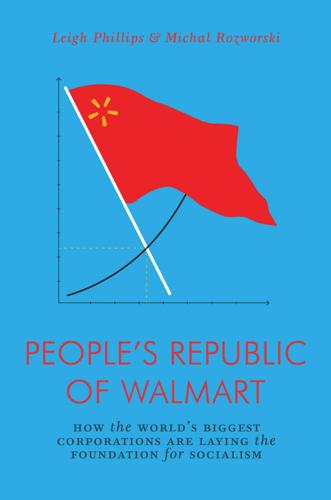
The People's Republic of Walmart: How the World's Biggest Corporations Are Laying the Foundation for Socialism
by
Leigh Phillips
and
Michal Rozworski
Published 5 Mar 2019
One of capitalism’s great contradictions is that it increases the real connections between people at the same time as it encourages us to see each other as monadic individuals. All this demonstrates both the horror and marvel of the Anthropocene. Humanity so fully commands the resources that surround us that we have transformed the planet in mere decades, on a scale that leviathan biogeophysical processes took millions of years to accomplish. But such awesome capability is being wielded blindly, without intent, in the service of profit, rather than human need. The Socialist Anthropocene Climate researchers sometimes talk about a “good Anthropocene” and a “bad Anthropocene.” The latter describes the intensification, and perhaps acceleration, of humanity’s unintended disruption of the ecosystems on which we depend.
…
Planning will have to account for the ecosystem services implicitly included in prices—as well as those that the market ignores. Therefore, any democratic planning of the human economy is at the same time a democratic planning of the earth system. Global democratic planning is not merely necessary for the good Anthropocene; it is the good Anthropocene. 11 CONCLUSION: PLANNING WORKS Planning exists all around us, and it clearly works; otherwise capitalists would not make such comprehensive use of it. That’s the simple message of this book and one that strikes at the heart of the dogma that “there is no alternative.” Today, this Thatcherite slogan is already wilting under the pressure of its own success.
…
Other titles in this series available from Verso Books: Utopia or Bust by Benjamin Kunkel Playing the Whore by Melissa Gira Grant Strike for America by Micah Uetricht The New Prophets of Capital by Nicole Aschoff Four Futures by Peter Frase Class War by Megan Erickson Building the Commune by George Ciccariello-Maher Capital City by Samuel Stein The People’s Republic of Walmart How the World’s Biggest Corporations Are Laying the Foundation for Socialism LEIGH PHILLIPS AND MICHAL ROZWORSKI First published by Verso 2019 © Leigh Phillips and Michal Rozworski 2019 All rights reserved The moral rights of the authors have been asserted 1 3 5 7 9 10 8 6 4 2 Verso UK: 6 Meard Street, London W1F 0EG US: 20 Jay Street, Suite 1010, Brooklyn, NY 11201 versobooks.com Verso is the imprint of New Left Books ISBN-13: 978-1-78663-516-7 ISBN-13: 978-1-78663-517-4 (UK EBK) ISBN-13: 978-1-78663-518-1 (US EBK) British Library Cataloguing in Publication Data A catalogue record for this book is available from the British Library Library of Congress Cataloging-in-Publication Data A catalog record for this book is available from the Library of Congress Typeset in Monotype Fournier Printed in the US by Maple Press CONTENTS Acknowledgements 1.Introduction 2.Could Walmart Be a Secret Socialist Plot? 3.Islands of Tyranny 4.Mapping the Amazon 5.Index Funds as Sleeper Agents of Planning 6.Nationalization Is Not Enough 7.Did They Even Plan the Soviet Union? 8.Hardly Automated Space Communism 9.Allende’s Socialist Internet 10.Planning the Good Anthropocene 11.Conclusion: Planning Works ACKNOWLEDGEMENTS The idea for this book was born of a beer or three at a scruffy Gastown pub early on in our friendship. Sharing our frustrations about the absence of democratic planning from political debate, we quickly realized that we were both thinking of writing the very same book.
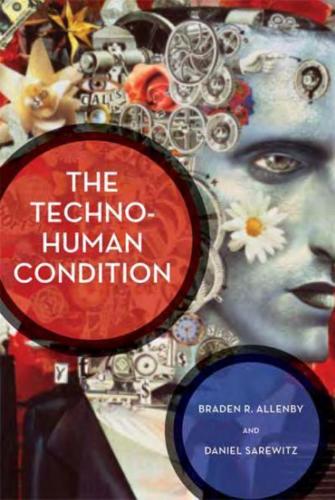
The Techno-Human Condition
by
Braden R. Allenby
and
Daniel R. Sarewitz
Published 15 Feb 2011
What it does mean is that human impact, intentional or not, is now affecting global systems, be they natural, built, social, or cultural, at all scales, and thus that the world as we must now live in it is increasingly affected by the choices, activities, and general milling around of a single species: ours. The term "Anthropocene" makes the same point. (See "Welcome to the Anthropocene," Nature 424 (2003): 709.) 12. Heidegger 1977, pp. 49 and 136. 13. As Karl Marx wrote in his 1852 article "The Eighteenth Brumaire of Louis Napoleon," "Men make their own history, but they do not make it as they please; they do not make it under self-selected circumstances, but under circumstances existing already, given and transmitted from the past."
…
Even as technological, social, economic, organizational, and (yes) cognitive changes coevolve around us, we fall back into classic European Enlightenment terms: liberty, equality, progress, natural order, human "dignity," the Christian Great Chain of Being (and thus the blasphemy of engineering ourselves), and, perhaps above all, the individual as the meaningful unit of cognition, action, and meaning. 10 Transhumanism is at best a local phenomenon in a far more pervasive reality. All around us is the evidence of our first terraforming adventure-and it is not Mars, but Earth. Indeed, many scientists are beginning to call this era the Anthropocene (meaning, roughly, the Age of Humans). The background to much discussion of transhumanism is a world in which human activity increasingly affects global systems, including the climate and the hydrological, carbon, and nitrogen cycles of the anthropogenic Earth. l l And yet we know it not. We are strangers in our own strange land, homeless because we have been turfed out by our very successes.
…
Earth's spectrum, however, is not just a matter of reflections from clouds, emitted infrared radiation, and the like. It also includes television and radio broadcasts and leakage from all sorts of technologies. Remember those pictures of Earth from space at night, and the electric lights spread over North America, Europe, and Asia. In the Anthropocene, perhaps the most fundamental physical manifestation of our planet in the universe, its , radiation spectrum, carries our signature. Or consider a more topical example. Virtually everyone is aware of global climate change, which vies with terrorism for billing as the top existential catastrophe.
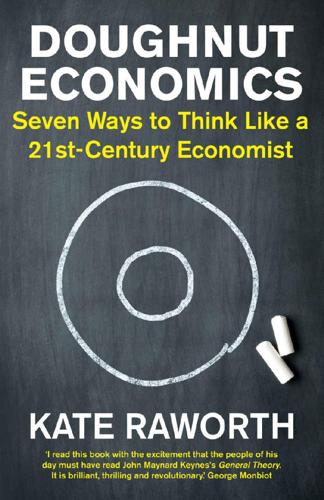
Doughnut Economics: Seven Ways to Think Like a 21st-Century Economist
by
Kate Raworth
Published 22 Mar 2017
Cambridge: Cambridge University Press. Stedman Jones, D. (2012) Masters of the Universe: Hayek, Friedman and the Birth of Neoliberal Politics. Oxford: Princeton University Press. Steffen, W. et al. (2011) ‘The Anthropocene: from global change to planetary stewardship’, AMBIO 40: 739–761. Steffen, W. et al. (2015) ‘The trajectory of the Anthropocene: The Great Acceleration’, Anthropocene Review 2: 1, pp. 81–98. Sterman, J. D. (2002) ‘All models are wrong: reflections on becoming a systems scientist’, System Dynamics Review 18: 4, pp. 501–531. Sterman, J. D. (2000) Business Dynamics: Systems Thinking and Modeling for a Complex World.
…
We would have to be crazy to kick ourselves out of the Holocene’s sweet spot, but that is, of course, exactly what we have been doing. Our growing pressure on the planet has turned us, humanity, into the single biggest driver of planetary change. Thanks to the scale of our impact, we have now left behind the Holocene and entered uncharted territory, known as the Anthropocene: the first geological epoch to have been shaped by human activity.29 What will it take, now that we are in the Anthropocene, to sustain the benevolent conditions that we knew in our Holocene home: its stable climate, ample fresh water, thriving biodiversity, and healthy oceans? In 2009 an international group of Earth-system scientists, led by Johan Rockström and Will Steffen, took on this question and identified nine critical processes – such as the climate system and the freshwater cycle – that, together, regulate Earth’s ability to maintain Holocene-like conditions (all nine are described more fully in the Appendix).
…
J-P. (2009) Report by the Commission on the Measurement of Economic Performance and Social Progress, Paris, p. 9. http://www.stiglitz-sen-fitoussi.fr/documents/rapport_anglais.pdf 23. United Nations (2015) Sustainable Development Goals, available at https://sustainabledevelopment.un.org/?menu=1300 24. Steffen, W. et al. (2015) ‘The trajectory of the Anthropocene: the Great Acceleration’, Anthropocene Review 2: 1, pp. 81–98. 25. International Geosphere-Biosphere Programme (2015) ‘Planetary dashboard shows “Great Acceleration” in human activity since 1950’, press release 15 January 2015, available at: http://www.igbp.net/news/pressreleases/pressreleases/planetarydashboardshowsgreataccelerationinhumanactivitysince1950.5.950c2fa1495db7081eb42.html 26.
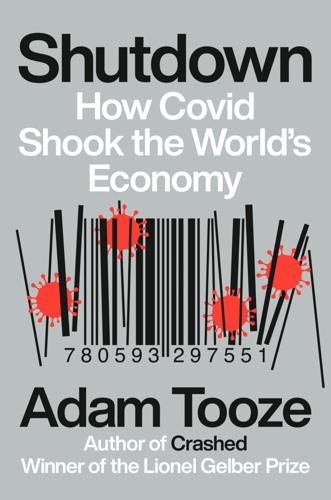
Shutdown: How COVID Shook the World's Economy
by
Adam Tooze
Published 15 Nov 2021
Ip, “Businesses Fret Over Potential Bernie Sanders Presidency,” Wall Street Journal, March 1, 2020. B. Schwartz, “Mike Bloomberg Prepares Media Onslaught Against Democratic Front-Runner Bernie Sanders,” CNBC, February 24, 2020. 78. A. Tooze, “ ‘We Are Living Through the First Economic Crisis of the Anthropocene,’ ” Guardian, May 7, 2020. 79. The best compact introduction is C. Bonneuil and J.-B. Fressoz, trans. D. Fernbach, The Shock of the Anthropocene: The Earth, History and Us (Verso, 2016). 80. B. Croce, History: Its Theory and Practice (Russell & Russell, 1960). CHAPTER 1. ORGANIZED IRRESPONSIBILITY 1. Institute for Health Metrics and Evaluation, Financing Global Health 2019: Tracking Health Spending in a Time of Crisis (IHME, 2020); www.healthdata.org/sites/default/files/files/policy_report/FGH/2020/FGH_2019_Interior_Final_Online_2020.09.18.pdf. 2.
…
* * * — Seeing 2020 as a comprehensive crisis of the neoliberal era—with regard to its environmental envelope, its domestic social, economic, and political underpinnings, and the international order—helps us find our historical bearings. Seen in those terms, the coronavirus crisis marks the end of an arc whose origin is to be found in the 1970s. It might also be seen as the first comprehensive crisis of the age of the Anthropocene to come—an era defined by the blowback from our unbalanced relationship to nature.78 But rather than trying prematurely to sketch the continuities of that half century of history, or attempting to project speculatively into the future, this book stays, as far as possible, in the moment itself.
…
As it did to billions of other people around the world, the coronavirus forced me to change my plans. I began the year working on a book about the history of energy policy, tracing the political economy of carbon back to the era of the oil crises, mapping a prehistory of the Green New Deal. Like so many others, I had become preoccupied with the Anthropocene, a transformation driven by capitalist economic growth that puts in question the very separation between natural and human history.79 In February, as the virus was spreading silently around the world, I was traveling in East Africa, immersed for the first time in the history of the continent.

The Weather Makers: How Man Is Changing the Climate and What It Means for Life on Earth
by
Tim Flannery
Published 10 Jan 2001
Then the confluence of Milankovich’s cycles and levels of CO2 was similar to the present, and the warm spell was exceptionally long—26,000 years, as opposed to 12,000 for the others. Only time will tell whether Ruddiman is correct in placing the beginning of the Anthropocene at 8000 rather than 200 years ago. Nonetheless, his analysis is one of the most provocative and stimulating to be published in recent times. Regardless of its origin, today there are unmistakable signs that the Anthropocene is turning ugly. So great are the changes scientists are detecting in our atmosphere that time’s gates appear once again to be opening. Will the Anthropocene become the shortest geological Period on record? EIGHT DIGGING UP THE DEAD We walk on earth, we look after, like rainbow sitting on top.
…
That unique factor, he decided, was ourselves, and in doing so he revolutionised another recent development—the endowing on our post-industrial times of its own geological period. It was Nobel laureate Paul Crutzen (awarded the prize for research into the ozone hole) and his colleagues who first recognised and named this momentous geological event. They called it the Anthropocene—meaning the age of humanity—and they marked its dawn at AD 1800 when methane and CO2 brewed up by the gargantuan machines of the Industrial Revolution first began to influence Earth’s climate.1 Ruddiman added an ingenious twist to this argument, for he detected what he believes to be human influences on Earth’s climate that occurred long before 1800.
…
Had the insolation cycle controlled them, methane should have commenced declining around 8000 years ago, and gone into a rapid decline by 5000 years ago. Instead, after taking a shallow dip that bottomed out 5000 years ago, methane concentrations begin a slow but emphatic rise. This, Ruddiman argues, is evidence that humans had wrested control of methane emissions from nature, and so we should mark the Anthropocene’s dawn as occurring 8000 years ago rather than 200. It was the beginnings of agriculture—particularly wet agriculture such as that practised in flooded rice paddies in eastern Asia—that tipped the balance, for such agricultural systems can be prodigious producers of the gas. It’s fair to note too that farmers of other crops that require swampy conditions were making their own contributions at around this time.
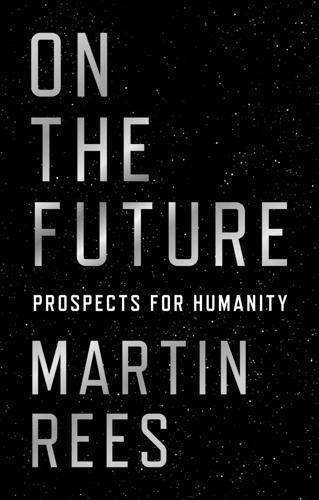
On the Future: Prospects for Humanity
by
Martin J. Rees
Published 14 Oct 2018
All Rights Reserved Library of Congress Control Number 2018935643 ISBN 978-0-691-18044-1 British Library Cataloging-in-Publication Data is available This book has been composed in Adobe Text Pro and Refrigerator Deluxe Printed on acid-free paper. ∞ Printed in the United States of America 10 9 8 7 6 5 4 3 2 1 CONTENTS Preface vii INTRODUCTION 1 1 DEEP IN THE ANTHROPOCENE 11 1.1. Perils and Prospects 11 1.2. Nuclear Threats 17 1.3. Eco-Threats and Tipping Points 21 1.4. Staying within Planetary Boundaries 31 1.5. Climate Change 37 1.6. Clean Energy—and a ‘Plan B’? 44 2 HUMANITY’S FUTURE ON EARTH 61 2.1. Biotech 61 2.2. Cybertechnology, Robotics, and AI 83 2.3.
…
* * * For medieval Europeans, the entire cosmology—from creation to apocalypse—spanned only a few thousand years. We now envision time-spans a million times longer. But even in this vastly extended perspective, this century is special. It is the first when one species, ours, is so empowered and dominant that it has the planet’s future in its hands. We’ve entered an era that some geologists call the Anthropocene. The ancients were bewildered and helpless in the face of floods and pestilences—and prone to irrational dread. Large parts of the Earth were terra incognita. The ancients’ cosmos was just the Sun and planets surrounded by the fixed stars spread across the ‘vault of heaven’. Today, we know our Sun is one of one hundred billion stars in our galaxy, which is itself one of at least one hundred billion other galaxies.
…
Finally, I address today’s global challenges—emphasising that these may require new international institutions, informed and enabled by well-directed science, but also responsive to public opinion on politics and ethics. Our planet, this ‘pale blue dot’ in the cosmos, is a special place. It may be a unique place. And we are its stewards in an especially crucial era. That is an important message for all of us—and the theme of this book. 1 DEEP IN THE ANTHROPOCENE 1.1. PERILS AND PROSPECTS A few years ago, I met a well-known tycoon from India. Knowing I had the English title of ‘Astronomer Royal’, he asked, ‘Do you do the Queen’s horoscopes’? I responded, with a straight face: ‘If she wanted one, I’m the person she’d ask’. He seemed eager to hear my predictions.

The Collapse of Western Civilization: A View From the Future
by
Naomi Oreskes
and
Erik M. Conway
Published 30 Jun 2014
These materials included sulfates from coal combustion, as well as CO2 and methane (CH4) from a host of sources including fossil fuel combustion, concrete manufacture, deforestation, and then-prevalent agricultural techniques, such as growing rice in paddy fields and producing cattle as a primary protein source. In the 1970s, scientists began to recognize that human activities were changing the physical and biological functions of the planet in consequential ways—giving rise to the Anthropocene Period of geological history.1 None of the scientists who made these early discoveries was particularly visionary: many of the relevant studies were by-products of nuclear weapons testing and development.2 It was the rare man—in those days, sex discrimination was still widespread—who understood that he was in fact studying the limits of planetary sinks.
…
By the late 1980s, scientists had recognized that concentrations of in the 1970s, scientists began to recognize that human activi- CO2 and other greenhouse ties were changing the physical gases were having discern- and biological functions of the ible effects on planetary cli- planet in consequential ways— mate, ocean chemistry, and giving rise to the Anthropocene biological systems, threat- Period of geological history. ening grave consequences if not rapidly controlled. Vari- ous groups and individuals began to argue for the need to limit greenhouse gas emissions and begin a transition to a non-carbon-based energy system. Historians view 1988 as the start of the Penumbral Period.
…
Others consider that outcome wishful, in light of the dreadful events of the past, and reject the reappraisal that we wish to invite here. Evidently, the Penumbra falls even today—and likely will continue to fall for years, decades, and perhaps even centuries to come. Lexicon of Archaic Terms Anthropocene The geological period, beginning in approximately 1750 with the start of the Industrial Revolution, when humans have become geological agents whose activities effectively compete with, and begin to overwhelm, geophysical, geochemical, and biological processes. Baconianism A philosophy, generally attributed to the English jurist Sir Francis Bacon (1561–1626), that held that through experience, observation, and experiment, one could gather reliable knowledge about the natural world and this knowledge would empower its holder.
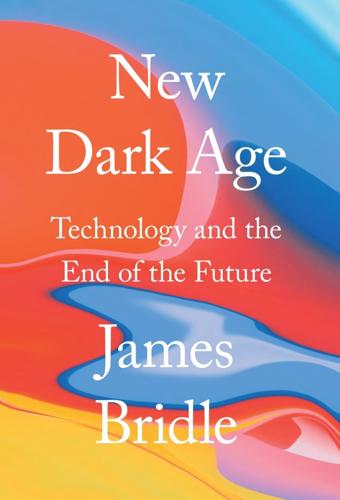
New Dark Age: Technology and the End of the Future
by
James Bridle
Published 18 Jun 2018
It is perhaps this event that should be considered the beginning of the anthropocene, rather than some marvellous human invention belatedly recognised as suicidal. Not the invention of the coal-fired steam engine that kick-started the industrial age in the eighteenth century; not the fixation of nitrogen beginning with the invention of the Haber-Bosch process; not the release of billions of particles of radioactive contamination from the detonation of hundreds of nuclear bombs: the anthropocene starts with mass genocide, with planetary violence on such a scale that it registers in ice cores and the pollination of crops. It is the hallmark of the anthropocene that, unlike those epochs that started with a meteor strike or sustained volcanic eruptions, its origins are cloudy and uncertain.
…
From Aldous Huxley, Island, New York: Harper & Brothers, 1962. 3.H. P. Lovecraft, ‘The Call of Cthulhu’, Weird Tales, February 1926. 4.Rebecca Solnit, ‘Woolf’s Darkness: Embracing the Inexplicable’, New Yorker, April 24, 2014, newyorker.com. 5.Donna Haraway, ‘Anthropocene, Capitalocene, Chthulucene: Staying with the Trouble’ (lecture, ‘Anthropocene: Arts of Living on a Damaged Planet’ conference, UC Santa Cruz, May 9, 2014), opentranscripts.org. 6.Virginia Woolf, Three Guineas, New York: Harvest, 1966. 2Computation 1.John Ruskin, The Storm-Cloud of the Nineteenth Century: Two Lectures Delivered at the London Institution February 4th and 11th, 1884, London: George Allen, 1884. 2.Ibid. 3.Ibid. 4.Alexander Graham Bell, in a letter to his father Alexander Melville Bell, dated February 26, 1880, quoted in Robert V.
…
In The Invisibles’ cosmology, this is one of the dramatic moments when the narrative collapses, and evidence of time travel and much else is revealed. For us, the strange, global entanglement of Cirrus homogenitus and its endless circulation and reproduction online through climate research and conspiracy theory is the moment when the weather becomes active data: a Storm-Cloud of the Anthropocene, unlimited in physical space and spreading through the network, and the paranoid imagination. Source: NASA. November 13, 2001, NOAA-15 AVHRR infrared over the southeastern United States, showing contrails of various ages. Scientists are at pains to disassociate ‘normal’ contrails from the conspiracists’ chemtrails, but they contain the seeds of the same crisis.
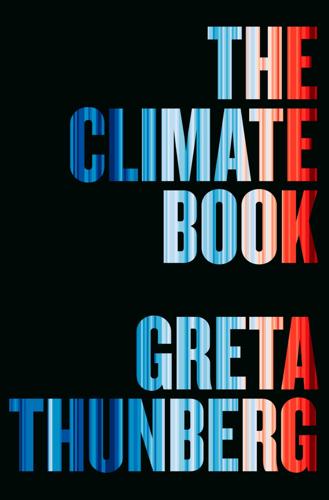
The Climate Book: The Facts and the Solutions
by
Greta Thunberg
Published 14 Feb 2023
. / People in positions of power and privilege refused to acknowledge that climate change was a manifestation of a broken economic system. 1.8 Tipping Points and Feedback Loops Johan Rockström Scientifically, it is now well established that Earth has entered a new geological epoch, the Anthropocene, where our globalized world constitutes the largest driver of change on Earth. The amount of CO2 emitted so far from our fossil fuel burning (some 500 billion tonnes of carbon) and the environmental destruction caused by us is sufficient to affect our planet’s future during the next half a million years. We are in the driver’s seat, determining the future state of our home, planet Earth. We triggered the Anthropocene some seventy years ago when our fossil-fuel-driven industrialized world economy went truly global, causing multiple ‘hockey sticks’ of rising human pressures; the ‘Great Acceleration’ is a fact, manifested in an accelerated rise in greenhouse gas emissions, fertilizer consumption, water use, marine fish catching and terrestrial biosphere degradation, to name just a few (Fig. 1).
…
The scientific community now must explore whether we are at risk of destabilizing the entire Earth system, which means pushing biophysical systems and processes – like the ice sheets, forests and the ocean’s circulation of heat – past their tipping point, where feedbacks shift from cooling and dampening to warming and self-reinforcing, which could culminate in an irreversible drift of the entire planet away from the stable interglacial state of the planet, the Holocene, that we have benefitted from since the emergence of human civilizations some 10,000 years ago, and still completely depend on. This means that we have reached an existential fork in the road. We are in the Anthropocene and are seeing rising signs of the approach of irreversible tipping points. Still, the Earth system, while showing worrying signs of destabilization, remains in an interglacial Holocene-like state. This may seem odd, but it is the reason we can still talk of hope. While the Holocene is a state of the planet (an interglacial with two permanent ice caps in the Arctic and Antarctica), the Anthropocene, so far, is ‘only’ a trajectory – a movement away from a Holocene state and not, yet, a new state.
…
Reproduced with permission of Oxfam 7: © Johnny Gaskell 8: Composite graph of ‘Atmospheric CO2 at Mauna Loa Observatory’, Dec 2021, Scripps Institution of Oceanography; NOAA Global Monitoring Laboratory; #ShowYourStripes – Graphis & lead Scientist: Ed Hawkins, National Centre for Atmospheric Science, University of Reading; Data: UK Met Office. Design by sustention [PG]. Creative Commons License 9: Adapted from ‘Socio-economic trends’ and ‘Earth System Trends’ from ‘The trajectory of the Anthropocene: The Great Acceleration’ by Will Steffen, Wendy Broadgate, Lisa Deutsch, et al., The Anthropocene Review, 01/04/2015, Vol 2(1), 81–98, SAGE Publications, copyright © 2015, SAGE Publication. Reprinted with permission of SAGE Publications 10: © Johan Rockström. Reproduced with permission 11: Adapted from ‘Tipping elements in the Earth’s climate system’ by T.
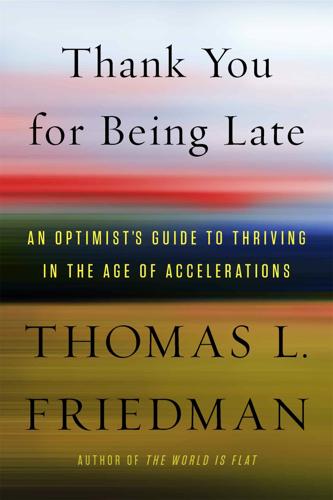
Thank You for Being Late: An Optimist's Guide to Thriving in the Age of Accelerations
by
Thomas L. Friedman
Published 22 Nov 2016
This is what the graphs look like: Source: Steffen, W., Broadgate, W., Deutsch, L., Gaffney, O., and Ludwig, C., “The Trajectory of the Anthropocene: The Great Acceleration.” Anthropocene Review (vol. 2, no. 1), pp. 81–98. Copyright © 2015 by the authors. Reprinted by permission of SAGE Publications, Ltd. Source: Steffen, W., Broadgate, W., Deutsch, L., Gaffney, O., and Ludwig, C., “The Trajectory of the Anthropocene: The Great Acceleration.” Anthropocene Review (vol. 2, no. 1), pp. 81–98. Copyright © 2015 by the authors. Reprinted by permission of SAGE Publications, Ltd. The Planetary Boundaries Once these accelerations were established, it became critical to try to quantify, as best one possibly could, the impacts they were having on Mother Nature’s most important systems, since she couldn’t tell us herself.
…
They believe we’ve already left it behind and entered a new era that is being driven by … us. The name being given to this era is the “Anthropocene,” as in anthropo, for “man,” and cene, for “new.” It is a fancy scientific name for the power of many. “Human activity is leaving a pervasive and persistent signature on Earth,” said Colin Waters of the British Geological Survey, coauthor of an essay in the January 8, 2016, issue of Science making the case that the Anthropocene deserves to be defined as a distinct new epoch from the Holocene. The authors acknowledge that “any formal recognition of an Anthropocene epoch in the geological time scale hinges on whether humans have changed the Earth system sufficiently to produce a stratigraphic signature in sediments and ice that is distinct from that of the Holocene epoch,” and they go on to make the case that we have.
…
Louis Park Agadez, Niger age of accelerations; dislocation and; education and; human adaptability as challenged by; as inflection point; innovation as response to; leadership and; the Machine and; Moore’s law and; social technologies and agriculture: in Africa and Middle East; climate change and; monocultures vs. polycultures in Airbnb; trust and air-conditioning Aita, Samir algorithms; human oversight and; self-improving Alivio Capital Allen, Paul Allisam, Graham Almaniq, Mati Al Qaeda Al-Shabab AltaVista Amazon (company) Amazon rain forest Amazon Web Services American Civil Liberties Union American Dream American Interest American University of Iraq “America’s New Immigrant Entrepreneurs: Then and Now” (Kauffman Foundation) Amman, Jordan amplifying, as geopolitical policy Andersen, Jeanne Anderson, Chris Anderson, Ross Anderson, Wendell Andreessen, Marc Andrews, Garrett Android AngularJS Annan, Kofi Anthropocene epoch Anthropocene Review anti-Semitism APIs (application programming interfaces) Apple; see also Jobs, Steve Applebaum, Anne Apple Newton Apple Pay apps revolution Arab Awakening Arabic, author’s study of Arab-Muslim world, golden age of Arafat, Yasser architects, software for Armstrong, Neil artificial intelligence (AI); intelligent algorithms and; intelligent assistance and Artnet.com Ashe, Neil Ashraf, Quamrul Assad, Bashar al- Associated Press Astren, Fred AT&T; intelligent assistance and; iPhone gamble of; lifelong learning and; as software company Atkinson, Karen atmosphere: aerosol loading in; CO2 in; ozone layer of ATMs Auguste, Byron Austria Austro-Hungarian Empire Autodesk automation, see computers, computing autonomous systems; see also cars, self-driving Autor, David Avaaz.org Azmar Mountain Bajpai, Aloke Baker, James A., III balance of power Bandar Mahshahr, Iran bandwidth Bangladesh bankruptcy laws bank tellers Barbut, Monique baseball, class-mixing and BASIC Bass, Carl Batman, Turkey BBCNews.com Bee, Samantha Beinhocker, Eric Beirut: civil war in; 1982 Israeli-Palestinian war in Bell, Alexander Graham Bell Labs Bennis, Warren Benyus, Janine Berenberg, Morrie Berenberg, Tess Berkus, Nate Berlin, Isaiah Berlin Wall, fall of Bessen, James Betsiboka River “Better Outcomes Through Radical Inclusion” (Wells) Between Debt and the Devil (Turner) Beykpour, Kayvon Bible Bigbelly garbage cans big data; consumers and; financial services and; software innovation and; supernova and Big Shift Big World, Small Planet (Rockström) “Big Yellow Taxi” (song) Bingham, Marjorie bin Laden, Osama bin Yehia, Abdullah biodiversity: environmental niches and; resilience and biodiversity loss; climate change and biofuels biogeochemical flows biomass fuels biotechnology bioweapons birth control, opposition to Bitcoin black elephants Blase, Bill blockchain technology Bloomberg.com Blumenfeld, Isadore “Kid Cann” Bobby Z (Bobby Rivkin) Bodin, Wes Bohr, Mark Bojia, Ayele Z.
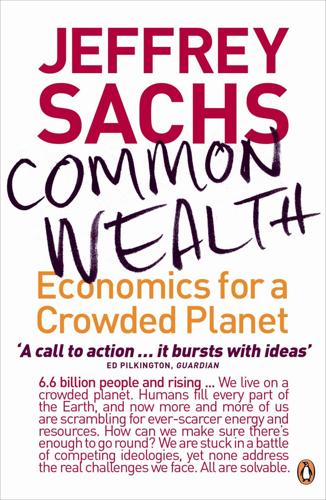
Common Wealth: Economics for a Crowded Planet
by
Jeffrey Sachs
Published 1 Jan 2008
JEFFREY D. SACHS Common Wealth Economics for a Crowded Planet PENGUIN BOOKS Contents Foreword by Edward O. Wilson PART ONE New Economics for the Twenty-first Century 1. Common Challenges, Common Wealth 2. Our Crowded Planet PART TWO Environmental Sustainability 3. The Anthropocene 4. Global Solutions to Climate Change 5. Securing Our Water Needs 6. A Home for All Species PART THREE The Demographic Challenge 7. Global Population Dynamics 8. Completing the Demographic Transition PART FOUR Prosperity for All 9. The Strategy of Economic Development 10.
…
The major donors are on the record promising a doubling of aid to Africa (an extra $25 billion per year) by the year 2010, but as of 2007 have not delivered a sustained increase above the 2004 levels. There is still time to make good on the promises, but the clock is running and millions of lives are lost each year by this neglect. PART TWO Environmental Sustainability Chapter 3 The Anthropocene THE WORLD’S ABILITY TO COMBINE long-term economic growth with environmental health is heavily debated. Yet one thing is certain: the current trajectory of human activity is not sustainable. If we simply do what we are doing on the planet with unchanged technology—but on a much larger scale as China, India, and other large population centers experience rapid economic growth—the environmental underpinnings of global well-being will collapse.
…
The gradual rise of the human population, from perhaps ten million in 8000 BC to five hundred million in AD 1800, was followed by an explosion of human population shown in Figure 3.1 that has changed everything about us and the natural environment. As of 1800, give or take a few decades, we entered the age of the Anthropocene, when human activity became the dominant driver of the natural environment. Starting around 1800 the traditional limits on the human population gave way to unprecedented new technologies. Before then, humanity had lived on the contemporaneous energy of the sun, mainly in the forms of food, fuel wood, fibers, and a modest capture of wind and water power.
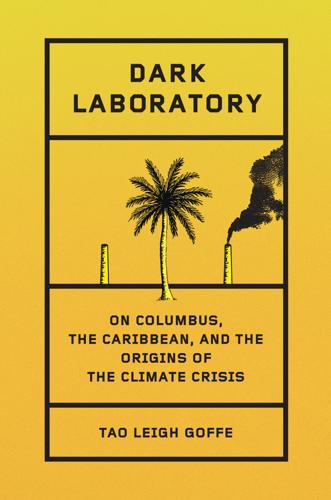
Dark Laboratory: On Columbus, the Caribbean, and the Origins of the Climate Crisis
by
Tao Leigh. Goffe
Published 14 Mar 2025
Thus, I reject the academic analytic appellation of the so-called Anthropocene that was coined in the 1980s and popularized in the year 2000 because it is jargon, which means it can only fail us.[15] The term, using the root anthro, or human, reveals a self-centered approach. It is invested in the myth of human supremacy. The term “Anthropocene” commits the anthropocentricism it claims to critique. That humans have destroyed the natural environment is no surprise. The debates of the Anthropocene often fail to distribute the blame where it is due, on so-called developed nations. To use the word “Anthropocene” is to universally blame all human societies.[16] Meanwhile, the specificity of the calamity wrought by European colonialism is unmistakable.
…
BACK TO NOTE REFERENCE 13 “Sagarmatha” translates from Nepali as “forehead or head in the sky.” BACK TO NOTE REFERENCE 14 “Planetary History: Growth in the Anthropocene Research Project 2018–2021,” University of Chicago. BACK TO NOTE REFERENCE 15 Other scholars such as Donna Haraway and Anna Tsing use terms such as “Cluthocene” and “Plantationocene.” While these in some way attend to the flaws on the Anthropocene vantage, they still conform to this rigid view of geologic time. BACK TO NOTE REFERENCE 16 Laurel Wamsley, “Supreme Court Rules that About Half of Oklahoma Is Native American Land,” NPR, July 9, 2020.
…
Often, economic history or chemistry perspectives govern the global storytelling of guano. These points of view discount the individual lives and narratives of the miners from China, the South Pacific, and the Black diaspora who died mining guano. Though Cushman claims to teach and work on the human dimensions of climate change, he elides people of color by focusing on the Anthropocene to tell a top-down geopolitical history. Western climate innocence rests on colonial omissions and the lack of attention to the valuation of whiteness in the extractive economies of the past. In the guano trade, racism became sedimented in the Atlantic and Pacific worlds as life became disposable according to race, all for the cause of imperial and economic expansion.
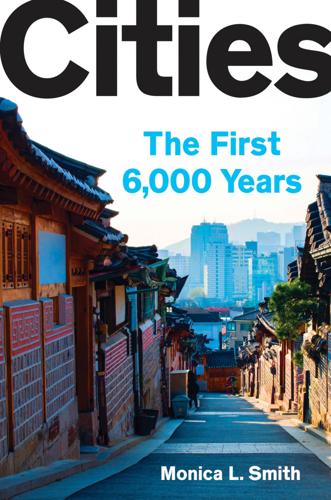
Cities: The First 6,000 Years
by
Monica L. Smith
Published 31 Mar 2019
Linkages Between a Gated Community and Its Poorer Neighbour in a Cape Town Master Plan Development,” Urban Studies 43, no. 2 (2006): 397–420. CHAPTER 10: A WORLD OF CITIES geologic era to be called the Anthropocene: For variable definitions of the Anthropocene, see P. J. Crutzen, “The ‘Anthropocene,’” in Early System Science in the Anthropocene, eds., Eckart Ehlers and Thomas Krafft (Berlin: Springer, 2006), 13; and Will Steffen, Paul J. Crutzen, and John R. McNeill, “The Anthropocene: Are Humans Now Overwhelming the Great Forces of Nature?,” Ambio 36, no. 8 (2007): 614. Ecologists worry that the next generation: Richard Louv, Last Child in the Woods: Saving Our Children from Nature-Deficit Disorder, rev. ed.
…
With more than half of the world’s populations now living in cities, there’s an increased concentration not only of people but also of wealth, knowledge, and expertise in urban centers, too. It’s not surprising that scientists are increasingly calling for us to acknowledge the significant impact of humans through the development of a special geologic era to be called the Anthropocene: the time when humans’ impact has outweighed nature itself. An Unnatural World? One of the criticisms of urban life, particularly modern urban life with its plastics and internal-combustion engines and electric lines, is that we have become utterly removed from nature. Ecologists worry that the next generation of children will have no direct experience of an unpaved world and that the rest of us will become progressively disassociated from the realm of other living things.
…
See also specific cities “first,” 75–87 maps, 28–33 street layouts, 36–38 urbanization, 1–9 working definition of, 9–12 ancient Egypt Amarna, 81, 238 education, 189–90 engineering, 209–11 obelisks, 238 portrait from, 184 ancient Egyptian obelisks, 238 ancient Greece coinage, 172, 174 middle-class life, 194–96 pottery, 46, 151, 152 Roman conquest of, 27, 163, 174 ancient Rome, 8, 227–28 baths, 132–33 coinage, 172, 174–75 concrete, 253 conquests and travels, 26–27, 163, 174 entertainment and tourism, 162–63 funerary practices, 218 hairstyles, 177 malaria, 90 maps, 28, 31–32, 51, 88 middle class, 212–13 middle managers of, 220 Monte Testaccio, 1–3, 159, 166 networks, 236, 238–39, 249 population, 243–44 roadways, 39, 144 slums, 113 souvenirs, 179 urban collapse, 254 walls, 124–25 waste infrastructure, 134–35 water infrastructure, 132–33, 223–24 water laws, 193–94 Angkor, 63–64, 268n collapse, 256, 258 eating and drinking, 168 animals extinctions, 9 life in modern cities, 230–32 science, 185-86 anonymity, 35–36, 78–79, 214 Anschuetz, Kurt, 149 Anthropocene, 229 Antony, Marc 174 anxiety, 215, 217–22 aqueducts, 132, 135, 208–9, 223–24 archaeology (archaeological research), 43–58 beginnings of site occupation, 54–58 challenges of deep digs, 53–57 crew members, 49–50 layers of ancient habitation, 44–46, 53 process of excavation, 48 rubric of approach, 46–47, 50–53 skill set required for, 43–44 tool kit for, 48–49 walls and, 125, 126–27 waste infrastructure and, 136 archaeological museums, 151–52 archaeological surveys, 59–65 “architectural dependence,” 38 “architectural restlessness,” 252 architecture, 12, 19, 25–26, 30, 47–48, 55, 105–9, 116–17, 126, 245, 249–53 Arthaśātra, 219 assimilation, 244–45 Assyrian Empire, 247–48 astronomy, 9, 11–12 Athenian Owl Coin, 174 Augustus, 124, 174–75, 238, 251 Aurelian, 125, 127 Australopithecus, 91 “auto malls,” 199 Aztec Empire, 20–23, 142–43, 167–68, 245, 254 Babylon, 57, 83, 128, 238 Babylonian law, 190–94, 217–18 ball courts, 25–26, 251 “bandwidth,” 102 Bangkok, 168, 227 banlieues, 109 Barbault, Jean, 42 barter systems, 153, 171–72 baths, 132–33 Bayon Temple (Angkor), 168 bazaar economies, 198–99 beads, 102–3, 155–56, 197–98 beggary, 173–74 beginnings of cities, 67–87 first cities, 75–87 ritual spaces, 68–75 Benin City, 125 Berlin Pergamon Museum, 128 Bermondsey, 109 bevel-rim bowls (BRBs), 152–53, 154, 156, 167 bike lanes, 141 biology, 9 bird life, 230–31 Bonampak, 219–20 breaking the glass, 158 Breasted, James Henry, 84 bridges, 26, 120, 140, 145 “bright lights, big city,” 7 British Museum, 81 Broman, Vivian, 154 Buffalo Bayou, 146 building construction, and engineering, 205–11 burial societies, 218 buskers, 214–15 Cairo, 27, 209 Campus Martius, 42 canals, 83, 120, 130–31, 145, 149, 208 Canterbury Tales, The (Chaucer), 247 Cape Town, South Africa, 224–25 Caracol, 166 carnivores, 230 Carter, Howard, 81 Carthage, 27, 254 cartography, 28–33 cash economies, 170–71, 172–76 catastrophic events, 90 Catholic Church, 238–39, 255 cave art, 105 Celts, 124, 125 ceremonial ship launching, 158 Chan Chan, 111–12 Chang’an, 39, 59 canals, 130–31 characteristics of cities, 12, 75–76 chemistry, 9 Chichén Itzá, 254 chicken wishbones, 158 Childe, V.
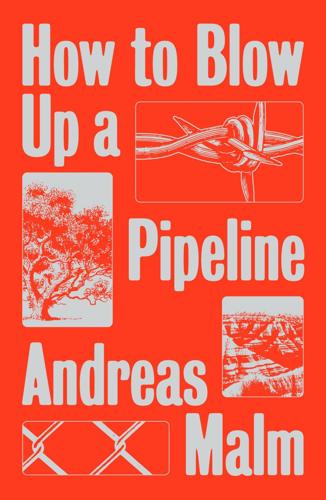
How to Blow Up a Pipeline
by
Andreas Malm
Published 4 Jan 2021
p. 133. One of them is Roy … Roy Scranton, Learning to Die in the Anthropocene: Reflections on the End of a Civilization (San Francisco: City Lights, 2015), quotations from pp. 16–17; Roy Scranton, We’re Doomed. Now What? Essays on War and Climate Change (New York: Soho Press, 2018), quotations from pp. 7, 73. For an excellent critique of Scranton, from which this text has borrowed half of its subtitle, see Ted Stolze, ‘Against Climate Stoicism: Learning to Fight in the Anthropocene’, in Jan Jagodzinski (ed.), Interrogating the Anthropocene: Ecology, Aesthetics, Pedagogy and the Future in Question (Cham, Switzerland: Palgrave Macmillan, 2018), pp. 317–37.
…
It dies down. And then it is gone. 3 Fighting Despair If both protest and resistance seem vain, there is always an alternative ready at hand: to give up on humanity and this planet. It already has its exponents. One of them is Roy Scranton, whose claim to fame is a book called Learning to Die in the Anthropocene, followed by We’re Doomed. Now What? He is adamant that ‘we’re fucked’. It’s too late already – ‘too late to stop apocalyptic global warming’; we have ‘passed the point where we could have done anything about it’; we are ‘already over the cliff’ and now stare into the chasm of ‘endless, depthless, unassuageable human suffering’.
…
Jones, ‘CO2 Loss by Permafrost Thawing Implies Additional Reductions to Limit Warming to 1.5 or 2°C’, Environmental Research Letters 13 (2018): 1–9; Edward Comyn-Platt, Garry Hayman, Chris Huntingford et al., ‘Carbon Budgets for 1.5 and 2°C Targets Lowered by Natural Wetland and Permafrost Feedbacks’, Nature Geoscience 11 (2018): 568–73. See further e.g. Will Steffen, Johan Rockström, Katherine Richardson et al., ‘Trajectories of the Earth System in the Anthropocene’, PNAS 115 (2018): 8252– 59; Paul Voosen, ‘New Climate Models Forecast a Warming Surge’, Science 364 (2019): 222–23. p. 66. ‘Even under optimistic assumptions …’ J. R. Lamontagne, P. M. Reed, G. Marangoni et al., ‘Robust Abatement Pathways to Tolerable Climate Futures Require Immediate Global Action’, Nature Climate Change 9 (2019), p. 290.
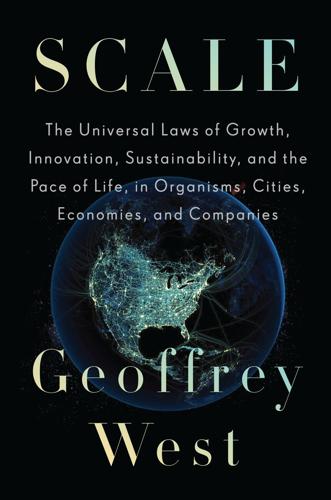
Scale: The Universal Laws of Growth, Innovation, Sustainability, and the Pace of Life in Organisms, Cities, Economies, and Companies
by
Geoffrey West
Published 15 May 2017
Consequently, some have proposed that we should date the beginnings of the Anthropocene from the Industrial Revolution, while others suggest it should be as recent as the middle of the twentieth century. Others have even suggested that it began more than ten thousand years ago coinciding with the beginning of the Holocene, the geological epoch that began when the Earth warmed up, leading to the development of agriculture and modern man. I am very enthusiastic about explicitly acknowledging our profound impact on the planet by naming a new epoch but would prefer that we reserve Anthropocene for the entire period going back several thousand years to when we first began to significantly diverge from being predominantly biological to becoming predominantly social by increasing our effective metabolic rate.
…
THE FOURTH DIMENSION OF LIFE: Growth, Aging, and Death The Fourth Dimension of Life • Why Aren’t There Mammals the Size of Tiny Ants? • And Why Aren’t There Enormous Mammals the Size of Godzilla? • Growth • Global Warming, the Exponential Scaling of Temperature, and the Metabolic Theory of Ecology • Aging and Mortality 5. FROM THE ANTHROPOCENE TO THE URBANOCENE: A Planet Dominated by Cities Living in Exponentially Expanding Universes • Cities, Urbanization, and Global Sustainability • Digression: What Exactly Is an Exponential Anyway? Some Cautionary Fables • The Rise of the Industrial City and Its Discontents • Malthus, Neo-Malthusians, and the Great Innovation Optimists • It’s All Energy, Stupid 6.
…
Among his many exploits, he gained a certain early notoriety when he and a fellow graduate student used statistical analysis to determine which roulette wheels at a casino in Reno, Nevada, were accidentally biased. By betting heavily on the ones that were most unbalanced, they cleaned up. The casinos eventually realized what was happening and banned them from betting. From his winnings Walford funded his medical school education as well as a year of sailing a yacht in the Caribbean. 5 FROM THE ANTHROPOCENE TO THE URBANOCENE A Planet Dominated by Cities 1. LIVING IN EXPONENTIALLY EXPANDING UNIVERSES One of the most startling and profound discoveries of the twentieth century was to learn that on the cosmic scale we are living in an exponentially expanding universe. An equally profound, but much less heralded, discovery was the realization that on the earthly scale we are also living in an exponentially expanding universe, this one socioeconomic.
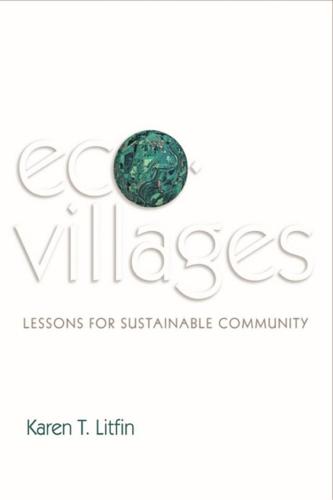
Ecovillages: Lessons for Sustainable Community
by
Karen T. Litfin
Published 16 Dec 2013
Climate change and the mass extinction of species are the primary signs that we have entered a new geological age. Scientists call it the Anthropocene, the era dominated by the human presence. In other words, the upshot of the story of separation is that we are now the protagonists in the Great Unfoldment. This is our current evolutionary predicament. The question now is whether we can embrace a cosmology of wholeness and harmonize our lives with Earth’s community. With their lives, ecovillagers are voting on the side of “yes.” If they and other sustainability pioneers succeed, perhaps the Anthropocene will take a cue from Thomas Berry and bear a more humble name: the Ecozoic – the ecological era.
…
The future depends upon how wide our circles of wisdom and compassion are today. If we want to live as a global species within the circle of life, then we need to scale up the lessons from ecovillages commensurately. Humanity is operating as a geophysical force, yet most of our members are utterly unaware of our perilous entry into the Anthropocene.15 At the same time, globalization has given us the material infrastructure for planetary connectivity. As we cross the threshold into this new era, the question is whether we can develop the technological, social, and spiritual connectivity to live as one species on our one Earth. To my mind, rising above endless consumption and aiming for connectivity is a worthy purpose.
…
It is a purpose that supplants the old story of separation for it brings us home to ourselves as integral members of the Earth community. On a micro-scale, ecovillages are at the leading edge of this homecoming and can therefore help to illuminate the path. It is, however, a pathless path; we make it by walking forward together. The Anthropocene calls us to a larger sense of identity and responsibility. In this emergent identity, we can experience a global citizenship that simultaneously transcends and includes our bounded self and our existing social identities. In stretching our loyalties, we are each enlarged – particularly when we join with others who are embarking upon this pathless path.
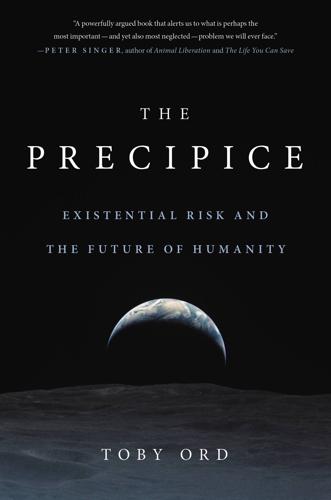
The Precipice: Existential Risk and the Future of Humanity
by
Toby Ord
Published 24 Mar 2020
Proposed beginnings for this epoch include the megafauna extinctions, the Agricultural Revolution, the crossing of the Atlantic, the Industrial Revolution, or early nuclear weapons tests.66 Is this the same as the Precipice? How do they differ? • The Anthropocene is the time of profound human effects on the environment, while the Precipice is the time where humanity is at high risk of destroying itself. • The Anthropocene is a geological epoch, which typically last millions of years, while the Precipice is a time in human history (akin to the Enlightenment or the Industrial Revolution), which will likely end within a few centuries. • They might both officially start with the first atomic test, but this would be for very different reasons. For the Anthropocene, it would be mainly for convenient dating, while for the Precipice it is because of the risk nuclear weapons pose to our survival. 2 EXISTENTIAL RISK The crucial role we fill, as moral beings, is as members of a cross-generational community, a community of beings who look before and after, who interpret the past in light of the present, who see the future as growing out of the past, who see themselves as members of enduring families, nations, cultures, traditions.
…
THE PRECIPICE & ANTHROPOCENE It has become increasingly clear that human activity is the dominant force shaping the environment. Scientists are concluding that humanity looms large not just in its own terms, but in the objective terms of biology, geology and climatology. If there are geologists in the distant future, they would identify the layer of rock corresponding to our time as a fundamental change from the layers before it. Our present-day geologists are thus considering making this official—changing their classification of geological time to introduce a new epoch called the Anthropocene. Proposed beginnings for this epoch include the megafauna extinctions, the Agricultural Revolution, the crossing of the Atlantic, the Industrial Revolution, or early nuclear weapons tests.66 Is this the same as the Precipice?
…
R., and Cohen, A. S. (2018). “Subdecadal Phytolith and Charcoal Records from Lake Malawi, East Africa, Imply Minimal Effects on Human Evolution from the ∼74 ka Toba Supereruption.” Journal of Human Evolution, 116, 75–94. Zalasiewicz, J., et al. (2017). “The Working Group on the Anthropocene: Summary of Evidence and Interim Recommendations.” Anthropocene, 19, 55–60. Zelicoff, A. P., and Bellomo, M. (2005). Microbe: Are We Ready for the Next Plague? AMACOM. Zhang, B., and Dafoe, A. (2019). Artificial Intelligence: American Attitudes and Trends. Center for the Governance of AI, Future of Humanity Institute, University of Oxford.
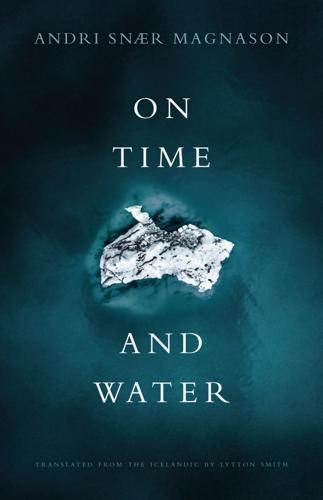
On Time and Water
by
Andri Snaer Magnason
Published 15 Sep 2021
One hundred years seems such a long time that we don’t react when a scientist shows us that if things keep going at this rate, substantial disasters will have occurred by 2100. We shrug our shoulders, as if that date doesn’t concern us. Scientists believe that human impacts have become so widespread that we are entering a new geological era. This modern era, the Anthropocene, branches off from the Holocene, which began ten thousand years ago. Since World War II, human activity has grown exponentially, whether in terms of population, consumption, energy use, or pollution. My Grandpa Björn and his second wife Peggy belong to a generation that was born and came of age at one geological time and now live in their old age at the dawn of a new geological age.
…
Fallible leaders had been given the power of annihilation: a force multiple times more destructive than that of all the combined tyrants in human history. By comparison, Prometheus had a dim, tiny flare. Many scientists have argued that Oppenheimer’s work marked a new era in geological history. Radiation from the Trinity test established a layer we might understand as the starting point of the Anthropocene. As of July 16, 1945, human impact, our footprint, was formally measurable on all surfaces of the Earth, in all soils, all stones and metals. Humanity as an organism had begun to affect Earth the way major geological phenomena do. A single human now had the power to destroy all life with one decision: detonating a nuclear bomb.
…
All this has increased slowly but surely for more than two centuries, and never more so than at this very moment. Although the atomic bomb is the chosen benchmark for marking a new geological era, that geologic turning point, that new geological century, might be dated earlier: the geological era of the Anthropocene, which will be known by Earth’s warming, by glaciers melting, by rising sea levels, by acidifying oceans, by species going extinct, can be traced directly to James Watt, born in Greenock, Scotland, in the year 1736. Watt was a skilled mechanical engineer who designed measuring devices for the University of Glasgow’s laboratories.
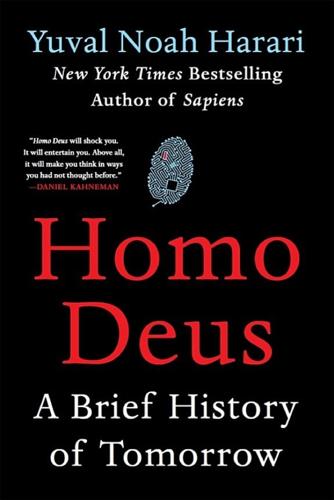
Homo Deus: A Brief History of Tomorrow
by
Yuval Noah Harari
Published 1 Mar 2015
Dedication To my teacher, S. N. Goenka (1924–2013), who lovingly taught me important things. Contents Dedication 1 The New Human Agenda PART I Homo Sapiens Conquers the World 2 The Anthropocene 3 The Human Spark PART II Homo Sapiens Gives Meaning to the World 4 The Storytellers 5 The Odd Couple 6 The Modern Covenant 7 The Humanist Revolution PART III Homo Sapiens Loses Control 8 The Time Bomb in the Laboratory 9 The Great Decoupling 10 The Ocean of Consciousness 11 The Data Religion Notes Acknowledgements Index About the Author Also by Yuval Noah Harari Credits Copyright About the Publisher In vitro fertilisation: mastering creation.
…
King Ashurbanipal of Assyria slaying a lion: mastering the animal kingdom. © De Agostini Picture Library/G. Nimatallah/Bridgeman Images. PART I Homo sapiens Conquers the World What is the difference between humans and all other animals? How did our species conquer the world? Is Homo sapiens a superior life form, or just the local bully? 2 The Anthropocene With regard to other animals, humans have long since become gods. We don’t like to reflect on this too deeply, because we have not been particularly just or merciful gods. If you watch the National Geographic channel, go to a Disney film or read a book of fairy tales, you might easily get the impression that planet Earth is populated mainly by lions, wolves and tigers who are an equal match for us humans.
…
In the same year, Europeans raised 1.9 billion chickens for meat and eggs.4 At present, more than 90 per cent of the large animals of the world (i.e. those weighing more than a few kilograms) are either humans or domesticated animals. Scientists divide the history of our planet into epochs such as the Pleistocene, the Pliocene and the Miocene. Officially, we live in the Holocene epoch. Yet it may be better to call the last 70,000 years the Anthropocene epoch: the epoch of humanity. For during these millennia Homo sapiens became the single most important agent of change in the global ecology.5 This is an unprecedented phenomenon. Since the appearance of life, about 4 billion years ago, never has a single species changed the global ecology all by itself.
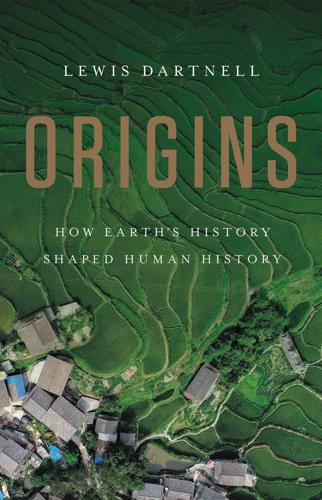
Origins: How Earth's History Shaped Human History
by
Lewis Dartnell
Published 13 May 2019
The Planet in a Pebble: A Journey into Earth’s Deep History, Oxford University Press. Zalasiewicz, J., C. N. Waters and M. Williams (2014). ‘Human bioturbation, and the subterranean landscape of the Anthropocene’, Anthropocene 6: 3–9. Zalasiewicz, J., M. Williams, R. Fortey, A. Smith, T. L. Barry, A. L. Coe, P. R. Bown, P. F. Rawson, A. Gale, P. Gibbard, F. J. Gregory, M. W. Hounslow, A. C. Kerr, P. Pearson, R. Knox, J. Powell, C. Waters, J. Marshall, M. Oates and P. Stone (2011). ‘Stratigraphy of the Anthropocene’, Philosophical Transactions of the Royal Society A–Mathematical, Physical and Engineering Sciences 369(1938): 1036–55. Zeebe, R. E., A. Ridgwell and J.
…
Our building of cities and roads, damming of rivers, and industrial and mining activity are having a profound and lasting effect, remoulding the landscape, changing the global climate and causing widespread extinctions. Scientists have proposed that a new geological epoch should be named to recognise this dominance of our influence over natural processes on the planet–the Anthropocene, the ‘recent age of humanity’.2 But as a species we are still inextricably linked to our planet, and the Earth’s history is imprinted in our make-up, just as much as our activities have left their distinct marks on the natural world. To truly understand our own story we must examine the biography of the Earth itself–its landscape features and underlying fabric, atmospheric circulation and climate regions, plate tectonics and ancient episodes of climate change.
…
‘Mapping world oil transport’, http://blogs.reuters.com/data-dive/2015/03/27/mapping-world-oil-transport/. Cowie, J. (2012). Climate Change: Biological and Human Aspects, Cambridge University Press. Crowley, R. (2016). Conquerors: How Portugal Forged the First Global Empire, Faber & Faber. Crutzen, P. J. and E. F. Stoermer (2000). ‘The “Anthropocene”’, International Geosphere–Biosphere Programme (IGBP) Newsletter 41: 17–18. Cunningham, C. G., R. E. Zartman, E. H. McKee, R. O. Rye, C. W. Naeser, O. Sanjines, G. E. Ericksen and F. Tavera (1996). ‘The age and thermal history of Cerro Rico de Potosi, Bolivia’, Mineralium Deposita 31(5): 374–85.

Squid Empire: The Rise and Fall of the Cephalopods
by
Danna Staaf
Published 14 Apr 2017
The total loss of the phragmocone in modern squid brings us to the development of ammonia for buoyancy, which had the curious side effect of erasing squid from the fossil record. Nautiluses, meanwhile, have somehow managed to retain their external shells: Are they doomed relics of the past or harbingers of evolution to come? Finally, we’ll bring ourselves up to date with the human-dominated Anthropocene, settling into the contemporary shape of the world as we look around us at the results of the past 500 million years. Return from the Deep After an initial warm spell following the end-Cretaceous extinction, continental drift and enthusiastic plant growth cooled the planet and kick-started a global ocean circulation pattern that would maintain itself up to the present day.
…
Despite the popular use of “ice age” to refer to the time of woolly mammoths and migrating humans, when glaciers covered both New York and Old York, that time is more accurately known as the last “glacial period.” It ended about 15,000 years ago when permanent ice retreated to the poles and high places and the interglacial Holocene began. That’s our contemporary epoch, although scientists are considering that perhaps the Holocene ended and the Anthropocene began when humans became the most influential species on the planet. From our first appearance in Africa we moved around the world, often settling near the ocean, swimming and fishing and rowing and sailing. Just like the first animals in the Cambrian Explosion, we’re actively changing our environment, rendering many ecological niches inviable and opening a few new ones.
…
But even the chemical and physical systems of the world are deeply entwined with each other, and with us living components. Changes wrought by humanity are now being felt on every level, from the deepest ocean trench to the most remote mountain glacier. After much informal bandying about of the word “Anthropocene,” a group of scientists in 2016 officially recommended using this name for a new geologic epoch. The International Commission on Stratigraphy is deliberating as I write. That’s how things stand now, 500 million years after the first fossil cephalopod and 200,000 years after the first fossil human.
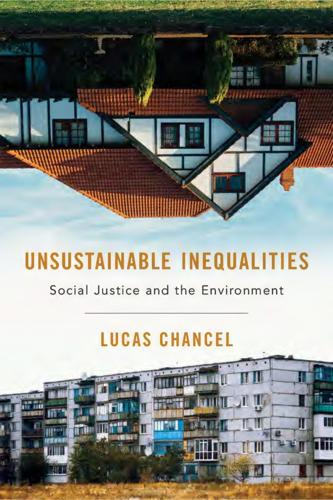
Unsustainable Inequalities: Social Justice and the Environment
by
Lucas Chancel
Published 15 Jan 2020
The Problem of Environmental Responsibility The term Anthropocene was coined to describe the geological era we are living in today, one in which human activity modifies the geoclimatic system, by contrast with previous eras during which only geophysical forces were capable of altering the climate.1 While there is still some controversy among geophysicists regarding the term’s usefulness, it is undeniable that the climate system, under the influence of human action upon it, is being disrupted with stunning rapidity, the like of which was unknown until the present age. The notion of an Anthropocene era therefore has the virtue of directly confronting human beings with their responsibility for the derangement of planetary stability and for its long-term consequences.
…
Gordon Walker and Kate Burningham, “Flood Risk, Vulnerability and Environmental Justice: Evidence and Evaluation of Inequality in a UK Context,” Critical Social Policy 31, no. 2 (2011): 216–240. 21. Hallegatte et al., Shock Waves. 5. Unequal Responsibility for Pollution 1. Simon L. Lewis and Mark A. Maslin, “Defining the Anthropocene,” Nature 519 (2015): 171–180. 2. Nicholas Stern, The Economics of Climate Change: The Stern Review (Cambridge: Cambridge University Press, 2007). 3. Lucas Chancel and Thomas Piketty, “Carbon and Inequality: From Kyoto to Paris; Trends in the Global Inequality of Carbon Emissions (1998–2013) and Prospects for an Equitable Adaptation Fund,” Paris School of Economics, November 3, 2015, http://piketty.pse.ens.fr/files/ChancelPiketty2015.pdf. 4.
…
I am grateful to Marie-Edith Alouf, Dominique Chancel, and Aurore Lalucq for their careful proofreading. My thanks, finally, to my family and friends, to Alexandra for her endless patience, and to Kevin Jamey and Simon Ilse for their inexhaustible energy. INDEX agriculture, 75–77, 86–87 air pollution. See pollution air travel, 98, 136, 165n13 Anthropocene, 90–91 anxiety, 20–21 aquaculture, 76–77 baby boomers, 98–101 behavioral economics, 26–28 border carbon adjustment (BCA), 146 Brazil, 14, 43, 93, 97, 103, 117. See also Rio + 20 summit (2012) BRICS effect, 103 cancer, 78–79, 83 carbon tax, 3; debates on, 33–34, 126–127, 167n19; examples of, 6, 34, 113, 127–129; lack of support for, 146, 156n44, 169n14; progressive forms of, 134–136, 146–147.

How to Do Nothing
by
Jenny Odell
Published 8 Apr 2019
Solnit suggests that the real disaster is everyday life, which alienates us from each other and from the protective impulse that we harbor. And as my familiarity with and love for the crows grows over the years, I’m reminded that we don’t even need to limit this sense of kinship to the human realm. In her essay “Anthropocene, Capitalocene, Plantationocene, Chthulucene: Making Kin,” Donna J. Haraway reminds us that relatives in British English meant “logical relations” until the seventeenth century, when they became “family members.” Haraway is less interested in individuals and genealogical families than in symbiotic configurations of different kinds of beings maintained through the practice of care—asking us to “make kin, not babies!”
…
If, as I’ve argued, certain types of thought require certain types of spaces, then any attempt at “context collection” will have to deal not only with context collapse online, but with preserving public and open space, as well as the meeting places important to threatened cultures and communities. In a time increasingly referred to as the Anthropocene (a geologic era in which the environment is irreversibly shaped by human activity), I find Donna J. Haraway’s term for this era even more useful. She calls it the Chthulucene, in which “the earth is full of refugees, human and not, without refuge.” In Staying with the Trouble: Making Kin in the Chthulucene, Haraway writes, “One way to live and die well as mortal critters in the Chthulucene is to join forces to reconstitute refuges, to make possible partial and robust biological-cultural-political-technological recuperation and re-composition, which must include mourning irreversible losses.”23 With this in mind, when the logic of capitalist productivity threatens both endangered life and endangered ideas, I see little difference between habitat restoration in the traditional sense and restoring habitats for human thought
…
Somewhere between over-engineering and abandonment, Fukuoka found the sweet spot by patiently listening and observing. His expertise lay in being a quiet and patient collaborator with the ecosystem he tended to. Fukuoka’s stance is an example of something that Jedediah Purdy suggests in his book After Nature: A Politics for the Anthropocene. In each subsequent chapter, Purdy shows how the different views of nature throughout history have each corresponded to a set of political beliefs about value and subjecthood, being used to justify everything from hierarchical social orders and racism (“everything in its place”) to an obsession with the productivity of industry.
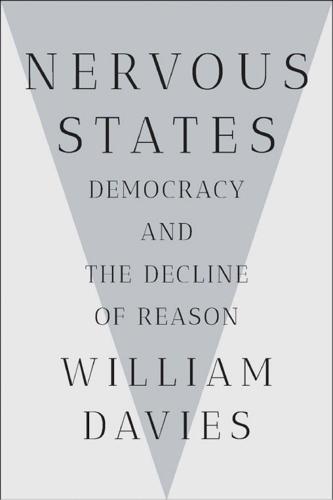
Nervous States: Democracy and the Decline of Reason
by
William Davies
Published 26 Feb 2019
In 2000, the geologists Paul Crutzen and Eugene Stoermer suggested that the earth had entered a new epoch which they christened the “Anthropocene,” as its climate appeared to have changed irreversibly as a result of human (anthropic) activities. The build-up of carbon dioxide in the atmosphere, plastics in the oceans, and production of new radioactive materials contributed to an epochal shift. Aside from the geological significance of such a break, this has deep philosophical and political importance: nature is not something pure and separate from culture, but already bears the stamp of human activity. Others have pointed to 1945 as the key year in the rise of the Anthropocene, as Hiroshima made manifest humanity’s capacity to rapidly destroy their own world.
…
Public debate might descend into irresolvable conflicts, but the intelligence powers of business, computing, and the military expand all the time. The good news is that, at least in terms of technical equipment, we could scarcely be more capable of dealing with the uncertainties and dangers of the Anthropocene. Even if consensus on nature and society seems further off than ever, coordination of responses is still eminently possible. We are endowed with a global information nervous system, allowing us to detect change and react at great speed. An example of this is how financial markets are harnessed as environmental policy tools, with new markets and derivatives in carbon being constructed, in the hope that the sentiments and guessing games of the financial economy will spontaneously steer us toward a sustainable path.
…
has collected written letters from climate scientists describing their feelings about their work. One writes that “It is probably the first time that I have been asked to describe what I feel, rather than what I think” about climate change. The letters frequently include words such as “overwhelmed,” “tired,” “fear,” but also several references to “hope” and “excitement.” The Anthropocene epoch offers a different political role for science, which could connect with the emotions that are otherwise channeled into more tribal forms of politics. Throughout its history, modern science has been vulnerable to the charge that it is aloof, amoral, and oblivious to ordinary people. Science, from this perspective, turns nature into something mechanical, abstract, and distant.

Vertical: The City From Satellites to Bunkers
by
Stephen Graham
Published 8 Nov 2016
Sebald’s Apocalyptic Vision: The World Will End in 2013’, New Statesman, 4 June 2013. 2Pascal Peduzzi, ‘Sand, Rarer Than One Thinks’, Environmental Development 11, 2014, p. 208. 3Simon Price, Jonathan Ford, Anthony Cooper and Catherine Neal, ‘Humans as Major Geological and Geomorphological Agents in the Anthropocene: The Significance of Artificial Ground in Great Britain’, Philosophical Transactions of the Royal Society A: Mathematical, Physical and Engineering Sciences 369:1938, 2011, pp. 1056–84. 4Roger Hooke, ‘On the History of Humans as Geomorphic Agents’, Geology 28:9, 2000, pp. 843–6. 5Gavin Bridge, ‘Material Worlds: Natural Resources, Resource Geography and the Material Economy’, Geography Compass, 3:3, 2009, pp. 1217–44. 6Seth Denizen, ‘Three Holes: In the Geological Present’, in Etienne Turpin, ed., Architecture in the Anthropocene: Encounters among Design, Deep Time, Science and Philosophy, New York: Anexact, 2013, p. 40. 7Price, ‘Humans as Geomorphic Agents’. 8Matt Edgeworth, ‘The Relationship between Archaeological Stratigraphy and Artificial Ground and Its Significance in the Anthropocene’, Geological Society, London, Special Publications 395:1, 2014, pp. 91–108. 9Eric Sanderson, Mannahatta: A Natural History of New York City, New York: Abrams, 2013. 10See Christian Neal MilNeil, ‘Inner-City Glaciers’, in Elizabeth Ellsworth, Jamie Kruse and Reg Beatty, eds, Making the Geologic Now: Responses to Material Conditions of Contemporary Life, New York: Punctum Books, 2013, pp. 79–81. 11Jamie Kruse and Elizabeth Ellsworth, Geologic City: A Field Guide to the Geoarchitecture of New York, New York: Smudge Studio, 2011. 12See Björn Wallsten, The Urk World: Hibernating Infrastructures and the Quest for Urban Mining, Linköping: Linköping University, 2015. 13Björn Wallsten, ‘Urks and the Urban Underworld as Geosocial Formation’, Science, Technology and Human Values, forthcoming. 14James McCarthy and Kate Driscoll Derickson, ‘Manufacturing Consent for Engineering Earth: Social Dynamics in Boston’s Big Dig’, in Stan Brunn, ed., Engineering Earth, Rotterdam: Springer, 2011, pp. 697–713. 15Cited in Pete Brook, ‘The Toxic Landscape of Johannesburg’s Gold Mines’, Wired, 18 June 2014. 16See Martin J.
…
Geologists now estimate that the deliberate shift of material by humans through construction, mining, agriculture and the generation and the movement of materials deemed to be waste now amounts to around 59 billion tonnes a year.2 Startlingly, this total now exceeds the transport of material by the world’s rivers and oceans (22 billion tonnes) by almost 300 per cent.3 Rising levels of urbanisation, extraction, industrial agriculture and construction around the world mean that this figure is growing fast. Little wonder that geologists are on the verge of formally re-labelling our geological epoch – currently the post-glacial Holocene – as the Anthropocene: the age in which human agency shapes land, soil and the very geology of the earth – as well as air, atmosphere, biosphere and ocean – more powerfully than any other ‘natural’ force. Globally, it was estimated that by the year 2000 around 21 tonnes of rock and soil were moved for every one of the planet’s then 6.5 billion humans through agriculture and construction.
…
Like everything else in this apogee of modernity, Manhattan’s flatness was manufactured through wild cycles of speculation and creative destruction.9 Like all major ‘world cities’, in fact, New York can be viewed as a ‘geological hot spot’ – a crucial node in the historic and contemporary human manufacture of local, regional, national and international geology. As an indicator of the ‘geologic turn’ under way in the arts, social sciences and humanities, New York’s Smudge Studio have published a guidebook illustrating how the city is a geologic force of truly global importance within the contemporary Anthropocene period. They trace the distant origins of the materials that make up the city’s pivotal supplies of concrete, steel, road salt, gold reserves, food, energy, water and fossil fuels. They also map the new geologies and landscapes created by the city’s construction industries, demolitions and waste outputs.
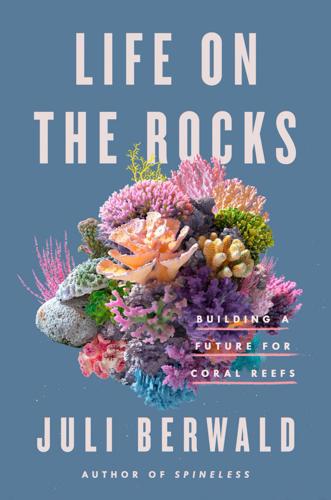
Life on the Rocks: Building a Future for Coral Reefs
by
Juli Berwald
Published 4 Apr 2022
Carilli et al., “Century-Scale Records of Coral Growth Rates Indicate That Local Stressors Reduce Coral Thermal Tolerance Threshold,” Global Change Biology 16, no. 4 (2010): 1247–57, https://doi.org/10.1111/j.1365-2486.2009.02043.x. GO TO NOTE REFERENCE IN TEXT encircled the globe yet again: Table S1, Hughes et al., Supplementary Materials for “Spatial and Temporal Patterns of Mass Bleaching of Corals in the Anthropocene.” GO TO NOTE REFERENCE IN TEXT even without El Niño: Terry Hughes et al., “Spatial and Temporal Patterns of Mass Bleaching of Corals in the Anthropocene,” Science 359, no. 6371 (2018): 80–83, https://science.sciencemag.org/content/sci/359/6371/80.full.pdf. GO TO NOTE REFERENCE IN TEXT In 2015, another blast: CBS News and Associated Press, “Coral Bleaching Crisis Spreads Worldwide—and It’s Getting Worse,” CBSNews.com, October 8, 2015, https://www.cbsnews.com/news/coral-bleaching-crisis-spreads-worldwide/.
…
Discover, March 19, 2019, accessed March 4, 2021, https://www.discovermagazine.com/the-sciences/how-do-we-define-a-species. GO TO NOTE REFERENCE IN TEXT already risen by a degree: M. A. Alexander et al., “Projected Sea Surface Temperatures over the 21st Century: Changes in the Mean, Variability and Extremes for Large Marine Ecosystem Regions of Northern Oceans,” Elementa: Science of the Anthropocene 6 (2018): 9, https://www.elementascience.org/articles/10.1525/elementa.191/. GO TO NOTE REFERENCE IN TEXT rise by three feet: Rebecca Lindsey, “Climate Change: Global Sea Level,” NOAA Climate.gov, January 25, 2021, https://www.climate.gov/news-features/understanding-climate/climate-change-global-sea-level.
…
GO TO NOTE REFERENCE IN TEXT In 1987 it was the Caribbean: William Steif, “Experts Are Puzzled by Widespread Coral ‘Bleaching’ in Caribbean,” The New York Times, December 15, 1987, https://www.nytimes.com/1987/12/15/science/experts-are-puzzled-by-widespread-coral-bleaching-in-caribbean.html. GO TO NOTE REFERENCE IN TEXT Maldives and Costa Rica: Terry P. Hughes et al., Supplementary Materials for “Spatial and Temporal Patterns of Mass Bleaching of Corals in the Anthropocene,” Science 359, no. 6371 (2018), https://science.sciencemag.org/content/sci/suppl/2018/01/03/359.6371.80.DC1/aan8048_Hughes_SM.pdf. GO TO NOTE REFERENCE IN TEXT in 1991, Thailand and Tahiti: “Science: Is Coral Bleaching Caused by Global Warming?” New Scientist, August 16, 1991, https://www.newscientist.com/article/mg13117823-600-science-is-coral-bleaching-caused-by-global-warming/.
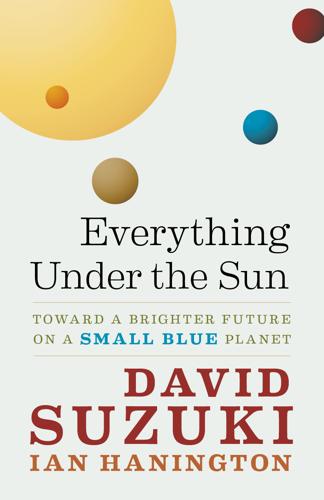
Everything Under the Sun: Toward a Brighter Future on a Small Blue Planet
by
Ian Hanington
Published 13 May 2012
We have become a new kind of biological force that is altering the physical, chemical, and biological properties of the planet on a geological scale. Indeed, Nobel Prize–winning chemist Paul Crutzen has suggested that the current geologic period should be called the Anthropocene epoch to reflect our new status as a global force—and a lot of scientists agree. As noted in an article in the Economist, “Welcome to the Anthropocene,” we are altering the earth’s carbon cycle, which leads to climate change, and we have sped up the nitrogen cycle by more than 150 per cent, which has led to acid rain, ozone depletion, and coastal dead zones, among other impacts.
…
In the past, it took centuries or even millennia to fully exploit a technological breakthrough, but modern technology, fuelled by cheap energy, exploded in the twentieth century. Machinery, driven by fossil fuels, has amplified our muscle power to a point where we are altering the physical, chemical, and biological features of the planet on an unprecedented scale. Some scientists have even proposed calling this the Anthropocene epoch, a time when human beings have become a geological force. We’re starting to realize, however, that although our technologies are powerful, our sense of control is often illusory; the application of brute power to bludgeon nature into apparent submission often has unexpected costs. Examples of the negative consequences of our great innovations are numerous: the pesticide DDT, splitting the atom, chloro-fluorocarbons, phosphate fertilizers, and, of course, harnessing the energy of fossil fuels.
…
—IH Index Numbers refer to pages in the print edition Aboriginal peoples, 23, 29, 183 Aesop’s fables, 256 Aflockalypse, 37–39 agribusiness, 178–79 agriculture, 179–82, 237–38, 255 Alberta, 23, 54, 67, 70, 74–77, 81–82, 83–86 alien species, 25–27 Amazon rainforest, 256 amphibians, 11–14 Anderson, Ray, 94–95 Antheil, George, 98 Anthropocene epoch, 93, 244 anthropocentrism, 103 anti-greenies, 239–41 aquaculture, 194–97 automobiles, 40–41, 44–45, 51–55, 219 bacteria, bedrock, 84, 146 bailouts, financial, 107–9 Baliunas, Sallie, 132 Banff Springs snail, 33 basking sharks, 173–75 Basking Sharks: The Slaughter of B.C.’s Gentle Giants (Wallace and Gisborne), 174 BBC, 166–67 bears, 7, 10, 28–29, 34 Beaufort Sea, 38, 165 bees, 17–19, 112 Benyus, Janine, 93–94 Bernal, Patricio, 160 berries, 112, 182–84 bicycling, 44, 46–48, 49–51 biocapacity, 89 biocentrism, 102 biodiversity, 9–11, 26, 139, 216 Biological Conservation, 14 biomimicry, 93–95 biophilia, 222 bitumen, 67–70 Blaser, Martin J., 204 blueberries, 112, 183–84 bluefin tuna, 199–201 boreal forest ecosystems, 22–24, 69, 183, 216 bovine growth hormone, 178 BPA (bisphenol A), 96 Bretton Woods, New Hampshire, 103–4 British Columbia. see also Vancouver, British Columbia: basking sharks, 174; bees, 112; caribou population, 15, 22–23; Hydro, 143; ocean management, 164; renewable energy moratorium, 142; salmon, 195–96; sardine fishing, 198; spotted owl habitat, 111; Transmission Corporation, 143; trophy hunt, 28–30 British Petroleum (BP), 70, 72, 76, 77 Budescu, David, 128–30 butterflies, 19–21 Canada: Atlantic, 10; bicycle use, 48; carbon capture and storage (CCS), 83–86; carbon dioxide, 44–45; caribou, 21–25; Department of Fisheries and Oceans (DFO), 164; Environment Canada, 26, 147; Fisheries and Oceans, 33; forest protection, 111, 216–17; genetically modified (GM) foods, 185; Health Canada, 96, 207; North Atlantic right whales, 32–34; nuclear power, 60; petro dollar, 73; science and politicians, 96–97; waste and recycling, 41–42 carbon: capture and storage (CCS), 83–86, 161; offsets and global warming, 117–19; sinks, 137–38; stewardship, 140–41; taxes, 119–21, 250 carbon dioxide, 44–45, 84, 137–38, 158, 159–60 car-centric urban areas, 40–41, 44–45 Carey, John, 147 caribou, 15, 21–25, 88 Carson, Rachel, 144, 223–24 CFCs (chlorofluorocarbons), 85, 127, 144, 149, 150, 235, 253 Chappell, Michael Jahi, 180 chemicals, 155–56 Chernobyl, 59–60 childhood lessons, 263–65 children, environment and, 228–30 children, outdoor activity, 221–23 children, schools, 223–25 children, teaching to be well, 225–28 China, 48, 54, 55 Christmas, 258–61 chytrid (fungus), 12–13 city dwelling, 43–46 climate change: carbon capture and storage (CCS), 83–86; caribou populations and, 23; city dwelling and greenhouse gases, 43–44; conspiracy to deny, 135–37; costs of, 108–9; economic madness, 122–24; human caused, 130–33, 152; mammal extinction and, 7; marine life, 155–57; oceans and, 160; science, 97–98; science and threat of, 128–30; species extinction, 38–39; technology fixes, 144–46; water and, 146–48 “Climategate,” 97, 132, 133 coal mining, 115 coffee, 189–92 Coleman, Eliot, 180–81 Collapse (Diamond), 245 Committee on the Status of Endangered Wildlife in Canada (COSEWIC), 171, 175 Condon, Patrick, 44–45, 45 consumer culture, 41, 156, 250, 259 Conway, Erik, 150 coral reefs, 158 corporate change, 173 cosmetics industry, 208–9 Coulter, Lindsay, 260 cruise ship industry, 168–70 Crutzen, Paul, 244 Cuccinelli, Kenneth, 97 Cullis-Suzuki, Severn, 226, 229–30 cycling. see bicycling David Suzuki Foundation, 33, 110, 120, 167, 189, 193, 209 Davis, Wade, 247 DDT, 85, 144, 178, 253 Deacon, Gillian, 209 DeChristopher, Tim, 74–76 Deepwater Horizon, 57, 72, 76, 79 Dene Nation, 24 deniers, 133–35, 151–53, 240 Diamond, Jared, 245 diethyl phthalate (DEP), 206–7 dinosaurs, 254 Earle, Sylvia, 167 earthquake crisis, Japan, 57–58 Earth Summit, 226, 229, 246 ecological footprint, 89, 237 economic crisis, 81, 105, 113, 219 economic growth, 104–7, 236 economic paradigm, 102–4 economy, 114–17, 122–24 ecosystem, 16, 34, 110–13, 157–59, 161–66, 203–5. see also ocean ecosystem ecotourism industry, 29 Enbridge, 77 energy, 44, 61–64, 64–66, 141–44, 263 environment. see also ecosystem; wildlife: children and, 228–30; crisis, 122–23; economy and, 114–17; green, being, 248–51; learning, 225; perceptions of, 246–48; protection, 125, 192–94, 203–5 environmentalists, 231, 239–40, 241–43 Ethical Oil (Levant), 69 European bailouts, 107–8 European Commission, 60–61, 206 European Union, 48, 117, 207 evolutionary change and hunting, 31 exercise, 227 extinction, 7–9, 11–14, 36, 37–39, 139, 155–57 Exxon Mobil, 70, 78, 131, 132 fables, 256–58 farmed seafood, 194–97 farming, 179–82, 189, 237–38 Fellmann, Andy, 50 financial bailouts, 107–9 First Nations, 24, 28, 70, 81–82, 111, 165, 182, 217 fisheries management, 174–75 fishing, 10, 31, 155, 162, 255 Flannery, Tim, 245 food, vegetables, 177–79 food production, local, 187–89 “Food Security and Biodiversity: Can We Have Both?”
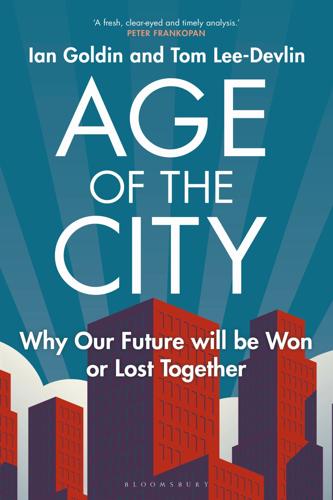
Age of the City: Why Our Future Will Be Won or Lost Together
by
Ian Goldin
and
Tom Lee-Devlin
Published 21 Jun 2023
However, as automation undermines the economic advantage provided by cheap labour, it looks increasingly unlikely that economies that are still early along the development path will be able to follow past labour-intensive models of growth. We will explore what the future of economic development might look like for these countries, as well as the consequences if they fail to create a sufficient number of good jobs for their growing populations. The Perils of the Anthropocene Cities – by unleashing humankind’s potential for cooperation, specialization and invention – have made us masters of the earth. Yet our fate is still fundamentally tethered to the natural world, and our actions are putting that relationship in danger. The first cities did not emerge until a period of relative environmental stability for our planet known as the Holocene.
…
A mild and stable environment created the necessary conditions for Homo sapiens to transition from hunting and gathering to agriculture. With time, we became more productive farmers, which eventually made it possible for the first urban dwellers to untether themselves from toiling the land and gather together in cities. Now, the Holocene is being replaced by the Anthropocene, as a growing population and rising living standards are together straining the limits of our planet and undermining the foundation upon which the success of our species has thus far depended. It is beyond dispute that human-induced climate change is accelerating. In the last 50 years alone the global average surface temperature has risen by about 1 °C,26 the Arctic sea ice minimum has shrunk by 35 to 40 per cent,27 and the frequency of natural disasters has increased five-fold.28 We are simply doing too little too late to reduce greenhouse gas emissions.
…
Chapter 8 – The Spectre of Disease 1 Jedwab, R., et al., 2019, ‘Pandemics, places, and populations: evidence from the Black Death’, CESifo Working Paper. 2 Roos, D., 2020, ‘Social distancing and quarantine were used in medieval times to fight the Black Death’, History.com. 3 Jedwab, et al., ‘Pandemics, places, and populations’. 4 Eyewitness to History, ‘The Black Death, 1348’ (eyewitnesstohistory.com). 5 Bray, R., 2020, Armies of Pestilence: The Impact of Pandemics on History (Lutterworth Press). 6 Ibid. 7 Ibid. 8 Ibid. 9 Kenny, C., 2021, The Plague Cycle (Simon & Schuster). 10 Greger, M., 2007, ‘The human/animal interface: emergence and resurgence of zoonotic infectious diseases’, Critical Review in Biology, Vol. 33, No. 4. 11 The Economist, 2021, ‘The pandemic’s true death toll’. 12 For a full discussion of the impact of the Covid-19 pandemic, see Goldin, I., 2022, Rescue: From Global Crisis to a Better World (Sceptre). 13 Kharas, H. and Dooley, M., 2021, ‘Long-run impacts of Covid-19 on extreme poverty’, Brookings Institution (brookings.edu). 14 Sánchez-Páramo, C., et al., 2021, ‘Covid-19 leaves a legacy of rising poverty and widening inequality’, World Bank (worldbank.org). 15 Kharas and Dooley, ‘Long-run impacts of Covid-19 on extreme poverty’. 16 UN Women, 2022, Ukraine and the food and fuel crisis: 4 things to know, unwomen.org. 17 Hayward, E., 2021, ‘Covid-19’s toll on mental health’, Boston College (bc.edu). 18 The Economist, 2022, ‘Covid learning loss has been a global disaster’. 19 World Bank, UNESCO and UNICEF, 2021, ‘The state of the global education crisis: a path to recovery’ (worldbank.org). 20 The Economist, ‘Covid learning loss has been a global disaster’. 21 Ibid. 22 Harper, K. and Armelagos, G., 2010, ‘The changing disease-scape in the third epidemiological transition’, International Journal of Environmental Research and Public Health, Vol. 7, No. 2. 23 Kenny, The Plague Cycle, p. 177. 24 World Bank Data, 2022, ‘Air transport, passengers carried’ (data.worldbank.org). 25 Davenport, R., 2020, ‘Urbanization and mortality in Britain, c. 1800–50’, The Economic History Review, Vol. 73, No. 2. 26 O’Neill, A., 2022, ‘Child mortality rate (under five years old) in the United Kingdom from 1800 to 2020’, Statista (statista.com). 27 Kenny, The Plague Cycle. 28 Ibid. 29 Ibid. 30 Jones, K., et al., 2008, ‘Global trends in emerging infectious diseases’, Nature, Vol. 451. 31 Morand, S. and Walther, B., 2020, ‘The accelerated infectious disease risk in the Anthropocene: more outbreaks and wider global spread’, Working paper. 32 Centers for Disease Control and Prevention, 2021, ‘Zoonoses’ (cdc.gov). 33 Greger, ‘The human/animal interface’. 34 Ibid. 35 UNFAO, 2022, ‘State of the world’s forests’ (fao.org). 36 Young, R., 2014, ‘Take bushmeat off the menu before humans are served another Ebola’, The Conversation (theconversation.com). 37 Cawthorn, D-M. and Hoffman, L., 2015, The bushmeat and food security nexus: A global account of the contributions, conundrums and ethical collisions, Food Research International, Vol. 76. 38 Maxmen, A., 2022, ‘Wuhan market was epicentre of pandemic’s start, studies suggest’, Nature.com. 39 Kenny, The Plague Cycle. 40 Smitham, E. and Glassman, A., 2021, ‘The next pandemic could come sooner and be deadlier’, Center for Global Development (cgdev.org). 41 Barnes, O., 2022, ‘Just where and when will the next pandemic strike?’
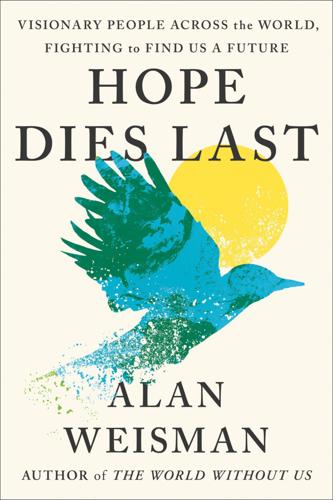
Hope Dies Last: Visionary People Across the World, Fighting to Find Us a Future
by
Alan Weisman
Published 21 Apr 2025
Of more than 900 lawsuits they’ve filed under one of the world’s most powerful environmental laws, the US Endangered Species Act, they’ve won nearly 90 percent, protecting more than 700 imperiled species ranging from slugs to polar bears. Since they do this, however, in the teeth of a major global extinction event, winning courtroom battles doesn’t guarantee winning the war for survival. What many scientists now call the Anthropocene, the epoch when human presence grew so prodigious that we’ve literally become a geologic force, may prove one of Earthly history’s shortest if we end up a victim of that war. The version of nature that emerged from the debris of the last major extinction, after an asteroid abruptly ended the 180-million-year reign of big reptiles, included a shrewlike survivor named Purgatorias, which evolved into primates and eventually ourselves.
…
Bentley, Angus Atkinson, Thomas J. Bracegirdle, Peter Convey, Bethan Davies, Rod Downie, et al. “Antarctic Extreme Events.” Frontiers 11 (2023). https://doi.org/10.3389/fenvs.2023.1229283. Steffen, Will, Johan Rockström, Katherine Richardson, Timothy M. Lenton, et al. “Trajectories of the Earth System in the Anthropocene.” Proceedings of the National Academy of Sciences 115, no. 33 (August 14, 2018): 8252–8259. www.pnas.org/cgi/doi/10.1073/pnas.1810141115. Ucak, Ayhan. “Adam Smith: The Inspirer of Modern Growth Theories.” Procedia—Social and Behavioral Sciences 195 (July 3, 2015): 663–672. https://doi.org/10.1016/j.sbspro.2015.06.258.
…
Nature 570 (September 26, 2019): 504–508. https://doi.org/10.1038/s41586-019-1260-x. Baskerville Willy. “Molly’s Gonna Save the World.” Song written and sung by Bill Rutherford. https://jahnresearchgroup.net/what-we-do/190-2. Bryce, Emma. “A New Discovery Could Unleash the Full Potential of Switchgrass for Making Biofuel.” Anthropocene, March 10, 2023. https://www.anthropocenemagazine.org/2023/03/a-new-discovery-could-unleash-the-potential-of-switchgrass-for-making-biofuel. D’Agati, Caroline. “5 DARPA Inventions That Changed the World.” ClearanceJobs, July 13, 2019. https://news.clearancejobs.com/2019/07/13/5-darpa-inventions-that-changed-the-world.

The Toaster Project: Or a Heroic Attempt to Build a Simple Electric Appliance From Scratch
by
Thomas Thwaites
Published 27 Sep 2011
Over the next couple of days a strong vinegar smell percolates through the house, and I watch with mounting unease as my plastic cracks up as it dries. Another failure. London to Manchester, 173 miles This situation requires some lateral thinking. In the discipline of geology, a debate is currently raging over whether or not to declare the beginning of a new epoch—the Anthropocene—a geological age of humanity’s own making. This would be quite a big deal in geological circles, as epochs don’t begin every year—generally more like every few million. The reason a new one is being considered is that geologists in the far future, without any knowledge of our civilisation, would notice sharp changes in the strata of rock that are being laid down today.
…
A sudden increase in radioactivity would be detected—left over from the two thousand or so nuclear weapons we’ve exploded since 1945, and “new” molecules would be found in ice cores and rocks, molecules from plastics. Just as rocks have been laid down during previous epochs, could it not be argued that equivalent rocks are being laid down in the Anthropocene, and that some of these rocks happen to be made of polypropylene, for instance? If I can mine iron ore, can I not “mine” some of this nascent plastic rock at a dump? I admit that it’s a stretch, but they’re my rules and I’ll break them if I want to. Axion Recycling is an SME (small-to-medium-sized enterprise) located in Manchester.
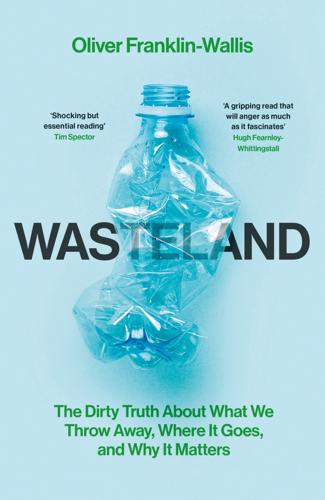
Wasteland: The Dirty Truth About What We Throw Away, Where It Goes, and Why It Matters
by
Oliver Franklin-Wallis
Published 21 Jun 2023
Spend enough time on a dump, I have found, and waste starts to blend together, the way clouds do, until it is not many things but one thing – a foul, abstract mass. Looking at it, I’m reminded of class geography trips as a child, visiting cliffs and marking off epochs in the geological strata. This one might be marked Anthropocene. We climb. The waste on the lower levels, compressed by weight and time, feels firm, but on the slopes it is loose and unpredictable, scree-like. Trash crunches loudly underfoot. ‘It takes time to fill in, so that it becomes solid,’ Anwar explains. During the wet season, rainwater trickles down between the waste, forming subterranean flows that can carve off larger sections, triggering landslides.
…
Looking at it, I’m reminded of the story of a group of oceanographers who, in 2006, discovered marine debris washed up on the beach of Hawaii, bound together by bright seams of molten plastic.61 To describe this new material, the scientists coined the term ‘plastiglomerate’. The plastic was likely trash that had been burned on camp fires, and coalesced around the matter on which it was dumped. The researchers speculated that plastiglomerate will likely one day enter into the geological record as a marker of the Anthropocene. Waste as time capsule. We were here. At the final step in the process, the newly recycled nurdles are cooked in two large silos for eight hours. ‘That bakes out any volatiles,’ Chris says. Underneath the silos, the nurdles are collected in sacks. Unlike the rainbow-like flake they’re flat and grey, the colour of concrete.
…
Should Onkalo in fact survive in 100,000 years, the risk to whoever might discover its remains will not be much greater than getting a CAT scan. After a few million, the risk will be indistinguishable from background radiation. Even so, traces of the nuclear waste left behind will still be evident in the geological record billions of years from now, as perhaps the most enduring marker of the Anthropocene. * * * My Sellafield tour is over, and so we drive back to the farmhouse, talking about Onkalo. Lately, there is renewed hope that the UK is getting close to securing its own geological disposal facility. In 2019, the government announced it was resuming plans to finally build one; at the time of writing, several sites are currently being considered, including two in Cumbria, not far from here.
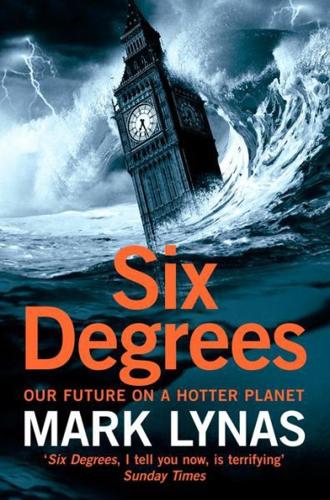
Six Degrees: Our Future on a Hotter Planet
by
Mark Lynas
Published 1 Apr 2008
Places which would normally experience a temperate climate became subtropical, and a fascinating array of species spread across the globe. But don't be deceived. The world in a natural state can never be a perfect analogue for the globe as it exists now. We are already well into a new geological era, the Anthropocene, where human interference is the dominant factor in nearly every planetary ecosystem, to the detriment of perhaps all of them. The rising heat of the Palaeocene-Eocene Thermal Maximum took place over about 10,000 years, giving plants and animals time to migrate and adapt to the new circumstances.
…
Nor am I suggesting that the prospect of methane fireballs tearing across the sky is remotely likely in today's world-it is merely one of many theories that have been advanced to explain the end-Permian die-off, and as such may hint at the worst the greenhouse Earth can sometimes do to its inhabitants. On the other hand, there are some aspects of today's global warming crisis which are especially worrying, even when contrasted with the horrors that struck the world at the end-Permian. An extinction event-tentatively titled the Anthropocene Mass Extinction-is already under way, largely independently of global warming. With so many plants and animals drastically reduced and forced onto the margins of survival, the natural world is already less resilient to change than would have been the case in the late Permian. Consider our cousins the great apes, so small in number now that more human babies are born every day than the entire global population of gorillas, chimpanzees and orang-utans put together.
…
acid rain 171, 228, 230, 249 adaptation 94, 103, 196, 208-9, 220, 235 Afifi, Abdulkader 268 Africa 120 agriculture 89-90, 157-8, 173, 195 ancient 108, 220 disease 151-3 drought 22, 101-5, 173, 194 famine 112, 113 glacial retreat 13-18 monsoon 20-1, 52 rainfall 21-2 refugees 159 refuges 210 Agassiz, Lake 10 agriculture xv, 176, 261 abandonment 8, 174, 211 Africa xv, 89-90, 157-8, 173 Arctic 131 Australia 112, 124, 173 Central and South America 82, 85, 89, 134, 173 China 172-3 decline in 90-1, 157, 172-5, 196 drought-resistant crops 174 Europe 59-60, 62, 89 ‘firestick farming’ 122 growing season, extended 131, 158, 196 harvest failure 13, 113 India 78-9, 137, 173, 174 intensive 195 irrigation 8, 58, 82, 86, 140, 144, 159, 197 new areas 157, 186-7, 196, 197 North America 5-9, 88-9, 90, 143-4, 158-9, 173 Pakistan 139-41 refuges 210 slash-and-burn 120 UK 89, 210-11 worldwide agricultural drought 173-4 air-conditioning 59, 62, 178 Alaska 25, 221 meltdown 25-6, 75, 131, 187 North Slope fossils 219, 221 rainfall 129, 193 Alexandria, Egypt 163-5, 167 algae 34-5, 37, 58, 224 Algeria 19-20 Alley, Richard 68 Alps xv, 29-31, 58, 150, 177, 180-1, 246 Amazon River 119 Amazonia 32-3, 153, 175 death of 115-21, 190, 209, 252 deforestation 119-20 desertification 194, 209 drought 112, 115, 116, 173 American Association for the Advancement of Science 204 American Geophysical Union 69 Andes 80-5, 108, 115, 119, 238 Angola 104, 105 animals see wildlife Antarctic Ocean 199-200 Antarctica 67, 176 ancient 108-9, 220, 222, 228 coal 222 ice-free 211, 220 ice sheets 64, 71, 146, 167-70 Anthropocene 208, 235 aquifers 8, 53, 158, 166, 170, 194-5 Archer, David 205, 206 Arctic 10, 66, 128-31 agriculture 196 amplifier 24, 76, 189 ancient 109-10, 198-9, 203 ice-free 25-7, 109-10, 130, 170, 186, 203, 220 meltdown 23-8, 66-73, 186-90, 246 peoples 76-7 vegetation 76 wildlife 33, 72-7, 187 Arctic Climate Impact Assessment 75 Arctic Ocean ancient 199, 219, 249-50 freshwater run-off 188 methane hydrate melt 205-6 sea-ice xx, 72-7, 129, 186-7 Argentina 194 Asian Brown Cloud 136 Atacama Desert, Peru 113 Atlantic Ocean: ancient 201, 218, 219 circulation 9-13, 110, 176 freshwater run-off 10-11 hurricane formation 42-6 North 69 tropical 22 Atlas Mountains, Morocco 180, 181 atmosphere 128-9, 234-5, 236-7 ancient 202-5, 222, 225, 230-1, 249-50 atolls 16, 46-7 Australia 31-8, 95, 211 agriculture 112, 124, 173 bushfires 122-5 coal 221 desertification 194 drought 112, 113, 173, 194 Australian Conservation Foundation 123 avalanches 180 submarine 201, 206-8 Axel Heiberg Island, Canada 203 Baker, Andrew 37 Bakun, Andrew 238 Banda Aceh 207 Bangkok, Thailand 72 Bangladesh 79, 132, 135, 137, 165 Barbados 166 Barrow, Alaska 25 Beever, Dr Erik 40 Bennike, Ole 109 Benton, Michael 230-1 Bhopal, India 238 Bighorn Basin, Wyoming 199 biodiversity 33-4, 91-7, 154-6, 198, 213, 234, 240, 252 Amazon 119 China 171 marine 154 plants 39 under threat 18, 41 biofuels 274-6 Biosphere 2 97 birds 75, 77, 92, 94, 95, 120, 155 Black Sea 237 bogs, thawing 188-9 Bolivia 84, 121 Bombay see Mumbai Boston, USA 165 Botswana 90, 101-5, 151 Bowman, Malcolm 147 Brahmaputra River 138, 193 Brazil 42, 43, 44, 95, 120, 121, 194 desertification 194 hurricanes 42-4 rainforest 120 Brigham, Lawson 189 British Antarctic Survey 110, 167 British Council 14 British Virgin Islands 38 Broe, Pat 72 Bryden, Professor Harry 11, 12 Buffett, Bruce 205, 206 Bunyard, Peter 119 Burke, Eleanor 22 Burkina Faso 90 Bush, George W. 264 bushfires, Australia 122-5 butterflies 92, 93, 95 Cairo, Egypt 195 calcium carbonate 34, 53-6, 221 Caldeira, Professor Ken 54 California 3-5, 8-9, 85-8, 115, 142, 144-5, 195 California Coastal Range 87 Cameroon 232 Camill, Phil 188, 190 Canada xvii, 131, 188, 196 agriculture 90, 144, 158, 174, 196, 197 ancient 7 arctic 76, 131, 187 forest fires 197 fossil fuels 73, 221, 269 habitable areas 196, 197 rainfall 129 river flows 193, 196 Canberra, Australia 124-5 Cape Floristic Region, South Africa 39 carbon 96, 117, 205, 221-2, 267, capture and storage 271, 273, 276 carbon cycle 56, 116, 117-19, 190, 220-2, 225, 227, 250,254-5, 256 carbon trading 257 dissolved 188-9 release from seabed 202 release from soil 117-18, 188, 250-1 sequestering 175, 221-2, 223 carbon dioxide xix-xx, 89, 96-7, 252-3 ancient atmosphere 110-12, 203-4, 220, 225, 229, 230, 233, 249-50 and climate sensitivity 248-9 emissions 78, 131, 204, 234-6, 246-7 fertilising effect of 174 from fires 197, 203 ocean acidification 53-6 plant emissions 60 volcanic outgassing 232, 233, 235 Caribbean 38, 113 Carboniferous period 234 Carnegie Institution 54 cars 172, 271, 272, 276 Carson, Rachel 95-6 Cascades, USA 87 Caspian Sea 178 cattle ranching 8, 19, 102, 103, 119, 184 Cayman Islands 63 Central America 82, 83-4, 85, 89, 133-5, 173 Chaco Canyon, New Mexico 5-6 Chad, Lake 20 Chernobyl 176 Chile 89, 194, 211 Chilingarov, Artur 73-4 Chimu civilisation 82, 83 China xxii, 140, 197, 218 coal 221 conflict 197 desertification 197 droughts 51-3 early civilisation 172-3 emissions 257, 258, 264 floods 112 forests 155 hypercapitalism 170-5 monsoon 52-3, 193, 209 water supply 140, 194 civilisations, collapse of 82-3, 131-5, 174-5 climate change xix-xx, 6, 10-11 ancient 15-16, 23, 197-206 conferences on 14 denial 14, 16, 262-5 modelling xv, 105-7, 194-6, 217, 248-51 speed of xxi, 235-6 transient xxi-xxii climate sensitivity 248-50, 252-3 climate zones, shifting 27-8, 123, 129 climatic envelope 94 clouds 107, 114, 125, 175 coal 221, 222, 226, 234, 262, 269, 271 coasts 72, 76, 145-8, 183, 184-5, 193 coccolithophores 54-5, 56 Collapse: How Societies Choose to Fail or Survive (Diamond) 134 Colorado River, USA 6, 86, 142-5, 167 Columbia 121 Columbia River, USA 87 Comiso, Josefino 75 computer modelling 12, 22 carbon-cycle feedback 116-18 climate xv, 105-7, 194-6, 217, 248-51 El Niño 113-14 global and regional models 106 Hadley Model 39, 59, 105-6, 134 hindcasting 104, 106 hurricane 128 hydrological 139 sea temperature 110 conflict 6, 212-14 over climate refugees 141, 159, 179 over habitable land xxii, 197 over oil 268-9 over water xxii, 85, 86, 141 conservation, site-based 94 continental climates 198 continental drift 218 continental shelf 237 collapse of 201, 206-7 contraction and convergence 257 Cooke, Jennifer 184, 185 cooling: aerosols 135 north-west Europe 9, 12, 211 nuclear winter xviii, 125, 233 Younger Dryas 10 coral: bleaching 34-9, 154-5 reefs 34-9, 42, 63, 91, 154-5, 209, 220, 246 Coral Coast, Fiji 38-9 Cordillera Blanca, Peru 81-2, 84 Cordillera Central, Peru 83-4 Cornwall 28 Costa Rican golden toad 40-1 Cox, Peter 117, 273-4 Cretaceous 56, 200, 217-23, 236, 250 Crump, Marty 40-1 CSIRO 33-4, 122-3 cyclones see hurricanes Cyprus 62 dams 86, 142-3, 167, 196 Dante xviii, 217, 245-6 Danube River 181 Dasuopu, Tibet 14 Dawson, Mary 197, 198 Democratic Republic of Congo 16 Day After Tomorrow, The 9 deforestation 14, 175-6, 247 Amazonia 119-20 Central America 134 deforestation diesel 276 deglaciation see glaciers denial 14, 16, 262-5 Denmark 73, 149 Department for Environment, Food and Rural Affairs (UK) 78 Department for International Development (UK) 139 desalination plants 178 desert: Amazonia 115, 116 Europe 58, 60, 62, 150, 194 Kalahari Desert 102, 103-4, 105, 194 Marine 224 Mediterranean rim 150-1 North America 3-9 Polar 67 Sahara 21-2, 23, 61, 120, 151, 180, 186, 194, 195, 224 sandstorms 224 spreading 150-1, 186, 194-6, 209, 246 Diamond, Jared 133-4 Dickens, Gerald 200, 204 disease 123, 151-3, 158 drought 60, 193 Africa 101-5 and agriculture 157, 173-4 Amazonia 112, 115, 116, 173 ancient 16, 133-4 Australia 112, 113, 173, 194 Central America 83-4, 133-5 China 51-3 ENSO-related 113 Europe 58, 60, 62, 150, 194 extreme 4, 23 hotspots 173-4 Mediterranean 62-3 Palmer Drought Severity Index 22-3 perennial 194, 209 Sahel 18-19, 22-3 spread of 22-3 threat to woodland 94 UK 177-8, 182 US 3-9, 60, 86-8, 129, 143, 142-5 Doyle, Arthur Conan 153, 154 Dudh Koshi River 80 Dukes, Jeffrey 260, 265-6 dust storms 9, 51-2 Dust Bowl 7-8, 9, 88, 144, 194 Earth: thermal time lag 246, 251 thermoregulation systems 176 earthquakes 207 ecological overshoot 134 economics 170-2 ecosystems 91-7, 175-6, 222-3, 240, 261 Arctic 187 Wet Forest 31-4 Ecuador 84, 89 Eemian interglacial 52, 63, 64 Egypt 19, 195 El Niño 83, 112-15, 224 Ellesmere Island, Nunavut 25, 109, 197-8 Emanuel, Kerry 45, 46 emissions 113, 258, 259 contraction and convergence 257 cuts in 124, 246, 253-9, 276-7 future scenarios 247-8 India 77-8 permits 257 rate of 56, 246, 259 stabilising 276-7 targets 251-9 see also greenhouse gases energy: efficiency 271, 272-3, 275-6 renewable 258, 267-70, 271-7 ENSO 113, 114, 115 Environmental Research Letters 71 Eocene 198, 199, 203-4, 208, 209 see also Palaeocene-Eocene Thermal Maximum erosion: coastal 76, 145-8, 183, 184-5, 193 hillside 134 soil 170, 184-5, 202, 203, 214, 227-8 Estonia 59 ethanol 275 Ethiopia 18, 90, 108, 194, 210 Europe: agriculture 59-60, 62, 89 ancient 218, 220 cooling 9, 10, 11-12 desertification 150, 177-8, 186 drought 58, 60, 62, 150, 194 El Niño effect 113 extinctions 95, 156 floods 148-51, 182-4 heatwaves 57-61, 62, 177-9, 180-2 hurricanes 44-5 rainfall 62, 177 refuges 159 storms 148-51 temperature rise 175-9, 186 wildfires 62 European Union 256, 276 Everest, Mount 138, 139 extinctions 33, 39-41, 76, 77, 86, 91-7, 208 Anthropocene Mass 235 end-Permian 226-34 Paleocene-Eocene 208-10 human 240 living dead species 156 marine 208-10, 224, 225-6, 229, 233, 234 mass 56, 92, 157, 201, 224, 226-34, 235 plant 39, 76, 77, 91, 93-4, 155, 228 Fahnestock, Mark 69 famine 88, 89, 90-1, 103, 158-9, 213 Africa 112, 113 India 78-9 mass 174 Sahel 18 Faroe Islands 207 feedbacks 190, 252, 255 carbon-cycle 60-1, 116-19, 190, 245, 250, 255 desertification 194 ice-age 255 ice-albedo 28, 70-1 methane 188-90, 202, 204-6 Fiji 38-9, 166 Finland 177 flood barriers 147, 148, 165 flooding: Africa 151 atolls 46-7 coastal cities 145-8, 164-7, 193, 211-12 continental interiors 193, 218 Europe 148-51, 182-4 flash floods 5, 23, 146, 180, 203, 230 monsoon see monsoon post-ice age 66; storm surge see storm surge UK xiii-xiv, 148-51, 182-4, 193-4 USA xiv, 115, 145-7, 158, 165-6 food 88-91, 140-1, 166, 172, 213 aid 210 prices 8, 91, 158, 275 production 210, 261-3 shortages 134, 140-1, 158, 174, 186, 275 web, Arctic 75 see also agriculture Ford, Derek 63 forest 262 ancient 229 boreal 197 carbon emissions 60 deforestation 119-20, 175, 176, 247 die-back 60, 78 montane 17-18 polar 187, 208, 220 reforestation 272 US West 144 forest fires 17, 61-2, 122-5, 197, 203 Amazonia 120-1 Asian 276 Australia 122-5 Europe 58, 59, 61-2 Indonesia 118-19, 121, 136-7 North America 4, 87-8, 144-5 fossil fuels 73, 78, 171-2, 221, 222, 223-6, 261, 267-70 France 58, 62, 149, 177 Francis, Jane 108, 110 freshwater surges 10-11 Frey, Karen 188-9 Friends of the Earth 256 frogs 31-4, 40-1 frost 89, 219 fungi 228 Gabon 90 Gaia Theory 176, 221, 240 Ganges, River 138, 140, 141, 193, 211 gas, natural 7, 73, 222, 260, 261, 268, 269, 271, 272, 276 Gazprom 73 Geology 185 Geology Today 111 Geophysical Research Letters 43, 185 Germany 58, 59, 94, 149, 150, 181, 221 Ghana 18 Giant Sequoia National Park 4 glaciers 10, 80, 110 Alpine 30, 58, 177, 180-1, 187, 246 Andean 80-5 Antarctic 108-9, 167, 168, 169 Arctic 25-6 Greenland 66-9, 138 Himalayas 80 Iceland 130-1 Karakoram 137-42 Kilimanjaro 13-18 Scandinavian 131 Gladwell, Malcolm 23 Glen Canyon Dam 142-3 Global Carbon Project 246 Global Commons Institute 257 global dimming 107, 249 global warming xix accelerating xiv, 206 ancient xvii Arctic amplifier 24, 76 climate zone shifts 28 peaks 223-6 positive feedback 189, 252 runaway 204-5, 231, 246, 253, 256, 258 speed of xxi, 235-6 thermal inertia xxi-xxii, 111 Gobi Desert 51, 194, 195 GRACE (Gravity Recovery and Climate Experiment) 70 Great Barrier Reef 34-6 Great Lakes 9 Great Plains 4, 5, 7, 155 Great Depression 210 Greece 177 greenhouse gases xix-xx, 110, 176, 178-9, 188, 236, 247 ocean acidification 53-4 see also carbon dioxide emissions methane Greenland 6, 10, 13, 67-70, 76, 129, 187, 252 ancient 24, 75, 109, 219, 233 ice sheet collapse 64-72, 129, 130, 131, 146, 170, 176, 252 Greenpeace 120 Grindelwald, Switzerland 30 Guadalupe River 184 Gulf of Mexico 224 Gulf Stream 9-10, 211, 237 Hadley Centre, UK 22-3, 39, 59, 105-6, 116, 117, 118, 119, 120, 134, 148,205 Haeberli, Wilfried 30 Hall, T.

Stakeholder Capitalism: A Global Economy That Works for Progress, People and Planet
by
Klaus Schwab
Published 7 Jan 2021
As industrialization took hold, however, we started to rapidly consume some of the world's most precious natural resources, the stored energy of oil and coal, and later also rare earth minerals and even gases such as helium. At the same time, the footprint of human activities became ever greater. It was this industrialization that led to the Anthropocene—a label indicating human responsibility for planetary changes in climate and biodiversity. The subsequent second and third waves of industrialization—which brought the world the internal combustion engine, cars, planes, and computers—made the human footprint on the environment only worse, even as it increased the quality of life for billions of people.
…
A Abortion law (Ireland), 194 Abu Dhabi, 159 Adenauer, Konrad, 8, 81 Adobe Systems, 69 Advocacy groups, 243–246 Afghanistan, 195 African countries average economic mobility improvement in northern, 44 capitalism vs. communism ideological battle in, 7 colonialization (19th century) of, 104 demographic changes in, 161 economic ties between China (2020s) and, 69–70 emerging markets in, 63 Locust–19 plague (2020) in, 176 sub-Saharan, 27, 40 See also specific country Age of Discovery (15th to 18th century), 100–102 Air pollution (WHO guidelines), 50 Air traffic controllers strike (US), 122 Alibaba (US), 128, 143 Alphabet, 127 Alstom, 141 Alstom–Siemens merger (proposed), 142 Alternative for Germany (AFD) [Germany], 79 Amazon Rainforest, 107 “Amazon's Antitrust Paradox” (Khan), 127 Amazon (US), 97, 127, 143, 209 Ambani, Mukesh, 68 American Dream, 119 American Economic Association, 35 Amoco, 134 Andersen, Hans Christian, 200 Angola Chinese investments in, 70 oil exports to China from, 64 Ansary, Tamim, 195–196 Anthropocene, 161 Antitrust legislation the EU Commission's pursuit of, 139–140 in the United States, 132–134, 135–136 A.P. Møller–Mærsk (Denmark), 167–168, 199–201, 202–207, 208, 213, 215 Appellate Judges (World Trade Organization), 197 Apple Computer, 126, 137 Apple (US), 59, 127, 128, 137, 209, 211 Arab Spring (2011), 40 Ardern, Jacinda, 219, 220–223, 236 Argentina “reefer ships” (1870s) bringing wealth to, 104, 110 “21st century socialism” of, 225 Artificial intelligence (AI), 143–144, 145, 161 ASEAN nations Chinese economy and emerging markets of, 63–66, 70–72 environmental degradation and economic growth of, 72 IMF forecast on 2020 economic growth of, 71 as an international community stakeholder, 178 national income inequality increasing in, 40 tech unicorns in the, 66, 67fig “The Asian Century,” 70–71fig Asian countries capitalism vs. communism ideological battle in, 7 post-war economy of, 6 severe financial crisis (1997) in, 16, 98, 109 WHO on unsafe air (2019) in, 72 Asian financial crisis (1997), 16, 98, 109 Asian Tigers GDP growth contributions (1980s) by, 13 globalization and economic growth of, 98 influence on China's economy by, 57 shift to producing goods for export, 58 See also Hong Kong; Singapore; South Korea; Taiwan AT&T monopoly, 127, 135 Audi (German manufacturer), 9 Aufstehen movement (Germany), 88 Australia efforts to reduce emissions in, 166–167 mining exports to China, 64 Austrian populist parties (2000, 2017–2019), 84fig Auto industry city of Detroit, 110–111 Ford Motor Company, 33 lack of regulatory scrutiny of the, 136 Mercedes, 9 Automation Dansk Metal's industrial robots, 115, 117 labor market and challenge of, 115–126 Axis nations (World War II), 5 B Baby boom (1950s and 1960s), 8, 9, 105, 135, 154, 160 Bah, Aziz, 238 Bai Chong-En, 225–226 Baidu (US), 143 Bain, 66 Baker, George Pierce, 11 Baldwin, Richard, 64, 113 Bandung entrepreneurs story (2012), 93–94 Bangladesh unsafe air (2019), 72 Bank of America, 214, 215, 249 Bank of England, 162 Bay of Pigs, 76 Belgium declining income inequality in, 41 digital economy embraced by, 113–114 economic loss due to closed car plants in, 111 First Industrial Revolution spreading to, 131 stakeholder approach solving disagreements in, 195 stakeholder concept adopted in, 174 Bell Company.
…
See AT&T Belt and Road Initiative (China), 100 Benioff, Marc, 164, 201, 207, 207–208, 210, 211, 212–213 Berkshire Hathaway Energy (US), 218 Berlin Wall (1961–1989), 75–77, 88, 89 Berlusconi, Silvio, 83 Better Life Index (OECD), 190 Bezos, Jeff, 132 Bhutto, Bhenazir, 245 Bhutto, Bilawal, 245 Big Four (Deloitte, EY, KPMG, and PwC), 215, 250 Big Tech Benioff's call for European regulators to break up, 211 lacking core values of the past, 208 monopolies of, 127–129, 140–142, 145, 211 shift toward stakeholder model approach by, 201–202 tech unicorns of ASEAN nations, 66, 67fig widening inequalities, 210 See also Silicon Valley; US economy The Billionaire Raj (Crabtree), 40 Biodiversity Amazon Rainforest, 107 Anthropocene label on human responsibility for, 161 fossil fuels accelerating loss of, 49 Global Risks Report (2020) on losses in, 52 looking for solutions to stop loss of, 165 Platform on Biodiversity and Ecosystems Services (IPBES) report [2019], 51 Bismarck, Otto von, 133 Bivens, Josh, 122 Black Lives Matter, 186, 243, 246, 250 BlackRock (US), 164, 215, 216 Bloomberg, 163, 177 BMW (German manufacturer), 9 BNY–Mellon, 132 Bolivia, 225 Bolsonaro, Jair, 84, 85 Bombardier (Canada), 142 Booking (US), 97 Boston Consulting Group, 167 BP Statistical Review of World Energy (2019), 49 BP Statistical Review of World Energy (2020), 63 Brandenburg Gate (East Berlin), 76–77, 79, 89–90 Brazil dropping voter turnout for elections in, 188 erosion of political center in, 84, 85 income inequality in, 40 mining exports to China, 64 “21st century socialism” of, 225 Brexit vote (2016), 80 Brookings Institution, 70 Brooks, Robin, 27 Bruegel Institute, 36, 37, 112 Bryan, William Jennings, 133 Brynjolfsson, Eric, 143 B Team Responsible Tax Principles, 205 Buffet, Warren, 218 Bundesrepublik Deutschland (BRD).
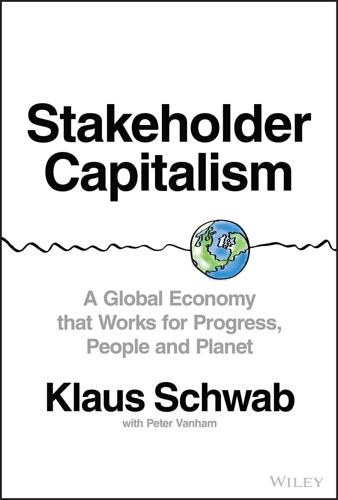
Stakeholder Capitalism: A Global Economy That Works for Progress, People and Planet
by
Klaus Schwab
and
Peter Vanham
Published 27 Jan 2021
As industrialization took hold, however, we started to rapidly consume some of the world's most precious natural resources, the stored energy of oil and coal, and later also rare earth minerals and even gases such as helium. At the same time, the footprint of human activities became ever greater. It was this industrialization that led to the Anthropocene—a label indicating human responsibility for planetary changes in climate and biodiversity. The subsequent second and third waves of industrialization—which brought the world the internal combustion engine, cars, planes, and computers—made the human footprint on the environment only worse, even as it increased the quality of life for billions of people.
…
A Abortion law (Ireland), 194 Abu Dhabi, 159 Adenauer, Konrad, 8, 81 Adobe Systems, 69 Advocacy groups, 243–246 Afghanistan, 195 African countries average economic mobility improvement in northern, 44 capitalism vs. communism ideological battle in, 7 colonialization (19th century) of, 104 demographic changes in, 161 economic ties between China (2020s) and, 69–70 emerging markets in, 63 Locust–19 plague (2020) in, 176 sub-Saharan, 27, 40 See also specific country Age of Discovery (15th to 18th century), 100–102 Air pollution (WHO guidelines), 50 Air traffic controllers strike (US), 122 Alibaba (US), 128, 143 Alphabet, 127 Alstom, 141 Alstom–Siemens merger (proposed), 142 Alternative for Germany (AFD) [Germany], 79 Amazon Rainforest, 107 “Amazon's Antitrust Paradox” (Khan), 127 Amazon (US), 97, 127, 143, 209 Ambani, Mukesh, 68 American Dream, 119 American Economic Association, 35 Amoco, 134 Andersen, Hans Christian, 200 Angola Chinese investments in, 70 oil exports to China from, 64 Ansary, Tamim, 195–196 Anthropocene, 161 Antitrust legislation the EU Commission's pursuit of, 139–140 in the United States, 132–134, 135–136 A.P. Møller–Mærsk (Denmark), 167–168, 199–201, 202–207, 208, 213, 215 Appellate Judges (World Trade Organization), 197 Apple Computer, 126, 137 Apple (US), 59, 127, 128, 137, 209, 211 Arab Spring (2011), 40 Ardern, Jacinda, 219, 220–223, 236 Argentina “reefer ships” (1870s) bringing wealth to, 104, 110 “21st century socialism” of, 225 Artificial intelligence (AI), 143–144, 145, 161 ASEAN nations Chinese economy and emerging markets of, 63–66, 70–72 environmental degradation and economic growth of, 72 IMF forecast on 2020 economic growth of, 71 as an international community stakeholder, 178 national income inequality increasing in, 40 tech unicorns in the, 66, 67fig “The Asian Century,” 70–71fig Asian countries capitalism vs. communism ideological battle in, 7 post-war economy of, 6 severe financial crisis (1997) in, 16, 98, 109 WHO on unsafe air (2019) in, 72 Asian financial crisis (1997), 16, 98, 109 Asian Tigers GDP growth contributions (1980s) by, 13 globalization and economic growth of, 98 influence on China's economy by, 57 shift to producing goods for export, 58 See also Hong Kong; Singapore; South Korea; Taiwan AT&T monopoly, 127, 135 Audi (German manufacturer), 9 Aufstehen movement (Germany), 88 Australia efforts to reduce emissions in, 166–167 mining exports to China, 64 Austrian populist parties (2000, 2017–2019), 84fig Auto industry city of Detroit, 110–111 Ford Motor Company, 33 lack of regulatory scrutiny of the, 136 Mercedes, 9 Automation Dansk Metal's industrial robots, 115, 117 labor market and challenge of, 115–126 Axis nations (World War II), 5 B Baby boom (1950s and 1960s), 8, 9, 105, 135, 154, 160 Bah, Aziz, 238 Bai Chong-En, 225–226 Baidu (US), 143 Bain, 66 Baker, George Pierce, 11 Baldwin, Richard, 64, 113 Bandung entrepreneurs story (2012), 93–94 Bangladesh unsafe air (2019), 72 Bank of America, 214, 215, 249 Bank of England, 162 Bay of Pigs, 76 Belgium declining income inequality in, 41 digital economy embraced by, 113–114 economic loss due to closed car plants in, 111 First Industrial Revolution spreading to, 131 stakeholder approach solving disagreements in, 195 stakeholder concept adopted in, 174 Bell Company.
…
See AT&T Belt and Road Initiative (China), 100 Benioff, Marc, 164, 201, 207, 207–208, 210, 211, 212–213 Berkshire Hathaway Energy (US), 218 Berlin Wall (1961–1989), 75–77, 88, 89 Berlusconi, Silvio, 83 Better Life Index (OECD), 190 Bezos, Jeff, 132 Bhutto, Bhenazir, 245 Bhutto, Bilawal, 245 Big Four (Deloitte, EY, KPMG, and PwC), 215, 250 Big Tech Benioff's call for European regulators to break up, 211 lacking core values of the past, 208 monopolies of, 127–129, 140–142, 145, 211 shift toward stakeholder model approach by, 201–202 tech unicorns of ASEAN nations, 66, 67fig widening inequalities, 210 See also Silicon Valley; US economy The Billionaire Raj (Crabtree), 40 Biodiversity Amazon Rainforest, 107 Anthropocene label on human responsibility for, 161 fossil fuels accelerating loss of, 49 Global Risks Report (2020) on losses in, 52 looking for solutions to stop loss of, 165 Platform on Biodiversity and Ecosystems Services (IPBES) report [2019], 51 Bismarck, Otto von, 133 Bivens, Josh, 122 Black Lives Matter, 186, 243, 246, 250 BlackRock (US), 164, 215, 216 Bloomberg, 163, 177 BMW (German manufacturer), 9 BNY–Mellon, 132 Bolivia, 225 Bolsonaro, Jair, 84, 85 Bombardier (Canada), 142 Booking (US), 97 Boston Consulting Group, 167 BP Statistical Review of World Energy (2019), 49 BP Statistical Review of World Energy (2020), 63 Brandenburg Gate (East Berlin), 76–77, 79, 89–90 Brazil dropping voter turnout for elections in, 188 erosion of political center in, 84, 85 income inequality in, 40 mining exports to China, 64 “21st century socialism” of, 225 Brexit vote (2016), 80 Brookings Institution, 70 Brooks, Robin, 27 Bruegel Institute, 36, 37, 112 Bryan, William Jennings, 133 Brynjolfsson, Eric, 143 B Team Responsible Tax Principles, 205 Buffet, Warren, 218 Bundesrepublik Deutschland (BRD).
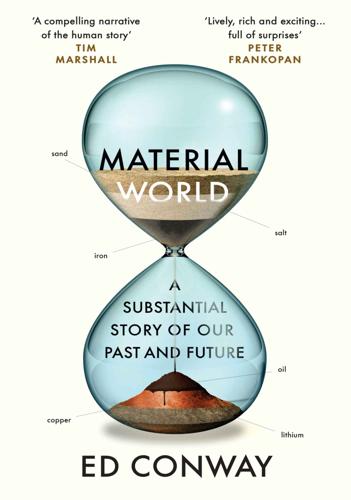
Material World: A Substantial Story of Our Past and Future
by
Ed Conway
Published 15 Jun 2023
Or – another way of looking at it – by 2020 the total weight of human-made products, from iron to concrete and everything else besides, was greater than the total weight of every natural living thing on the planet.4 Analyses like this are rather helpful, since they provide a statistical backbone for the concept of the Anthropocene – that idea that humankind has given rise to an entirely new and distinguishable geological era. And the further you burrow into the numbers on our displacement of sand and rock, the more breathtaking and confounding they get. The sum total amount of material we have dug out of the ground in the past century is a figure so big that even the numerical unit itself is rarely ever used: a teratonne.
…
Today, a third of the world’s raw plastic is made in China, much of it produced from coal rather than oil or gas, as the Germans once did in Wesseling all those years ago. There, the love affair has yet to sour. Here in Europe, what was once a wonder material is now regarded with suspicion and dismay. The substances we created that helped us transcend the need for traditional raw materials such as metals and stone have degraded into a symbol of the Anthropocene. Except that they haven’t degraded at all; this is rather the problem. They are still very much with us, sometimes visible to the naked eye, sometimes not. There are microplastics in the ocean, microplastics wafting undetected through most of our homes, microplastics even in uninhabited parts of the world, high up in the mountains, scattered there on the wind.
…
Up until recently there were few mines and the pools in the Salar de Atacama were still relatively small. Today they are big enough to be easily visible from space, a gigantic pastel paint palette smack bang in the middle of the desert. The Darker Side of the Lightest Metal There are few better illustrations of the Anthropocene than the vast, turquoise evaporation ponds of the Atacama, few clearer signs of what it takes to satisfy a world addicted to smartphones and determined to electrify its way out of fossil fuel dependence. Yet it is also hard to escape a more discomforting thought: are we just replacing one form of environmental footprint with another?
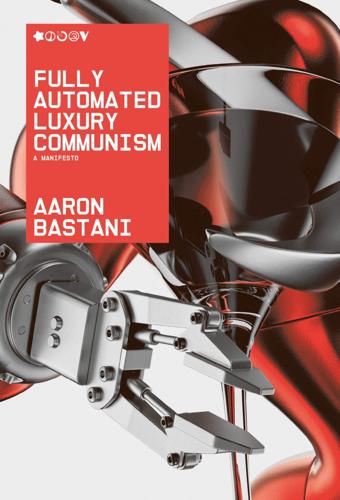
Fully Automated Luxury Communism
by
Aaron Bastani
Published 10 Jun 2019
Industrial capitalism, whose immense powers were made possible by the extraction and burning of fossil fuels, would change the Earth’s ecosystems. For the first time in billions of years, the activity of a single species would become the leading factor in our planet’s ability to sustain life. Arrival of the Anthropocene While the precise environmental consequences of the Second Disruption are unclear, the scientific consensus indicates that higher concentrations of greenhouse gases, particularly carbon dioxide, have caused global temperatures to rise. As a result the world is 0.8 degrees centigrade warmer today than it was in the 1880s.
…
The Second Machine Age: Work, Progress, and Prosperity in a Time of Brilliant Technologies. W.W. Norton, 2014. 5. Limitless Power: Post-Scarcity in Energy Energy and Disruption Malm, Andreas. Fossil Capital: The Rise of Steam Power and the Roots of Global Warming. Verso Books, 2016. Arrival of the Anthropocene Lynch, Patrick. ‘Secrets from the Past Point to Rapid Climate Change in the Future’. NASA, 14 December 2011. Can We Survive Climate Catastrophe? Klein, Naomi. This Changes Everything: Capitalism vs. the Climate. Penguin Books, 2015. Lynas, Mark. Six Degrees: Our Future on a Hotter Planet. Fourth Estate, 2007.
…
Index ‘Abundance Index’, 235–6 Africa, 107–10, 162 ageing about, 138–41 in Britain, 141–4 Elysium, 154–8 gene therapies, 149–54 genetic information, 144–9 Green Revolution, 164–8 agriculture about, 31–2 cellular, 171, 174, 175, 177–81 end of mass, 79–80 agronomic research, 165 Alzheimer’s disease, 143 Amazon, 88–9 Amazon GO, 88–9 Antarctic Treaty System, 136, 136n anthropocene, 96–7 anti-austerity, politics of, 201 Apollo, 122, 128, 137 Apple, 84 Arkwright, Richard, 208 Arkyd, 132 Around the World in Eighty Days (Verne), 33 artificial intelligence (AI), 90 asteroid 16 Psyche, 134 asteroid belt, 131 asteroid mining, 119–20, 133–4 Atlas robot, 82–3, 132 automation actual, 88–92 growth of, 239 in medicine, 91 autonomy autonomous vehicles, 83–6 of publicly owned firms under market socialism, 231 Autumn Budget (2017), 58 Ava Winery, 180 Badiou, Alain, 18 Bank of England, 228, 229 Beck, Peter, 123 Bezos, Jeff, 121, 135 biology, as information, 39 birth rites, 146–7 Blue Origin, 124, 133–4, 135 Blumenthal, Chris, 2–4 Blur Origin, 121 BNP (British National Party), 27 Boeing, 121 Borlaug, Norman, 165–6, 171 Boston Consulting Group, 46–7 Boulton, Matthew, 34 BP (British Petroleum), 100 Brand, Stewart, 48–9, 64 Brexit, 21, 28–9, 30, 206–7 Brin, Sergey, 171 Britain ageing in, 141–4 transportation in, 215 unions in, 211–12 British National Party (BNP), 27 British Petroleum (BP), 100 British Rail Consortium, 89 Brus, Włodzimierz The General Problems of the Functioning of the Socialist Economy, 231 From Marx to the Market, 230–1 Brynjolfsson, Erik, 93 capital, when it becomes labour, 69–71 ‘capital stock’, 69 capitalism about, 22, 51–3 critics of, 34–6 features of, 137 market, 39–40, 197–8 Marx on, 35, 199 capitalist realism, 17–19, 186 capitalist state central banks as central planners, 226–9 end of GDP, 232–6 socialised capital market, 230–2 speculative economy, 229–30 Universal Basic Income (UBI), 224–6 carbon emissions, 197 Carillion, 201–3 Carney, Mark, 86–7 cellular agriculture, 171, 174, 175, 177–81 central banks, as central planners, 226–9 central planning, 226–9 Centre for Local Economic Strategies (CLES), 209 Ceres, 130, 131 Children of Men (film), 18 China National Space Administration, 131 Clancy, John, 212 Clara Foods, 178–9 clean energy, 190 CLES (Centre for Local Economic Strategies), 209 Cleveland Model, 209 climate change.
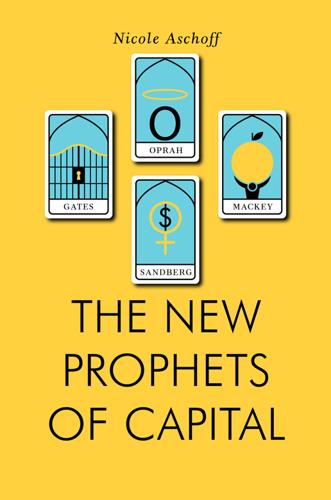
The New Prophets of Capital
by
Nicole Aschoff
Published 10 Mar 2015
If society is to avoid the devastating environmental and social effects of the current trajectory it needs to take a different path. Mackey believes that this is starting to happen, and though this nascent philosophy of capitalism is in its early stages, the direction is clear: “If your company doesn’t care, it will not be in business for long.”5 The Anthropocene Era For the past thirty years companies have been told that their only social responsibility is to make a profit. In this ideological context, recent moves by mega-corporations like Kraft, Walmart, McDonalds, Hewlett-Packard, Nordstrom, Nestlé, IKEA, Southwest Airlines, Zappos, and many more to scrutinize their supply chains and speed their adoption of sustainable practices is surprising and indicates growing concerns about the current global model of extraction, production, distribution, and consumption.
…
Examining growth trends in human population, industrialization, pollution, and resource depletion, the report’s authors suggested possible scenarios of “overshoot and collapse” in the global system by the middle of the twenty-first century. In the decades since, a shared global consciousness has emerged that humans are destroying the planet. Some scientists have even started referring to the time since the rise of industrial capitalism as the Anthropocene era, arguing that humans are altering the planet in ways similar to major geological events in the past. Apocalyptic predictions about the effects of global warming have become a news staple as groups like the Natural Resources Defense Council broadcast a steady stream of warnings about a future plagued by droughts, typhoons, fires, and floods.
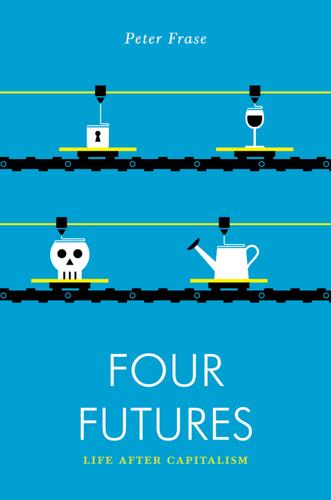
Four Futures: Life After Capitalism
by
Peter Frase
Published 10 Mar 2015
Here the human task of shaping the natural world around our needs is separated from the impulse to preserve particular natural environments for their own sake. Back here on Earth, the ecologist Eugene Stoermer and others have proposed that we live in an era that should be called the “Anthropocene,” the period of geological time in which humans have had a major impact on the Earth’s ecosystems. Some leftist ecologists are suspicious of this term, viewing it as a way of blaming ecological damage on humans in general rather than on capitalists in particular.12 But it doesn’t have to be that; the Anthropocene can simply be a recognition that ecology must always revolve around human concerns. The question, in other words, is not how we reduce our impact on nature, but how we can better manage and care for nature.
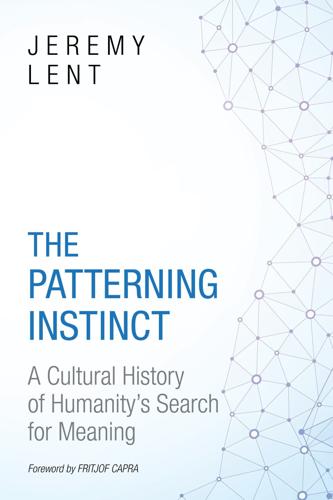
The Patterning Instinct: A Cultural History of Humanity's Search for Meaning
by
Jeremy Lent
Published 22 May 2017
To sustain our current rate of expansion, it's been estimated that human appropriation of net primary productivity would need to double or triple by mid-century. Scientists are understandably asking if this is in fact possible.44 Like the sorcerer's apprentice, we've discovered the magic spell to unleash formidable forces, only to find that they seem to be unstoppable once they've begun. The Arrival of the Anthropocene In every part of the earth, natural systems that have sustained themselves from time immemorial are groaning under the strain of this pressure. The basic elements of life on earth that we take for granted—forests, fish in the oceans, water to drink—are rapidly being consumed by humanity's voracious demands.
…
Between 30 and 50 percent of all vertebrate species are threatened with extinction this century.50 Many prominent scientists have concluded that humanity has now emerged as its own force of nature. The scope of human impact is so enormous, and will affect the distant future of the earth to such a degree, that they are describing our modern period as a new geological epoch called the Anthropocene. “Human activities,” writes a leading scientist, “have become so pervasive and profound that they rival the great forces of Nature and are pushing the earth into planetary terra incognita…. The phenomenon of global change represents a profound shift in the relationship between humans and the rest of nature.”51 Heating the Planet Of all the impacts humanity is having on the planet, perhaps the most ominous is climate change, which threatens to disrupt the very foundation on which human society has been built since the rise of agriculture.
…
Leakey and Lewin, Sixth Extinction, 241–49; Speth, Bridge, 36–38; Johan Rockström et al., “A Safe Operating Space for Humanity,” Nature 461, no. 24 (September 2009): 472–75; James Hansen et al., “Assessing ‘Dangerous Climate Change’: Required Reduction of Carbon Emissions to Protect Young People, Future Generations and Nature,” PLOS ONE 8, no. 12 (2013): e81648. 51. Jane Lubchenco, “Entering the Century of the Environment: A New Social Contract for Science,” Science 279 (1998): 491–97; Will Steffen, Paul J. Crutzen, and John R. McNeill, “The Anthropocene: Are Humans Now Overwhelming the Great Forces of Nature?,” Ambio: A Journal of the Human Environment 36, no. 8 (2007): 614–21. See also Paul J. Crutzen, “Geology of Mankind,” Nature 415, no. 6867 (2002): 23; and Vitousek et al., “Human Domination.” 52. James Hansen, Storms of My Grandchildren: The Truth about the Coming Climate Catastrophe and Our Last Chance to Save Humanity (New York: Bloomsbury USA, 2009), Kindle edition, locations 2152–61; Climate Change: Evidence and Causes (Royal Society and National Academy of Sciences, 2014); Justin Gillis, “Heat-Trapping Gas Passes Milestone, Raising Fears,” New York Times, May 10, 2013; Noah Diffenbaugh and Christopher Field, “Changes in Ecologically Critical Terrestrial Climate Conditions,” Science 341, no. 6145 (2013): 486–92. 53.
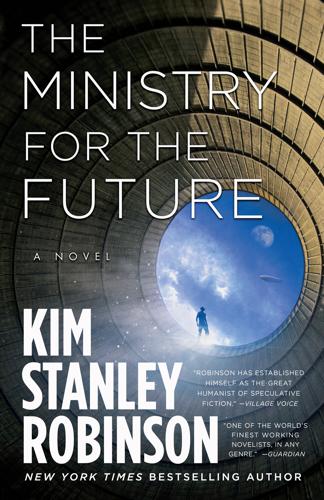
The Ministry for the Future: A Novel
by
Kim Stanley Robinson
Published 5 Oct 2020
But consider this aspect of it: Recent extinctions include the Saudi gazelle, the Japanese sea lion, the Caribbean monk seal, the Christmas Island pipstrelle, the Bramble Cay melomys, the vaquita porpoise, the Alagoas foliage-gleaner, the cryptic treehunter, Spix’s macaw, the po’ouli, the northern white rhino, the mountain tapir, the Haitian solenodon, the giant otter, Attwater’s prairie chicken, the Spanish lynx, the Persian fallow deer, the Japanese crested ibis, the Arabian oryx, the snub-nosed monkey, the Ceylon elephant, the indris, Zanzibar’s red colobus, the mountain gorilla, the white-throated wallaby, the walia ibex, the aye-aye, the vicuna, the giant panda, the monkey-eating eagle, and an estimated two hundred more species of mammals, seven hundred species of birds, four hundred species of reptiles, six hundred species of amphibians, and four thousand species of plants. The current rate of extinctions compared to the geological norm is now several thousandfold faster, making this the sixth great mass extinction event in Earth’s history, and thus the start of the Anthropocene in its clearest demarcation, which is to say, we are in a biosphere catastrophe that will be obvious in the fossil record for as long as the Earth lasts. Also the mass extinction is one of the most obvious examples of things done by humans that cannot be undone, despite all the experimental de-extinction efforts, and the general robustness of life on Earth.
…
Madagascar celebrates its Great Forest Restoration by the example of Project Moringa, and Using Trees to Save Lives. Mexico presents Greening the Chihuahuan Desert, Intensive Silvopasture, Hidden Rivers, Reforestation and Water Protection Group, and Via Organica. Morocco brings you its organization Making the Desert Bloom. We come from Nepal to describe the Beyul Project and the Anthropocene Wilderness Group. New Zealand here: Hinewai Reserve, Mangarara Eco Farm, and The Regenerators. As with all the other countries gathered here, tip of the iceberg really. I come from Niger to tell you of Farmer Managed Natural Regeneration, and Re-greening in Niger. From Norway we speak of Polar Permaculture Solutions.
…
Indeed it can never be emphasized enough how important the Paris Agreement had been; weak though it might have been at its start, it was perhaps like the moment the tide turns: first barely perceptible, then unstoppable. The greatest turning point in human history, what some called the first big spark of planetary mind. The birth of a good Anthropocene. So the last two days of this meeting consisted of one day of people summarizing, listing, and celebrating various aspects of the positive changes made since the Agreement was signed. The second day was devoted to listing and describing some of the outstanding problems they had yet to solve if they were to secure the progress inherent or promised by the things mentioned on the first day.
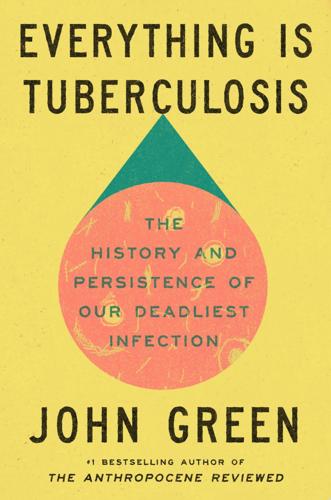
Everything Is Tuberculosis: The History and Persistence of Our Deadliest Infection
by
John Green
Published 18 Mar 2025
Also by John Green Looking for Alaska An Abundance of Katherines Paper Towns The Fault in Our Stars Turtles All the Way Down The Anthropocene Reviewed: Essays on a Human-Centered Planet Crash Course Books An imprint of Penguin Random House LLC 1745 Broadway, New York, New York 10019 First published in the United States of America by Crash Course Books, an imprint of Penguin Random House LLC, 2025 Copyright © 2025 by John Green Photograph of Henry Reider on this page. Copyright © 2019 by John Green. Courtesy of John Green. “Nikki-Rosa” on this page from Black Feeling, Black Talk, Black Judgment.
…
Paul Farmer, a Man Who Would Cure the World by Tracy Kidder, one of the most important and deeply moving books I’ve ever read. About the Author John Green is the award-winning, #1 bestselling author of books including Looking for Alaska, The Fault in Our Stars, Turtles All the Way Down, and The Anthropocene Reviewed. With his brother, Hank, John has co-created many online video projects, including Vlogbrothers and the educational channel Crash Course. John serves on the board of trustees for the global health nonprofit Partners In Health and spoke at the United Nations High-Level Meeting on the Fight to End Tuberculosis.
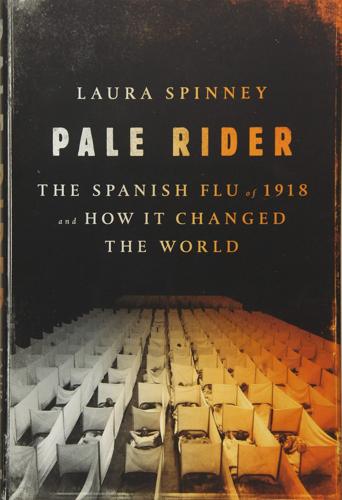
Pale Rider: The Spanish Flu of 1918 and How It Changed the World
by
Laura Spinney
Published 31 May 2017
If we understood the relationship between bird migration paths and flu, however, we might also be able to determine how our burning of fossil fuels will impact the timing, and geographical origin, of any future pandemic. We have, after all, now entered the Anthropocene epoch, which is defined by the impact of humanity on earth–the trace that our cars, nuclear weapons and discarded chicken bones have left on the planet. The previous epoch, the Holocene, spanned the 12,000 years since the last ice age and–coincidentally–the farming revolution that marked the beginning of the story of flu as a human disease. In the Anthropocene, we have moved into uncharted territory. As palaeoclimatologist William Ruddiman put it, ‘we humans have now ended the 2.75-million-year history of northern hemisphere ice-age cycles for a time into the future that is beyond imagining’.
…
Aboriginals, Australian 21, 62, 100 acute respiratory distress syndrome (ARDS) 19, 208 Adams, Harriet Chalmers 52–3 Addis Ababa, Ethiopia 41 AEF see American Expeditionary Forces AFIP see Armed Forces Institute of Pathology Afkhami, Amir 206 Africa 5, 38, 40, 41, 49, 64–5, 244 Christian missionaries 237 Ebola 17, 18, 61, 90, 231, 275, 292 flu mortality rates 201, 202 Pentecostal movement 236–7 see also South Africa; Tanzania African Americans 203–4 African National Congress (ANC) 225, 226 Afrikaners 225, 226 Ahmedabad, India 254, 255, 256, 257, 258 Ahwa, India: Church of the Brethren mission 215 AIDS/HIV 25, 61, 78, 198, 231, 283, 292 AIR Worldwide 278 Akhmatova, Anna 262 Alaska 140, 143, 144, 190, 207, 232–3 see also Brevig Mission; Bristol Bay; Dillingham; Yupik, the Alaska Natives Commission 232–3 Alaska Packers’ Association (APA) 142, 143, 144, 149 Albright, Frederick 208 alcohol: as protection against flu 123–4 Aldershot, England 162 Aleuts/Aleutian Islands 140, 142 see also Unalaska Island Alfonso XIII, of Spain 38, 235–6, 252 alternative medicine 8, 121, 125, 235, 236, 238 Álvaro y Ballano, Antonio, Bishop of Zamora 79–80, 82–3, 84, 85 Alzheimer’s disease 209 America see United States of America American Expeditionary Forces (AEF) 37, 40, 43 American Indian Wars 29–30 American Medical Association 98 Amerindians 20–21 amino acids 185 ammonia, manufacture of 247 Amritsar, India: massacre (1919) 259–60 anaemia 206, 207 ANC see African National Congress Andrade, Mário de: Macunaíma 268–9 Andrés, Sister Dositea 83 Andrews, Father Charles 258 Anglo American mining company, Zambia 230 Anglo-Boer Wars (1899–1902) 225, 245 Antarctica 7, 44 anthrax 62, 128 Anthropocene epoch 277 antibiotics 31, 121, 243 antibodies 181–2, 192, 195, 209 antigens 182, 184 see also haemagglutinin Antilles, the 21 anti-Semitism 128, 245 antiviral drugs 121 APA see Alaska Packers’ Association Apollinaire, Guillaume 3–4, 47 Apollinaire, Jacqueline 47 Archangel 43 architecture, post-flu 123–4, 261 ARDS see acute respiratory distress syndrome Argentina 100, 197 Arlen, Michael: The Green Hat 265 Armed Forces Institute of Pathology (AFIP), Washington DC 190, 191–3 arsenic preparations 123 art, post-flu 261 Ashkhabad, Turkmenistan 114 Asia 244 flu mortality rates 170–71, 201, 202 see also China; India; Japan ‘Asian’ flu (1957) 199 aspirin 76, 122 Asquith, Herbert Henry 247 astrologers, Persian 119 Atilano, Bishop of Zamora 85 Atlanta, Georgia see Centers for Disease Control and Prevention Auckland, New Zealand 205 Audubon Society of America 277 Australia/Australians 38, 44, 93, 293 Aboriginals 21, 62, 100 flu mortality rates 44, 201 Austria/Austrians 40, 44, 130, 133, 249 music 261 tuberculosis 250 see also Freud, Sigmund; Kafka, Franz; Vienna Austro-Hungarian Empire 42, 249, 250 Azevedo, Aluísio: O Cortiço (The Slum) 26, 27, 52 Aztec Empire 21 Babel, Isaac: Odessa Tales 127, 135 back-to-nature movements 236 bacteria 25, 26, 27, 176–7, 184 Mycobacterium tuberculosis 25, 209 Yersinia pestis 31, 73, 155–6 see also ‘Pfeiffer’s bacillus’ Baden, Germany 138, 240 Baden, Max von 267 badgers 89, 126 Baker, Josephine 104 Bal Gangadhar Tilak (independence movement) 257, 258 Ballets Russes: Cleopatra 41–2 Baltimore Afro-American (newspaper) 203–4 Bandeaux, Father 102 Bangkok, Thailand 75 Bangladesh 202 Bardakh, Henrietta 129 Bardakh, Yakov 128, 129, 130–31, 132, 133, 135, 168, 175 Barry, John M. 163–4 Bartók, Béla 218 bats 197 Bayer’s aspirin 76 Bazalgette, Joseph 28 Beckett, Samuel: Murphy 266 bees 89 Beethoven, Ludwig van 218 Beijing see Peking Belgium 158, 159, 160 Benedict XV, Pope 238 Benjamin, Walter 292 Bergen-Belsen concentration camp 67 Bergensfjord (ship) 103 Bergman, Ingmar 30 Berlin 31, 48 Bevan, Aneurin 243 biowarfare 76 bird flu 18, 188–9, 191, 193, 194, 197, 198–9, 276, 277 birth rates, post-flu 216–17, 231 Bismarck, Otto von 240 Black Death, the 4, 8, 31, 75, 139–40, 228, 290, 291 bloodletting 123 Boccaccio, Giovanni: The Decameron 139–40 Bohr, Niels 237 Bokhara, Uzbekistan 23 Bombay (Mumbai) 10–11, 38, 49, 107, 256, 258, 260 Boston, Massachusetts 40, 41 Psychopathic Hospital 220 Boxer Rebellion, China (1900) 71 Brainerd, Elizabeth and Siegler, Mark: ‘The Economic Effects of the 1918 Influenza Epidemic’ 231–2 Brandt, Johanna 225 Brazil 26, 41, 45, 64, 100, 268 writers 268–9 see also Rio de Janeiro Breslau, Germany (Wrocław, Poland) 38 Brest, France 40, 41, 47 Brest-Litovsk, Treaty of (1918) 38–9, 113, 127 Brevig Mission, Alaska: mass grave 190–91, 232 Bristol Bay, Alaska 140–42, 143–4, 148, 207 orphans 212–13 see also Dillingham; Yupik, the Britain/the British 20, 38, 63, 264 adoption 231 in China 157, 158, 159 flu mortality rates 169, 293–4 health insurance 240 National Health Service 242–3 and Palestine 267 and Persia 43, 113, 114–15, 116, 117 writers 263, 264, 265 see also British Army British Army 39, 160, 177 deaths 6, 248, 293 at Étaples 150–51, 160–63 Étaples mutiny 247 Persians in 206 Brittain, Vera 218, 293 ‘bronchitis, purulent’ 161–2, 221 Buber, Martin 267 bubonic plague 8, 21, 31, 73, 292, 293 Bulgaria 26 Bulhoek, South Africa 225–6 burials 54–5, 74, 109, 116, 117, 118, 156 see also coffins By the Fireside (film) 134 Calcutta, India 260 Caldwell, John Lawrence 114 Cambridge University 237 Camp Funston, Kansas 34–5, 37, 153, 163, 164 camphor oil 123 Canada/Canadians 159, 198, 202 cancers 242 Canetti, Elias: Party in the Blitz 289 Cape Town 41, 77, 204, 231 Spanish flu summit (1998) 6 Cardoso Sales Rodrigues, Nair 49, 55–6 Carella, Corporal Cesare 110 Careta (magazine) 53 Caribbean, the 21, 41 Caribbean spiny lobster 89 Caruso, Enrico 106 Casanova, Jean-Laurent 208–9 castor oil 123 Catherine II, of Russia (‘the Great’) 127 Catholic Church/Catholicism 79–80, 82–5, 102, 138, 238 Caulfield, Sueann: In Defense of Honor… 140 CDC see Centers for Disease Control and Prevention Ceau¸sescu, Nicolae 30 Céline, Louis-Ferdinand: Journey to the End of the Night 175 Cendrars, Blaise 3, 47 censorship 49, 63, 102, 282 Centers for Disease Control and Prevention (CDC), Atlanta, Georgia 187, 191–2, 279, 281–2 Chagas, Carlos 268 Chapekar brothers 100 Chaplin, Charlie 105 Charlemagne 20 Chen Tu-hsi (Chen Duxiu) 69 Cheyenne Bottoms, Kansas 189 Chiang Kai-shek 242 Chicago, Illinois 202 Chile 45, 67–8 chimpanzees 89 China 38, 43, 62, 153, 154, 164, 165 An Lushan Rebellion (8th century) 290 Boxer Rebellion (1900) 71 British in 157, 158, 159 carrier pigeons 30 Confucianism 70, 71 ducks 199 flu ‘cures’ 125 flu mortality rates 71, 73, 167, 169–70 foot-binding 70 literature 269–70 missionaries 7, 71, 72, 74, 156, 158, 169 National Medical Association 242 National Quarantine Service 242 New Culture movement 69, 269, 270 Qing dynasty 69, 73, 125, 154, 156, 157 revolution (1911) 69, 70 and World War I 157 see also Harbin; Peking; Shansi; Shantung; Wu Lien-teh Chinese Labour Corps (CLC) 157–9, 161, 164 chiropractic 235 cholera 27–8, 29, 62, 67, 70, 92, 107, 114, 115, 116, 117, 128, 130, 131, 132, 135, 168, 179, 256 Chopin, Frédéric 28, 209 Christakis, Nicholas and Fowler, James H.: ‘Social network sensors for early detection of contagious outbreaks’ 279–80 Christian Scientists 236 Christianity/Christians 115–16, 117, 134, 137, 205, 215, 224, 237, 258 see also Catholic Church; ‘Israelites, the’ chronic fatigue syndrome, post-flu 219 see also post-viral fatigue Churchill, Winston 243 cities: vulnerability to infection 202, 205 CLC see Chinese Labour Corps Clemenceau, Georges 250 Coffin, Eugene 144, 145, 147 coffins 47, 55–6, 73, 84, 110, 136, 227 ‘collective’ v. individual 98–9 ‘collective resilience’ 136, 137, 139 Collier, Richard 39, 77, 138, 230 The Plague of the Spanish Lady… 75 Columbus, Christopher 20–21 Commission on Creating a Global Health Risk Framework for the Future (GHRF) 275 Report (2016) 279 concentration camps 67, 245–6 Concepción, Chile 68 Connecticut, USA 202 Connelly, Mayme 146–7 conquistadors 21, 64 Constantinople: Hamidiye Children’s Hospital 67 Cook, Captain James 141 Cooper, John Milton, Jr 251 Copeland, Royal S. 86, 103–5, 108–9, 110, 111–12, 130, 235 Copeland, Royal S., Jr 87, 108–9 Corbusier, Le (Charles-Édouard Jeanneret) 123–4 Cordeiro, José Luís (Jamanta) 54 cordons sanitaires see ‘sanitary cordons’ Correio de Manh (newspaper) 54 Correo de Zamora, El (newspaper) 79, 81, 82, 83 Corriere della Sera (newspaper) 102 Cortés, Hernán 21, 22 cowpox vaccine 98 Crazy Horse, Chief 145 crime 100, 106, 127, 130, 136, 138, 139–40, 153, 155, 231, 233 Crosby, Alfred: America’s Forgotten Pandemic 43, 99, 262 ‘crowd diseases’ 16, 18–19, 23, 25 Cruz, Oswaldo 53, 268 Cuba 80 Cunard, Nancy 265 cytokines 192–3, 195, 217 Czechoslovakia 42, 267 Dakar, Senegal 49, 50 Dangs, the 203 Darwin, Charles: On the Origin of Species 28–9 De Beers Company 77 Defoe, Daniel: Journal of the Plague Year 136 dementia 220, 226, 242 Demerara, SS 41, 49–50 dengue fever 20, 67 Denmark 64, 201–2 depression 24, 264, 265 post-flu/post-viral 24, 218–20, 264, 265, 283 Desai, Dayalji 257, 259 De Simone, Raffaele 109–10 Diaghilev, Sergei 41 digitalis 123 Dillingham, Alaska 142, 143, 144, 146, 149, 190 disease surveillance systems 92–3, 96, 278, 279, 283 ‘disgust response’ 89–90 disinfectant, use of 97, 100 DNA 31, 184, 185, 201 Doane, Lt Philip S. 76 doctors 137–8, 240, 241, 243 Dodge, Captain Frederick 144, 145, 148 dogs 197 Don Juan 267–8 Don Juan Tenorio 267 Dos Passos, John 262 Downton Abbey (TV) 291 Doyle, Sir Arthur Conan 237 ‘drift’ 185, 196 ‘Dr Kilmer’s Swamp-Root’ 124 drugs 76, 121–3, 124 see also antibiotics Dublin 43 Duchamp, Marcel 3 ducks 18, 188–9, 199 Dujarric de la Rivière, René 172–3, 176, 177–9, 180, 181 Durban, South Africa 77, 204 Dyer, Brigadier General Reginald 259–60 dysentery 168, 169 Earhart, Amelia 218 Ebey, Adam 215 Ebey, Alice 215 Ebola 17, 18, 61, 90, 231, 275, 292 EC see European Commission Edel, Harold 105 Edgar, Robert 227 Egypt 19, 254 Einstein, Alfred 237 EL see encephalitis lethargica El Niño-Southern oscillation (ENSO) 276–7 electron microscopes 184, 190 micrograph of flu virus 272–3 electrons 184 elephants 89–90 Eliot, T.

Falter: Has the Human Game Begun to Play Itself Out?
by
Bill McKibben
Published 15 Apr 2019
As the title indicates, The End of Nature was not a cheerful book, and sadly its gloom has been vindicated. My basic point was that humans had so altered the planet that not an inch was beyond our reach, an idea that scientists underlined a decade later when they began referring to our era as the Anthropocene. This volume is bleak as well—in some ways bleaker, because more time has passed and we are deeper in the hole. It offers an account of how the climate crisis has progressed and of the new technological developments in fields such as artificial intelligence that also seem to me to threaten a human future.
…
“Scientists’ Warning to Humanity ‘Most Talked about Paper,’” March 7, 2018, sciencedaily.com. 7. Nafeez Ahmed, “NASA-Funded Study: Industrial Civilization Headed for ‘Irreversible Collapse’?” Guardian, March 14, 2014. 8. Baher Kamal, “Alert: Nature, on the Verge of Bankruptcy,” September 12, 2017, ispnews.net. 9. Clive Hamilton, Defiant Earth: The Fate of Humans in the Anthropocene (Cambridge, UK: Polity Press, 2017), p. 42. 10. John Vidal, “From Africa’s Baobabs to America’s Pines: Our Ancient Trees Are Dying,” Huffington Post, June 19, 2018. 11. Anne Barnard, “Climate Change Is Killing the Cedars of Lebanon,” New York Times, July 18, 2018. 12. Damian Carrington, “Arctic Stronghold of World’s Seeds Flooded After Permafrost Melts,” Guardian, May 19, 2017. 13.
…
Abou, Naore accelerating information returns Adirondacks Advanced Cell Technology Africa African Americans agriculture AIDS/HIV air-conditioning air pollution Alabama Alaska Alberta Alcor Algeria algorithms Allen, Paul alligators Allpress, Bob Alpha Centauri Altman, Sam altruism Amazon (company) Amazon Basin Ambrosia American Legislative Exchange Council (ALEC) American Petroleum Institute (API) American Revolution Americans for Prosperity American Society for Testing and Materials Amoco Andrea, Lembris Anoh, Jean Antarctica anthrax Anthropocene epoch Apollo missions aquifers Arab Spring archaeology Archer Daniels Midland Arctic aridification Aristotle Arizona Arizona Public Service (APS) Armstrong, Lance Armstrong, Neil artificial general intelligence (AGI) artificial intelligence (AI) Ashland, Kansas asphalt shingle Athens athletes Atlas Shrugged (Rand) Atlas Society atmospheric temperature, rise in.
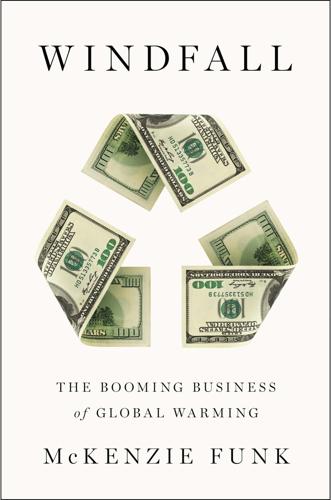
Windfall: The Booming Business of Global Warming
by
Mckenzie Funk
Published 22 Jan 2014
As a point of scientific inquiry it is decades old, first identified in the 1800s by John Tyndall and Svante Arrhenius, but as a source of popular anxiety and conversation it dates to the first sophisticated computer models of the early 1970s and the first World Climate Conference in 1979 and landmark congressional testimony by the NASA atmospheric physicist James Hansen in 1988. It has been around long enough to become a cliché—I thank it for the heat wave I’m experiencing in Seattle as I write this—and long enough to have birthed a newer cliché: the idea that we have so changed the planet with our engineering and our emissions that we now live in the Anthropocene, a new geologic epoch of man’s own creation. Long enough, certainly, for something to have been done about it. In the new millennium, which has brought us Al Gore’s Inconvenient Truth, Lord Nicholas Stern’s seven-hundred-page Economics of Climate Change, and a string of failed climate legislation and UN conferences, the warnings have been ever louder and more sustained.
…
“Like you give a goldfish,” Alphey said, “but you can grow them on yeast powder, dog biscuits, cat food—whatever organic material happens to be in the water.” For all the groundbreaking genetics, there was also this mundane side of the business, he said: “How do you make large numbers of inexpensive yet fit, healthy, sexy male mosquitoes?” It was a question befitting our Anthropocene epoch. Godlike power was beginning to feel normal, even tedious. In the United States, genetically modified crops have penetrated the market almost completely since their arrival less than twenty years ago: They make up 94 percent of our planted cotton, 93 percent of our soybeans, 88 percent of our corn.
…
Aamodt, Jim, 102 abiotic stress tolerance, 246–47 Acciona, 167 acid rain, 271 activation energy, 63 Acuña, René, 129 adaptation, 10, 111–12, 210–12, 222–23, 229–32, 267 Aedes aegypti mosquito, 235–36, 237 breeding places, 238, 239 genetically modified OX513A, 236, 239–40, 242, 247, 250–53 producing sterility in, 241–44 spraying, 239–40 Aedes albopictus mosquito, 236, 244, 250 Affordable H2Ousing, 227 Africa: deportations to, 174 refugees from, 172–75, 180–84, 191 African Agricultural Technology Foundation, 245 Agcapita, 153 agriculture: increased growing days, 21, 64, 152, 153 land for, 137, 139–59 and salinity, 195, 198 and water, 87, 90, 148, 205 Agrifirma, 153 Aguas de Barcelona, 21–22 AIG (American International Group), 98, 99, 103–5, 109, 110, 113, 115 alarm fatigue, 52 Alaska: and Arctic claims, 32, 36 endangered villages in, 19, 65 and lease sale, 49, 53, 55–57, 286–87 and oil, 46, 48–49 water contracts in, 122 Alaska Gas Pipeline Project, 46 albedo, 21, 262, 266 Al-Faisal, Prince Mohamed, 122 Algodones Dunes, 126, 128 All-American Canal, 125–29, 130, 167, 264 All-Assam Students Union (AASU), 190, 191, 206 Alliance of Small Island States (AOSIS), 215–16, 226 Al Maktoum, Sheikh Mohammed bin Rashid, 227 Alphey, Luke, 241–44, 250–53 Alps, melting glaciers in, 65–66, 79–83, 86 American Enterprise Institute (AEI), 267, 276, 279 American Society of Civil Engineers (ASCE), 232 American Society of Tropical Medicine and Hygiene, 243 Andermatt, Switzerland, 80 Anderson, Terry, 132–33 Angus and Ross, 73 Anopheles gambiae mosquito, 247 Anthropocene epoch, 5, 252 Aquaterra, 222 aqueducts, 125 Aqueous, 124 aquifers, 205 Arad, Elisha, 89–91 Arcadis, 229, 230–31, 233–34 Arctic: development plans for, 45–46, 47 melting sea ice in, 21, 32, 35, 45, 47, 48, 56, 64–66, 77–78, 118, 194, 203, 284, 287–88 national claims on, 32, 35–37, 38 new shipping lanes in, 16–18, 25–26, 31–32, 54, 284 and petroleum, 16, 31, 32–33, 47, 286 Arctic Climate Impact Assessment, 46 Arctic Council, 194 Arctic Frontiers conference, 45–47 Arctic Ocean, and Law of the Sea, 36 Argentina, land deals in, 153 ARIS (Automatic Rice Imaging System), 248–49 Aristotle, 66 Arrhenius, Svante, 5 Ashkelon, Israel, 88–91 Assam, 189–92, 205–6 Assam Movement, 206 Athabasca tar sands, 21, 52, 58, 263–64 Atkin, Carl, 152, 154 Atmocean, 273 Aurora Flight Sciences, 269 Australia: drought in, 88, 92, 101, 119, 132, 133, 135, 144, 152, 203, 221, 261 Number 1 Rabbit-Proof Fence, 177 water markets in, 132, 133–37 Austria, melting glaciers in, 79–81 Ayles Ice Shelf, 19–20 Baffin Bay, 63 Bahama Islands, 64, 220 Ballou, Rip, 245 Bangladesh, 189–213 border fence, 190–92, 206–9, 212–13 borders of, 191 crops grown in, 195 cyclones in, 196 and flooding, 64, 192, 196–97, 199, 203, 233, 280 foreign aid to, 212 and India, 167, 190–92, 197, 204–9, 210, 212 population growth in, 204, 209 poverty of, 191 refugees from, 191, 204, 206–12 and war games, 203–4 water salinity in, 195, 198 Bangladesh Rice Research Institute (BRRI), 198–99 Bar, Etan, 92–93, 119 Barbon, Nicholas, 112–14 Barents Sea, 37, 53 BASF, 246–47, 249–50 Bashir, Omar, 147, 149 Bay of Bengal, 191, 195, 196 Beatrix, queen of Netherlands, 229 Beaufort Sea, 36, 48, 49 Beckett, Margaret, 20 Ben-Gurion, David, 84, 87 Bentham, Jeremy, 50–51, 52, 58–59 Bidwells, 152 Bikini Atoll, 216 biofuels, 52, 59 biotechnology, 249–50 Blaauw, Robert Jan, 45, 47–49 Black, George, 210 Black Angel fjord, 73, 74, 77–78 Black Earth Farming, 153 BlackRock, 153 Blue Sky Water Partners, 134 Boeing, 269 Borlaug, Norman, 249 BP, 43, 104, 230 BRAC, 210 Brahmaputra River, 189–90, 193, 195, 196, 199 Brazil: and land deals, 140, 144, 153 and mosquitoes, 243 Brock, Stan, 103 Buffett, Warren, 263 Buiter, Willem, 118, 121 Buoyant Foundation Project, 231 Buriganga River, 197–98 Burma, border of, 191 Bush, George W., 29, 55 Busuttil, Simon, 171–74 Byers, Michael, 24, 25, 26–27, 128 Cain, James P., 71 Caldeira, Ken, 265, 266, 268, 272, 273, 275 Cal Fire, 102 California: drought in, 100 fires in, 97–107 insurance in, 108–9 water for, 125, 127–28, 130 Cambodia, and land deals, 144 Cameroon, and land deals, 144 Campbell-Purdie, Wendy, 163, 177 Canada: and Arctic claims, 32 and Arctic traffic control, 25 First Nations tribes, 153 increased growing days in, 21, 152, 153 Inuit in, 67–68 and Kyoto Protocol, 21 and Law of the Sea, 36 and natural gas, 22 and Northwest Passage, 15–19, 25–27, 32 sovereignty of, 15–19, 27, 67 tar sands in, 21, 52, 58, 263–64 and U.S. cooperation, 26 water in, 24–25 Canary Islands, 164, 165, 168, 172 Cancún Climate Change Conference (2010), 10 Cantwell, Maria, 255–59 cap-and-trade system, 44, 45, 59 Cape York Peninsula, 136 carbon dioxide emissions: and CCS, 49–51, 53, 58, 59 cutting, 7, 10, 217 and lawsuits, 110 levels of, 5, 32, 52, 92, 199, 210 and melting sea ice, 45 and plant growth, 21 sources of, 52, 191, 204–5 trading scheme, 151–52, 212 Carteret Islands, 64, 65 Cassar, Joseph, 181 Cato Institute, 133 Causeway Water Fund, 134 Cayman Islands, 243–44 CCS (carbon capture and storage), 49–51, 53, 58, 59 Center for a New American Security, 203–4 Center for Naval Analysis, 30 Centra Technology, 204 CH2M Hill, 123 Chacaltaya glacier, 80 Chaffey, George, 125 Chernobyl, 260 Cherrapunji, 213 Chevron, 63, 65 Chilingarov, Artur, 35, 36, 37 China: cloud seeding in, 87–88, 260 energy demands of, 47, 50 floods in, 119 Great Wall of, 176–77 and Greenland, 72 and land deals, 144 megadams in, 195 and Northwest Passage, 31 rivers diverted in, 87 water shortages in, 144, 152 Chowdhury, Atiqul Islam (Atique), 197–202, 205, 209 Chubb insurance, 103 Chukchi Sea, 36, 48, 285–87 Lease Sale 193: 49, 55–57, 286–87 Church, John, 194 CIA, 72, 268 Citigroup, 118, 121 Climatic Consequences: Investment Implications of a Changing Climate, 21 Citizens Property Insurance Corporation, 238 Clean Air Act, 271 Climate Change Vulnerability Index, 205, 222 Climate Corporation, 109 climate lawsuits, 65, 110, 218, 263 climate refugee law, 219 climate remediation, 266–69 cloud seeding: and hurricane modification, 110, 260 and rainmaking, 87–88, 92, 259–61 and rain prevention, 260 and snowmaking, 261 and solar radiation management, 266 Club of Rome, Limits to Growth, 3 coal, sources of, 32, 46, 52 COAST, 197, 210 Colbert Report, The, 203 Coles, Terry, 108 Colorado River, 86, 117–18, 121, 125–26, 131 Colorado River Compact (1922), 125 Columbia Law School, island nations conference, 215–21 ConocoPhillips, 45, 46, 57, 65 continental shelf, 32, 36 Copenhagen Climate Change Conference (2009), 10, 68, 110, 217, 226, 266, 274 Corrections Corporation of America, 174 Credit Suisse, 118, 120 CropDesign, 249–50 Cyclone Aila, 196, 201 Cyclone Sidr, 196, 200, 201–3 Cypress Mountain, Canada, 85 Daffern, Tim, 74–75 Davidge, Ric, 124 Dead Sea, 90 Deepwater Horizon, 55 Delta Works, 221 dengue fever, 217, 235–43, 244, 250 Dengue Vaccine Initiative, 245 Denmark: and Arctic claims, 32 and Greenland, 36, 61, 67–68, 70–71, 73 and Law of the Sea, 36 desalination, 58, 83, 84, 85, 88–91, 122, 167, 221 desertification, 131, 146, 162–63, 167, 233 Deutsche Bank, 5 “The Investment Climate Is Changing” event, 1–3 investment funds of, 2, 3, 88, 153, 245 Devon Island, 17, 23, 27–29, 33–35, 39–40 Dickerson, John, 118, 119–21, 129–33 DiGiovanna, Chief Sam, 97–107, 110–11, 114, 115–16 Dircke, Piet, 229, 231, 232, 233 directional drilling, 48 Disney, Walt, 259 Doyle, Michael, 238–41 drought, 118, 144, 203 and cloud seeding, 261 and desalination, 88, 221 and desertification, 131, 167 engineering solutions for, 86, 92–93 and fires, 100, 101–2 and food crisis, 133 and food prices, 152 and sale of water rights, 131–36 and volcanoes, 279–80 Dubai, coastline of, 227 Dubner, Stephen, 275 Duncan, Sara, 247 Duoyuan Global Water, 3 Dutch Docklands, 225–28 DynCorp International, 102 Ecofin fund, 134 Egede, Hans, 67 Egypt: famine in, 280 farmland in, 147–48 Ellesmere Island, 19, 32, 36 Emergent Asset Management, 153–54 Emma Maersk, 233 Endangered Species Act, 46 energy independence, 52 energy sources, 47–48, 50–52, 58 Enewetak Atoll, 220 Enlightenment, 86 Enoksen, Hans, 71 Eqecat, 108 Ethiopia: Blue Nile in, 148 food aid to, 148 and land deals, 140, 144, 148 European Border Surveillance System, 167 Exercise Frozen Beaver, 17 extinction, 208, 252 ExxonMobil, 45, 63, 65, 104, 267 Exxon Valdez, 123, 278 F&C Global Climate Opportunities Fund, 4, 108 Farakka Barrage, India, 195 Farmers Insurance, 103, 104–6, 115 Feinstein, Dianne, 127 FEMA, 238 fire, 99–102 Great Fire of London, 112, 114 and insurance, 98, 102–10, 114 Firebreak Spray Systems, 102–4, 105, 109, 275 firefighting, public vs. for-profit, 97-107, 111–12, 114–15 FireIce gel, 103 Fireman’s Fund, 103 Fireprotec, 103 fishing: in Greenland, 63–64, 68 in Senegal, 165–66 and small island states, 218–19 Fleming, James, Fixing the Sky, 260 Floating Proverb, 227 FloodBreak, 233 food crisis, 133, 140, 144, 146, 201, 210 food prices, 52, 58, 144, 152, 161, 201 forests: deforestation, 58 and parasitic larvae, 101 and wildfire, 101–2 fossil fuels, 47, 52 fracking, 131–32 Francis, Pope, 172 Franco, Francisco, 167 Franklin, Benjamin, 266, 280 Friends of the Earth, 66, 240 Friis, Janus, 109 Frontex, 167, 171, 173–74 Fulton, Mark, 2–3 Fund for Innovative Climate and Energy Research (FICER), 268, 269 futurism, 43, 58–59 G4S, 174 Gabriel, Peter, 43 Gadet, Peter, 150–51, 157, 159 Gadhafi, Moammar, 171, 173, 183 Galahad Gold, 153 gambusia (fish), 238 Ganges (Padma) River, 195, 196, 199 Gates, Bill, 244–45, 256, 263, 268, 269, 275 Gates Foundation, 244–45, 247, 256, 257 GelTech fire retardant, 103 genetic modification (GM): abiotic stress tolerance, 246–47 crops, 3, 199, 210, 243, 246–50, 252 mosquitoes, 236–45, 247, 250–53 opponents of, 246 patents on, 246 production facilities, 248–53 reengineering humans, 252 RIDL, 242–44 suicide genes, 236 genomics, 247 geoengineering, 30, 258–59, 262–81 Gerrard, Michael, 215, 217 Gershonowitz, Yitzhak, 92, 93 GEUS, 69–71, 73, 74 Ghoramara Island, 19 Gingrich, Newt, 267 glacier melt, 65–66, 79–83, 86, 87, 205 GlaxoSmithKline (GSK), 245 Gobi Desert, 176–77 Golden Valley Fire Suppression, 103 Goldman Sachs, 118, 145, 234 Goodell, Jeff, How to Cool the Planet, 268 Gore, Al, 2, 146 An Inconvenient Truth, 5, 21, 118, 119 Grayback Forestry (GFP Enterprises), 102 Great Green Wall, 162–64, 167–71, 175–79, 184–86 Greece, 101, 173 Greenberg, Maurice “Hank,” 113, 143 greenhouse gases: accounting for, 20, 44 and CCS, 49–51, 53, 58, 59 Kyoto Protocol on, 21, 44 threat of, 32, 45, 47, 51 Greenland, 61–78 and climate change profitability, 62, 74, 76 and Denmark, 36, 61, 67–68, 70–71, 73 fish in, 63–64, 68 land rising in, 66, 77–78 melting ice cap of, 64–66, 77, 194, 284 Niaqornat meeting, 75–77 petroleum and minerals in, 63, 72–75, 76, 154 and self-governance, 62–64, 66–67, 68, 71–72, 77, 78, 122, 154, 216 Thule Air Base in, 72 Greenlandic language, 63 Greenland Minerals and Energy, 73 Greenland Sustainable Mineral and Petroleum Development Conference, 72–73 Greenpeace, 57 Green Revolution, 249 Greenstar, 228 Gurdjieff, Georges, 41 Hadley cell, 131, 194 Hall, Nick, 73 Hammerfest, Norway, 53–55 Hammond, Aleqa, 71 Hansen, James, 5 Hans Island, 17, 22, 24, 34, 36, 217 Hanson, Ann Meekitjuk, 23 Harman, Willis, 43 Harper, Stephen, 17, 21, 58 Heffernan, Bill, 136–37 Heilberg, Phil, 139–51, 152, 154–59 Himalayas, glacier melt in, 86 Holland America Line, 229, 230 Hollis, Leo, 112 Homestead Acts, 129–30 Hoover Institution, 258 Hoque, Enamul, 189–91, 200, 205–9, 212 Horner, Jack, 270 Horsfall, Sophie, 4 Howard, John, 136 Hudson Institute, 42 Hudson Resources, 73 Human Rights Watch, 149, 192 hurricanes: Hurricane Andrew, 108 Hurricane Ivan, 239 Hurricane Katrina, 108, 222, 238 Hurricane King, 260 Hurricane Sandy, 215, 219, 232, 233–34, 284, 287 and insurance, 4, 98, 108, 110, 238 and ocean temperatures, 196 research into, 110 suppression of, 260, 273–75 and windborne debris, 231 hydrogen energy, 58 hydropower, 64, 86 hyperbolic discounting, 7 IBM, 230 ice albedo feedback effect, 21 Iceberg Transport International Ltd., 122 Iceland: volcanic eruptions in, 280 water from, 122 IDE (Israel Desalination Enterprises), 82–85, 88–89 All Weather Snowmaker, 81–82, 85 creation of, 84 IID (Imperial Irrigation District), 126 India: and Bangladesh, 167, 190–92, 197, 204–9, 210, 212 Border Security Force (BSF), 192–93, 207–9 carbon emissions of, 191, 204–5 drought in, 280 energy demands of, 47, 50 and land deals, 144, 162 and melting glaciers, 66, 205 and refugees, 191, 204, 206–10 Indian Ocean, rising waters of, 194 Indonesia, and land deals, 144 Inherent Land Quality Assessment, 152 insurance: and climate change, 4, 98, 99, 107–10 FEMA/flood, 238 and fire, 98, 102–10, 114 and hurricanes, 4, 98, 108, 110, 238 policies dropped, 108, 238 rate hikes, 108 reinsurance, 108–10 windstorm, 238 Intellectual Ventures (IV), 256–57, 260, 261–65, 266, 268, 270–74, 278–79, 280 Intergovernmental Panel on Climate Change (IPCC), 2, 20, 66, 194, 266, 267, 276 International Food Policy Research Institute, 146 International Organization for Migration (IOM), 210, 219 Inuit: Canadian and U.S. treatment of, 67–68 and climate change, 23–24 lawsuit of, 110 and Northwest Passage, 17, 23, 33–34 Inupiat Eskimos, 55, 56, 285 investment opportunities, 2–4, 21–22, 88, 118–21, 151–54, 263–64, 269 island nations, disappearing, 64–65, 215–21, 226 islands, artificial, 217, 225–28 Israel: cloud seeding in, 92 desalination in, 84, 88–91, 221 and IDE, 82, 84, 88–89 and immigrants, 167 water technology in, 91–93 Italy: borders of, 66, 85 immigrants to, 173–74 Jacob, Klaus, 219 Jarch Capital, 143, 148–49, 150 JASONs, 268–69 Jesuit Refugee Service (JRS), 180 John Deere, 22 Jordan River, 87, 90 Joseph, Doctor, 156–57 Kahn, Herman, 42 Karimov, Islam, 143 Kazakhstan, and land deals, 144, 152 Kennedy, Don, 65 Kenya: drought in, 149 and land deals, 144 Keynes, John Maynard, 6 Key West, 236–38, 240–41, 243, 250 Khosla, Vinod, 109 Kiewit Corporation, 264 Kiir, Salva, 140–41, 154 Kiribati (Gilbert Islands), 64, 65, 220, 226 Kissinger, Henry A., 25 Kitzbühel, Austria, 80 Kleist, Mininnguaq (Minik), 62–64, 66–69, 71, 75–78, 194, 216 Knights of Malta, 179 Koch brothers, 104, 133 Koonin, Steve, 268–69 Korea, and land deals, 144 Kulluk, 48, 216, 286–87 Kuwait, and land deals, 144 Kyl, Jon, 127 Kyoto Protocol (1997), 21, 44, 50, 53, 54, 212, 267 Lake Havasu, 117 Landkom, 153 Langmuir, Irving, 259 Latham, John, 266, 269, 275 Law of the Sea treaty, 31–32 Article 76 submissions under, 36–37 and island states, 217, 218, 220 Levitt, Steven, 275 Liao, S.

Overcomplicated: Technology at the Limits of Comprehension
by
Samuel Arbesman
Published 18 Jul 2016
As computing has become embedded in everything from our automobiles and our telephones to our financial markets, technological complexity has eclipsed our ability to comprehend it. In recent years, scientists have even begun to recognize the inextricable way that technology and nature have become intertwined. Geologists who study the Earth’s rock layers are asking whether there is enough evidence to formally name our current time period the Anthropocene, the Epoch of Humanity. Formal title or not, the relationship between our human-made systems and the natural world means that each of our actions has even more unexpected ramifications than ever before, rippling not just to every corner of our infrastructure but to every corner of the planet, and sometimes even beyond.
…
Dijkstra made a similar point in his Association for Computing Machinery (ACM) Turing Lecture in 1972. E. W. Dijkstra, “The Humble Programmer,” Communications of the ACM 15, no. 10 (1972): 859–86. Not every technology is computational, but Dijkstra’s insight does impinge on much of our technological life. the Anthropocene, the Epoch of Humanity: For further reading, see Lee Billings, “Brave New Epoch,” Nautilus 009: January 30, 2014. a journal article in Scientific Reports: Neil Johnson et al., “Abrupt Rise of New Machine Ecology Beyond Human Response Time,” Scientific Reports 3:2627, September 11, 2013. with humans on the sidelines: “Back in 2008, when it first occurred to Brad Katsuyama that the stock market had become a black box whose inner workings eluded ordinary human understanding . . .”

Cities Under Siege: The New Military Urbanism
by
Stephen Graham
Published 30 Oct 2009
Finally, the temporal horizons of politics must reach well beyond the speculative advantages, the sound-bite opportunities, of the ‘long now’. Consider, after all, that the human shaping of the earth has become so dominant that an entirely new geological era – the Anthropocene – has been introduced to address it.91 Surely, cultural, technological and environmental politics must be re-forged to match the force of the Anthropocene. With fossil-fuel extinction looming, and water and food security rapidly deteriorating, a radical new politics of security must be both local and transnational. A ‘low-energy cosmopolitanism’92 demands a revitalized, democratic public sphere at every level.
…
Human Security for an Urban Century, Vancouver, 2004. 89 Boal, Clark, Matthews, and Watts, Afflicted Powers, 177. 90 Thanks to David Campbell for stressing this crucial point. See William Connolly, Identity/Difference: Democratic Negotiations of Political Paradox, Minneapolis, MN; University of Minnesota Press, 2002. 91 See Simon Dalby, ‘Ecological Intervention and Anthropocene Ethics’, Ethics & International Affairs 21: 3, 2007. 92 Andrew Dobson and David Hayes, ‘A Politics of Crisis: Low-Energy Cosmopolitanism’, OpenDemocracy.net, 22 October 2008. 93 See Leonie Ansems de Vries, ‘(The war on) terrorism: Destruction, Collapse, Mixture, Re-enforcement, Construction’, Cultural Politics 4: 2, 183–98. 94 See Keith Krause and Michael Williams, eds, Critical Security Studies: Concepts and Cases, New York: Routledge, 1997. 95 See Willem de Lint and Sirpa Virta, ‘Security in Ambiguity: Towards a Radical Security Politics’, Theoretical Criminology 8: 4, 2004, 465–89. 96 See Stephen Graham, ‘“Homeland” Insecurities?
…
C., 110 n. 77&79 Aksu, Esref, 378 n.75 Alaska, 311, 335 al-Harithi, Ali Qaed Sinan, 249 Al Jazeera, 72, 224, 283 Allison, Aime, 371 n.59 al-Qaeda, 22, 39, 40–43, 178, 232–33, 249, 338 Alsayyad, Nezar, 144–45 Alvarez, Samantha, 4 n.8 al-Zawahri, Ayman, 178 America’s Army, xxv, 203, 204, 205–6, 208–9, 210, 372; and US army recruits, 206 Amidon, John M., 303 n.11, 311, 335 n.142 Amman, 261 Amoore, Louise, 99,100, 125 n.128, 126, 138 n.180, 139, 142 n.190, 360 n.33 Anastassia, Tsoukala, 90 n.6, 91 n.10 Andrejevic, Marc, 93 Andreu, Paul, 89 n.2 Andrews, Andy, 190 Ansary, Tamim, 273 n.32, 300 Ansems de Vries, Leonie, 267 n.14, 383 n.93 Anthropocene, 382 anthropologists, 33 anti-globalization, 22–23, 59, 122, 353 anti-urbanism, xxi, 27, 32, 40–52 passim, 314, 317, 320 APEC, 122 Appadurai, Arjun, 145; Fear of Small Numbers, 16 n.66, 17 n.70, 28, 56 n.83; Modernity at Large,18 appropriation, 363–68 Arab cities, 38, 41 n.25, 53 n.74, 56–57, 71, 185, 188, 191, 194, 196, 199, 203, 205–6, 209, 211, 218–19, 225, 227, 237 Arabs, pathos of, 235 The Arab Mind (Patai), 53 n.71, 57, 235 Arafat, Yasser, 233 Arizona Republic,187 Arkin, Ronald, 180 Armitage, John, 181 ARMY, 243 Army News Service, 209 Arnold, Kathleen, 93 n.25 Arquilla, John, 22 n.89, 155 n.7 art, 351–80 passim Arziof, David, 255 Assa, Haim, 286 assassination raids, 248–50 Astore, William J., 292 n.112 asymmetric war, xiv, xx, 19, 27, 40, 71, 156, 162–63, 175, 230, 235, 238, 260, 265, 267, 292, 316 Atkinson, Rowland, 95 n.34, 107 Atta, Mohammed, 41 Aum Shinrikyo group, 268, 295 Australia, 98, 137, 340 Axe, David, 208 n.81 Axyell, Bryan, 202 Aziz, Tariq, 153 n.1 Aznar, 82 Azri, Ben, 284 Babero, Mike, 190 Backhaus, Gary, 110 n.78 Baeten, Guy, 43 n.36, 95 Baghdad, 112, 114, 121, 129, 130, 158, 170, 203, 224–25, 241, 242, 248, 261, 270, 280, 283–84, 324, 361–62; simulated, 201–2 Bajkowski, Julian, 378 n.71 Baker, Peter, 364, 364 n.39 Baladia.

Connectography: Mapping the Future of Global Civilization
by
Parag Khanna
Published 18 Apr 2016
SOURCEMAP http://www.sourcemap.com/ Sourcemap provides end-to-end visibility into supply chain data from raw materials to end consumers, allowing for visualization of risks, calculation of costs, and planning for resilience. VISUAL LITERACY http://www.visual-literacy.org/periodic_table/periodic_table.html Visual Literacy’s Periodic Table of Visualization Methods provides instructive pop-up infographics summarizing dozens of key data and mapping techniques. WELCOME TO THE ANTHROPOCENE http://www.anthropocene.info Welcome to the Anthropocene is a collection of short video journeys covering the past 250 years since the Industrial Revolution that depicts humanity’s impact on the planet. WORLD BANK PUMA SPATIAL DATA SETS http://puma.worldbank.org/downloads/ The World Bank’s PUMA, or Platform for Urban Management and Analysis, is the repository for urban spatial data and a geospatial tool that allows users to download data sets for direct visualization and analysis.
…
Journal of Strategic Information Systems 13, no. 1 (2004): 5–28. Cunliffe, Barry. Europe Between the Oceans. Yale University Press, 2008. Curtis, Simon. “Global Cities and the Transformation of the International System.” Review of International Studies 37, no. 4 (2011): 1923–47. Dalby, Simon. “Rethinking Geopolitics: Climate Security in the Anthropocene.” Global Policy 5, no. 1 (Feb. 2014). Davies, James, Rodrigo Lluberas, and Anthony Shorrocks. Global Wealth Report 2012. Credit Suisse, 2012. Davies, Norman. Vanished Kingdoms: The Rise and Fall of States and Nations. Penguin Books, 2012. Deaton, Angus. The Great Escape: Health, Wealth, and the Origins of Inequality.
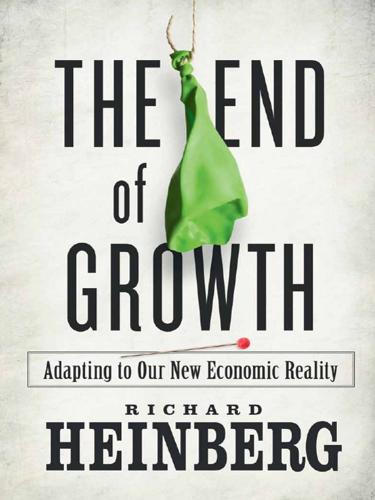
The End of Growth: Adapting to Our New Economic Reality
by
Richard Heinberg
Published 1 Jun 2011
“Peak Everything,” Wired.com, wired.com/inspiredbyyou/2010/10/peak-everything/?ibypid=13. 92. Aeldric, “The Networking of Resource Production: Do the Networks Give Us Warnings When They Are About to Fail?,” The Oil Drum, posted September 22, 2010, anz.theoildrum.com/node/6974#more. 93. Paul Crutzen, “The ‘Anthropocene’,” in Earth System Science in the Anthropocene: Emerging Issues and Problems, Eckart Ehlers and Thomas Krafft, eds. (New York: Springer, 2006). 94. Joseph A. Tainter, The Collapse of Complex Societies, New Studies in Archaeology, (Cambridge UK: Cambridge University Press, 1988). 95. Graeme Wearden, “BP oil spill costs to hit $40bn,” Guardian.co.uk, posted November 2, 2010. 96.
…
The billions of tons of carbon dioxide that our species has released into the atmosphere through the combustion of fossil fuels are not only changing the global climate but also causing the oceans to acidify. Indeed, the scale of our collective impact on the planet has grown to such an extent that many scientists contend that Earth has entered a new geologic era — the Anthropocene.93 Humanly generated threats to the environment’s ability to support civilization are now capable of overwhelming civilization’s ability to adapt and regroup. Ironically, in many cases natural disasters have actually added to the GDP. This is because of the rebound effect, wherein money is spent on disaster recovery that wouldn’t otherwise have been spent.
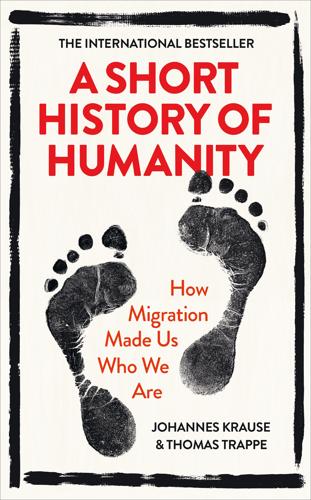
A Short History of Humanity: How Migration Made Us Who We Are
by
Johannes Krause
and
Thomas Trappe
Published 8 Apr 2021
Of course, this scenario is several thousand years in the future; the Holocene will probably last at least that long. Another theory suggests that human-caused climate change may even prevent the next Ice Age entirely. For this reason, many geologists and climate scientists have abandoned the terms “Pleistocene” or “Holocene” for our period, instead calling it the “Anthropocene”—the age of humankind. A SIMPLE LIFE IN THE WILD * * * AFTER EUROPE BEGAN TO GROW WARMER 11,700 YEARS ago, hunter-gatherers continued to shape the continent. Hunting and gathering wasn’t just a historical phase—it’s human nature. For millions of years, ever since we started walking upright, using tools to hunt, and compensating for our physical inferiority by developing increasingly powerful brains, we have been optimizing our survival strategy.
…
Africa: changing landscape of, 45–46, 60 genetic diversity in, 222–23 languages in, 38, 135 migration from, 41–43, 48, 197 “Out of Africa” theory, 35–37, 222 population of, 222 TB in, 196–97 agriculture: and community, 217 development of, 71 in Europe, 79, 89, 115, 219 and migration, 131, 133, 213 in Neolithic period, 71–72 see also farmers Akkadian Empire, 149 Alaska: horses in, 110 theory of migration through, 99, 100, 196 Albanian language, 121, 135 Altai Mountains, Siberia, 16, 38, 107, 133, 134, 169 amoeba, genes in, 13 amylase gene, 68 Anatolia: and Balkan DNA, 52–53, 77–79 farmers in, x, 71–72, 84–85, 86, 101, 133 Göbekli Tepe excavation, 69–70, 69 Hittites in, 124, 141, 152 hunter-gatherers in, 52, 71–73, 84–85 and languages, 121, 132, 134 migrants to Europe from, 53, 73, 107, 114, 128, 130, 219 Neolithic genes from, 105, 126 vegetarian diet in, 74–75 ancestors, common, 19–20 ancestry, 224–25, 245–46 fairy tales of, 19, 20 Anglo-Saxons, 21 animals: bovine tuberculosis, 195, 196, 197 butchered for meat, 93, 94 cattle, 114–15 chimpanzees, 12, 35–37, 39, 45–46 diseases passed from humans to, 196 diseases passed to humans from, 93–94, 171, 206 domesticated, 67–68, 70–71, 84, 93, 206 horses, 107–12 monkeys, 204 seals, 197 Anthropocene period, 62 antibiotics, 164, 185, 205–6 antibodies, 182 archeogenetics: birth of, 4–5 roles of, viii, ix, 10, 21, 22, 155–56, 207, 218 Ardipithecus, 35 Arendt, Hannah, 227 Armenian language, 135 Asia: Denisovans in, 28, 29, 36 leprosy in, 190 migration to, 28, 41–43 and Peking Man, 35, 36 plague from, 184–85 Assyrian Empire, 152 Aurignacian period, 43–45, 48–52, 247, 248 Australia: Denisovans in, 223 language in, 135 skin cancer in, 74, 75 Australopithecus, 35 Azerbaijan, language in, 134 Babylon, city of, 141, 150 bacteria, 23, 163–64 and antibiotics, 164, 185, 205–6 drug-resistant, 205–6 effects on humans, 169 evolving, 169, 205 genetic blueprint of, 13 Baikal region, 101, 169, 198 Balkan region, 52–53, 77–79 Balto-Slavic languages, 121, 135 barley, 70 barrows, 91, 102, 103, 106 Basques, 126–27, 128 bats, 163 Battle Axe culture, 108, 109, 218 Bell Beaker culture, 96–97, 108–9, 114, 118, 135, 140, 142 Black Death, 158–59, 160–63, 166, 167, 174, 177, 180, 182–85 Blätterhöhle cave site, Germany, 82, 84, 87 blue eyes, 75–76 boat building, 92 Böcklin, Arnold, The Plague, 173 Botai culture, 110, 111 bovine tuberculosis, 195, 196, 197 brain, development of, 46–47 Bronze Age, 104, 118, 140–51 consumerism in, 144–46 fresco from, 127 languages in, 133 male dominance in, 112–14 mass production in, 146 migrations in, 21, 155, 214, 217, 218, 219 mining in, 140–42, 144–45 onset of, vii, 136, 140–42, 144 populations in, 151 weapons in, 146–49, 153 buboes, 175 bubonic plague, 159, 165, 166–67, 171, 174, 175, 176, 180, 183, 184–85 Canaan, 152, 153, 154 carbon dating, 10, 244 Cardial Ware culture, 78 CCR5 receptor, 194, 234 cell nuclei, 13 Celtic languages, 120, 135 Celts, mtDNA of, 18–19 ceramics, 78, 90, 108–9, 144 Charlemagne, 19 Charpentier, Emmenuelle, 233 Chauvet Cave, France, cave paintings in, 49 chimpanzees: humans different from, 12, 45–46 human split from, 35–37, 39 skin color of, 77 China: language in, 133 and plague, 184–85 China National GeneBank, 232 civilizations: development of, 217 first, 141 climate change, 58, 60–62 climbing, by apes vs. humans, 45, 46 Clinton, Bill, 6 clones, 183 cocoliztli epidemic, 199–201, 200 Columbus, Christopher, 196, 197, 201, 206, 217 common ancestors, 19–20 Balkan migrants, 53 Homo erectus, 25 matrilineal, 27 Copper Age, 104, 140–41 Corded Ware culture, 96–97, 108, 113, 114, 116, 118, 140, 142 Covid 19 virus (coronavirus), viii–ix, x–xi, 23, 41, 205 Crick, Francis, 7 CRISPR/Cas9 system, 233–35, 248 cultural suppression, 213 dead, disposal of: burial in cemeteries, 142–44, 167, 179, 200 burial in monastery, 203 burning, 91, 169 and grave goods, 144, 244 in mass graves, 88 in megalith tombs, 91, 102 Defense Threat Reduction Agency, Algorithm Challenge, 167–68 de’Mussis, Gabriele, 178 Denisova Cave, Siberian Altai Mountains, 16, 24, 25 Denisova hominin, finger bone of, 6, 7, 11, 16, 24–27, 29–30 Denisovans: discovery of, 11, 30 evolution from Homo erectus, 35–36 inbreeding of, 246 Neanderthal split from, 28, 30 as separate species, 40 Derevyanko, Anatoly, 24, 28 “designer babies,” 235 diet: changes in, 68 of hunter-gatherers, 65–66, 85, 215–16 inadequate mineralization in, 86 meat consumption, 71, 84, 85, 93, 94 milk in, 94, 115–17 and skin pigmentation, 74–75 Stone Age, 64–65, 66, 216 and stress, 85–88 and teeth, 64–65, 142–43 vegetarian, 74–75, 84, 85 diseases, 160–86, 179 of affluence, 206 airborne infection of, 179 animal-human transmission of, 93–94, 163, 171, 206 and biowarfare, 177 common ancestors of, 196 DNA sequencing of, 168 human-animal transmission of, 196 human-human transmission of, 93, 171, 206–7 and immune system, 180–82 and migration, viii–ix, x, 22–23, 156, 158–59, 171, 175–76, 188–89, 212–15, 217 and pandemics, see pandemics and quarantine, 178–79 and tourism, 184–85, 206 see also specific diseases DNA: age of, 17–18 algorithm of, 168 analysis of, 9, 21, 25, 144, 156 as blueprint of life, 7, 13, 244 contamination of, 9, 15, 16, 18 decoding, 6, 7, 8, 10, 22 extraction from fossils, 9, 10, 24–25, 167 and Human Genome Project, 6, 7, 8 mitochondrial (mtDNA), 17, 27, 28–30, 244–45 mutations of, 11–12, 29 nuclear, 1, 27, 28–30, 244 sequencing of, 7, 8, 15–16, 168, 218 similarity among humans, 21, 225–26 structure of, 7 dogs, 67–68 Dolní Věstonice, Czech Republic, 50 Doudna, Jennifer, 233 Dravidian languages, 132 Duden dictionary, 136 Ebola virus, 23, 162 Egypt: in battle, 150 leprosy in, 190, 192 migration from, 154–55 New Kingdom of, 152 pharaohs of, 141 sea peoples’ attack on, 150, 152–55 emmer (wheat ancestor), 70 England, see Great Britain enteric fever, 199 ethnicity, 220–22, 225–29 Etruscans, 126, 128 Europe: agriculture in, 79, 89, 115, 219 Anatolians in, 53, 73, 77–79, 84–85, 107, 114, 128, 130, 219 Aurignacians in, 49–52 Bell Beaker culture in, 108–9 Bronze Age in, 140–42, 144–46 and climate change, 48–49 genetic foundations of, 20–22, 53, 106–7, 114, 155, 214 hunter-gatherers in, 73, 219 languages in, 127–29, 131, 135–36 life extinguished in, 51–53 Mal’ta boy’s genes in, 100 migration across, 35, 41–43, 73, 106–7 migration to, x, 20, 23, 28, 43, 53, 73, 101–2, 105, 128–29, 156, 213–14, 217, 219–20 Neanderthals in, 29, 35, 36, 38, 48, 155 Neolithic Revolution in, 72, 73–77, 90, 213–14 pathogens from Americas to, 198–201, 202 plague in, 158, 160, 169, 171–80, 182–86, 198 syphilis in, 201–4, 206 typhoid in, 201 evolution: adaptation in, 45–46, 59, 65, 68 description of, 13 and gene editing technology, 233–35 extinction, 48–49 eye pigmentation, 75–76 farmers: in Anatolia, x, 71–72, 84–85, 86, 101, 133 competition for land, 88–89 consumer society of, 145 developing practices of, 71 diets of, 71, 85 DNA of, 107 domesticated animals of, 93, 206 extended families of, 87 good soil needed by, 87–88, 115 hunter-gatherers displaced by, x, 71, 114, 215 mass graves of, 88 in Neolithic age, 145 never-ending work of, 85–87 patriarchal system of, 148 Fertile Crescent: agriculture in, 131, 133, 219 Bronze Age in, 149–51 languages in, 131 livestock raised in, 70–71 finger bone of Denisovan girl, 6, 7, 11, 16, 24–27, 29–30 Finno-Ugric languages, 127 flagella, 181 fleas, 93, 165–66, 170, 174, 175 flu virus, 162, 182, 183, 199, 204 food: competition for, 66 cultivation of crops, 70 fermented, 117 sources of, 143 storage of, 93, 217 see also diet 4.2-kiloyear event, 149, 152 FOXP2 gene, 39, 247 France: Bell Beaker culture in, 108 genetic material in, 107 language of, 135 Franklin, Rosalind, 7 Fuhlrott, Johann Carl, 30 Funnel Beaker culture, 90–91, 92 gene editing, 233–35 genes, 13–15 “intelligence gene,” 229–32 “Jewish gene,” 227–29 teamwork of, 13 genetic engineering, 70, 233–35 “genetic fossils,” 92 genetic research, developments in, 232–35 genetics, 6, 230–31 genetic sequencing, 218 genetic tests, 18, 20, 225, 232 genome: human, 8, 13–15, 225, 233, 243 Neanderthal, 11 nuclear, 19 Germanic languages, 120, 136, 218 Germany: Bell Beaker culture in, 108 Nazis in, 108, 109, 218, 219, 226, 227 refugee crisis in (2015), viii global melting pot, 206–7, 210–11, 226 Göbekli Tepe excavation, Anatolia, 69–70, 69 Golden Horde Empire, 177, 184 Goliath, 152–53 Goths, 21 gradient principle, 220–22 Gravettian period, 49–51, 247–48 Gray, Russell, 130 Great Britain: Bell Beaker culture in, 108, 109, 135 genetic structure in, 106, 107 leprosy in, 191 migration to, 106, 107, 129, 155–56 syphilis in, 204 Greek language, 121, 124–26, 130, 135 Grotte des Pigeons, Morocco, 248 Guatemala, cocoliztli epidemic in, 199–201, 200 Gulf Stream, 59, 89 haplogroups, 113–14 He Jiankui, 234 heredity, misunderstandings about, 18 Hittite Empire, 141, 152, 190 Hittite languages, 121, 124, 130 Hittite plague, 174 HIV, 194, 205, 206, 234 Hohle Fels, Germany, cave art in, 42, 44 Hohlenstein-Stadel Cave, Swabian Alps, carving from, 43, 43 Holocene period, 59, 60 Homo erectus, 25, 28, 35–36 Homo ergaster, 36 Homo sapiens, 36 Hong Kong plague, 172, 184 horses, 107–12 mustangs, 111 plague carried by, 171 Przewalski’s horses, 110–12, 111, 171, 172 resistance to plague, 172 households, structures of, 144 Human Genome Project, 6, 7, 8 humans: adaptation of pathogens to, 163, 206 body height of, 230–31 differences between chimpanzees and, 12, 45–46 diseases passed from animals to, 93–94, 171, 206 immunity of, 40–41, 192–94 and language, 39 split from chimpanzees, 35–37, 39 Hungary, language in, 127 hunter-gatherers: in Anatolia, 52, 71–73, 84–85 diets of, 64–66, 85, 215–16 displaced by farmers, x, 71–73, 114, 215 and evolution, 65 languages of, 128 modern interest in lifestyle of, 215–20 movement of, 64 in Scandinavia, 89–90, 92, 93 hunting strategies, 46 Huson, Daniel, 167–68 hyoid bone, 39 Iberian Peninsula: Aurignacians in, 51–52 Bell Beaker culture in, 108–9 migrants in Europe from, 53 Ice Age: Aurignacians in, 48 Balkans and Anatolians in, 77–79 end of, 59 Last Glacial Maximum in, 51–53 mtDNA decoded from, 17, 18, 248 Neanderthals living in, 38–39 new, 59, 61 and Younger Dryas, 59 “Iceman” or “Ötzi” (human remains), 100 immigrants, see migration immune system, 164, 180–82, 191–94 immunity gene, 40–41 immunization, 164 India: languages of, 132, 135 migration to, 133 steppe genes in, 132 Indo-European languages, 122–24, 126–27 common ancestor of, 132 family tree of, 132, 135–36 and Iranian Neolithic, 133 origins of, 129–31 Indo-Iranian language, 121, 135 Iran: languages of, 132–33 migration from, 133 Iranian Neolithic, 132, 133, 134 Iron Age: beginning of, 151 cultures in, 154 Italy: genetic material in, 107 lactose intolerance in, 117 languages of, 134–35 Jews, and anti-Semitism, 178, 227–28 Justinianic plague, 158–59, 160, 166, 167, 174, 175, 177 Kazakh steppes, 101, 110 Kurdish language, 134 Kurds, genetic components of, 53 kurgans, 103 lactase, 115–16 lactose intolerance, 115–17, 118 Lake Bracciano, Italy, oldest boat in, 92 languages, 38–39, 120–21, 122–36 common roots of, 122, 123, 132 hybrid hypothesis of, 129–31, 132, 134 Linear A and B, 124–26 and migration, 118, 122, 124, 134, 135–36 and power, 134–36 see also specific languages language tree, 130, 132 Latin language, 126, 130, 134, 135 law-free zone, 148 Lech River settlements, 142, 143, 144, 147 leprosy, 188–89, 190–92, 194, 195, 204, 206 lice, as source of disease, 93 Linear A and B languages, 124–26 Linear Pottery culture, 78 lion-man carving, 43, 43 London, Black Death in, 167, 180 Longobards, 21 “Lucy,” 35 Luther, Martin, 136 macrophages, 181 Magdeburg Börde, Germany, 88 Maikop culture, 131 malaria, 193–94 Mal’ta boy, 99–101, 198 “Markina Gora,” 48, 247 massacres, 88 measles, 22 Medînet Hâbu temple, Egypt, 150 Mediterranean area: refugees in, 151 sea peoples in, 152–55 megalith tombs, 91 melanin, 75 melanocortin receptors, 75 Mesolithic period, 65–66 Mexico, cocoliztli epidemic in, 199–201, 200 microbes, 168 Middle Ages, plagues in, vii, 176–80, 185 migration, 32–33, 56–57, 210–11 and agriculture, 131, 133, 213 and cultural change, 109, 140, 215, 219 and cultural suppression, 213 and disease, viii–ix, x, 22–23, 156, 158–59, 169, 171, 175–76, 188–89, 212–15, 217 DNA altered by, 20 economic effects of, x, 217, 226 genetic adaptation in, 14–15, 155–56 and global climate, 58, 60–62 global patterns of, 228 and language, 118 of refugees, 151 migration period, 20, 21 milk, 115–17, 195 mining, 140–42, 144–45 Minoans, 124–26, 125, 127, 128, 141 “mitochondrian Eve,” 27 Mittelelbe-Saale region, Germany, 100, 106 molecular clock, 14, 15, 27, 246 molecular switches, 14 Mongolia, Mal’ta boy in, 99–101 mtDNA (mitochondrial DNA), 17 as matrilineal, 27, 85, 113, 244–45 musical instrument, first, 44 mutations, 10, 11–18 definition of, 12 of language, 130 neutral, 15 numbers of, 14 passed to future generations, 12 of pathogens, 165, 183 persistent, 15 purposes of, 12–13 Mycenaeans, 124, 126, 130, 141, 152, 153, 248 Mycobacterium leprae, 190–91 Napoleon, mtDNA shared by, 19 nationalism, 107–9, 220, 227 Natufian culture, 69 Nature, 26 Nazis (Germany), 108, 109, 218, 219, 226, 227 Neanderthals: decoding DNA of, 11, 155, 246 Denisovan split from, 28, 30 discovery of, 30 fossils of, 9, 28–29 and Homo erectus, 25, 28, 35–36 hyoid bones of, 39 in Ice Age, 38–39 intermingling with, 41 modern descendents of, 36, 40, 222–23 name of, 9 reconstruction of, 17 as separate species, 39–41 small gene pool of, 246 as “type of human,” 40 Near East: climatic shift in, 70 consolidation in, 151–52 in Neolithic period, 71 Nebra sky disk, 142, 147 Neolithic period, 59, 145 age of agriculture in, 71–72 diet in, 216 in Europe, 72, 73–77, 90, 213–14, 219 fortifications in, 88, 89, 147 genetic material from, 105 Iranian Neolithic, 133, 134 Late or Final Neolithic, 104 population numbers in, 93 weapons in, 88–89, 147 Neolithic Revolution, 72, 73–77, 109, 123, 128, 140, 155, 213 neurosyphilis, 202 Newman, Paul, 76 nomads, as cattle herders, 114–17 North American indigenous peoples: disease from migrants, 22–23, 169, 217 sources of genetic material in, 101 syphilis originating from, 23 Northern Hemisphere, migration to, 60–61 North Eurasians, genetic material from, 101 Oase Cave, Romania, 41, 247 Obama, Barack, 224 Oberkassel, Germany, dog in grave, 67 “Ötzi” or “Iceman” (human remains), 100 “Out of Africa” theory, 35–37, 222 Pääbo, Svante, 10–11, 15, 24, 25, 28 Paleo-Sardinian, 126, 128 pandemics, 23, 188–89 future, 168 “third epidemiological transition,” 205–7 unhygienic conditions in, 165 see also specific diseases parallel societies, 82–83 paratyphoid, 199–200, 204 Pasteur, Louis, 172 pathogens: adaptation to humans, 163, 206 evolution of, 23 mutation of, 165, 183 reconstruction of, 166, 167 sequencing of, 161–62 spreading of, 22, 169, 175 patriarchal structures, 138–39, 144, 148 Peking Man, 35, 36 Peru, TB in, 196 Philistines, 152–53, 154 plague, 160–86, 161, 206 ancient bacteria of, 23, 184, 204 bubonic, 158–59, 165, 166–67, 171, 174, 175, 176, 180, 183, 184–85 early pathogens discovered, 168–69, 170, 174 immunity from, 180, 182, 183 Justinianic, 158–59, 160, 166, 167, 174, 175, 177 mutation rate of, 183 oldest known, 105, 166 pneumonic, 166, 171, 185 samples collected from graves, 179 “Second Pandemic” of, 182–83 sequencing genomes of, 183 spread of, 170 Stone Age, vii–viii, 158–59, 160, 169, 170, 172, 174 Yersinia bacteria, 162–63, 172 pneumonic plague, 166, 171, 185 polymerase chain reaction, 8, 243 Pontic steppe, 101, 102, 129, 132 and plague, 160, 192 Yamnaya culture of, 102, 103, 104 population, world, 236 prairie dogs, 185 Procopius of Caesarea, 175 Proto-Indo-European languages, 121, 123, 131, 134, 135 Przewalski’s horses, 110–12, 111, 171, 172 quarantine, 178–79 R1a and R1b haplogroups, 113–14 radiocarbon dating, 10, 244 Ramses III, 150, 152 rats, 165, 174, 175, 176, 184–86 redheads, 75 “reservoir,” use of term, 248 ribosomes, 244 Romance languages, 120, 135 Roman Empire: advance of, 135, 136, 174 collapse of, 21, 166, 175, 176 roots, longing for, 216–17 rulers (kings), 148, 149 running, by apes vs. humans, 45–46 Russia: genetic material in, 107 languages in, 127 plague bacteria in, 23 Salmonella enterica paratyphi C, 199 Salzmünde culture, 91 Samara region, 174 Santorini, eruption of, 126, 127 Sardinia: “genetic fossils” in, 92 thalassemia gene in, 193 Sarrazin, Thilo, 228 SARS-CoV-2, see Covid 19 virus Scandinavia: agriculture in, 90–91, 92 Anatolians in, 92 Battle Axe culture in, 108, 109, 218 Funnel Beaker culture in, 90–91, 92 hunter-gatherers in, 89–90, 92, 93 land not suited to agriculture, 89 language in, 127 tools and equipment in, 90 seals, TB bacterium in, 197 sea peoples, 150, 152–55 sexually transmitted disease: HIV, 194, 205, 206 syphilis, 201–4 shaman of Bad Dürrenberg, 63–64, 63, 65, 216 Siberia, genetic material from, 101 sickle cell anemia, 193–94 Sima de los Huesos, Spain, Neanderthal fossil from, 28–29, 35 single young men, 96–97 skeletons, 21, 161, 167 Skhul Cave, Israel, 247 skin pigmentation, 73–77, 223–25 Slavic language, 129 smallpox, 22, 161, 199, 204–5 South and Central American indigenous peoples: diseases moving from Europe to, 217 diseases moving to Europe from, 197–201 South Asia, language in, 135 Southeast Asia, flu from, 162 Spain: Aurignacians in, 51–52 language of, 135, 136 steppe migrants in, 106–7 syphilis in, 201 Spanish flu, 204 species system, invention of, 39–40 Starčevo culture, 77 steppes: areas of, 101 cattle herders from, 114–15 diseases from, 192 DNA from, 101, 105–6, 109, 113, 172 horses in, 107, 171, 172 languages from, 132–34 migration to Europe from, 20, 101–2, 105–7, 109, 128–29, 136, 140, 155, 156, 169, 217, 219–20 weapons of, 108 Stone Age: bones from, 24 carved figures of, 42, 63 diet in, 64–65, 66, 216 hunter-gatherers in, 64, 66 migrations in, 21, 104, 169, 217 reproduction in, 65–66 teeth in, 64–65, 168 violence in, 66–67, 113 Stone Age plague, vii–viii, 158–59, 160, 169, 170, 172, 174 Stonehenge, 106 strontium isotope analysis, 142–43 Sumerian Empire, 150 Swabian farmer, female, 72–73 Switzerland, Corded Ware culture in, 116 syphilis, 23, 188–89, 201–4, 206 teeth: and diet, 64–65, 142–43 and plague pathogens, 168 strontium isotope analysis of, 142–43 thalassemia, 193 Thirty Years’ War, 180 Tocharian language, 132, 133 trade routes: development of, 141, 145, 148 pathogens spread via, 22, 169, 175 transcription factor, 247 true origins, myth of, 18–22 Trump, Donald, 212 tuberculosis (TB), 188–89, 194–98, 204, 205, 206 Turkey: genetic materials in, 53 languages in, 134 typhoid fever, 188–89, 199–201, 206 Unetice culture, 142, 148–49 Upper Paleolithic period, 50 Ur, 141, 150 Ust’-Ishim, Siberia, 41 Uzbekistan, language in, 134 vaccination, 182, 216 Venice, plague in, 178 Venus figurines, 42, 43–44, 51 Venus of Hohle Fels (carving), 42 violence: and male dominance, 112–14 state monopoly on, 148 in Stone Age, 66–67, 113 and weapons, 107–8, 146–49 virulence genes, 165 viruses, 23, 163–64, 169 vitamin D, 74–75 war: biowarfare, 177 fatalities of, 180 and power, 150–51 warriors, and horses, 107–8 Watson, James, 7, 229–30 weapons: in Bronze Age, 146–49, 153 Neolithic, 88–89, 147 production of, 146 and warriors, 107–8 Wolgemut, Michael, Dance of the Skeletons, 161 wolves, 67–68, 93 Yamnaya culture, 105–6, 110, 116, 121, 168, 170 barrows of, 102, 103, 106 migration of, 104, 112, 133, 159 yaws, 203–4 “Y-chromosomal Adam,” 27 Y chromosomes, 112–14 Yersin, Alexandre, 172, 173 Yersinia pestis, 160, 162–63, 172, 177 Yersinia pseudotuberculosis, 163, 181 Younger Dryas, 59 Zagros Mountains, Iran, 69 Zazaki language, 134 zoonotic transmission, 163 THIS IS JUST THE BEGINNING Find us online and join the conversation Follow us on Twitter twitter.com/penguinukbooks Like us on Facebook facebook.com/penguinbooks Share the love on Instagram instagram.com/penguinukbooks Watch our authors on YouTube youtube.com/penguinbooks Pin Penguin books to your Pinterest pinterest.com/penguinukbooks Listen to audiobook clips at soundcloud.com/penguin-books Find out more about the author and discover your next read at penguin.co.uk EBURY UK | USA | Canada | Ireland | Australia New Zealand | India | South Africa Ebury is part of the Penguin Random House group of companies whose addresses can be found at global.penguinrandomhouse.com.
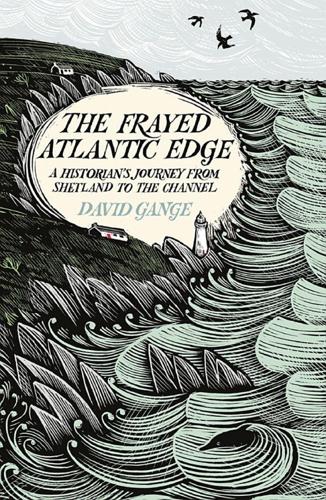
The Frayed Atlantic Edge: A Historian’s Journey From Shetland to the Channel
by
David Gange
Published 10 Jul 2019
The largest such ‘kiln’ is thirty metres deep by fifteen wide: within it, swell churns until it bubbles as if boiling. This movement threatened to pull me in as I hung at its mouth to marvel at the fracturing, scarring and sagging that the sea inflicted. These geological creations felt like the imaginary future ruins of a civilisation lost to the rising seas of the Anthropocene. But the most remarkable features of this landscape belong to the shorter span of time between prehistory and the Victorians. I soon had vistas across the parish of Quandale, where old abandoned townships are sandwiched between the Atlantic and the hilly moorland called the Brae of Moan. It was only here that the true tragedy of the survival of Rousay’s archaeological heritage struck me.
…
Following the watery threads that lead back to the Mesolithic provokes the realisation that our species is not by nature settled and land-bound. It reveals the myths on which ‘we Mesopotamians’ have constructed the separation of people and nature from which our current eco-crises emanate: these Mesolithic seafarers have been argued to be the only humans in the whole of time and space who are not the ‘anthro’ in Anthropocene. And we would benefit from seeing through what we imagine to be their eyes more often. The long, dark night I spent between knuckles of knock and lochan on the edge of the Inner Sound was intensely atmospheric. I hunkered down against a thin smurr of rain, sometimes caught in moonlight, with the thick smell of sodden peat eclipsing the salt of sea just feet away.
…
Ecologically, all owe a great deal to Aldo Leopold whose ‘land ethic’ insisted that, since all plants and animals (including humans) sink or swim together in our fragile ecosystem, all are entitled to citizenship as equal members of the biotic community. The radical work of Donna Haraway and Jason Moore, perhaps best approached through collected editions such as Jason W. Moore (ed.), Anthropocene or Capitalocene? (Oakland, CA, 2016) provides further evidence for the importance of these approaches. Historians have made some headway in adapting their ideas, but much less than literary scholars, geographers or social scientists; Timothy Mitchell’s ‘Can the Mosquito Speak?’ remains one of the few convincing historical experiments towards this goal; in relation to this book’s themes, the closest thing yet written is perhaps Marcus Rediker, ‘History from the Below the Water Line: Sharks and the Atlantic Slave Trade’, Atlantic History (2008). 6 There have been several calls to end this situation and rethink the skill sets involved in historical practice, such as Mark Levene, ‘Climate Blues: Or How Awareness of the Human End might Re-instil Ethical Purpose to the Writing of History’, Environmental Humanities (2013), and Daniel Smail, On Deep History and the Brain (2007). 7 For the beginning of a new, more concerted, attempt to write ocean histories, see the volume mentioned above, David Armitage, Alison Bashford and Sujit Sivasundaram, Oceanic Histories (Cambridge, 2018); the work of Sverker Sörlin, on the Arctic ocean, is a particularly insightful contribution combining multiple kinds of history into a genuine study of ocean, not just the maritime movement of people.
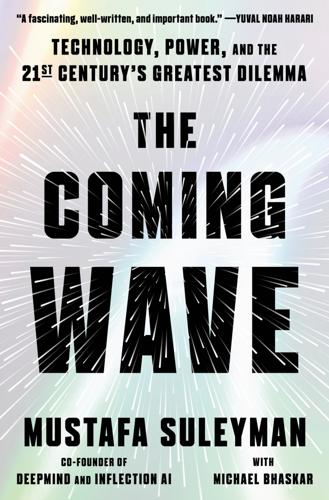
The Coming Wave: Technology, Power, and the Twenty-First Century's Greatest Dilemma
by
Mustafa Suleyman
Published 4 Sep 2023
Bachman, adapted for ebook Cover design: Christopher Brand and Oliver Munday ep_prh_6.1_144835715_c0_r0 Contents Cover Title Page Copyright Glossary of Key Terms Prologue Chapter 1: Containment Is Not Possible Part I: Homo Technologicus Chapter 2: Endless Proliferation Chapter 3: The Containment Problem Part II: The Next Wave Chapter 4: The Technology of Intelligence Chapter 5: The Technology of Life Chapter 6: The Wider Wave Chapter 7: Four Features of the Coming Wave Chapter 8: Unstoppable Incentives Part III: States of Failure Chapter 9: The Grand Bargain Chapter 10: Fragility Amplifiers Chapter 11: The Future of Nations Chapter 12: The Dilemma Part IV: Through the Wave Chapter 13: Containment Must Be Possible Chapter 14: Ten Steps Toward Containment Life After the Anthropocene Acknowledgments Notes Index About the Authors _144835715_ GLOSSARY OF KEY TERMS AI, AGI, AND ACI: Artificial intelligence (AI) is the science of teaching machines to learn humanlike capabilities. Artificial general intelligence (AGI) is the point at which an AI can perform all human cognitive skills better than the smartest humans.
…
We should all get comfortable with living with contradictions in this era of exponential change and unfurling powers. Assume the worst, plan for it, give it everything. Stick doggedly to the narrow path. Get a world beyond the elites engaged and pushing. If enough people start building that elusive “we,” those glimmers of hope will become raging fires of change. LIFE AFTER THE ANTHROPOCENE It was quiet. Windows and shutters were closed, fires and candles put out, meals eaten. The bustle and hum of the busy day receded, and only the occasional bark of a dog, or scratching in the undergrowth, or soft rustle of the wind in the trees broke the hush. The world exhaled and slumbered.
…
For another example of a holistic approach to containment strategy, see Allison Duettmann, “Defend Against Physical Threats: Multipolar Active Shields,” Foresight Institute, Feb. 14, 2022, foresightinstitute.substack.com/p/defend-physical. GO TO NOTE REFERENCE IN TEXT The economist Daron Acemoglu Daron Acemoglu and James Robinson, The Narrow Corridor: How Nations Struggle for Liberty (London: Viking, 2019). GO TO NOTE REFERENCE IN TEXT Life After the Anthropocene Technology should amplify See, for example, arguments like that of Divya Siddarth et al., “How AI Fails Us,” Edmond and Lily Safra Center for Ethics, Dec. 1, 2021, ethics.harvard.edu/how-ai-fails-us. GO TO NOTE REFERENCE IN TEXT INDEX The page numbers in this index refer to the printed version of the book.

Wilding: The Return of Nature to a British Farm
by
Isabella Tree
Published 2 May 2018
Many argue that the stubborn little prefix ‘re-’ reveals a naive ambition to recover the past. ‘Rewilders’, they claim, are idealists calling for the impossible – a return to a state of nature that, because of species and habitat losses down the centuries, irreversible changes to soil and climate, and the incalculable impositions of ‘The Anthropocene’, can no longer exist. We knew we were not guilty of that. Our landscape in Sussex is so heavily influenced by human beings, so altered by its history and the prevailing conditions of the present, we could only ever hope to create something for the future out of the ingredients remaining to us.
…
All except one – a dark grey cow with sweeping, upright horns, who warily rises to her feet as we approach. The Black Bitch is notoriously shirty and prone to charging anyone who comes near her calf. We have tolerated her because she is such a good mother. There’s a spirit about her we can’t help but admire. But this is rewilding in the Anthropocene with footpaths and dog-walkers to consider. The lofty whorl, like an Indian bindi in the middle of her forehead above her eyes, confirms what we already instinctively know. We have to cull her, Temple suggests, and, to ensure her over-protective genes are not passed on, all her progeny must go, too.
…
Index Aberdeen Angus cattle see under cattle, breeds of Aberfoyle, Scotland ref1 adder’s tongue fern (Ophioglossum vulgatum ) ref1 ADHD ref1 , ref2 Adur, river/valley canalization of ref1 , ref2 , ref3 , ref4 , ref5 , ref6 flooding ref1 , ref2 as HLS target area ref1 Operation Turtle Dove ref1 origin of name ref1 potential for beavers ref1 re-naturalization of ref1 , ref2 , ref3 aesthetics, as ecosystem service ref1 Africa ref1 , ref2 , ref3 , ref4 , ref5 , ref6 agricultural fertilizers see chemical fertilizers Agricultural Property Relief ref1 Agriculture Act, 1947 ref1 air quality ref1 , ref2 , ref3 alder (Alnus glutinosa ) ref1 , ref2 , ref3 , ref4 Alexander, Dr Keith ref1 algae ref1 Alice Holt, Hampshire/Surrey border ref1 alien species ref1 , ref2 Allen, Dr Mike ref1 Alps ref1 Alzheimer’s disease ref1 , ref2 , ref3 American mink (Neovison vison ) ref1 amphibians ref1 see also common lizard , common newt , common toad , great crested newt , natterjack toad ancient woodland ref1 , ref2 , ref3 , ref4 , ref5 , ref6 , ref7 anecic earthworms ref1 , ref2 anemone see wood anemone angelica see wild angelica Anthropocene era ref1 , ref2 antibiotics, new ref1 effects on the soil ref1 use in intensive livestock farming ref1 ants ref1 , ref2 , ref3 apex predator trophic cascades ref1 , ref2 apple see crab apple Appleby, Cumbria ref1 aquatic invertebrates ref1 fairy shrimp (Chirocephalus diaphanus ) ref1 krill ref1 aquatic plants ref1 arable farming see also food production and chemical fertilizers cereal production ref1 , ref2 , ref3 , ref4 , ref5 crop yields and earthworms ref1 , ref2 decrease in land usage ref1 and flooding ref1 grain consumption ref1 , ref2 , ref3 , ref4 at Knepp ref1 , ref2 , ref3 policies/subsidies ref1 , ref2 Second World War ref1 , ref2 Arctic alpine plants ref1 Arctic char (Salvelinus alpinus ) ref1 ARK Foundation ref1 artificial fertilizers see chemical fertilizers Arun, river ref1 , ref2 ash (Fraxinus excelsior ) ref1 , ref2 , ref3 , ref4 , ref5 , ref6 , ref7 , ref8 , ref9 , ref10 ash die-back (Chalara ) ref1 , ref2 Asia ref1 , ref2 aspen (Populus tremula ) ref1 , ref2 Atlas Mountains, Morocco ref1 Atlas of European Breeding Birds ref1 attention deficit hyperactivity disorder (ADHD) ref1 , ref2 aurochs (Bos primigenius ) ref1 , ref2 , ref3 , ref4 , ref5 , ref6 , ref7 , ref8 , ref9 avermectins ref1 , ref2 , ref3 , ref4 , ref5 bacteria and carcass decomposition ref1 , ref2 decline in populations of ref1 and soil ref1 , ref2 , ref3 , ref4 badger (Meles meles ) ref1 , ref2 , ref3 , ref4 , ref5 Baerselman, Fred ref1 Balharry, Dick ref1 Balkans ref1 Baltic States ref1 bank vole (Myodes glareolus ) ref1 Bannerman, David Armitage ref1 barbastelle bat (Barbastella barbastellus ) ref1 , ref2 , ref3 , ref4 Barkham, Patrick ref1 barn owl (Tyto alba ) ref1 Barnes, Simon ref1 basil thyme (Clinopodium acinos ) ref1 Bateman, Mark (stable manager) ref1 bats ref1 , ref2 , ref3 , ref4 , ref5 , ref6 see also barbastelle , Bechstein’s , common pipistrelle , Daubenten’s , greater horseshoe , whiskered bat Bavaria, Germany ref1 ‘BB’ see Watkins-Pitchford, Denys bearded tit (Panurus biarmicus ) ref1 bears ref1 , ref2 , ref3 see also brown bear , grizzly bear beautiful china mark moth see under moths, species of Beaver Advisory Committee for England (BACE) ref1 , ref2 , ref3 beavers see also individual species attitudes towards ref1 , ref2 , ref3 , ref4 , ref5 , ref6 , ref7 , ref8 BBC Springwatch ref1 Devon Wildlife Trust ref1 , ref2 earliest presence of ref1 , ref2 future plans ref1 Knapdale trial ref1 , ref2 population increases ref1 , ref2 , ref3 , ref4 , ref5 Rewilding Britain ref1 role of ref1 , ref2 , ref3 and tourism ref1 Bechstein’s bat (Myotis bechsteinii ) ref1 , ref2 Bee Quest (Goulson) ref1 beech (Fagus sylvatica ) ref1 , ref2 , ref3 , ref4 , ref5 , ref6 , ref7 beefsteak fungus (Fistulina hepatica ) ref1 bees ref1 , ref2 , ref3 , ref4 bees, species of Melitta europaea ref1 red bartsia bee (Melitta tricincta ) ref1 ridge-cheeked furrow bee (Lasioglossum puncticolle ) ref1 rough-backed blood bee (Sphecodes scabricollis ) ref1 see also bumblebees , mining bees , solitary bees beetles and deadwood ref1 , ref2 , ref3 earliest presence of ref1 population increases ref1 , ref2 , ref3 in soil ref1 see also carrion beetles , click beetles , clown beetles , dung beetles , ground beetles , saproxylic beetles , soldier beetles , steely blue beetle , tiger beetles , violet click beetle , water beetles Bernwood Forest, Oxfordshire ref1 biodiversity benefits to economy ref1 , ref2 biodiversity intactness index ref1 fossil pollen evidence ref1 grazing animals as drivers of ref1 , ref2 , ref3 , ref4 , ref5 , ref6 , ref7 , ref8 , ref9 and nature management ref1 , ref2 offsetting ref1 , ref2 role of ref1 , ref2 UK Biodiversity Action Plan species ref1 , ref2 , ref3 , ref4 biofuels ref1 biomass plantation trials, Knepp ref1 Biophilia Hypothesis (Wilson) ref1 , ref1 Biotechnology and Biological Sciences Research Council ref1 birch ref1 , ref2 , ref3 , ref4 , ref5 , ref6 , ref7 , ref8 Bird Life & Bird Law (BosworthSmith) ref1 Birdlife International ref1 birds impact of habitat on UK populations ref1 , ref2 , ref3 , ref4 , ref5 at Knepp ref1 , ref2 , ref3 , ref4 , ref5 and oak trees ref1 Oostvaardersplassen ref1 species isolation ref1 see also individual species bird’s-foot trefoil (Lotus corniculatus ) ref1 , ref2 bird’s nest orchid (Neottia nidus-avis ) ref1 Birds of Great Britain, The (Gould) ref1 , ref2 birds of prey see raptors Birds of Sussex (Walpole-Bond) ref1 Birds of the British Isles (Bannerman) ref1 Bisham Woods, Berkshire ref1 bison (Bison bonasus ) ref1 , ref2 , ref3 , ref4 , ref5 , ref6 bison wallows ref1 bittern (Botaurus stellaris ) ref1 , ref2 , ref3 , ref4 black bryony (Tamus communis ) ref1 black redstart (Phoenicurus ochruros ) ref1 black stork (Ciconia nigra ) ref1 black tern (Chlidonias niger ) ref1 blackthorn (Prunus spinosa ) ref1 , ref2 , ref3 , ref4 , ref5 , ref6 , ref7 , ref8 , ref9 , ref10 blowflies ref1 , ref2 blue tit (Cyanistes caeruleus ) ref1 , ref2 , ref3 , ref4 bluebell (Hyacinthoides non-scripta ) ref1 , ref2 boar see wild boar bog myrtle (Myrica gale ) ref1 bog pimpernel (Anagallis tenella ) ref1 bog trees ref1 boletes ref1 Boletus mendax ref1 Bookham Common, Leatherhead, Surrey ref1 Borders Forest Trust ref1 Borkener Paradies, Germany ref1 Bosworth-Smith, R. ref1 Bournemouth University ref1 , ref2 bovine grazing relationship with equines ref1 see also cattle box, common (Buxus sempervirens ) ref1 bracken (Pteridium aquilinum ) ref1 , ref2 , ref3 bracket fungi ref1 Buglossoporus quercinus ref1 Ganoderma resinaceum ref1 Phellinus robustus ref1 Bramber, Sussex ref1 bramble ref1 , ref2 , ref3 , ref4 , ref5 , ref6 , ref7 , ref8 , ref9 , ref10 , ref11 , ref12 , ref13 , ref14 , ref15 , ref16 brambling (Fringilla montifringilla ) ref1 Bredon Hill, Worcestershire ref1 Breite Nature Reserve, Romania ref1 Brexit, potential effects/options ref1 , ref2 British Equine Veterinary Association (BEVA) ref1 British Horse Society ref1 British Islands and Their Vegetation (Tansley) ref1 British Trust for Ornithology ref1 , ref2 , ref3 , ref4 brittlegills ref1 broad-leaved dock (Rumex obtusifolius ) ref1 broadleaved woodland ref1 , ref2 , ref3 see also individual tree species Brookhouse Scrapes ref1 broom (Cytisus scoparius ) ref1 brown bear (Ursus arctos ) ref1 , ref2 , ref3 , ref4 , ref5 brown hairstreak butterfly (Thecla betulae ) ref1 , ref2 brown hare (Lepus europaeus ) ref1 brownfield sites, value of ref1 browsing animals ref2 , ref3 , ref4 , ref5 , ref6 , ref7 , ref8 , ref9 , ref10 , ref11 , ref12 , ref13 , ref14 , ref15 , ref16 , ref17 , ref18 , ref19 , ref20 , ref21 see also grazing animals bryophytes ref1 BSE crisis ref1 Buckland, Professor Paul ref1 , ref2 Buckley, Tom ref1 bugle (Ajuga reptans ) ref1 Buglife, The Invertebrate Conservation Trust ref1 Buglossoporus quercinus (bracket fungus) ref1 bullfinch (Pyrrhula pyrrhula ) ref1 , ref2 bumblebees ref1 , ref2 see also short-haired bumblebee burbot (Lota lota ) ref1 , ref2 Burrell, Anthony ref1 Burrell, Sir Charles Merrik ref1 Burrell, Charlie ref1 , ref2 , ref3 , ref4 , ref5 , ref6 , ref7 , ref8 , ref9 , ref10 , ref11 , ref12 , ref13 , ref14 , ref15 , ref16 , ref17 , ref18 , ref19 , ref20 , ref21 , ref22 , ref23 , ref24 , ref25 , ref26 , ref27 , ref28 , ref29 , ref30 , ref31 , ref32 , ref33 , ref34 , ref35 , ref36 , ref37 , ref38 , ref39 , ref40 , ref41 , ref42 , ref43 , ref44 , ref45 , ref46 , ref47 , ref48 , ref49 , ref50 , ref51 , ref52 Burrell, Mark ref1 Burrell, Sir Merrik ref1 , ref2 , ref3 Burrell, Nancy ref1 , ref2 Burrell, Ned ref1 Burrell, Sir Percy ref1 Burrell, Sir Raymond ref1 Burrell, Sir Walter ref1 , ref2 , ref3 Burrell, Sir William ref1 Burton, Dr John ref1 bush crickets ref1 bushgrass (Calamagrostris epigejos ) ref1 Butler, Jill ref1 , ref2 butterflies breeding patterns ref1 , ref2 impact of habitat on UK populations ref1 , ref2 , ref3 , ref4 at Knepp ref1 , ref2 , ref3 , ref4 , ref5 migration and travel ref1 , ref2 , ref3 Oostvaardersplassen ref1 butterflies, species of Camberwell beauty (Nymphalis antiopa ) ref1 common blue (Polyommatus icarus ) ref1 , ref2 dark green fritillary (Argynnis aglaja ) ref1 , ref2 Duke of Burgundy (Hamearis lucina ) ref1 Essex skipper (Thymelicus lineola ) ref1 , ref2 , ref3 green-veined white (Pieris napi ) ref1 high brown fritillary (Fabriciana adippe ) ref1 large blue (Maculinea arion ) ref1 marbled white (Melanargia galathea ) ref1 , ref2 , ref3 marsh fritillary butterfly (Euphydryas aurinia ) ref1 , ref2 meadow brown (Maniola jurtina ) ref1 , ref2 painted lady (Vanessa cardui ) ref1 pearl-bordered fritillary (Boloria euphrosyne ) ref1 , ref2 , ref3 purple emperor (Apatura iris ) ref1 , ref2 , ref3 , ref4 , ref5 , ref6 purple hairstreak (Neozephyrus quercus ) ref1 Queen of Spain fritillary (Issoria lathonia ) ref1 ringlet (Aphantopus hyperantus ) ref1 , ref2 scarce tortoiseshell (Nymphalis xanthomelas ) ref1 small copper (Lycaena phlaeas ) ref1 small heath (Coenonympha pamphilus ) ref1 small skipper (Thymelicus sylvestris ) ref1 , ref2 , ref3 small tortoiseshell (Aglais urticae ) ref1 wall brown (Lasiommata megera ) ref1 white admiral (Limenitis camilla ) ref1 , ref2 white-letter hairstreak (Satyrium w-album ) ref1 wood white (Leptidea sinapis ) ref1 Butterfly Conservation ref1 , ref2 buzzard (Buteo buteo ) ref1 , ref2 , ref3 , ref4 , ref5 , ref6 calcium ref1 , ref2 , ref3 , ref4 , ref5 , ref6 California, University of ref1 Camargue horses see under horses/ponies, breeds of Camberwell beauty see under butterflies, species of Campbell-Palmer, Roisin ref1 , ref2 Canada ref1 , ref2 , ref3 canals ref1 , ref2 , ref3 , ref4 , ref5 , ref6 canary-shouldered thorn moth see under moths, species of capercaillie (Tetrao urogallus ) ref1 Capps Bridge, Shipley ref1 Car Dykes, Fens ref1 Carbon Farmers of America ref1 Carbon Fields (Harvey) ref1 carbon sequestration and beaver ponds ref1 and biodiversity ref1 as ecosystem service ref1 , ref2 , ref3 at Knepp ref1 Making Space for Nature report ref1 and mycorrhizae ref1 planting woodlands ref1 carline thistle (Carlina vulgaris ) ref1 Carlisle, Cumbria ref1 carp-farming at Knepp ref1 , ref2 Carpathian Mountains ref1 , ref2 , ref3 carrion beetles ref1 , ref2 carrion crow (Corvus corone ) ref1 , ref2 Caryll family ref1 , ref2 , ref3 Castle Dairy ice-cream ref1 castoreum ref1 castration, of ponies ref1 catastrophic shift ref1 cats, domestic ref1 cattle see also pasture-fed meat annual die-offs ref1 , ref2 beef industry ref1 , ref2 , ref3 , ref4 carcasses, disposal of ref1 , ref2 , ref3 cattle-grids ref1 Chillingham herd ref1 commons grazing ref1 creators of biodiversity ref1 dairy, at Knepp ref1 , ref2 , ref3 , ref4 dairy industry ref1 , ref2 , ref3 , ref4 , ref5 diet/eating behaviour ref1 , ref2 , ref3 , ref4 , ref5 disturbance ref1 ear-tagging ref1 free-roaming at Knepp ref1 , ref2 , ref3 , ref4 , ref5 neighbours’ attitudes to ref1 , ref2 , ref3 , ref4 grain-fed ref1 , ref2 , ref3 , ref4 grazing relationship with equines ref1 , ref2 handling systems ref1 , ref2 meat sales, Knepp Wild Range ref1 , ref2 , ref3 natural behaviour ref1 , ref2 , ref3 Oostvaardersplassen ref1 , ref2 , ref3 regulations ref1 , ref2 slaughter of ref1 temperament and whorl placement ref1 cattle, breeds of Aberdeen Angus ref1 , ref2 Charolais ref1 Friesian ref1 , ref2 , ref3 Galloway ref1 Heck (Bos taurus ) ref1 , ref2 , ref3 , ref4 , ref5 , ref6 Hereford ref1 Highland ref1 , ref2 Holstein ref1 , ref2 , ref3 old English longhorn ref1 , ref2 , ref3 , ref4 , ref5 , ref6 , ref7 , ref8 , ref9 , ref10 , ref11 , ref12 Red Poll ref1 , ref2 , ref3 Spanish fighting bull ref1 , ref2 White Belgian ref1 White Park (Bos taurus ) ref1 cedar of Lebanon (Cedrus libani ) ref1 , ref1 centipedes see under soil biota Centre for Ecology and Hydrology ref1 cereal production ref1 , ref2 , ref3 , ref4 , ref5 , ref6 , ref7 , ref8 ref9 , ref10 , ref11 , ref12 chaffinch (Fringilla coelebs ) ref1 Chalara /ash dieback ref1 , ref2 chalk grassland ref1 , ref2 charities, funding of tree plantations ref1 Charles, Prince of Wales ref1 Charles II ref1 Charlie Burrell’s Castle Dairy ice-cream ref1 Charlwood ref1 Charolais cattle see under cattle, breeds of chemical build-up in soil dichlorodiphenyltrichloroethane (DDT) ref1 organochlorides – dieldrin ref1 polychlorinated biphenyls (PCBs) ref1 chemical fertilizers see also individual types dependency on ref1 , ref2 , ref3 , ref4 effect on biodiversity ref1 , ref2 , ref3 and human health ref1 , ref2 inefficiency of ref1 invention of ref1 at Knepp ref1 , ref2 , ref3 , ref4 , ref5 , ref6 and mycorrhizae ref1 pasture-fed meat ref1 pollution caused by ref1 , ref2 , ref3 , ref4 , ref5 chemicals, synthetic/dangerous – build-up in soil ref1 cherry see wild cherry chicken-of-the-woods (Laetiporus sulphureus ) ref1 chiffchaff (Phylloscopus collybita ) ref1 children, access to nature ref1 , ref2 , ref3 China ref1 , ref2 , ref3 Chinese water deer (Hydropotes inermis ) ref1 , ref2 Churchill, Winston ref1 cinnabar moth see under moths, species of cirl bunting (Emberiza cirlus ) ref1 CLA see Country Landowners Association CLA (conjugated linoleic acid) ref1 , ref2 Clare, John ref1 , ref2 , ref3 clay soil and grazing animals ref1 as habitat ref1 impact of ref1 , ref2 , ref3 , ref4 land drainage ref1 , ref2 Sussex Weald ref1 Clements, Frederic ref1 click beetles (Calambus bipustulatus ) ref1 climate change and biodiversity ref1 , ref2 , ref3 , ref4 and carbon sequestration see carbon sequestration and flooding risk ref1 , ref2 and nightingales ref1 UK legislation ref1 climax vegetation theory ref1 , ref2 , ref3 , ref4 Clinton Devon Estates ref1 closed-canopy theory ref1 , ref2 closed-canopy woodland ref1 , ref2 , ref3 , ref4 clover ref1 , ref2 , ref3 clown beetles ref1 club-rush see common club-rush Cnappe/Cnapp see old Knepp Castle Cockermouth, Cumbria ref1 cod ref1 collared dove (Streptopelia decaocto ) ref1 , ref2 , ref3 Colorado State University ref4 Common Agricultural Policy (EU) ref1 , ref2 , ref3 decoupling farm subsidies ref1 Environmental Stewardship Schemes ref1 farming subsidies ref1 , ref2 , ref3 , ref4 , ref5 , ref6 Higher Level Stewardship ref1 , ref2 common blue see under butterflies, species of common club-rush (Schoenoplectus lacustris ) ref1 common cow-wheat (Melampyrum pratense ) ref1 common dog-violet (Viola riviniana ) ref1 , ref2 common field grasshopper (Chorthippus brunneus ) ref1 , ref2 , ref3 common fleabane (Pulicaria dysenterica ) ref1 , ref2 common fumitory (Fumaria officinalis ) ref1 , ref2 , ref3 common frog (Rana temporaria ) ref1 , ref2 common gorse (Ulex europaeus ) ref1 , ref2 , ref3 common lizard (Zootoca vivipara ) ref1 , ref2 , ref3 common magpie (Pica pica ) ref1 , ref2 , ref3 Common Market see European Union (EU) common milkwort (Polygala vulgaris ) ref1 common newt (Lissotriton vulgaris ) ref1 , ref2 common ragwort (Senecio jacobaea ) ref1 , ref2 , ref3 , ref4 , ref5 , ref6 common shrew (Sorex araneus ) ref1 , ref2 common snipe (Gallinago gallinago ) ref1 common spotted orchid (Dactylorhiza fuchsii ) ref1 common toad (Bufo bufo ) ref1 , ref2 Composition of Foods, The ref1 coniferous woodland ref1 , ref2 , ref3 conjugated linoleic acid (CLA) ref1 , ref2 connectivity see landscape connectivity and Living Landscapes conservation interventions, potential negative effects ref1 coppice, woodland ref1 , ref2 , ref3 , ref4 , ref5 , ref6 , ref7 coppicing ref1 , ref2 , ref3 , ref4 , ref5 corn bunting (Emberiza calandra ) ref1 corn marigold (Glebionis segetum ) ref1 corncockle (Agrostemma githago ) ref1 corncrake (Crex crex ) ref1 cornflower (Centaurea cyanus ) ref1 , ref2 corridors for wildlife ref1 , ref2 Corsican pine (Pinus nigra ) ref1 Cotta, Heinrich von ref1 Country Landowners Association ref1 , ref2 , ref3 Countryside Rights of Way Act 2000 ref1 Countryside Stewardship Scheme ref1 , ref2 , ref3 , ref4 , ref5 , ref6 cow-wheat see common cow-wheat cows see cattle crab apple (Malus sylvestris ) ref1 , ref2 , ref3 crab spiders ref1 Crabro scutellatus (wasp) ref1 Craft Fairs ref1 , ref2 Crawley, Professor Mick ref1 crayfish ref1 creeping thistle (Cirsium arvense ) ref1 , ref2 , ref3 , ref4 , ref5 , ref6 crested dog’s tail (Cynosurus cristatus ) ref1 crop pollination ref1 , ref2 , ref3 Crow map of Knepp Estate ref1 , ref2 crows ref1 , ref2 , ref3 , ref4 see also individual species crucian carp (Carassius carassius ) ref1 , ref2 Cuckmere, river ref1 cuckoo (Cuculus canorus ) ref1 , ref2 , ref3 , ref4 , ref5 cuckoo pint (Arum maculatum ) ref1 culling, livestock ref1 , ref2 , ref3 , ref4 culm grasslands ref1 , ref2 Cumbria ref1 curled dock (Rumex crispus ) ref1 daffodils ref1 , ref2 dairy farming effects of milk quotas ref1 , ref2 , ref3 foot and mouth disease ref1 grain-based diet ref1 , ref2 at Knepp ref1 , ref2 , ref3 , ref4 , ref5 , ref6 , ref7 mastitis ref1 separation of mothers/calves ref1 Dalmatian pelican (Pelecanus crispus ) ref1 dams ref1 damselflies ref1 , ref2 Dangerous Wild Animals Act ref1 Danube, river ref1 dark green fritillary see under butterflies, species of Dartford warbler (Sylvia undata ) ref1 Dartmoor ref1 Dartmoor Hill Pony Association ref1 Dartmoor pony see under horses/ponies, breeds of Darwin, Charles ref1 , ref2 Daubenton’s bat (Myotis daubentonii ) ref1 DDT ref1 dead donkey fly ref1 dead wood/trees ref1 , ref2 , ref3 , ref4 , ref5 , ref6 , ref7 decoupling subsidies, impact of ref1 Dee, river ref1 deer see also Chinese water deer , fallow , muntjac , Père David , red deer , roe , sambar , sika annual die-offs ref1 areas for ref1 , ref2 , ref3 at Knepp ref1 , ref2 , ref3 , ref4 , ref5 , ref6 , ref7 , ref8 , ref9 , ref10 , ref11 , ref12 , ref13 , ref14 , ref15 , ref16 , ref17 , ref18 , ref19 , ref20 , ref21 debarking of trees ref1 creators of biodiversity ref1 , ref2 , ref3 diet/eating behaviour ref1 , ref2 , ref3 , ref4 , ref5 , ref6 , ref7 , ref8 disturbance ref1 , ref2 disease ref1 hunting and population management ref1 , ref2 , ref3 , ref4 , ref5 , ref6 , ref7 , ref8 , ref9 , ref10 lekking ref1 neighbours’ attitudes to ref1 , ref2 Norway ref1 , ref2 Scotland ref1 , ref2 , ref3 , ref4 supplementary feeding ref1 deer fences ref1 , ref2 , ref3 , ref4 , ref5 , ref6 , ref7 , ref8 deer parks ref1 , ref2 , ref3 , ref4 , ref5 , ref6 , ref7 , ref8 , ref9 , ref10 DEFRA and beavers ref1 , ref2 , ref3 Countryside Stewardship Scheme see Countryside Stewardship Scheme ecosystem services ref1 , ref2 Environmental Stewardship Scheme see Environmental Stewardship Scheme Higher Level Stewardship Scheme ref1 ‘grass-fed’ livestock ref1 and Knepp rewilding ref1 , ref2 , ref3 , ref4 , ref5 , ref6 , ref7 , ref8 Making Space for Nature ref1 naturalistic flood management ref1 , ref2 Nature Improvement Areas ref1 , ref2 Pickering, Yorkshire Dales ref1 and ragwort ref1 , ref2 , ref3 Denman, Lady ref1 Denmark ref1 Derek Gow Consultancy ref1 Devensian era ref1 , ref2 devil’s bit scabious (Succisa pratensis ) ref1 Devon ref1 , ref2 Devon Wildlife Trust ref1 , ref2 , ref3 Dial Post ref1 die-offs, animals ref1 , ref2 , ref3 Dig for Victory ref1 , ref2 diversification, at Knepp ref1 , ref2 , ref3 , ref4 , ref5 , ref6 Dixton Wood, Gloucestershire ref1 Dog-barking Wood ref1 dog rose (Rosa canina ) ref1 , ref2 , ref3 , ref4 , ref5 , ref6 , ref7 , ref8 dog violet (Viola odorata ) ref1 , ref2 Doggerland ref1 dogs/dog walkers ref1 , ref2 , ref3 , ref4 , ref5 dogwood (Cornus sanguinea ) ref1 , ref2 dolphins ref1 , ref2 domestic cat (Felis catus ) ref1 , ref2 domestic goat (Capra aegagrus hircus ) ref1 , ref2 , ref3 Donovan, Isobel ref1 dormouse (Muscardinus avellanarius ) ref1 , ref2 , ref3 , ref4 dragonflies ref1 emperor dragonfly (Anax imperator ) ref1 scarce chaser dragonfly (Libellula fulva ) ref1 drainage see land drainage drainage ploughs ref1 , ref2 drought, effects of ref1 , ref2 , ref3 land resistance to ref1 ducks ref1 , ref2 , ref3 , ref4 see also mandarin duck , scaup duck Duke of Burgundy see under butterflies, species of Duncan (Exmoor stallion) ref1 dune landscapes ref1 dung beetles ref1 , ref2 , ref3 Geotrupes mutator ref1 dunnock (Prunella modularis ) ref1 dusky thorn moth see under moths, species of E . coli ref1 eagle owl (Bubo bubo ) ref1 early purple orchid (Orchis mascula ) ref1 earthworms ref1 , ref2 , ref3 anecic ref1 , ref2 coelomic fluid ref1 crop yields ref1 detoxification of soil ref1 endogeic ref1 epigeic ref1 see also individual species East Germany ref1 ecoducts see land bridges ecological corridors ref1 , ref2 Economic and Social Research Council ref1 Economics of Ecosystems and Biodiversity initiative ref1 Economics of Land Degradation Initiative ref1 economics of rewilding ref1 ecosystem services ref1 , ref2 , ref3 , ref4 , ref5 eco-tourism ref1 , ref2 edge effect, and isolated habitats ref1 edible dormouse (Glis glis ) ref1 Edinburgh Zoo ref1 , ref2 , ref3 Edlin, Herbert ref1 education, and nature ref1 Edward II ref1 Egypt ref1 Egyptian goose (Alopochen aegyptiaca ) ref1 elder (Sambucus nigra ) ref1 , ref2 , ref3 , ref4 Elizabeth I ref1 elk see Eurasian elk (Alces alces ; known as ‘moose’ in N.
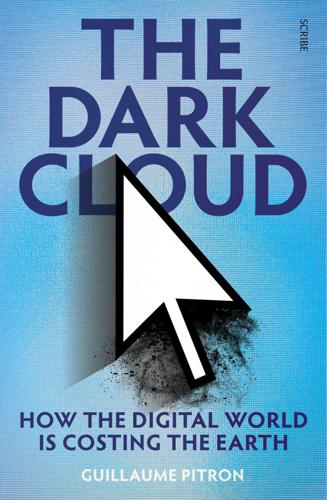
The Dark Cloud: How the Digital World Is Costing the Earth
by
Guillaume Pitron
Published 14 Jun 2023
GreenIT highlights this trend: ‘The average weight of web pages increased by 115 times between 1995 and 2015.’46 Similarly, the power needed to compose a text message doubles every two or three years.47 Devices slow down under the processing burden of such increasingly complex code, prompting users to replace them with better-performing products. This explains why, over the last three decades, the lifespan of a computer has dropped from eleven to just four years.48 Homo sapiens becomes ‘homo detritus’, producing the equivalent of 5,000 Eiffel Towers of electronic waste, or e-waste, every year.49 In fact, the impact of the Anthropocene epoch does not stop at climate change and ocean acidification. In 2017, researchers made the staggering discovery that humankind is a geological force, for its activities have engendered 208 new minerals due mostly to the alteration of mining and e-waste, such as semiconductors and batteries that have been buried in the ground.50 Simply put, our consumer behaviour — especially with regard to digital — is changing the composition of the Earth’s crust.
…
Read ‘Ecodesign preparatory study on mobile phones, smartphones and tablets’, Fraunhofer for the European Commission, February 2021. 46 Frédéric Bordage, Sobriété numérique, les clés pour agir [‘Digital sobriety, the keys for action’], op. cit. 47 Frédéric Bordage, ‘Logiciel : la clé de l’obsolescence programmée du matériel informatique’ [‘Software: the key to planned obsolescence of IT equipment’], GreenIT.fr, 24 May 2010. 48 ‘White Paper on the Digital Economy and the Environment’, op. cit. 49 ‘Working with microbes to clean up electronic waste’, Next Nature Network, 8 March 2021. 50 Robert M. Hazen et al., ‘On the mineralogy of the “Anthropocene Epoch’’’, American Mineralogist, vol. 102, no. 3, March 2017. 51 ‘John Deere just swindled farmers out of their right to repair’, Wired, 19 September 2018. 52 Charlie Sorrel, ‘Why Apple Doesn’t Want You to Fix Your iPhone Camera’, Lifewire, 1 February 2021. 53 Interview with Kyle Wiens, founder of iFixit, 2020.

The War Below: Lithium, Copper, and the Global Battle to Power Our Lives
by
Ernest Scheyder
Published 30 Jan 2024
Environmental Protection Agency data.5 And distances traveled have only grown; in the United States, the number of vehicle miles traveled jumped 108 percent from 1980 to 2010.6 These and other human-wrought changes to the Earth’s environment have likely sparked a new age in the planet’s history known as the Anthropocene, the age in which humans put their collective stamp on the planet and its climate.7 Put simply, personal automobiles that burn gasoline or diesel fuel are making the planet warmer, a fact the nearly two hundred nations that signed the Paris Accords seemed to acknowledge publicly. Lithium demand was projected to boom, with the International Energy Agency forecasting a 40 percent jump by 2040 in global demand for the white metal used to make EV batteries if the world is going to meet the goals set by the accords.8 Other metals would be needed in far greater quantities as well.
…
Dockey=P10153PC.pdf. 6. David Owen, “The Efficiency Dilemma,” The New Yorker, December 13, 2010, www.newyorker.com/magazine/2010/12/20/the-efficiency-dilemma. 7. Raymond Zhong, “For Planet Earth, This Might Be the Start of a New Age,” The New York Times, December 17, 2022, www.nytimes.com/2022/12/17/climate/anthropocene-age-geology.html. 8. International Energy Agency, “Executive Summary—the Role of Critical Minerals in Clean Energy Transitions—Analysis,” official website, accessed January 7, 2023, www.iea.org/reports/the-role-of-critical-minerals-in-clean-energy-transitions/executive-summary. 9. International Energy Agency, “Global Supply Chains of EV Batteries,” official website, accessed January 7, 2023, www.iea.org/reports/global-supply-chains-of-ev-batteries. 10.
…
Abbey, Edward, 182–83 Aboriginal Australians, 17, 54–55, 219 acid rain, 74–75 ACI Systems, 269–70 acoustic televiewers (ATVs), 94 Adkerson, Richard, 54, 215, 218–23, 226–27 Advanced Magnet Lab Inc., 14 Agriculture Department, U.S., 86 Ahmed, Shabbir, 9 Ahuja, Deepak, 257 Albemarle, 71, 147, 180, 181, 194, 206, 208–10, 252, 253, 297 Kings Mountain lithium processing facility, x, 27 Alcoa, 233 Aldrin, Buzz, 27 Al Hariqah Yemen gold project, xi Allkem, 231, 285 aluminum, 8, 9, 232, 234 Ambri, 158 American Institute of Mining Engineers, 212–13 Ames Laboratory, 103–5, 106 Amin, Shilpan, 110 Amnesty International, 225 Anderson, Corby, 235 Anderson, Greta, 150 Anderson, Scott, 20 Andrew, Duke of York, 51 Anglo American, 69, 70, 165, 166 Anthropocene, 6 antimony, 151–54, 156–59, 162, 164, 296 Antofagasta, 61, 82, 85, 89–90, 93, 164, 264 Apache Leap, 32, 33, 43 Apache peoples: mistreatment of, 32–34 Morenci copper mine and, 213 Resolution copper project and, 37, 38, 39, 40, 42, 44–50, 54–62, 218–19, 297 water rights of, 217–19 Apache Stronghold activist group, 49, 60–61, 297 Apple, 98, 225, 233–35, 241, 254–55 Global Climate Action Award won by, 233–34 Arab Oil Embargo, 7 Arce, Luis, 277, 297 Archuleta, Diego, 32–33 Arfwedson, Johan August, 26 Argentina, 15, 28, 29, 128, 130, 253–55, 265, 266, 267–68, 271, 297 Argonne National Laboratory, 9 Arizona, University of, 49 Armstrong, Neil, 264 Army Corps of Engineers, 166, 168 Arriagada, Iván, 90 Aspen Ideas Festival, 25 Atacama lithium mines, x, 10 atomic bombs, 47, 100, 101 Atomic Energy Commission, U.S., 101 Auer von Welsbach, Carl, 99 Australia, 3, 10, 26, 100, 110–11, 206, 208–9, 248 Aboriginal shelters destroyed in, 17, 54–55, 219 Automotive Logistics, 229 Ayers, Nick, 167 Baldwin, Will, 200–201 Bamiyan Buddha, 54 Ban, Ki-Moon, 5 Banda Island, 16 Bankruptcy Court, U.S., x, 97, 112–13 Barrick, 204–5 Bartell, Edward, 131–32, 133, 135, 136 Baatar, Bold, 38 BatPaC tool, 9 batteries: lead-acid, 7, 232–33, 250 liquid metal, 158 see also lithium-ion batteries Bauman, Bill, 250–52, 254 Baxter, Dillon, 273 Bayan Obo rare earths mine, xi, 106–7 Bell, Alexander Graham, 35 Berkshire Hathaway, 243–49 Bernhardt, David, 125–26, 129–31 Berzelius, Jöns Jacob, 26 Besich, Mila, 39–41, 43, 46 Bezos, Jeff, 270 BHP Group, 34, 36–39 Biden, Joseph, 13, 149, 164, 210, 242–47, 248–49 as focused on processing vs. mining, 87, 290 government fleet conversion to EVs pushed by, 13–14, 89, 109, 124, 176–77 mines blocked by, 13, 295–96 Resolution copper project and, 14–15, 37–42, 54, 56–58, 61, 297 Rhyolite Ridge lithium project and, 176–78, 292, 293 Twin Metals copper and nickel project and, 86–88, 164 binding offtakes, 179 Bingham Canyon Mine, 64–65, 66–67 bin Laden, Osama, 48 biodiversity, 150, 184–86, 190, 276 Birch Lake, 93, 95 Birthday Claim, 101–3 black mass, 238–40 Blinken, Anthony, 225 block caving, 36–37 Blood Diamond (film), 63 BlueOvalSK, 299 BMW, 72, 205, 271 Boeing 787 Dreamliner, 230 Boerst, Kevin, 93–94 Bolívar, Simón, 266, 277 Bolivia: EV battery factory planned in, 269–70 lithium in, 152, 261–85, 297 Bonifácio de Andrada e Silva, José, 26 Boric, Gabriel, 215, 275, 297 boron, 29, 171, 174, 188, 253 Bosworth, Dale, 65 Boulanger, Aimee, 68–71, 73, 159, 297 Boundary Waters Canoe Area Wilderness (Minnesota), 80–85, 88, 226 Boundary Waters Treaty, 81 Bowyer, Jim, 94–95 Bradley Mining Co., 152–53 Brave Cowboy, The (Abbey), 182 Breytenbach, Rio-Rita, 19 Bright Green Lies (Jensen, Keith, and Wilbert), 134, 136 brine, lithium found in, 26, 28, 29, 128, 180, 199, 243–49, 251, 253–55, 259, 260, 265, 267–71, 273, 282, 283 bromine, 249–51 Brothers & Sisters (TV show), 25 brownfield projects, 163 Brumadinho tailings dam collapse, x, 17–18, 37 Buckhorn Mine, 53 Buffett, Warren, 178–79, 248 Burba, John, 251–59, 267, 296 Bureau of Indian Affairs, U.S., 218 Bureau of Land Management, U.S., 82, 86, 125, 129–31, 164, 170–73, 175, 177, 181, 288, 292 Bureau of Mines, U.S., 102, 106, 152 Burt, Bob, 253–55 Bush, George H.
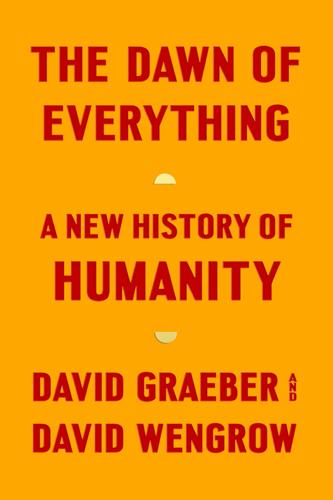
The Dawn of Everything: A New History of Humanity
by
David Graeber
and
David Wengrow
Published 18 Oct 2021
Geologists call this period the Holocene, from Greek holos (entire), kainos (new). Many earth scientists now consider the Holocene over and done. For at least the last two centuries we have been entering a new geological epoch, the Anthropocene, in which for the first time in history human activities are the main drivers of global climate change. Where exactly the Anthropocene begins is a scientific bone of contention. Most experts point to the Industrial Revolution, but some put its origins earlier, in the late 1500s and early 1600s. At that time, a global drop in surface air temperatures occurred – part of the ‘Little Ice Age’ – which natural forces can’t explain.
…
Hunters of the Golden Age: The Mid-Upper Palaeolithic of Eurasia 30,000–20,00 BP. Leiden: University of Leiden Press. Rollings, Willard H. 1992. The Osage: An Ethnohistorical Study of Hegemony on the Prairie-Plains. Columbia: University of Missouri Press. Roosevelt, Anna. 2013. ‘The Amazon and the Anthropocene: 13,000 years of human influence in a tropical rainforest.’ Anthropocene 4: 69–87. Rosenwig, Robert M. 2010. The Beginnings of Mesoamerican Civilization: Inter-Regional Interaction and the Olmec. Cambridge: Cambridge University Press. —. 2017. ‘Olmec globalization: a Mesoamerican archipelago of complexity.’ In Tamar Hodos (ed.), The Routledge Handbook of Archaeology and Globalization.
…
In Mesoamerica, Amazonia and the Andes, some 50 million hectares of cultivated land may have reverted to wilderness. Carbon uptake from vegetation increased on a scale sufficient to change the Earth System and bring about a human-driven phase of global cooling.12 Wherever one starts it, the Anthropocene is what we have done with the legacy of a Holocene Age, which in some ways had been a ‘clean sheet’ for humanity. At its onset, many things really were new. As the ice receded, flora and fauna – once confined to small refuge zones – spread out to new vistas. People followed, helping favoured species on their way by setting fires and clearing land.

The End of Growth
by
Jeff Rubin
Published 2 Sep 2013
The resulting algal blooms choke off other marine life and create coastal dead zones, which are now common around the world. Our impact on the physical environment is leading some geologists to refer to the modern era as a new geological epoch. The preceding eleven thousand years are known as the Holocene, which roughly translates into “most recent era.” Now they say we have entered the Anthropocene, or “age of man.” Geological nomenclature is of little concern to most economists, who don’t pay attention to how we change the landscape or whether the human population increases at the same pace as bacterial reproduction. What matters is what markets tell economists through price signals. And for a long time, falling resource prices—from oil to food to the items in Simon’s commodities basket—signaled that population growth wasn’t hindering resource consumption.
…
I’d like to thank Peter Victor of York University for the information he sent me on Germany’s Kurzarbeit program, as well as David Foot of the University of Toronto for data on international birthrates. Also I would like to thank two of my former colleagues at CIBC World Markets: Benjamin Tal, Deputy Chief Economist, for information on potential growth rates in North America, and Karl Kainz, my old broker, for drawing my attention to the Anthropocene. Lastly, I would like to thank my agent, Rick Broadhead, and once again my lawyer and friend Aaron Milrad, for his wise counsel and guidance. © Greg Tjepkema JEFF RUBIN was the chief economist at CIBC World Markets for almost twenty years. During that period, he placed first ten times in Brendan Wood’s institutional investor ranking of top Bay Street economists.

Affluence Without Abundance: The Disappearing World of the Bushmen
by
James Suzman
Published 10 Jul 2017
And, as subsistence farmers, both communities were far more vulnerable to famine, chronic nutritional privation, and environmental shocks than hunter-gatherers.1 Both communities also believed humans to have been created by God in His image and to have been granted a divine mandate to tame and shackle an otherwise hostile wilderness. This was because both communities were the progeny of the Neolithic Revolution—the extended moment in time during which groups of people in different parts of the globe adopted farming and in doing so reconfigured their relationships with the natural world and ushered in the Anthropocene. For if our physiology is a legacy of our hunting and gathering past, much of what we do and how we think about our place in the world stems from our relatively short history as farmers. No one can be certain quite what persuaded the first groups of hunter-gatherers to abandon hunting and gathering and commit themselves to a life of toil in the fields.
…
If evolutionary success is judged on the basis of a species’ ability to reproduce, then aiding the expansion of Homo sapiens over the past ten millennia was a golden ticket. The plants and animals that became staples for farmers are now among those that future archaeologists will conclude dominated the earth along with humans during the Anthropocene. Cattle, goats, sheep, dogs, cats, poultry, rice, wheat, and maize are now ubiquitous even in habitats where they could never have survived without the assistance of humans. Today’s intensive farming techniques are extraordinarily productive.3 Now fewer than 2 percent of Americans employed in agriculture are able to feed everyone else in the United States—and have plenty left over for export.
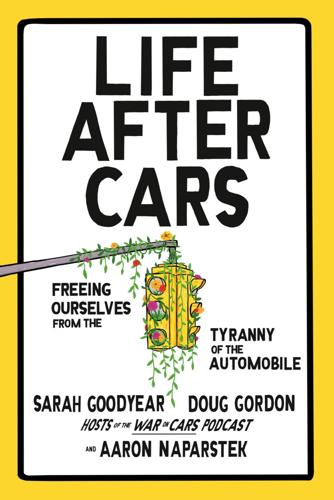
Life After Cars: Freeing Ourselves From the Tyranny of the Automobile
by
Sarah Goodyear
,
Doug Gordon
and
Aaron Naparstek
Published 21 Oct 2025
Daggett’s thesis explains a lot about our current moment, one in which “muscle cars” roar through our streets unchecked and bicycles still serve as cultural shorthand for male failure to be forceful and dominant. She suggests that in an unstable, rapidly changing world, men can seek solace in the roaring power of car culture. “Petro-masculinity is helpful to understanding how the anxieties aroused by the Anthropocene can augment desires for authoritarianism,” Daggett writes. “The concept of petro-masculinity suggests that fossil fuels mean more than profit; fossil fuels also contribute to making identities.” Daggett makes a compelling case that by gendering energy—fossil fuels male, alternative energy female—the oil industry and its political allies have cemented their hold on the psyches of consumers.
…
Fighting Traffic: The Dawn of the Motor Age in the American City. MIT Press, 2008. Norton, Peter D. Autonorama: The Illusory Promise of High-Tech Driving. Island Press, 2021. Odell, Jenny. How to Do Nothing: Resisting the Attention Economy. Melville House, 2019. Purdy, Jedediah. After Nature: A Politics for the Anthropocene. Harvard University Press, 2015. Putnam, Robert D. Bowling Alone: The Collapse and Revival of American Community. Simon & Schuster, 2000. Rajput, Swati, Kavita Arora, and Rachna Mathur. Urban Green Space, Health Economics and Air Pollution in Delhi. Routledge, 2021. Rutherford, Markella B.
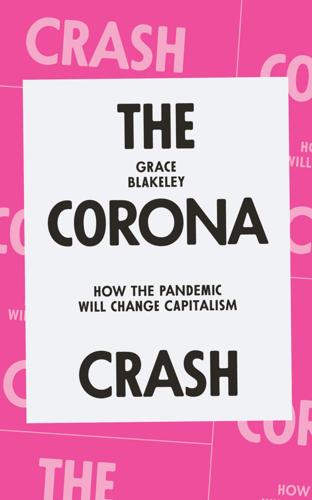
The Corona Crash: How the Pandemic Will Change Capitalism
by
Grace Blakeley
Published 14 Oct 2020
But it was not long before these debts began to accrue once again. 37 See, for example, ‘Coronavirus: Cancel the Debts of Countries in the Global South’, Jubilee Debt Campaign, 18 March 2020, jubileedebt.org.uk. 38 Sarah-Jayne Clifton, ‘Coronavirus Could Collapse the World’s Poorest Economies’, Tribune, 11 April 2020, tribunemag.co.uk. 4 Reconstruction 1 ‘Republicans Suddenly Find a Bailout They Can Back’, Politico, 18 March 2020; ‘Trump Pivots to “Phase Two”, Risking More Death to Save Economy’, Bloomberg, 6 May 2020. 2 Irving Fisher, The Debt-Deflation Theory of Great Depressions, Cleveland: Econometric Society, 1933. 3 CEIC Data, ‘Private Consumption: % of GDP by Country Comparison’, 2020, ceicdata.com. 4 Gary Stevenson, ‘Following the Coronavirus Money Trail’, Open Democracy, 27 March 2020. 5 Luke Savage, ‘One Cheque Isn’t Enough’, Jacobin, 26 May 2020. 6 Richard Partington, ‘Living Costs Rising Faster for UK’s Poorest Families Than Richest’, Guardian, 25 April 2019. 7 Claer Barrett, ‘Inside the UK’s Debt Crisis’, Financial Times, 26 April 2019. 8 Richard Partington, ‘UK Households Spend above Their Income for Longest Period Since 1980s’, Guardian, 29 March 2019. 9 Ann Pettifor, The Case for the Green New Deal, London and New York: Verso, 2019. 10 David Wallace-Wells, The Uninhabitable Earth: Life After Warming, New York: Tim Duggan/Random House, 2020. 11 Alejandra Borunda, ‘The Last Five Years Were the Hottest Ever, NASA and NOAA Declare’, National Geographic, 9 April 2019, nationalgeographic.co.uk. 12 Laurie Laybourn-Langton, Lesley Rankin and Darren Baxter, This Is a Crisis: Facing up to the Age of Environmental Breakdown, London: Institute for Public Policy Research, 2019. 13 Will Steffen et al., ‘Trajectories of the Earth System in the Anthropocene’, PNAS August 2018, 115, no. 33: 8252–59, pnas.org. 14 Fiona Harvey, ‘What Is the Carbon Bubble and What Will Happen if It Bursts?’, Guardian, 4 June 2018. 15 Oxfam, ‘World’s Richest 10% Produce Half of Carbon Emissions While Poorest 3.5 Billion Account for Just a Tenth’, Oxfam International press release, 2 December 2015, oxfam.org. 16 Shannon Hall, ‘Exxon Knew about Climate Change Almost 40 Years Ago’, Scientific American, 26 October 2015. 17 Colin Leys, ‘The British Ruling Class’, in Socialist Register 2014: Registering Class, eds, Leo Panitch, Greg Albo and Vivek Chibber, London: Merlin Press, 2014, 108. 18 Andrew Gamble, The Free Economy and the Strong State: The Politics of Thatcherism, Basingstoke, UK: Palgrave, 1988. 19 Andrew Atkinson, ‘George Osborne, Architect of UK Austerity, Says New Cuts Needed Post-Crisis’, Bloomberg, 20 April 2020; ‘Treasury Blueprint to Raise Taxes and Freeze Wages to Pay for £300bn Coronavirus Bill’, Telegraph, 12 May 2020. 20 Jonathan Ostry, Prakash Loungani and Davide Furceri, ‘Neoliberalism: Oversold?’
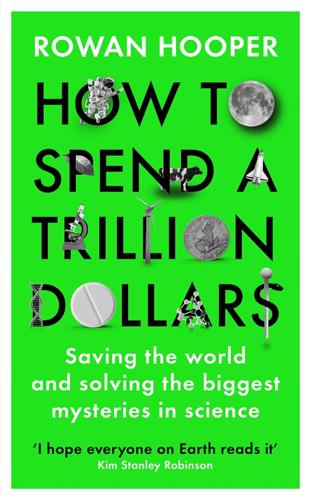
How to Spend a Trillion Dollars
by
Rowan Hooper
Published 15 Jan 2020
The rest of us would have to make do with wind-pollinated wheat, barley and corn. That’s not to mention the other jobs insects and other invertebrates do, forming the soil and breaking up and recycling dead animals and plants and their waste. We don’t know the full extent of the collapse in insect numbers, but a 2014 paper felt confident enough to pronounce an ‘Anthropocene defaunation’.7 The uncertainty highlights the lack of knowledge and monitoring that we have of the planet. This is something we will change with some investment. $ $ $ THE EXTINCTION crisis is not on the scale of the apocalyptic episodes in the deep past; it doesn’t seem to be a mass extinction in a geological sense.
…
DOI: 10.1126/science.aax4953 5 Alejandro Estrada et al. (2017) ‘Impending extinction crisis of the world’s primates: why primates matter’. Science Advances 3(1). DOI: 10.1126/sciadv.1600946 6 Francisco Sánchez-Bayo and Kris Wyckhuys (2019) ‘Worldwide decline of the entomofauna: a review of its drivers’. Biological Conservation 232, 3–27. DOI: 10.1016/j.biocon.2019.01.020 7 Rodolfo Dirzo et al. (2014) ‘Defaunation in the Anthropocene’. Science 345(6195), 401–406DOI: 10.1126/science.1251817 8 Charles Piller (2015) ‘Verily, I swear. Google Life Sciences debuts a new name’. Stat News. www.statnews.com/2015/12/07/verily-google-life-sciences-name/ 9 Sandra Díaz et al. (2018) ‘Assessing nature’s contributions to people’. Science. 359(6373), 270–272.
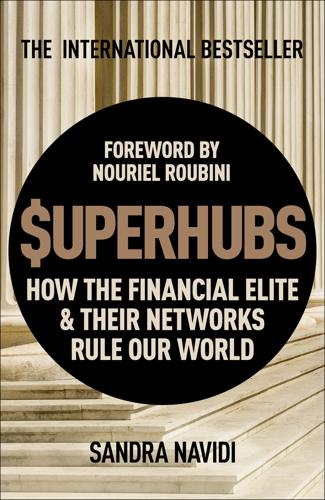
SUPERHUBS: How the Financial Elite and Their Networks Rule Our World
by
Sandra Navidi
Published 24 Jan 2017
Interconnectedness is an indispensable component of our financial system, because the exchange of goods and services for money by its very nature presupposes connections. In fact, our ability to cooperate within networks distinguishes us from other primates and has made us the most successful species on the planet—so much so that scientists have proposed calling our current time period the “Anthropocene,” the epoch of the human. However, over time certain network dynamics—such as the “rich-get-richer phenomenon” and self-perpetuating feedback loops—will cause any system automatically to become more interconnected, homogeneous, and complex. Most systems are adaptive and self-correcting, so when they become too lopsided, circuit-breaking feedback loops kick in, restabilizing the system.
…
See also Deutsche Bank at EQT Partners, 144 family of, 136 general references to, 101, 118, 120 International Institute of Finance and, 131 legal charges against, 142–143 Mannesmann AG and, 142–143 Pierre Wauthier suicide and, 138, 144 public relations mistakes by, 143 at Zürich Insurance, 144 “Age of irresponsibility,” 222 Ahamed, Liaquat, 160 AIG, 31, 48, 183–184, 217 Air France, 193 “Airport test,” 80 Albania, 27 Alibada Group, 103 Allen & Company Sun Valley Conference, 112 Alpha personality, 55–58 Alps, 38, 93, 122 Altman, Roger, 121 Alumni networks, 81 Al-Waleed, Prince of Saudi Arabia, 205 Amazon, 199 Amygdala, 98 “Analysis paralysis,” 51 Analytical thinking, 218 Anarchy, 213 Andreessen Horowitz, 189 Anger, 57 Annan, Kofi, 27 Ant colonies, 6 “Anthropocene,” xxvii Apollo Global Management, 88 Appaloosa Management, 88 Arab Spring, 226 Arabella Sheraton Hotel Seehof, 115 Arbitrage traders, 166, 208 Arcadia Conference, 34 Archbishop of Westminster, 226 Aristotle, 79 Arrow, Kenneth, 185 “Ask gap,” 153 Aspen Institute, 112, 200 Assess the Value of Your Networks, 41 Assessment gap, 152–153 “Assortative mating,” 80 Athleticism, 126 Atlantic Council, 158 Avenue Capital Group, 90 AXA, 179 Axel Springer, 136 Azerbaijan, 171 B Babacan, Ali, 120 Bacall, Lauren, 199 Bacon, Louis, 109 Bailouts, 10–11, 216 Bair, Sheila, 56, 150, 168, 172–173, 176, 214 Baker & McKenzie, 154, 159 Banamex Bank, 167 Banco Santander, 121, 148 Bank(s) bailouts of, 10–11, 216 central, xxv, 6, 10, 32–33, 37 CEOs of, 38, 87–88, 174 commercial, 37 description of, xxv investment, 38 postcrisis regulation of, 218 private, 37 private equity firms and, 61 regular, 37 savings, 37 shadow, 38 “too big to fail,” 216 Bank Credit-Dnepr, 195 Bank for International Settlements, 37, 78, 214 Bank of America, 115, 151, 183 Bank of Cyprus, 144–145 Bank of England, xxv, 32, 43, 57, 84, 106, 165, 214–215, 222 Bank of Israel, 36, 84 Bank of New York, 196 Bank One, 65 Banking Conduct and Culture, 223 Banque de France, 39 Barabasi, Albert-László, 19 Barak, Ehud, 9 Barclays, 43, 137, 179, 183, 205 Basel Committee on Banking Supervision, 37 BASF, 115 Bass, Kyle, 154 Baur au Lac Hotel, 38 Bear Stearns, 41, 56–57, 198 Beaux-Arts style, 34 Behavior of networks, 20 Beijing, 103, 194 “Believability index,” 72 “Believability matrices,” 71 Belvédère Hotel, 3, 9, 29 Berkeley Hotel, 43 Berkshire Hathaway, 60 Berlusconi, Silvio, 177–178 Bernanke, Ben annual salary of, 165 as Federal Reserve chairman, 34–37, 188 background on, 36 at Bilderberg conference, 121 in Euro crisis, 177–178 in financial crisis of 2007–2008 management, 11, 36–37, 84, 172 Medley Global Advisors leak and, 43 power of, 35 Princeton University graduation speech by, 50, 80 successor to, 188 Bernstein, Leonard, 199 Beverly Hills Hotel, 192 Bieber, Justin, 67 “Big data analysis” programs, 72 Bild, 136 Bilderberg conference, 120–122 Bilderberg Group, 96, 112 Bilderberg Steering Committee, 142 Billionaires, 123 BIS.
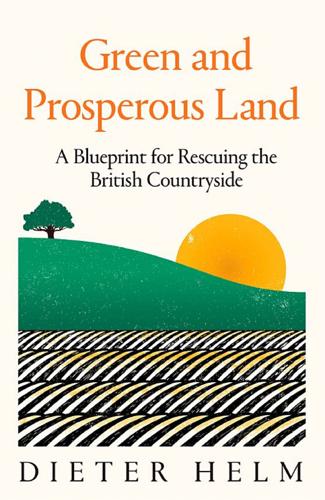
Green and Prosperous Land: A Blueprint for Rescuing the British Countryside
by
Dieter Helm
Published 7 Mar 2019
A bad farming year no longer induces hardship and famine. In economic terms it just does not register. Fishing is now an even less consequential part of the economy, employing only a few thousand people. Nature may not be man-made, but we as the ultimate eco-engineers increasingly shape it. Britain is a leading exemplar of the Anthropocene, a new geological age defined by human impact. There is nothing truly wild left. Much of the fauna has ingested plastic of one form or another, and the fashion for rewilding is best seen as just another form of eco-engineering, a switch from one man-made landscape to another. Wild, as a concept, has lost its practical meaning, even if its cultural power remains.
…
Abbots Hall Farm, Essex 143 Africa 1, 48, 55 agriculture: ammonia emissions from 88, 102, 153, 179, 223, 224 antibiotic use in 197, 216 average age of British farmer 89, 214, 217 carbon emissions from 82, 102, 104, 183, 197, 199, 200, 201, 214, 216, 223 cattle farming 62, 87, 99, 106, 107, 108, 119, 179, 264, 267 crops/arable farming see individual crop name cross-compliance and 97, 98, 251 digitalisation and 81, 96, 100 disaster of modern British, recognising the scale of 80 economics of British, 88–90 ‘enemies of’, elimination of 4–5 fertiliser use 22, 39, 43, 65, 80, 82, 86, 87, 94, 96, 100, 102, 119, 124, 163, 196–7, 200, 201, 216, 223, 243, 244, 253, 254 field margins 96–7, 251 food security/self-sufficiency as priority in 32, 99–102, 106, 182–4, 210 genetics and 4, 81, 95–6 green 79–104 herbicide use 4, 21, 22, 43, 44–5, 65, 83, 84, 85, 95, 96, 97, 100, 102, 124, 197, 199, 200, 201, 216, 223, 243 history of British intensification of 80 impact on farmers of a better agricultural sector and countryside 102–4 intensification of xii, 44, 58, 80–8, 93, 152, 211 land ownership and prices 8, 9, 11, 75, 89, 92–3, 102–3, 168, 190, 193, 198, 211–13, 214, 217–18 live export of animals 23, 101 Nature Fund and 219, 220, 221, 222, 223, 224, 225, 232–3, 239, 240 new sustainable and prosperous 93–7 organic 96–7, 119, 197, 223 pesticide use xii, 21, 22, 43, 45, 65, 82, 83, 84, 95, 96, 100, 102, 124, 197, 199, 200, 201, 216, 223, 243, 244 polluter-pays principle and 88, 95, 99–100, 101, 103, 104, 195, 196–8, 199, 201, 203–4, 205, 207, 210–14, 216, 217–18 pollution from xii, xiv, 4, 5–6, 8, 11, 19–21, 22, 23–4, 32, 39, 43–5, 56, 61, 62, 64–6, 74–8, 80, 81–2, 83, 84, 85, 86, 87, 88, 89–90, 94, 95, 96, 97, 99–100, 101, 102–4, 119, 123, 124, 128, 136, 163, 179, 180, 195–218, 223, 224, 242, 243, 244, 248, 251, 253, 254, 255 see also fertilisers, herbicides and pesticides public goods concept and 92–7, 98, 99, 102–4, 179, 181–4, 188, 189, 190–1, 192, 193, 194 run-off from 4, 5, 19–21, 22, 43–4, 61, 62, 64–6, 74, 76, 81, 85, 96, 123, 179, 180, 180, 196–8, 203–4, 205, 207, 216–17, 224, 242, 248, 251 slurry and 21, 22, 64–5, 74, 179, 180, 190, 203, 204, 205, 224 soils and see soils subsidies and xii, 2, 7, 8, 9, 10, 11, 12, 21, 22, 23, 34, 45, 62–3, 75, 76, 78, 79, 80, 81, 82, 87, 88–90, 95, 97, 100, 101, 102–4, 110–11, 118, 119–20, 122, 124, 126, 139, 183, 184, 188, 191, 195, 204, 205, 210–15, 217, 218, 219, 220–1, 226–7, 232, 234, 239, 241, 243, 244, 247, 253 see also subsidies tariffs and 87–8, 89, 102, 104 technology, future of and 5–7, 9, 80–1, 96, 100, 120, 223, 251, 263 25 Year Environment Plan and 241, 242, 243, 244, 245, 246–7, 248, 250, 251, 253, 255, 258 upland sheep farming 11, 21–2, 23, 33, 62–3, 64, 74, 87, 101, 106–7, 108, 110–11, 113, 119, 122, 124, 125, 183, 190, 210, 211, 217, 218, 264, 267 value of countryside for other uses and 90–3 wildlife corridors and 97–9 Agriculture Act (1947) 80 Agriculture Bill (2018) 103, 122, 232 agri-environment schemes 75, 111, 212, 220, 251, 257 AI (artificial intelligence) 230, 252–4, 255, 258 air pollution 18, 184, 264, 266 costs of 171 deaths linked to xiv, 154 evidence of improvements in air quality 39 farming and 44, 81, 88, 93, 96, 179, 255 future of 28, 219, 221, 246, 247, 249, 254, 255, 261, 262 green spaces and 24, 155, 156–8, 162, 167 green walls and 162 measuring 5, 28, 246, 254 Nature Fund and 219, 221 polluter-pays principle and 196, 199, 203, 215 technology and 154, 169, 254, 255 towns/cities and 152, 153–4, 155, 156, 157, 158, 162, 167, 169, 171 25 Year Environment Plan and 246, 247, 249, 254, 255, 261, 262 algae 32, 34, 68, 136, 156, 196, 216, 251 Alladale Wilderness Reserve, Scotland 108 Anthropocene 2 antibiotics 38, 68, 197, 216 aphids 84 arable weeds 44, 80, 85, 97 Area of Outstanding Natural Beauty (AONB) 63, 105, 117, 257 Asian hornet 147 avocet 133, 161 Bank of England 232, 240 barbed wire 124–5 barley 86 Barle, River 63 barn owl xi, 31, 85, 195 Batters, Minette 99 BBC xiv, 128, 176–7, 178, 224–5 beaches 4, 7, 17, 34, 127, 128, 129, 131–2, 136, 149, 184, 246 beaver 4, 8, 31, 108, 250 Beckton Sewage Treatment Works 20 bees 35, 83, 84, 85, 94, 170 Betjeman, John 166 Big Data 81, 251, 252, 254, 255 biofuels 101, 183 biophilia xiv, 160, 261 birds xv, 5, 8, 17, 20, 37, 42, 43, 61, 72, 80, 83, 84, 86, 87, 91, 97, 124, 129, 130, 132, 133, 134, 140, 158, 189, 204, 207, 217, 222, 243, 245, 252, 264 eggs, stealing 203, 205 farmland xi, 21, 32, 33, 44, 58, 85, 94, 107, 246, 250, 263 game 4, 34, 113–14, 115, 116 seabirds 34, 129, 137, 138–9, 142, 143, 144, 146–7, 149, 150, 156, 263 songbirds 39 upland 40, 119–20 urban 159–62, 164, 170, 185 wading 123 woodland 45 bittern 19, 161 Blackwater, River 134, 253 blanket bog 63 Bleaklow, Peak District 67 Blue Belt 145, 151 blue-fin tuna 137 Blue Flag system 131 Blue Planet II (TV series) xiv, 176–7 bracken 109, 123, 145 Brecklands 8, 183 brent geese xi, 253 Brexit 49, 92, 118, 220, 232, 243, 260 brownfield sites 46, 130, 159, 167, 170, 206 business rates 88, 89, 102, 213, 214 butterflies 17, 18, 91, 195, 207 buzzard 4, 40, 113, 115 Camel, River 134 Canvey Island 130, 159 Canvey Wick 159 carbon: budgets 13, 233, 249 emissions 28, 33, 41, 43, 51, 53, 58, 82, 83, 88, 89, 101, 102, 104, 154, 175, 183, 196, 197, 199, 200, 201, 202, 214, 216, 223, 224, 233 fuel taxes and 214 price 10, 89, 104, 175, 201, 202, 214, 216, 223 as private good 175 in soils 7, 184, 216, 246 stores 124, 133 tax 223, 224 Carboniferous age 1 Carbon Price Floor 89, 223 Carson, Rachel: Silent Spring 5 cattle farming 62, 87, 99, 106, 107, 108, 119, 179, 264, 267 cereal crops 5, 21, 39, 64, 85–6, 97, 101 Channel Islands 139 China 25, 55–6, 155 cirl bunting 40 Cley Marshes 133 climate change xiii–xiv, 6, 13, 33, 40, 44, 46, 56, 63, 74, 79, 82, 92, 133, 135, 158, 188–9, 219, 229, 230, 233, 234, 243, 249, 256, 258, 264 Climate Change Act (2008) 13, 233, 249, 258 Climate Change Committee 82, 234 coal 1, 42, 201 mining 42, 67, 68, 103, 111 power 153, 159, 201 Coal Authority 67 Coast (TV programme) 128 coasts 9, 19, 22, 29, 30, 32, 34, 43, 45–6, 127–51, 159, 185, 188, 206, 221, 241, 243, 245, 266 access to 128, 129, 130, 145–6, 149, 150 beaches and 4, 7, 17, 34, 127, 128, 129, 131–2, 136, 149, 184, 246 climate and 127–8, 136 coastal fringe 128–31 Coastal Green Belt 247 coastal paths 7, 128, 129–30, 145, 186, 189 coastal prize in 2050 150–1 coastal waters 135–9 eradication of alien species from islands 146–8 estuaries and 134–5 fishing and 24, 128, 133, 136–9, 141–5 habitat restoration 145–6 islands and 139–40, 146–8 marshes at the sea edges 132–3, 250, 253 Nature Fund and 221 pollution/waste and 32, 45–6, 67, 128, 131, 134–5, 136, 137, 138, 144, 148, 158, 204 ports and 130 public love of 127–8 returning to good health (and increasing prosperity) 140–50 tourism and 24, 91, 127, 128, 131, 139, 140, 148–50 wildlife corridors and 17, 129–32, 150, 186 cod 137, 142 colour, landscape and 17, 31, 32, 39, 87, 124, 163 Common Agricultural Policy (CAP) xii, 80 basic farm payment/land ownership and 89–90, 97, 103, 193, 212 cross-compliance and 97, 98, 251 economics of British farming and 88, 89, 90 food prices and 80, 97 Nature Fund and 220–1, 226, 232, 234–5, 239 NFU defence of 211 Pillar 1 payments 212 Pillar 2 payments 212–13, 232 pollution and 89, 204, 210–13 redirecting to provision of public goods 102–4, 191, 193, 212–13, 220–1, 226, 232, 234–5, 239, 241, 243, 244, 247 reforms, 2000 211–12 25 Year Environment Plan and 241, 243, 244, 247 upland farming economics and 45, 110–11, 126, 220–1 welfare state, as branch of 218 withdrawal from 217 Common Fisheries Policy (CFP) 142 commuting 54, 71, 169 compensation payments 10, 11, 42–3, 52, 88, 144–5, 166, 179, 185–6, 194, 195, 206–9, 213, 219, 225–6, 235 see also polluter-pays principle Conservative Party 50 consumption, rising xii, 47, 49, 55–6, 57, 199 corncrake 140 Cornwall 68, 12, 134 corvids 115 Cost of Energy Review (2017) 201 Country Land and Business Association (CLA) 166 Countryside Stewardship Facilitation Fund 98 crime, wildlife 33, 34, 113–14, 203, 204–5 see also individual area of crime crofting 139–40 cross-compliance 97, 98, 251 Crossrail 2 26, 27, 28, 53, 133, 208 Crown Estate 238, 250 cuckoo 3, 18, 37, 84 Cumbria river catchment 30–1, 257–8 curlew 17, 31, 36, 37, 185 Dartmoor 35, 105, 119 Dart, River 134 DDT (dichlorodiphenyltrichloroethane) 5, 40, 84, 96 declines 3, 8, 18–25, 27, 32, 39, 40, 42–6, 47, 74, 82, 83, 140, 156, 184, 185, 208, 264, 268 deer 33–4, 36, 106, 107, 108, 109, 110, 112, 115, 116, 119, 147, 190 DEFRA (Department for Environment, Food and Rural Affairs) 3, 76, 188, 219, 221, 232, 236, 266 ‘Heath and Harmony: The Future for Food, Farming and the Environment in a Green Brexit’ 232 Department for Business, Energy and Industrial Strategy (BEIS) 219 Department for Education (DfE) 219 Department of Health & Social Care (DHSC) 219 Devon 4, 145 diesel 88, 89, 102, 136, 153, 154, 179, 214, 223, 264 Dig for Victory 80, 183 digitalisation 26, 37, 41, 42, 54, 64, 81, 96, 100, 230 Dovey Estuary 134 economics: agriculture and see agriculture British farming’s 52, 62–3, 65–6, 67, 79–80, 87–90, 99–104 building a greener economy 59–171 see also agriculture; coasts; rivers; towns/cities and uplands consumption rates, rising 55–6 cost–benefit analysis xvi, 29, 31, 184, 186–9, 194 destruction of nature, economic progress and xiii–xiv, 5, 6–7, 8–9, 24–5, 38 see also agriculture; coasts; rivers; towns/cities and uplands externalities 179, 180, 182, 183, 194, 210 fossil fuel xii, 42–3, 154, 264 see also coal and oil investing in nature to increase prosperity xiii, xv, 7–9, 17, 21, 24–5, 26–7 see also agriculture; coasts; rivers; towns/cities and uplands measuring cost of lost environment 208–9 measuring economic output of natural world xvi, 2, 3, 9, 27–30, 34, 51, 55, 56, 88, 141, 148, 175–262, 264 see also agriculture; coasts; rivers; towns/cities and uplands natural capital loss as a price worth paying 38 Nature Fund and see Nature Fund option value 188 polluter-pays principle and see polluter-pays principle population growth and xii, 11, 44, 47–50, 52, 55, 58, 166, 183 public goods and see public goods short-term, inefficient 40, 77, 112, 157, 231, 234, 238, 256, 261 25 Year Environment Plan and see 25 Year Environment Plan electricity 26, 28, 53, 54, 71, 75, 76, 100, 101, 135, 153, 201, 215, 223, 245, 262, 268 endangered species 18, 185, 205, 243 Ennerdale 121 EnTrade 78 Environment Agency 63, 65, 73, 75, 76, 77, 78, 88, 133, 141, 190–1, 192, 220, 221, 232, 257, 258, 260 Environment, Food and Rural Affairs Select Committee 182 Environment Protection Agency, proposed 205, 260 Essex coast xi, 129, 132, 133, 143, 145 European Economic Community (EEC) 95 European Union (EU) 48, 87, 89, 92, 139, 141, 211, 243, 268 air quality and 153 Bathing Water Directives 131–2 Common Agricultural Policy (CAP) xii, 45, 75, 80, 88, 89, 90, 97, 102–3, 110–11, 126, 141, 191, 193, 204, 210–13, 217, 218, 220–1, 226, 232, 234, 239, 241, 243, 244, 247 Common Fisheries Policy (CFP) 142 Water Framework Directive 77, 242, 243 eutrophication 19, 196 Exmoor 87, 89, 105, 114, 119, 120, 123, 125–6, 129, 267 Exmoor Mires Project 63, 78, 125–6 Exe, River 63 extinctions xiv, 40, 123, 250 Farmers Weekly 95, 96, 199, 204 Farne Islands 139 Fens 25, 32, 33, 82, 90, 132 fertiliser 22, 39, 43, 65, 80, 82, 86, 87, 94, 96, 100, 102, 119, 124, 163, 196–7, 200, 201, 216, 223, 243, 244, 253, 254 field margins 96–7, 251 financial crisis (2007–8) xii, 56 fish: farms 22, 34, 37, 45, 46, 57, 138, 139, 140, 144–5, 151 pollution and 34, 64, 68 rivers and 61, 64, 68, 97 fishing: coastal waters and 128, 129, 133, 134, 135, 136–9, 140 destructive practices 9–10, 17, 22, 24, 34, 128, 135, 136–9, 140, 141–5, 151, 175, 264 long-term management of 34, 141–5 Marine Protected Areas and 7, 268 policy fit for purpose 141–5 regulatory body 248 role in British economy 2, 148 subsidies 142, 221 flea beetles 84 flooding: climate change and 44 coasts and 127, 133 farming practices and 63, 65, 66, 81 flood meadows and 30, 66 floodplains and 61, 73–4, 77 Green Belt and 167 housing, urban centres, roads and 73–4, 75, 153, 158 industrial legacy and 67 natural management of 8, 18, 30, 31, 35, 124, 220, 248, 260, 268 Nature Fund and 219, 220, 221 paying for pollution and 213 peat bogs and 62, 119, 124 public goods and 181, 184, 189, 191, 192 sewage systems and 71–2 system operator and 76, 77, 258 25 Year Environment Plan and 248, 257, 258, 260 upper rivers and 62 flowers 7, 33, 35, 83, 94, 97, 124, 140, 157, 162, 163, 164, 168, 169, 170, 217, 246–7, 263 flycatcher 3, 13, 35, 36, 37, 84, 185, 261 fly-tipping 205 food 2, 3, 22, 33, 258 cost of 56, 88, 90 intensification of production 80–1, 87 link between production and consumption 168 polluter-pays principle and 198, 199 public goods and 92, 93–4, 182–4, 193 security/self-sufficiency 32, 99–102, 106, 182–4, 210 soils and 33, 81–3 subsidies and 100–4, 210–13 see also subsidies uplands and 122 waste 160 ‘Food from Our Own Resources’ (White Paper, 1975) 80 footpaths 7, 92, 98, 99, 123, 130, 145, 149, 169, 170, 191 Forest of Bowland 63 Forest of Dean 160 forests 4, 33, 39, 63, 107, 108, 109, 110, 112, 117, 160, 175, 178, 179, 180, 196, 230, 238, 247, 250 Fowey, River 134 fox 108, 113, 115, 159, 253 Friends of the Seals 150 frog 35, 81, 85, 164 fuel xii, 101, 102, 154, 183, 213, 214, 217, 223, 264 fungicides 95 gamekeeper 113–14, 115, 203, 204 game shooting 4, 34, 101, 113–14, 115, 116, 183, 203, 204, 258 Garden Bridge, London 221 garden centres 170–1 gardens xi, xiv, 7, 23, 35, 43, 46, 71, 85, 139, 147, 155, 162–4, 165, 167, 170–1, 207 genetically modified (GM) crops 4, 95–6 genetics 4, 5, 81, 95–6, 230, 252 genomics 38, 252, 254 GlaxoSmithKline 69 globalisation, species 41 glyphosate 4–5, 44–5, 80, 84, 85, 86, 95, 217 golden eagle 4, 113, 123, 203 golden plover 17, 36, 123 goshawk 160 GPS 6, 96, 223 Grand Banks cod fishery 137, 142 grasses/grassland 5, 31, 39, 64, 65, 87, 119, 124, 152, 155–6, 163, 164, 253 Great Stink of London (1858) 19–20, 158 Green Belt 7, 10, 17, 37, 46, 47, 50, 51–2, 57, 117, 145, 150, 151, 165–70, 185, 207, 208, 209, 247, 263 Green Belt National Parks 169, 170 green bonds 235–6 green corridors 7, 31, 164–5, 186, 191, 234, 247, 250 see also wildlife corridors green prize 8, 9, 17–36 enhancements and 25–36 no more declines and 18–25 securing 263–8 green spaces 7, 8, 22, 23, 24, 35, 46, 153, 155–6, 161–5, 167, 169, 170, 178, 189, 206, 221, 230, 262, 268 grey wagtail 61 grey water storage 71, 74 Gross Domestic Product (GDP) xvi, 2, 3, 9, 34, 51, 55, 56, 88, 141, 148, 264 groundwater 19, 41, 67, 69, 70 grouse shooting 4, 33, 106, 113–14, 115, 116, 183, 190, 203, 204, 258 Gulf Stream 2, 127–8, 136 Gwent Levels 57 Haber-Bosch process 82 hay meadows 17, 109, 124, 125 heather 33, 113, 123–4 Hebrides 1, 139 hedgehog 35, 85, 139, 162, 163, 164, 170 hedgerows xii, 21, 31–2, 36, 79, 85, 90, 97, 98, 103, 109, 123, 124–5, 167, 169, 180, 191, 207, 210, 211 hen harrier 33, 36, 113–14, 120, 123, 185, 203, 205, 250 herbicides 4, 21, 22, 43, 44–5, 65, 83, 84, 85, 95, 96, 97, 100, 102, 124, 197, 199, 200, 201, 216, 223, 243 Heritage Lottery Fund 247 Highland Clearances 106, 139–40 hill farming 24, 80, 89, 101, 103, 217–18 Hill Farming Act (1946) 80 Hobhouse Report 116 housing xii, 3, 7, 9, 11, 35, 37, 46, 49, 50–2, 53–4, 55, 57, 58, 72–3, 75, 77, 117, 128, 155, 165, 166, 170, 185, 205–6, 207, 209, 225–6 house sparrow xi, 21, 160–1, 185, 252 HS2 3, 26, 27, 28, 29, 47, 57, 185, 186, 226 Humber, River 134 Hyde Park 155, 156–7, 160 hypothecation 202–3, 224, 225, 236, 239 immigration 48–50, 183 India 48, 55, 155 industrial policy xii, 67–9, 128, 203, 215 industrial pollution 19–21, 61, 67–9, 77, 138, 203, 215 Industrial Revolution 3, 19, 41, 136, 155, 160 infrastructure xii, 18–19, 24, 26, 28, 29, 35, 44, 47, 49, 50, 52–4, 55, 56, 57, 58, 72, 74, 75, 120, 125, 134, 152, 157, 165, 168–9, 170, 176, 185, 207, 215, 226, 245, 267 inheritance tax 88, 89, 213–14, 217 insects xv, 4–5, 18, 20, 21, 31, 32, 33, 36, 37, 42, 45, 58, 72, 83, 84–5, 86, 87, 94, 97, 112, 115, 119, 124, 129, 147, 160, 162, 168, 170, 189, 217, 222, 243, 245, 252 internet 28, 54, 177, 205 Isle of Arran 141–2 Isle of Man 139, 141 Isle of Skye 140 Isles of Scilly 139, 145, 147, 149 Japanese knotweed 148 kingfisher 61, 164 Kingsbrook 165 Knepp Castle 108, 197 Labour Party 50 Lake District 1, 35, 105, 111, 121, 122–3, 158 lakes 19, 30, 61, 70, 122–3, 216, 225 land development xii, 3, 6, 7, 9, 11, 20, 35, 37, 46, 47, 49, 50–5, 57, 58, 72–3, 75, 77, 78, 89, 117, 118, 121, 128, 155, 156, 157–8, 165–70, 185–6, 189, 205–9, 215, 216, 218, 225–6, 241, 245, 268 landfill 136, 159, 200 land ownership/prices 8, 9, 11, 89, 92–3, 100, 102–3, 106, 156, 165–70, 189–90, 193, 198, 212, 213, 214, 217, 268 Land Trust 236 lapwing xi, xii, 31, 185 Larkin, Philip: ‘Going, Going’ vii lemmings 253 live export of animals 23, 101 lobbyists 4–5, 13, 52, 54, 57, 84, 87, 101–4, 116, 143, 166, 221, 239, 258–9, 261 London 19–20, 29, 43, 47, 49, 73, 74, 142, 153, 155–6, 158, 159, 160, 161, 209, 221 see also individual place name London Wetland Centre 74, 159 Lundy 146 lynx 4, 108, 250 MacFarlane, Robert 98 Macron, Emmanuel 96 maize 5, 21, 62, 63, 65, 86, 250 Malta 84, 243 Manx shearwater 146, 150 marginal land 87, 103, 183, 210, 211, 214, 217–18, 250 marginal losses 57–8 Marine and Coastal Access Act (2009) 130 Marine Conservation Zones 145 Marine Protected Areas 7, 10, 143, 145, 151, 247, 268 Marlborough Downs 98 Marsh harrier 133 marshes xi, 17, 128, 129, 130, 132–3, 145, 149, 151, 181, 208, 215, 250, 253 mayflies 41 meadows 17, 30, 31, 45, 66, 79, 87, 103, 109, 124, 125, 167, 168, 169, 209, 246–7, 263, 264 mental health, nature and xiv, 5–6, 24, 25, 28, 34, 73, 162, 169, 171, 189, 254, 264 Mersey, River 20, 40, 158, 209 metaldehyde 85, 190 mining 20, 67, 68, 73, 111, 235 Ministry of Agriculture, Fisheries and Food (MAFF) 80 Ministry of Defence (MOD) 130 Ministry of Housing, Communities and Local Government (MHCLG) 219 Minsmere RSPB reserve 133 Mitchell, Joni: ‘Big Yellow Taxi’ vii, 57 molinia grass (Molinia caerulea) 124 Monsanto 95 moorland 33, 62, 67, 87, 103, 118, 119, 123–4, 180, 183, 190, 204, 210, 251, 258 M3 208 Muir, John 116 National Audit Office (NAO) 234 National Farmers’ Union (NFU) 80, 90, 99, 166, 182, 183, 211, 239, 258, 260 National Infrastructure Commission (NIC) 26, 44 National Parks xiv, 52, 105, 116–18, 121, 124, 125–6, 143, 169, 170, 178, 185, 220, 221, 234, 240, 241, 248, 257, 266, 267 National Parks Act (1949) 116–17 National Trust 117, 125, 130, 146, 177, 185, 192, 220, 221, 236, 237, 239 natural assets see individual asset name natural capital: acknowledgement of concept, lack of 265 aggregate measure of overall state of 41 categories/fundamental building blocks of 30, 41 see also individual category name definition of xiv, 2 enhancing/natural capital approach to management of environment 25–32 holding the line against further deterioration of 17, 18–25 maintenance 19, 24–32, 29, 119, 125, 156, 178, 184–5, 186, 187, 226, 234, 237–8, 246, 248, 259, 268 monitoring state of 250–5 Nature Fund and see Nature Fund NCC and xiv–xv see also Natural Capital Committee (NCC) as neo-liberal conspiracy 266–7 non-renewable 12, 42–3, 137, 205, 219, 228, 231, 235, 250 paying for pollution and 195, 198, 205, 206, 215 piecing together evidence for main categories of 41–2 public goods and 175, 176, 177, 178, 179–80, 181, 184, 185–6, 187, 188–9, 193, 194 renewable 12, 18, 28, 43, 69, 82–3, 123, 137, 140, 141, 142, 185, 195, 205, 206, 219, 228, 231, 235, 237, 245, 246, 250, 257 solutions see agriculture; coasts; rivers; towns/cities and uplands state of assets 245–8 25 Year Environment Plan and see 25 Year Environment Plan Natural Capital Committee (NCC) xi, xii, xiii, xiv–xv, 257 Natural Capital: Valuing the Planet (Helm) xv Natural England 75, 78, 185, 191, 221, 232, 248, 257, 258, 260 Natural Resources Wales 65 Nature Act 13, 258, 259 Nature Fund 12, 202–3, 209, 219–40, 241, 249, 254, 258 adding in the avoided subsidies beyond the CAP 226–7 adding in the net environmental gain compensation payments 225–6 adding in the value of pollution taxes 222–5 budget 234–6 deciding how to spend money 239–40 designing 231–4 green bonds and 235–6 looking after future generations and 228–31 owning assets 236–8 redirecting current spending 220–2 separating spending from revenues 227 nature, love of xiv, 160, 261 neonicotinoids 4–5, 82, 83, 84, 96, 217 net environmental gain principle 7, 11, 12, 46, 54, 149, 168–9, 186, 194, 202, 206, 208, 216, 218, 219, 225–6, 235, 244, 245, 258, 265 New Forest 117 New Naturalist 42 nitrates 123, 136, 152, 216 non-governmental organisations (NGOs) 42, 130, 239 non-renewable natural capital 12, 42–3, 137, 205, 219, 228, 231, 235, 250 North Sea 1, 12, 34, 133, 135, 137, 228, 235, 251 Norway 228–9, 231, 235 obesity xiv, 24, 28, 171, 264 Office for Budget Responsibility (OBR) 240 Office for National Statistics (ONS) 236, 240, 249, 257 OFWAT 75, 78 oil 3, 12, 42, 45, 136, 159, 219, 228, 231, 235 oilseed rape 5, 37, 83, 85, 86, 95, 101, 183, 198, 207 organic farming 96–7, 119, 197, 223 organochlorines 96 organophosphates 96 osprey 161 Otmoor 8 otter 40, 61 Ouse, River 31 owl xi, 85, 115, 195, 253 oxbow lakes 30, 61 Oxford–Cambridge Corridor 46 Oxford concrete canal 30–1, 220 Parish, Neil 182 parks, urban xiv, 7, 23, 25, 34, 46, 155–6, 160, 170, 185, 221, 250 Parrot, River 63 Peak District 67, 105, 123, 158 peat 22, 61, 62, 63, 67, 82, 118, 119, 124, 163, 164, 170, 189, 201, 235 Pennines 1, 47, 90, 105, 120 peregrine falcon 40, 84, 160, 161–2 pesticides xii, 21, 22, 43, 45, 65, 82, 83, 84, 95, 96, 100, 102, 124, 197, 199, 200, 201, 216, 223, 243, 244 pharmaceutical industry 43, 61, 68 pheasant 33, 101, 114–16, 119, 190 phosphates 4–5, 20, 22, 77, 96, 136, 198 Pickering, River 31 pigeon 159–60, 161 pine marten 40 Planet Earth (TV series) 3 planning 52, 54, 56, 73, 74, 75, 76, 86, 89, 117, 118, 144, 146, 157, 166, 168, 169, 207, 208, 209, 213, 245, 248 Planning Act (1947) 52, 208 plastics xii, xiv, 2, 4, 5, 17, 34, 43, 45, 56, 128, 131, 136, 150, 188, 196, 201, 244 taxing 200–1, 223, 244 pollinators 5, 6, 7, 18, 25. 84 polluter-pays principle 9, 10–11, 12, 22, 34, 56, 66, 67, 68–9, 74, 87–8, 99–100, 102, 103, 104, 114, 137, 170, 179, 195–218, 219, 220, 225, 241, 244, 245, 249, 258, 265, 266 developers, net environmental gain and 205–9 fines for pollution and 203–5 hypothecation or earmarking of revenues to specific green expenditure 202–3, 224–5 improvements that come from economics of 216–18 money raised from 202–3 Nature Fund and 202–3, 209 net gain environmental gain principle and 195, 205–9 precautionary principle and 83–4, 195 pricing 198–201 principle of 195–8 subsidies and 210–15 Poole Harbour 78, 191 population growth xii, 11, 44, 47–50, 52, 55, 58, 166, 183 Porlock Marshes, Somerset 133 potholes 24 power stations 53, 83, 109, 130, 135, 159, 186, 203 precautionary principle 11, 83–4, 142, 194, 195, 218 public goods 10, 12, 23–4, 58, 75, 92, 93, 95, 98, 99, 102, 103, 104, 112, 118, 119, 122–3, 124, 125, 126, 149, 167–8, 175–94, 195, 208, 210, 212, 217, 218, 232, 237, 241, 244, 247, 249, 258, 265, 266, 268 definition of 176–9 ecosystems and coordination 179–81 importance of, relative 181–4 Nature Fund and 232, 237 polluter-pays principle and 195, 208, 210, 212, 217–18 private interests and 189–93 public money for public goods principle 9, 103, 181–2, 189, 191, 193, 210, 217, 218, 232, 244, 247, 249, 258, 265, 266 richer and greener public spaces 193–4 spending, allocating 184–9 25 Year Environment Plan and 241, 244, 247, 249, 258 railway 3, 7, 8, 11, 17, 25, 29, 35, 37, 54, 80, 170, 206, 234 rats 146, 147, 150 Ray, River 8 Rebanks, James: The Shepherd’s Life 111 red deer 110, 112, 116 red kite 4, 21, 40, 161 red lists 18, 185 redshank 31 redstart 185 reed beds 19, 20, 72 re-introduction programs 4, 31, 108, 161, 250, 267 renewable energy 28, 37, 57, 89, 124, 135 renewable natural capital 12, 18, 28, 43, 69, 82–3, 123, 137, 140, 141, 142, 185, 195, 205, 206, 219, 228, 231, 235, 237, 245, 246, 250, 257 rewilding 2, 36, 45, 91, 106–10, 111, 119, 124, 140, 240, 267 Rhine, River 34, 136 rivers 9, 17, 264 access to 61, 169, 180, 181, 189, 191, 248 algae blooms and 196–7, 216–17, 251 biologically dead 40, 158 catchment system plan and operator 9, 74–8, 118, 190, 193, 240, 248, 259, 260, 266 climate change and 44 current spending on 220 estuaries 17, 20, 30, 74, 128, 134–5, 136, 138, 181, 186, 196, 208, 209, 215, 251, 253 eutrophication of 19, 196–7 farm pollution and 4, 5, 19–21, 22, 43–4, 61, 62, 64–6, 74, 76, 81, 85, 96, 123, 196–8, 203–4, 205, 207, 216–17, 224, 242, 248, 251 fish stocks and 138 flooding and 8, 30–1, 44, 61, 62–3, 65–6, 72–4, 75, 76, 77, 81, 181, 189, 190, 191, 192, 219, 220, 248, 253, 257, 260, 268 floodplains 61, 73–4, 77 fly life and 19, 41 housing/urban centres/roads and 72–4 industrial pollution and 19–21, 61, 67–9, 77 integrated management 7, 9, 19, 74–8, 118, 190, 193, 240, 248, 259, 260, 266 meanders 30, 61 National Parks and 118 natural capital approach to 30–2, 36, 61, 63, 76, 260, 268 Nature Fund and 220, 224–5, 240 oxbow lakes and 30, 61 polluter-pays principle and 9, 196–8, 203–4, 205, 207, 216–17 pollution of 4, 5, 19–21, 22, 43–4, 61, 62–9, 74, 76, 81, 85, 88, 96, 123, 132, 158, 181, 190, 191, 192, 196–8, 203–4, 205, 207, 216–17, 219, 220, 224, 225, 242, 244, 248, 251 public good concept and 180, 181, 185, 186, 188, 189, 190–1 recreation on 61, 73 restoring 61–78 sewage and 19–20, 23, 42, 61, 69, 76 soil erosion and 19, 191, 248 State of Nature Review and 248 upper rivers, protecting 62–3, 254–5 water abstractions from 43, 53, 61, 66, 70–1, 72, 73, 74, 75, 103, 220 water companies and see water companies water quality and 23, 28, 29, 43, 61, 63, 69–72, 158, 180, 190, 197–8, 220, 242, 253, 260 wildlife/biodiversity along 61, 97, 98, 165, 180, 189, 190, 191, 198 road verges 7, 8, 35 roads xii, xiv, 7, 8, 29, 35, 54, 215, 226 romantic art/literature 39, 91, 92 Roundup 44, 95 rowan 123 RSPB (Royal Society for the Protection of Birds) 42, 133, 165, 177, 185, 220, 221, 225, 236, 239 rubbish disposal 43, 69, 128, 131, 136, 150, 204 run-off 4, 5, 22, 62, 61, 65–6, 67, 72, 73, 74, 88, 123, 132, 158, 196, 207, 216, 224, 242, 251 St Agnes 139, 146 Salisbury Plain 238 salmon 222, 37, 40, 45, 46, 61, 135, 138, 139, 144, 252 sand eels 45, 46, 138, 139 schools 34, 99, 169–70, 171, 207, 247 Scotland 22, 105, 106, 108, 114, 131, 139–40, 203 Scots pine Caledonian forests 107 Scottish Environment Protection Agency (SEPA) 65 seabirds 34, 129, 130, 137, 138–9, 140, 142, 143, 144, 146, 147, 150, 263 sea eagle 4, 161 sea walls xi, 128, 132, 134, 143, 145, 151, 186 seas 1, 2, 4, 5, 128, 250 climate and 127–8 fishing and 17, 22, 135, 136–9, 141–5, 160 pollution of 4, 6, 34, 40, 45, 56, 68, 71, 128–9, 132, 136, 158, 205 returning to good health 140–50 rising levels 63, 74, 133, 134, 253 State of Nature Review and 248 Severn: Estuary 134, 135, 209 River 31 sewage 19–20, 23, 25, 34, 40, 43, 53, 61, 68, 69, 70, 71–2, 74, 75, 76, 128, 131, 132, 136, 155, 158, 180, 196, 197, 204, 264 sheep farming 11, 21–2, 23, 33, 62–3, 64, 74, 87, 101, 106–7, 108, 110–11, 113, 119, 122, 124, 125, 183, 190, 210, 211, 217, 218, 264, 267 Sheffield City Council 8, 23, 157 shellfish 24, 128, 135, 141–2, 143, 151 Shetland 139 Shiants 139, 146 shipping 45, 46, 127, 129, 136, 147, 148, 204, 205 shooting, game 4, 33, 34, 45, 101, 106, 112–16, 119, 183, 190, 203, 204, 205, 222, 258 silage 109, 124 silt 19, 21, 32, 43, 44, 63, 65, 66, 67, 74, 81, 88, 207 Sites of Special Scientific Interest (SSSIs) 75, 119, 130, 181, 185, 257 skylark xi, xii slug pellets 85, 163, 170 slurry 21, 22, 64–5, 74, 179, 180, 190, 203, 204, 205, 224 snake’s head fritillaries 31 snowy owl 253 soils 133, 217, 224, 242, 245, 247, 250 carbon in 7, 184, 216, 246 erosion/degradation and restoration of xiv, 4, 6, 18, 19, 21, 25, 32–3, 39, 41, 44, 61, 62, 63, 65, 81–3, 94, 96, 103, 123, 157, 163, 184, 189, 190, 191, 198, 207, 211, 216, 248, 250, 251, 264 Solway Firth 134, 253 Somerset Levels 63, 65 South Downs 1, 105, 117 South West Coast Path 128 South West Water 63, 78, 125–6 sovereign wealth funds 12, 228–9, 231, 233, 235 species protection 18–19 State of Nature Review 248 Steart Marshes 133 Stern, Nicholas: ‘Economics of Climate Change’ 229 Stour, River 134 subsidies: bidding for 191, 192 business rates and 88, 89, 102, 213, 214 Common Agricultural Policy (CAP) xii, 45, 75, 80, 88, 89, 90, 97, 102–3, 110–11, 126, 141, 191, 193, 204, 210–13, 217, 218, 220–1, 226, 232, 234, 239, 241, 243, 244, 247 Common Fisheries Policy (CFP) 142 cross-compliance and 97, 98, 251 farming xii, 2, 7, 8, 9, 10, 11, 12, 21, 22, 23, 34, 45, 62–3, 75, 76, 78, 79, 80, 81, 82, 87, 88–90, 95, 97, 100, 101, 102–4, 110–11, 118, 119–20, 122, 124, 126, 139, 183, 184, 188, 191, 192, 195, 204, 205, 210–18, 219, 220–1, 226–7, 232, 234, 239, 241, 243, 244, 247, 253 fishing 22, 142, 221 flood risk insurance and 73 focusing on public rather than private goods 7, 12, 23 102, 104, 118, 167, 168, 182, 184, 188, 191, 212–13, 216–18, 232 food and 100–4, 210–13 fuel duty and 214 improvements from removing 216–18 industrial policy and infrastructure and 215 inheritance tax and 88, 89, 213–14, 217 islands and 139 land ownership and 89–90, 97, 103, 193, 212 landowner subsidies and bird killing in the uplands 119–20 National Parks and 118, 221 Nature Fund and 220–2, 226–7, 232, 239 NFU defence of 182, 183, 211 pollution and 23, 77, 195, 204, 205, 210–18 rivers and 62–3, 73, 75, 76, 78 tourism and 34 25 Year Environment Plan and 241, 243, 247, 248, 253, 258 upland sheep farming and 11, 22, 23–4, 62–3, 106, 110–11, 118, 122, 124, 126, 211, 220–1, 267 zero subsidies concept 45 Surfers Against Sewage 34, 131 Sustainable Soils Alliance 81–2 swallow xi, 3, 13, 18, 35, 37, 47, 84, 185, 187, 195, 261 sweet vernal grass 31 swift 37, 47, 161, 182, 185 Taff, River 20 tariffs 87, 88, 89, 102, 104 Tarr Steps, Exmoor 125 Taw, River 134 taxes: farming and 23, 79, 80, 88, 89, 90, 95, 100, 102, 106 housing and 52 Nature Fund and 227, 234 pollution 12, 23, 199, 200, 202, 203, 210, 213–14, 215, 217, 222–5 public goods and 178, 179 selling land for development and 168 25 Year Environment Plan and 244, 253 technology: AI (artificial intelligence) 230, 252–4, 255, 258 aides destruction of nature 5–7, 80–1 air quality and 154, 169, 254, 255 farming and 5–7, 80–1, 96, 120, 223, 253 fishing and 136, 143, 144 pollution detection and 65, 251, 253, 254, 255 renewable energy 28, 37–8, 57, 89, 124, 135 routes to a greener world through 6–7, 9, 28, 65, 230–1, 251–5 25 Year Environment Plan and 251–5, 256 waste crime detection and 205 wastewater and sewage detection 69 Thames: Estuary 134, 186, 208 Gateway 20, 134–5, 208, 226 River 8, 20, 34, 40, 74, 98, 134–5, 136, 158, 186, 192, 203–4, 220 Tideway 20, 53, 74 Thames Water 159, 203–4 Thelwall Viaduct 158 ‘The Natural Choice’ (White Paper, 2011) xii–xiii, 13, 265–6 thrush 85, 163, 164, 170 tidal lagoons 128, 135, 209 toad 35, 164 Tone, River 63 Torridge, River 134 tourism 7, 24, 34, 55 agriculture and 90–3 coasts and 127, 128, 131, 133, 139, 140, 148–50 growth of countryside/nature 90–3 Nature Fund and 232 pollution and 222 public goods and 181, 190 rivers and 73 uplands and 111, 119, 120–1, 125 towns/cities 9, 10, 20, 22–3, 24, 29, 30, 31, 34–5, 46, 50, 51, 53, 58, 85, 98, 108, 129, 152–71 air pollution and 153–4, 155, 157, 167, 254 a biodiverse and green urban environment 170–1 coastal 129 green corridors in 164–5 greener streets and roofs 157–8, 170 green spaces in, new 161–5, 170 housing and see housing link with nature 152 natural capital solutions for 154–7 Nature Fund and 221 nature/wildlife in the 158–61 outer rings/Green Belt 165–70 parks, urban xiv, 7, 23, 25, 34, 46, 155–7, 160, 170, 185, 221, 250 rivers and 20, 30, 31, 72–4 State of Nature Review and 248 water quality in 153, 155, 158 tragedy of the commons 24, 137, 175 Treasury 10, 29, 77, 188, 218, 219, 220, 223–4, 226, 227, 229, 232, 247, 267 trees 33, 156, 190, 207, 212 cutting down 8, 23, 157 flood management and 30 planting 7, 10, 35, 157, 221 towns/cities and 7, 10, 160, 162, 170 uplands and 106, 107, 110 Tresco 147 turtle dove 18, 84, 243, 250 25 Year Environment Plan xv, 12–13, 28, 94, 118, 181, 184, 188, 222, 232, 233, 240, 241–62, 265, 266, 267–8 accounting basis and metrics 245–7 Big Data, GPS, genomics and 250–5, 258 embedding/delivery body 255–61 European and global dimensions 242–3 how the bits fit together 244–5 making governments stick to 261–2 prioritising within 247–8 revising 248–50 top-down plan, why we need a 242 Two Moors Way 98 Twyford Down 208 Tyne, River 138 Tyneside 74 United Utilities 63, 78 uplands 9, 17, 19, 21–2, 29, 30, 33–4, 39, 40, 43, 45, 62, 72, 98, 104, 105–26, 185, 188, 189, 191, 214, 240, 248, 264, 266, 267, 268 access to 105–6 birds in 4, 33, 36, 40, 45, 84, 106, 113–14, 115, 116, 119–20, 123, 160, 161–2, 183, 185, 190, 203, 204, 205, 250, 258 see also individual bird type deer and 33–4, 36, 106, 107, 108, 109, 110, 112, 115, 116, 119, 147, 190 game shooting and 4, 33, 34, 45, 101, 106, 112–16, 119, 183, 190, 203, 204, 205, 222, 258 managing for people and wildlife 123–6 National Parks and 116–18, 121 Nature Fund and 220–1 population 120–3 public benefits in 118–20 rewilding and 106–10 rivers and 62–3, 71–2 second home owners and 121 sheep farming and 11, 21–2, 23–4, 33, 62, 106–7, 110–11, 113, 119, 122, 182, 211, 212, 217, 218, 264, 267 State of Nature Review and 248 tourism and 120–1 trees and 106, 107, 110 25 Year Environment Plan and 241, 245, 248, 257 as wildlife refuge 21–2, 118–20, 123–6 visitor charge 125 volunteers 125, 147, 149, 150 wading birds 123 Wallasea Island 133, 143 walls: green 35, 162, 165, 170, 221 maintenance of 119, 123, 124–5, 167–8 sea xi, 128, 132, 133, 134, 135, 143, 145, 151, 186 stone 31, 103, 120, 123, 124–5, 167–8, 180 water quality/cleanliness xvi, 8, 264, 268 Blue Flag system/EU Bathing Water Directive and 131–2 farm pollution and xiv, 19, 23, 43–4, 63, 65–6, 72, 78, 81, 85, 88, 190, 191 future of 28, 220, 221, 222, 225, 242, 243, 244, 246, 247, 249, 253, 258, 260, 262 improvements in 39, 41, 43–4 industrial pollution and 19–20, 68–9 Nature Fund and 219, 220, 221, 222, 225 peat bogs and 63, 78, 119, 124, 125–6 polluter-pays principle and 196, 197–8, 199, 203–4, 207, 215 public goods concept and 181, 189, 190, 191 rivers and 23, 28, 29, 43, 61, 63, 69–72, 158, 180, 190, 197–8, 220, 242, 253, 260 towns/cities and 153, 155, 158 25 Year Environment Plan and 242, 243, 244, 246, 247, 249, 253, 258, 260, 262 wastewater and 69 water companies and see water companies water companies 181 cleanliness of water and xiv, 23, 63, 68, 69–72, 78, 81, 85, 88, 125–6, 190, 191, 197–8, 203–4, 215, 219, 220, 221, 222, 225, 242, 244, 253, 258, 260 Exmoor Mires Project and 63, 78, 125–6 farm pollution and xiv, 23, 63, 78, 81, 85, 88, 125–6, 190, 191 flood defences and 192 Forest of Bowland project 63 grey water system and 71 natural capital approach to river catchment system as a whole and 75–8 Nature Fund and 219, 220, 221, 222, 225 pharmaceuticals in water and 68 polluter-pays principle and 197–8, 203–4, 215 regulation of 75, 78 sewage and 71–2 25 Year Environment Plan and 242, 244, 253, 258, 260 water abstractions and 43, 53, 61, 66, 70–1, 72, 73, 74, 75, 103, 220 water bills and 20, 23, 75, 77, 78, 88, 131–2, 191 water leakage and 25, 61, 70–1, 74 water meadows 31, 66, 79, 103 weedkillers 163, 170 Wessex Water 78, 191 West Canvey Marsh 130 West Thurrock Lagoons 130, 159 wetlands 8, 74, 133, 159, 186, 234, 236, 237 wheat 86, 101 Wildfowl & Wetlands Trust 133 wildlife corridors 4, 7, 17, 31, 97–9, 118, 129, 150, 164–5, 167, 169–70, 180, 186, 191, 234, 247, 250 Wildlife Trusts 8, 75, 76, 125, 146, 177, 185, 192, 220, 221, 225, 236, 237 Wilson, E.

A New History of the Future in 100 Objects: A Fiction
by
Adrian Hon
Published 5 Oct 2020
I’ll let Alice explain what it means: Before these translation systems came along, there were an awful lot of people worried that the world would settle on just one or two or three universal languages, like Mandarin and English. It wouldn’t have been the first time that languages had become extinct, like many Indonesian ones such as Bonerif or Usku have in recent centuries, but it looked like the rate of extinction might begin to drastically accelerate. A very ‘Anthropocene’ trend. When Babylon came along, it was the best thing that ever happened to the smaller, regional languages. It meant people could continue using them and teaching them to their children without being excluded from the world’s culture. Automatic translation helped them to communicate with the rest of the world in their own voices.
…
Wilderness is relative, and after hundreds of thousands of years of human existence, practically nothing on Earth could be truly emptied of our presence. The half-empty world still had human caretakers and gamekeepers to restore species and environments, not into a “natural” state—an increasingly irrelevant concept practically vaporized by the escalation of the anthropocene—but to a state that was not continually interfered with by humans. The half-empty world was cross-hatched with corridors for transportation, for resources, for animals, and yes, for tourists. Humans had scorched the planet, but it was still our planet, and once emptied, it was there to be savored, not worshipped from afar.
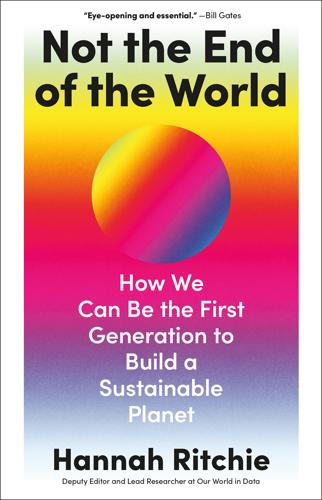
Not the End of the World
by
Hannah Ritchie
Published 9 Jan 2024
An IPCC Special Report on the impacts of global warming of 1.5°C above pre-industrial levels and related global greenhouse gas emission pathways, in the context of strengthening the global response to the threat of climate change, sustainable development, and efforts to eradicate poverty (2018). 45 Poore, J., & Nemecek, T. (2018). Reducing food’s environmental impacts through producers and consumers. Science, 360(6392), 987-992. 46 W. Willett et al., ‘Food in the Anthropocene: the EAT–Lancet Commission on healthy diets from sustainable food systems’, Lancet 393, 447–92 (2019). 47 P. S. Fennell, S. J. Davis & A. Mohammed, ‘Decarbonizing cement production’, Joule 5, 1305–11 (2021). 48 ‘Concrete needs to lose its colossal carbon footprint’, Nature 597, 593–94 (2021). 49 D.
…
Andersson et al., ‘Arthropod populations in a sub-arctic environment facing climate change over a half-century: variability but no general trend’, Insect Conserv Divers 15, 534–42 (2022). 25 M. S. Crossley et al., ‘Opposing global change drivers counterbalance trends in breeding North American monarch butterflies’, Glob Chang Biol 28, 4726–35 (2022). 26 D. L. Wagner et al., ‘Insect decline in the Anthropocene: Death by a thousand cuts’, PNAS 118, e2023989118 (2021). 27 H. Ritchie & M. Roser, ‘Biodiversity’, Our World in Data (2021). 28 C.R. Thouless et al., ‘African Elephant Status Report 2016: an update from the African Elephant Database’, IUCN Species Survival Commission, Africa Elephant Specialist Group (2016). 29 A.
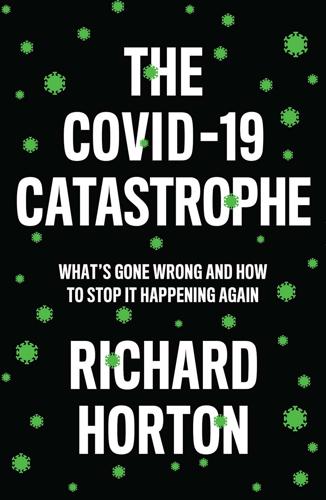
The COVID-19 Catastrophe: What's Gone Wrong and How to Stop It Happening Again
by
Richard Horton
Published 31 May 2020
It is highly probable that the pandemic of SARS-CoV-2 will be neither the last nor the worst global health crisis of the present century. But, second, and more importantly, this global calamity is not a crisis concerning health. It is a crisis about life itself. We have been tempted in recent years to assume the omnipotence of our species. The idea of the Anthropocene places human activity as the dominant influence on the future for life on our planet. Although this newest of geological eras is supposed to underline the harm our species is doing to fragile planetary systems, paradoxically it also asserts our supremacy. SARS-CoV-2 has revealed the hubris of this view.
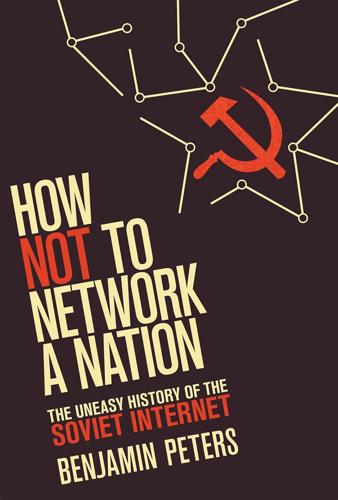
How Not to Network a Nation: The Uneasy History of the Soviet Internet (Information Policy)
by
Benjamin Peters
Published 2 Jun 2016
See also Nikolai Krementsov, A Martian Stranded on Earth: Alexander Bogdanov, Blood Transfusions, and Proletarian Science (Chicago: University of Chicago Press, 2011), and J. Biggart, P. Dudley, and F. King, eds., Alexander Bogdanov and the Origins of Systems Thinking in Russia (Brookfield, VT: Ashgate, 1998), and McKenzie Wark, Molecular Red: A Theory for the Anthropocene (New York: Verso, 2015). 40. On Stefan Odobleja, see Mihai Draganescu, Odobleja: Between Ampère and Wiener (Bucharest: Academia Republicii Socialiste Romania, 1981); Nicolae Jurcau, “Two Specialists in Cybernetics: Stefan Odobleja and Norbert Wiener, Common and Different Features,” Twentieth World Congress of Philosophy (1998), accessed October 11, 2011, http://www.bu.edu/wcp/Papers/Comp/CompJurc.htm. 41.
…
Vucinich, Alexander. Empire of Knowledge: The Academy of Sciences of the USSR (1917–1970). Berkeley: University of California Press, 1984. Wädekin, Karl Eugen. The Private Sector in Soviet Agriculture. Berkeley: University of California Press, 1973. Wark, McKenzie. Molecular Red: A Theory for the Anthropocene. New York: Verso, 2015. Weber, Max. The Protestant Ethic and the Spirit of Capitalism. Translated by Talcott Parsons and Anthony Giddens. Boston: Unwin Hyman, 1930 [originally published in 1905]. Weintraub, Jeff. “The Theory and Politics of the Public/Private Distinction.” Public and Private in Thought and Practice: Perspectives on a Grand Dichotomy.
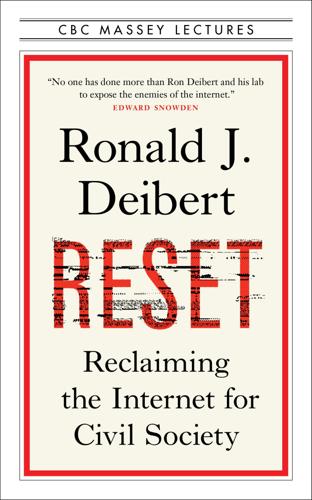
Reset
by
Ronald J. Deibert
Published 14 Aug 2020
-based non-profit TechSoup Global, says adding extra life to computers saves between five and twenty times more energy than recycling them outright.385 To be sure, the philosophy of “not a screw going wasted” is one that could be helpfully duplicated the world over, and used as a way to claw back some control over the platforms and companies that actively lobby against the right to repair, reuse, and remanufacture. But that’s still just treating one symptom of a much bigger underlying disease. * * * The COVID-19 pandemic reminded us in a brutal way that we are intimately and inescapably tied to nature. Most of us are now familiar with the term “Anthropocene,” which refers to the human impacts on the natural environment — now reaching the point of existential risk because of the climate crisis. Some scientists have studied how climate change may impact the internet and social media. One study warns that rising sea levels risk flooding critical infrastructure located in coastal areas.386 Says the author of the study, Alejandra Borunda, “We find that 4,067 miles of fiber conduit will be under water and 1,101 nodes (e.g., points of presence and colocation centers) will be surrounded by water in the next 15 years.”
…
The development of “civic media” as a “social” or “public” (instead of commercial) “good”: Owen. The case for platform governance. Everyone’s efforts are weaving something larger than their own separate struggles: Deudney, D., & Mendenhall, E. (2016). Green Earth: The emergence of planetary civilization. In S. Nicholson & S. Jinnah (Eds.), New Earth politics: Essays from the Anthropocene (43–72). MIT Press. https://doi.org/10.2307/j.ctt1b349c4.8 The social media equivalent of Rachel Carson’s Silent Spring, Barry Commoner’s The Closing Circle, and Paul Ehrlich’s The Population Bomb: Carson, R. (1962). Silent spring. Houghton Mifflin; Commoner, B. (1971). The closing circle: Nature, man, and technology.
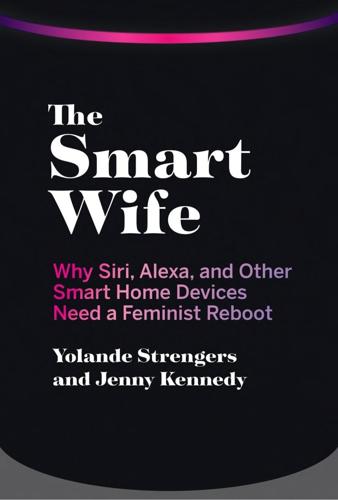
The Smart Wife: Why Siri, Alexa, and Other Smart Home Devices Need a Feminist Reboot
by
Yolande Strengers
and
Jenny Kennedy
Published 14 Apr 2020
We are inspired here by Haraway and her book Staying with the Trouble. Haraway calls on her readers to “make trouble, to stir up potent response [sic] to devastating events, as well as to settle troubled waters and rebuild quiet places” in the “troubling and turbid” times that we live in. In the context of the Anthropocene—the epoch in which humans are completely transforming and remaking the planet—Haraway’s work argues for a “multispecies flourishing on earth, including human and other-than-human beings in kinship.”1 So too we propose a flourishing that accommodates the many species of smart wives and humans involved in realizing the smart wife.
…
See also Alexa (Amazon) Dot Kids, 168 Glow, 197 Look, 186–189, 192, 194–195, 203 Anatomy of an AI System (Crawford and Joler), 97–98, 99, 103, 107, 189, 220 Angle, Colin, 27 Anheuser-Busch, 35–36 Animal-inspired robots. See Pet-inspired robots; Zoomorphic forms of smart wives Anime (animation), 65, 66, 68, 126–127 AnitaB.org, 212 Anthropocene, 208 Anthropomorphic forms of smart wives, 2, 19, 49, 56, 62, 165 Apple. See also Siri (Apple) as Big Five member, 85 employment at, and gender, 9 Home system, 46 renewable energy commitment, 101 users’ loss of control over devices, 193–194 working conditions, 99 Apple Watch, 30 Applin, Sally, 187 Aristotle (Mattel), 196–197 Artificial intelligence (AI) biases in, 219 as component of smart wife, 2 diversity imbalance in industry, 9, 10–11, 62 ethics, 224–226 marriage between Alexa and Siri, 127, 210 need for transdisciplinary approach to, 213 Artificial life made in creator’s image, 70 Ashley Too bot (Black Mirror), 218–219 Asian internet companies, 101 Asian smart wife markets, 4 ASIMO (Honda), 49, 56–57, 58, 67 Asimov, Isaac, 172–173 Assistive robots.
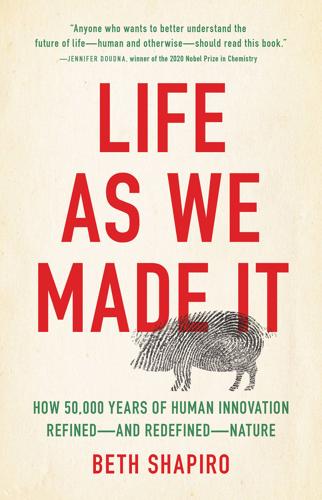
Life as We Made It: How 50,000 Years of Human Innovation Refined--And Redefined--Nature
by
Beth Shapiro
Published 15 Dec 2021
Proceedings of the National Academy of Sciences 113: 880–885. Greenburg J. 2014. A Feathered River Across the Sky: The Passenger Pigeon’s Flight to Extinction. New York: Bloomsbury. Johnson CN, Balmford A, Brook BW, Buettel JC, Galetti M, Guangchun L, Wilmshurst JM. 2017. Biodiversity losses and conservation responses in the Anthropocene. Science 356: 270–275. Kistler L, Montenegro A, Smith BD, Gifford JA, Green RE, Newsom LA, Shapiro B. 2014. Trans-oceanic drift and the domestication of African bottle gourds in the Americas. Proceedings of the National Academy of Sciences 111: 2937–2941. Milius S. 2020 May 29. More “murder hornets” are turning up.
…
De-extinction and conservation: An introduction to the special issue “Recreating the wild: De-extinction, technology, and the ethics of conservation.” Hastings Center Report 47: S2–S4. Madrigal A. 2013 March 18. The 10 minutes when scientists brought a species back from extinction. The Atlantic. Malhi Y, Doughty CE, Galetti M, Smith FA, Svenning J-C, Terborgh JW. 2016. Megafauna and ecosystem function from the Pleistocene to the Anthropocene. Proceedings of the National Academy of Sciences 113: 838–846. Newhouse AE, Powell WA. 2021. Intentional introgression of a blight tolerance transgene to rescue the remnant population of American chestnut. Conservation Science and Practice. https://doi.org/10.1111/csp2.348. Noble C, Min J, Olejarz J, Buchthal J, Chavez A, Smidler AL, DeBenedictis EA, Church GM, Nowak MA, Esvelt KM. 2019.

When It All Burns: Fighting Fire in a Transformed World
by
Jordan Thomas
Published 27 May 2025
GO TO NOTE REFERENCE IN TEXT right-wing militias in Oregon: See Luke Mogelson, The Storm Is Here: An American Crucible (New York: Penguin Press, 2022). GO TO NOTE REFERENCE IN TEXT Our current trajectory: Laura Pulido, “Racism and the Anthropocene,” in Future Remains, Gregg Mitman, Marco Armiero, and Robert Emmett, eds. (Chicago: University of Chicago Press, 2018), 116–28, https://www.woodsholediversity.org/wp-content/uploads/sites/33/2021/02/Racism-and-the-Anthropocene.pdf. GO TO NOTE REFERENCE IN TEXT Chapter 12 The giant sequoia: There are many excellent books on the sequoias that detail both their natural and cultural history.

Human Frontiers: The Future of Big Ideas in an Age of Small Thinking
by
Michael Bhaskar
Published 2 Nov 2021
How is the frontier stickier, slower, further away, more dispersed, and what does that mean? Why is it, when we have more people, with access to more knowledge and tools than ever, notionally spending their time on thinking, researching and creating, that there are signs of a slowdown in big ideas? Above those, however, is perhaps the ultimate question of the Anthropocene: whether this trend of relative slowdown, of big ideas stumbling rather than soaring, will continue and intensify over the next century, or whether a series of efforts and initiatives can reverse it. I will look to the most likely scenarios here, exploring everything from the structure of knowledge to the regulation of innovations, the growth of education in China to the boom in AI research.
…
utm_source=twitterShare White, Curtis (2003), The Middle Mind: Why Americans Don't Think for Themselves, San Francisco: HarperSanFrancisco White, Curtis (2014), The Science Delusion: Asking the Big Questions in a Culture of Easy Answers, New York: Melville House Whitehead, A.N. (1925), Science and the Modern World, London: Macmillan Williams, Jeffrey J. (2018), ‘The Rise of the Promotional Intellectual’, The Chronicle of Higher Education, accessed 22 August 2018, available at https://www.chronicle.com/article/the-rise-of-the-promotional-intellectual/ Wilson, Edward O. (2017), The Origins of Creativity, London: Allen Lane Winchester, Simon (2008), The Man Who Loved China: The Fantastic Story of the Eccentric Scientist Who Unlocked the Mysteries of the Middle Kingdom, New York: HarperCollins Wolf, Martin (2019), ‘On the Technological Slowdown’, Foreign Affairs, accessed 14 July 2019, available at https://www.foreignaffairs.com/articles/2015-11-19/martin-wolf-innovation-slowdown Wong, May (2017), ‘Scholars say big ideas are getting harder to find’, Phys.org, accessed 10 October 2018, available at https://phys.org/news/2017-09-scholars-big-ideas-harder.html Wootton, David (2015), The Invention of Science: A New History of the Scientific Revolution, London: Allen Lane Wright, Robert (2000), Nonzero: History, Evolution and Human Cooperation, New York: Pantheon Books Wright, Ronald (2006), A Short History of Progress, Edinburgh: Canongate Wu, L., Wang, D., and Evans, J.A. (2019), ‘Large teams develop and small teams disrupt science and technology’, Nature 566, pp. 378–82 Wuchty, Stefan, Jones, Benjamin F., and Uzzi, Brian (2007), ‘The Increasing Dominance of Teams in Production of Knowledge’, Science, Vol. 316 No. 5827, pp. 1036–9 Xinhua (2019), ‘China to build scientific research station on Moon's south pole’, Xinhua, accessed 18 January 2021, available at http://www.xinhuanet.com/english/2019-04/24/c_138004666.htm Yueh, Linda (2018), The Great Economists: How Their Ideas Can Help Us Today, London: Penguin Viking Index ‘0,10’ exhibition 103 ‘0-I’ ideas 31 Aadhaar 265 abstraction 103 AC motor 287, 288 academia 209 Académie des sciences 47 Adam (robot) 235–6 Adams, John 211 Adler, Alfred 188 Adobe 265 Advanced Research Projects Agency (ARPA) 180, 247, 253, 296, 317 AEG 34 aeroplanes 62–6, 68–70, 71, 219 Aeschylus 3 Africa 267, 279–80, 295 age/ageing 122, 158–60, 193 AGI see artificial general intelligence Agrarian Revolution 252 agricultural production 92–3 AI see artificial intelligence Akcigit, Ufuk 193 Alexander the Great 159 Alexander, Albert 52 Alexandrian Library 4, 295, 304 algorithms 175, 185, 196, 224, 235, 245 aliens 240–1, 306, 308–9, 337 Allison, Jim 58 Alphabet 193, 225, 265, 294, 295 AlphaFold software 225–6, 227, 228–9, 233 AlphaGo software 226–7, 228, 233 AlQuraishi, Mohammed 225, 226, 229 Amazon 84–5, 214, 272 Amazon Prime Air 71 American Revolution 139 amino acids 223, 226 Ampère, André-Marie 74–5 Anaximander 35 ancestors 10–12 ancient Greeks 1–6, 7–8, 291, 303–4 Anderson, Kurt 106 Angkor Wat 43 anthrax 47–8, 51 Anthropocene 14–15 anti-reason 211–12 anti-science 211–12 antibacterials 234 antibiotics 38, 52–3, 124, 125, 217, 315 resistance to 235 Apollo missions 70, 315, 316, 317, 318 Apple 33, 85, 159, 185, 186, 193, 272, 296, 312 Aquinas, Thomas 36 AR see augmented reality archaeology 153–4 Archimedes 1–6, 7–8, 19, 27, 32, 37, 39, 291, 304 architecture 103, 115, 188 ARIA 297 Aristarchus 5 Aristotle 24, 108, 282, 304 Arkwright, Richard 25, 26, 34, 253 Armstrong, Louis 103 ARPA see Advanced Research Projects Agency art 99–104, 107–8, 176–7, 236, 321, 339 Artemis (Moon mission) 71, 218 artificial general intelligence (AGI) 226, 237–8, 249, 250, 310, 313, 330, 341 artificial intelligence (AI) 225–9, 233–41, 246–7, 248, 249–52, 262, 266, 300, 310, 312–13, 323, 329, 330, 331, 338 arts 152, 293 see also specific arts Artsimovich, Lev 147 arXiv 116 Asia 264, 267–8, 273, 275 Asimov, Isaac, Foundation 45 Astor, John Jacob 288 astronomy 30, 231, 232 AT&T 85, 181, 183, 185, 197 Ates, Sina T. 193 Athens 24, 295 Atlantis 154 augmented reality (AR) 241–2, 338 authoritarianism 112–13, 284 autonomous vehicles 71, 72, 219 ‘Axial Age’ 108 Azoulay, Pierre 317–18 Bach, J.S. 236 bacillus 46 Bacon, Francis 25, 259 bacteria 38, 46, 53 Bahcall, Safi 31 Ballets Russes 99–100 Baltimore and Ohio railway 67 Banks, Iain M. 310 Bardeen, John 182 BASF 289 Batchelor, Charles 286 Bates, Paul 226 Bayes, Thomas 289 Beagle (ship) 36 Beethoven, Ludwig van 26 Beijing Genomics Institute 257, 294–5 Bell Labs 180–4, 186–8, 190, 206, 214, 217, 289, 296, 322 Benz, Karl 68, 219, 330 Bergson, Henri 109 Bessemer process 80 Bezos, Jeff 71, 326 Bhattacharya, Jay 201, 202, 321 Biden, Joe 59 Big Bang 117, 174, 181 Big Big Ideas 79–80 big ideas 5, 8, 11, 13–19 adoption 28 and an uncertain future 302–36 and art 99–103 artificial 223–38 and the Big Ideas Famine 13 and bisociation 36 blockers to 17–18 and breakthrough problems 46–73, 77, 86, 98, 222, 250, 301 and the ‘burden of knowledge’ effect 154–65, 175, 178, 235, 338 and business formation 95 ceiling 18 conception 37 definition 27–8, 40–1 Enlightenment 132–40, 136–40 era of 109–10 erroneous 176 evidence for 222, 223–54 execution 37 ‘fishing out’ mechanism 152 future of 45, 98, 302–36, 337–43 harmful nature 41–2 how they work 23–45 and the Idea Paradox 178–9, 187, 191, 217, 226, 250, 254, 283–4, 301, 312, 342 and the Kardashev Scale 337–43 long and winding course of 4, 5, 35–8, 136 and the low-hanging fruit paradox 149–54, 167, 178 and luck 38–9 moral 136, 138 nature of 169–72 necessity of 41–3 need for 42–3 normalisation of 171–5, 178 originality of 28 paradox of 143–79 and patents 97 process of 37–8 purchase 37–8 and resources 128 and rights 132–40 and ‘ripeness’ 39 and short-termism 192 slow death of 106–7 slowdown of 98 society's reaction to 216 and specialisation 156, 157–8 today 21–140 tomorrow 141–343 big pharma 31, 60, 185, 217–18, 226 Big Science 118–19 Bill of Rights 137 Bingham, Hiram 153 biology 243–8, 300 synthetic 245–6, 251, 310, 329 BioNTech 218, 298 biotech 195–6, 240, 246, 255–8, 262, 266, 307 bisociation 36 Björk 104 Black, Joseph 26 ‘black swan’ events 307, 310 Bletchley Park 180, 296 Bloom, Nick 91, 92, 93 Boeing 69, 72, 162, 165, 192, 238 Bohr, Niels 104, 118, 159 Boltsmann, Ludwig 188 Boston Consulting Group 204 Botha, P.W. 114 Bowie, David 107 Boyer, Herbert 243 Boyle, Robert 232 Brahe, Tycho 36, 229, 292 brain 166, 246–8, 299–300 collective 299, 300–1 whole brain emulations (‘ems’) 248–9, 341 brain drains 197 brain-to-machine interfaces 247–8 Branson, Richard 71 Brattain, Walter 182 Brazil 266–7, 268, 279 breakthrough organisations 294–9 breakthrough problems 46–73, 77, 86, 98, 222, 234, 250, 301 breakthroughs 2–5, 27–8, 32–7, 41, 129, 152, 156 and expedition novelty 333 hostility to 187 medical 58–60 missing 175 near-misses 160 nuclear power 145 price of 87–98 and short-termism 192 slowdown of 87, 94 society's reaction to 216 and universities 204 see also ‘Eureka’ moments breast cancer 94 Brexit referendum 2016: 208 Brin, Sergey 319, 326 Britain 24, 146, 259, 283, 297 see also United Kingdom British Telecom 196 Brunel, Isambard Kingdom 67 Brunelleschi 232 Bruno, Giordano 216 Buddhism 108, 175, 264–5, 340 Buhler, Charlotte 188–9 Buhler, Karl 188–9 ‘burden of knowledge’ effect 154–65, 175, 178, 235, 338 bureaucracy 198–87, 280–1 Bush, George W. 211 Bush, Vannevar 168, 314–15, 317 business start-ups 95–6 Cage, John 104 Callard, Agnes 111 Caltech 184 Cambridge University 75, 76, 124, 235–6, 257, 294–6 canals 67 cancer 57–61, 76, 93–4, 131, 234, 245, 318 research 59–61 capital and economic growth 88 gray 192, 196 human 275, 277 capitalism 36, 111–13, 186, 189, 191–8 CAR-Ts see chimeric antigen receptor T-cells carbon dioxide emissions 220–1 Cardwell's Law 283 Carey, Nessa 244 Carnap, Rudolf 189 Carnarvon, Lord 153 cars 289 electric 71 flying 71 Carter, Howard 153 Carter, Jimmy 58 Carthage 3, 43 Cartright, Mary 163 CASP see Critical Assessment of Protein Structure Prediction Cassin, René 135 Catholic Church 206, 230 Cavendish Laboratory 76, 294 Cell (journal) 234 censorship 210–11 Census Bureau (US) 78 Centers for Disease Control 212 Cerf, Vint 253 CERN 118, 233, 239, 252, 296 Chain, Ernst 52, 60, 124 Champollion, Jean-François 155 Chang, Peng Chun 135 change 10–13, 18–19, 24 rapid 30, 32 resistance to 222 slowdown 85 chaos theory 163 Chaplin, Charlie 104 Chardin, Pierre Teilhard de 300 Charpentier, Emmanuelle 244, 256 chemistry 49, 56, 104, 117, 118, 124, 149–50, 159, 241, 244 chemotherapy 57 Chicago 10 chicken cholera 46 chimeric antigen receptor T-cells (CAR-Ts) 58, 61 China 15, 25, 71–2, 111, 112, 138, 208, 213, 216, 255–64, 265, 266, 267, 268, 275, 277, 279, 280, 283, 284–5, 312, 313, 314, 319, 328 Han 259, 260 Ming 284, 308, 309 Qing 260 Song 24, 259–60, 306 Tang 259–60 Zhou 259 Christianity 108, 303–4, 340 Church, George 245 cities 270–2, 308–9, 340 civilisation collapse 42–4 decay 187 cleantech 195 climate change 219–21, 284, 313–14, 338 clinical trials 218 cliodynamics 339 coal 23, 24, 26, 80, 220 Cocteau, Jean 101 cognitive complexity, high 332–3 cognitive diversity 281–3 Cognitive Revolution 252 Cohen, Stanley N. 243, 244 collective intelligence 339 collectivism 282 Collison, Patrick 117, 272 colour 75 Coltrane, John 104 Columbian Exchange 177 Columbus 38 comfort zones, stepping outside of 334 communism 111, 133, 134, 173, 217, 284 companies creation 95–6 numbers 96–7 competition 87, 283 complacency 221–2 complexity 161–7, 178, 204, 208, 298, 302, 329 high cognitive 332–3 compliance 205–6 computational power 128–9, 168, 234, 250 computer games 107 computers 166–7, 240, 253 computing 254 see also quantum computing Confucianism 133, 259 Confucius 24, 108, 109, 282 Congressional Budget Office 82 connectivity 272 Conon of Samos 4 consciousness 248, 340 consequences 328–9 consolidation, age of 86 Constantine 303 convergence 174, 311–12 Copernicus 29, 30, 41, 152, 171, 229, 232, 292 copyright 195 corporations 204–5 cosmic background microwave radiation 117, 181 cotton weaving, flying shuttle 24–5 Coulomb, Charles-Augustin de 74–5 counterculture 106 Covid-19 (coronavirus) pandemic 13, 14, 15, 55, 86, 113–14, 193, 202, 208, 212, 218, 251–2, 263, 283–4, 297–8, 309, 318, 327 vaccine 125, 245 Cowen, Tyler 13, 82, 94–5, 221 cowpox 47 creativity 188, 283 and artificial intelligence 236 crisis in 108 decrease 106–8 and universities 203 Crete 43 Crick, Francis 119, 296 CRISPR 243, 244, 251, 255–8, 299 Critical Assessment of Protein Structure Prediction (CASP) 224–6, 228 Cronin, Lee 242 crop yields 92–3 cultural diversity 281–3 cultural homogenisation 177 cultural rebellion 106–7 Cultural Revolution 114, 305 culture, stuck 106 Cunard 67 Curie, Marie 104, 144, 203, 289–90, 332 Daniels, John T. 62–3 Daoism 259 dark matter/energy/force 338 DARPA see Defense Advanced Research Projects Agency Darwin, Charles 34, 35–6, 37–8, 41, 77, 109, 118, 171, 289 Darwin, Erasmus 35 data 233 datasets, large 28 Davy, Sir Humphrey 149, 150 Debussy, Claude 100–1 decision-making, bad 43–4 Declaration of Independence 1776: 137 Declaration of the Rights of Man and Citizen 1789: 137 DeepMind 225–9, 296 Defense Advanced Research Projects Agency (DARPA) 315 democracy 111–12 Deng Xiaoping 261 deoxyribonucleic acid (DNA) 119, 223–4, 243, 251, 255, 339 DNA sequencing 56 Derrida, Jacques 109 Deutsch, David 126, 203 Diaghilev, Sergei 99–101 Diamond, Jared 42 Digital Age 180 digital technology 241–2, 243 diminishing returns 87, 91, 94, 97, 118, 123, 126, 130–1, 150, 161, 169, 173, 222, 250, 276, 285, 301 Dirac, Paul 159–60 disruption 34, 96, 109, 119, 157 diversity, cultural 281–3 DNA see deoxyribonucleic acid Dorling, Danny 171 Doudna, Jennifer 244, 251, 256 Douglas, Mary 290 Douthat, Ross 14, 106 drag 65 Drake equation 306 Drezner, Daniel 214 drones, delivery 71, 72 Drucker, Peter 189 drugs 55–7, 124, 235 Eroom's Law 55, 57, 61, 92–3, 119, 161, 234, 245, 338 and machine learning 234 research and development 55–7, 61, 92–4, 119, 161, 172–3, 217–18, 234, 245, 315, 338 see also pharmaceutical industry Duchamp, Marcel 103, 171 DuPont 184 Dutch East India Company 34 Dyson, Freeman 120 dystopias 305–8 East India Company 34 Easter Island 42–3 Eastern Europe 138 ecocides 42–3 economic growth 240, 272, 273, 316 endogenous 94 and ideas 88, 89–92, 95 process of 87–8 slowdown 82, 83, 84, 85, 178 economics 87–9, 98, 339, 340 contradictions of 87 Economist, The (magazine) 188 Edelman annual trust barometer 209 Edison, Thomas 183–4, 286–9, 290, 293 education 127, 277, 324–8 Einstein, Albert 11, 29, 74, 77, 104, 109, 117, 119, 124, 159–60, 203, 332 Eisenstein, Elizabeth 231 Eldredge, Niles 30 electric cars 71 electricity 11, 74–7, 81, 286–7, 289 electromagnetic fields 76 electromagnetic waves 75, 76 elements (chemical) 149–50 Elizabeth II 144–5 employment 204–5 Encyclopædia Britannica 97, 128, 155 ‘End of History’ 112 energy 337–8, 341–2 availability 85 use per capita 85 see also nuclear power engineering 243 England 25, 144–5, 309 Englert, François 118 Enlightenment 130, 136–40, 252 see also Industrial Enlightenment; neo-Enlightenment Eno, Brian 295 entrepreneurship, decline 96 epigenetics 164 epigraphy 236–7 epistemic polarisation 210 Epstein, David 334 Eratosthenes 5 Eroom's Law 55, 57, 61, 92–3, 119, 161, 234, 245, 338 ethical issues 256–7 Euclid 3, 304 ‘Eureka’ moments 2–5, 35, 36–7, 129, 163 Europe 95, 247, 258–60, 268, 268, 271, 283, 304, 308 European Space Agency 71 European Union (EU) 206, 216, 262, 266 Evans, Arthur 153 evolutionary theory 30, 35–6 expedition novelty 333 experimental spaces 296–8 Expressionism 104 Facebook 34, 159, 170, 197 Fahrenheit 232 failure, fear of 335 Faraday, Michael 75 FCC see Future Circular Collider FDA see Food and Drug Administration Federal Reserve (US) 82 Feigenbaum, Mitchell 163 fermentation 49 Fermi, Enrico 143, 159, 306 Fermi Paradox 306 Fernández-Armesto, Felipe 109 fertility rates 269 Feynman, Richard 77, 166, 332 film 104, 106–7, 108, 115 financialism 191–8, 206–7, 214, 217, 219 Firebird, The (ballet) 99–100 ‘first knowledge economy’ 25–6 First World War 54, 99, 104, 187, 188–9 Fisk, James 182 Fleming, Alexander 38, 52, 60, 332 flight 36, 62–6, 68–70, 71, 335 Flint & Company 64 flooding 220, 284 Florey, Howard 52, 60, 124, 332 Flyer, the 62–4, 66, 72 Foldit software 225 Food and Drug Administration (FDA) 55, 60, 93, 212 food supply 81 Ford 34, 253 Ford, Henry 68, 104, 219 Fordism 81 Foucault, Michel 110 Fraenkel, Eduard 124 France 49–51, 54, 64, 67, 95, 279, 309, 332 franchises 31 Franklin, Benjamin 119, 211 Frederick the Great 292 French Revolution 137, 275 Freud, Sigmund 34, 36, 77, 104, 171, 188, 190, 216 frontier 278–9, 283–4, 302, 310–11 Fukuyama, Francis 111–12 fundamentalism 213 Future Circular Collider (FCC) 239 futurology 44 Gagarin, Yuri 70 Galen 303 Galileo 206, 231, 232, 291, 322 Galois, Évariste 159 GDPR see General Data Protection Regulation Gell-Mann, Murray 77 gene editing 243–4, 251, 255–8 General Data Protection Regulation (GDPR) 206 General Electric (GE) 33, 184, 265, 288, 333 General Motors 289 Generation Z 86 genes 223–4 genetic engineering 243–4, 251, 253, 255–8 genetic science 163–4, 202 genius 26 genome, human 119, 202, 244, 255–7, 296, 313 genome sequencing 243–4 germ theory of disease 50–1, 53 Germany 54, 95, 96, 279, 283, 292, 332 Gesamtkunstwerk 99 Gibson, William 241 Glendon, Mary Ann 135 global warming 147 globalisation 177 Go 226–7 Gödel, Kurt 41, 168 Goldman Sachs 197 Goodhart's Law 199 Google 34, 85, 185, 197, 240, 272, 318 20 per cent time 319–20 Google Glass 241 Google Maps 86 Google Scholar 116 Google X 294 Gordon, Robert 13, 83, 94–5 Gouges, Olympe de 137 Gould, Stephen Jay 30 Gove, Michael 208 government 205, 207, 214, 216, 252, 267–8, 297 funding 185–6, 249, 252, 314–19, 321 GPT language prediction 234, 236 Graeber, David 13–14, 111 grants 120, 185–6, 195, 202, 316, 317, 319, 321–3 gravitational waves 117–18, 119 Great Acceleration 309–10 Great Convergence 255–301, 339 Great Disruption 96 Great Enrichment (Great Divergence) 23, 26, 258 Great Exhibition 1851: 293, 309 Great Stagnation Debate 13–14, 16, 17, 45, 72, 82–3, 87, 94–6, 129, 150, 240, 279, 338 Greenland 42 Gropius, Walter 103 Gross Domestic Product (GDP) 82, 90, 128, 278, 318 GDP per capita 23, 78, 82 growth cultures 25 growth theory, endogenous 88–9, 94 Gutenberg, Johannes 36 Guzey, Alexey 200, 322 Haber, Fritz 332 Haber-Bosch process 289 Hadid, Zaha 152 Hahn, Otto 144 Hamilton, Margaret 316 Harari, Yuval Noah 114–15, 236 Harris, Robert 307 Harvard Fellows 200 Harvard, John 156 Harvey, William 34, 291–2 Hassabis, Demis 229, 233 Hayek, Friedrich 189 Hegel, Georg Wilhelm Friedrich 36 Heisenberg, Werner 41, 159, 168, 332 heliocentric theory 5, 29, 118, 232, 304 helium 145 Hendrix, Jimi 105 Henry Adams curve 85 Hero of Alexandria 39 Herper, Matthew 55 Hertz, Heinrich 76 Herzl, Theodor 188 Hesse, Herman 307 Hieron II, king of Syracuse 1–2 Higgs, Peter 118 Higgs boson 117–18, 119, 239 Hinduism 133 Hiroshima 144 Hitler, Adolf 138, 188 Hodgkin, Dorothy 124, 332 Hollingsworth, J.
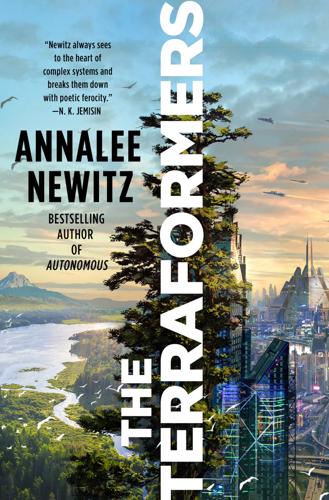
The Terraformers
by
Annalee Newitz
They couldn’t technically be owned by Verdance, or anyone. Destry wasn’t sure what kind of twisted, legal logic her boss, Ronnie, had deployed to establish an ERT campus here. The ancient order of environmental engineers and first responders traced their lineage all the way back to the Farm Revolutions that ended the Anthropocene on Earth, and started the calendar system people still used today. According to old Handbook lore, the Trickster Squad—Sky, Beaver, Muskrat, and Wasakeejack—founded the Environmental Rescue Team 59,006 years ago. That’s when the legendary heroes saved the world from apocalyptic floods by inventing a new form of agriculture.
…
They would send their genetic material to this biobank, and analysts would tell their fortunes by grouping them into categories like ‘West African’ or ‘European’ or ‘Indigenous American.’ ” Moose growled softly. So he really did find an indigenous genome? “Oh—absolutely not.” Ronnie waved a hand dismissively. “They were cultural categories, mystical groupings that meant a lot to people during the late Anthropocene.” I’m still not following. “Neither did Archie. He didn’t know that history, or didn’t care. He wanted an authentic indigenous Earth genome, and when he saw the word ‘indigenous’ in that old biobank he told the researchers to grab all the data associated with it. They plundered everything, all the sequence data.”
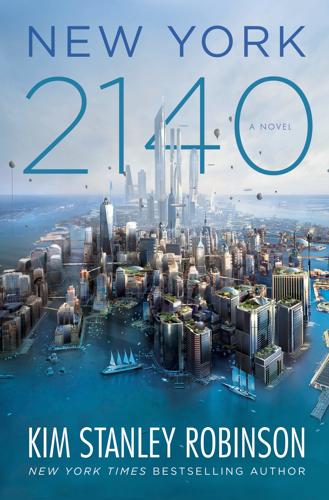
New York 2140
by
Kim Stanley Robinson
Published 14 Mar 2017
People sometimes say no one saw it coming, but no, wrong: they did. Paleoclimatologists looked at the modern situation and saw CO2 levels screaming up from 280 to 450 parts per million in less than three hundred years, faster than had ever happened in the Earth’s entire previous five billion years (can we say “Anthropocene,” class?), and they searched the geological record for the best analogs to this unprecedented event, and they said, Whoa. They said, Holy shit. People! they said. Sea level rise! During the Eemian period, they said, which we’ve been looking at, the world saw a temperature rise only half as big as the one we’ve just created, and rapid dramatic sea level rise followed immediately.
…
The important part is that those warmer ocean currents circulate all over, including around Antarctica, which sits down at the bottom of the world like a big cake of ice. A really big cake of ice. Melt all that ice and pour it in the ocean (though it pours itself) and sea level would go 270 feet higher than the old Holocene level. Melting all the ice on Antarctica is a big job, however, and will not happen fast, even in the Anthropocene. But any Antarctic ice that slides into the ocean floats away, leaving room for more to slide. And in the twenty-first century, as during the three million years before that, a lot of Antarctic ice was piled up on basin slopes, meaning giant valleys, which angled down into the ocean. Ice slides downhill just like water, only slower; although if sliding (skimboarding?)
…
The march of progress! Sustainable development! Always there is an encouraging motto to mark the remorseless migration of capital from an ex–highest rate of return to the next primed site. And indeed, development of capital gets sustained. So in that process—call it globalization, neoliberal capitalism, the Anthropocene, the water boarding, what have you—the Second Pulse became just an unusually clear signal that it was time for capital to move on. Rate of return on all coastlines having been definitively hosed, capital, having considerably more liquidity than water, slid down the path of least resistance, or up it, or sideways—it doesn’t matter, money being so slippery and antigravitational, with no restraints on capital flight or any other such impediment that the feeble remnant nation-state system might have thought to apply, if it had not already been bought and now owned by that very same capital saying bye-bye to the new backwater.
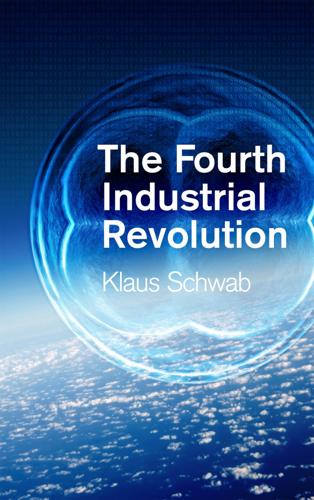
The Fourth Industrial Revolution
by
Klaus Schwab
Published 11 Jan 2016
This will be increasingly critical in order to navigate and harness the opportunities of the fourth industrial revolution. Towards a new cultural renaissance As the poet Rainer Maria Rilke wrote, “the future enters into us...in order to transform itself in us long before it happens.”73 We must not forget that the era we currently live in, the Anthropocene or Human Age, marks the first time in the history of the world that human activities are the primary force in shaping all life-sustaining systems on earth. It is up to us. Today we find ourselves at the beginning of the fourth industrial revolution, looking forward and, more importantly, possessing the ability to influence its path.
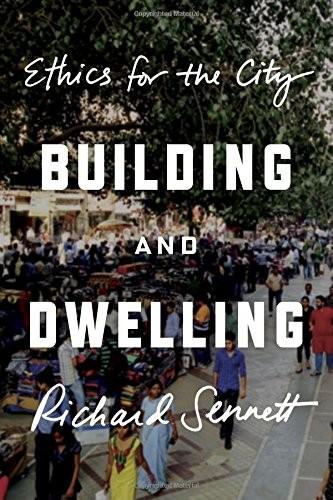
Building and Dwelling: Ethics for the City
by
Richard Sennett
Published 9 Apr 2018
Pei Li, Jinyuan Xin, Yuesi Wang, Guoxing Li, Xiaochuan Pan, Shigong Wang, Mengtian Cheng, Tianxue Wen, Guangcheng Wang and Zirui Liu, ‘Association between Particulate Matter and Its Chemical Constituents of Urban Air Pollution and Daily Mortality or Morbidity in Beijing City’, Environmental Science and Pollution Research 22, no. 1 (2015): 358–68. 6. A good general overview of this complex subject is François Gemenne, ‘The Anthropocene and Its Victims’, in Clive Hamilton, Christophe Bonneuil and François Gemenne (eds), The Anthropocene and the Global Environmental Crisis: Rethinking Modernity in a New Epoch (New York: Routledge 2015). 7. Philipp Rode and Ricky Burdett, ‘Cities: Investing in Energy and Resource Efficiency’, in Towards a Green Economy: Pathways to Sustainable Development and Poverty Eradication (United Nations Environment Programme, 2011), pp. 331–73. 8.
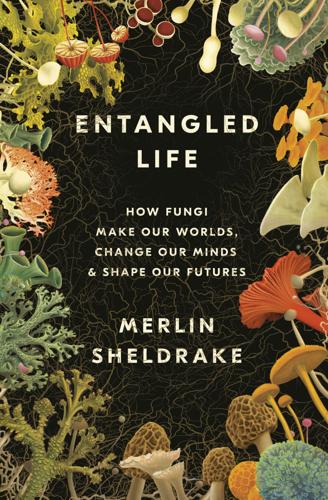
Entangled Life: How Fungi Make Our Worlds, Change Our Minds & Shape Our Futures
by
Merlin Sheldrake
Published 11 May 2020
As has long been the case, the influences of these trading decisions scale up and spill out over whole ecosystems and landmasses. A large study published in 2018 suggested that the “alarming deterioration” of the health of trees across Europe was caused by a disruption of their mycorrhizal relationships, brought about by nitrogen pollution. Mycorrhizal associations born of the Anthropocene will determine much of humans’ ability to adapt to the worsening climate emergency. Nowhere are the possibilities—and pitfalls—more apparent than in agriculture. * * * — “ON THE EFFICIENCY of this mycorrhizal association the health and well-being of mankind must depend.” So wrote Albert Howard, a founding figure in the modern organic farming movement and a passionate spokesman for mycorrhizal fungi.
…
Has the microbiota played a critical role in the evolution of the adaptive immune system? Science 330: 1768–773. Legras J, Merdinoglu D, Couet J, Karst F. 2007. Bread, beer and wine: Saccharomyces cerevisiae diversity reflects human history. Molecular Ecology 16: 2091–102. Le Guin U. 2017. “Deep in Admiration.” In Arts of Living on a Damaged Planet: Ghosts of the Anthropocene. Tsing A, Swanson H, Gan E, Bubandt N, eds. Minneapolis, MN: University of Minnesota Press, pp. M15–M21. Lehmann A, Leifheit EF, Rillig MC. 2017. “Mycorrhizas and Soil Aggregation.” In Mycorrhizal Mediation of Soil: Fertility, Structure, and Carbon Storage. Johnson N, Gehring C, Jansa J, eds.

Frostbite: How Refrigeration Changed Our Food, Our Planet, and Ourselves
by
Nicola Twilley
Published 24 Jun 2024
Those chickens are also double the size and five times the weight of their preindustrial ancestors, giving them a combined mass that exceeds that of all other birds on Earth. The team of researchers behind these calculations used them to suggest that the layer of chicken bones currently piling up in landfills around the world is, in fact, an ideal marker of the Anthropocene, the proposed unit of geological time in which Earth’s systems have been profoundly reconfigured by humans. Chickens may be a signal to future geologists, but environmental scientist Vaclav Smil suggests that cows might perform that role for aliens. Meat and dairy animals so vastly outweigh all other vertebrates that “if sapient extraterrestrial visitors could get an instant census of mammalian biomass on the Earth in order to judge the importance of organisms simply by their abundance, they would conclude that life on the third solar planet is dominated by cattle.”
…
See also specific businesses Agricultural Revolution, 37–38 agriculture controlled atmosphere and, 121, 125 and diet/health, 264–65 gene banks, 316–18, 320 industrialization of, 169 introduction of, 37–40 prerefrigeration, 244 urban, 312 See also farmers air conditioning, 8, 86, 165–66, 182, 293 air freight, 21, 23, 174–78, 209, 282, 316 Alden, Charles, 70 Amana, 228–30 Amato (Americold supervisor), 4, 14, 16–17, 21 Amazon.com, 243 Ambrosi, Jimmy, 12–13, 16 American Civil War, 59–60, 263–64 American Linde Refrigerating Company, 140 American Society of Heating, Refrigerating, and Air-Conditioning Engineers (ASHRAE), 296 American Warehousemen’s Association, 94 Americold, 3–4, 9–17, 21–23, 194–95, 198–201 Anheuser-Busch, 20 antebellum puzzle, 263–66 Anthropocene, 106–7 Antle, Bud, 127–28 Apeel Sciences, 301–8 Appert, Nicolas, 38–39 apples, 33, 83, 267 ethylene and, 131–32, 135–36, 239–41 farming/harvesting of, 178, 252 preservation/storage of, 111–12, 114–24, 129–32, 156–58 shipping of, 174, 182, 189 spray coating for, 306 Argentina, 22, 70, 76–77, 81–82 Armour, 82, 167 Armour, Philip, 90 Asdal, Åsmund, 316, 318–20 atmospheric engineering/modification, 112, 116–18, 136, 141–46, 158, 239.
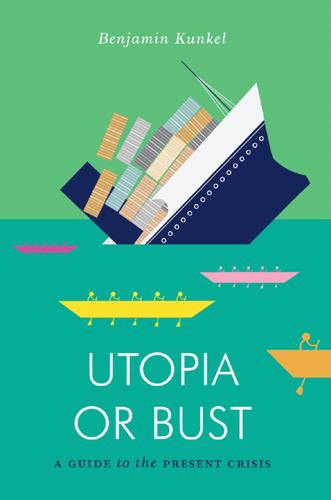
Utopia or Bust: A Guide to the Present Crisis
by
Benjamin Kunkel
Published 11 Mar 2014
And yet the best of Jameson’s work has felt mind-blowing in the way of LSD or mushrooms: here before you is the world you’d always known you were living in, but apprehended as if for the first time in the freshness of its beauty and horror. One of the trippier as well as more affecting passages in Valences of the Dialectic is a sort of aria on the condition of living, through global capitalism, in a totally man-made world, one in which even the weather patterns and the geological age (the Anthropocene, it was recently declared) are human productions: We have indeed secreted a human age out of ourselves as spiders secrete their webs: an immense, all-encompassing ceiling … which shuts down visibility on all sides even as it absorbs all the formerly natural elements in its habitat, transmuting them into its own man-made substance.
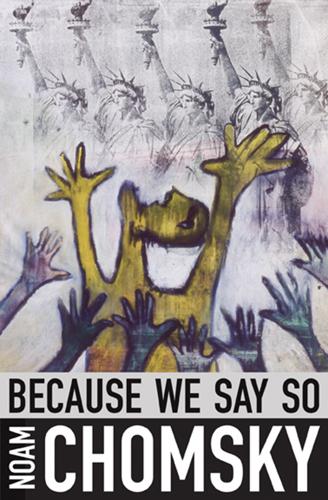
Because We Say So
by
Noam Chomsky
Along with melting Antarctic ice, that could raise sea levels to inundate major cities as well as coastal plains. The era of civilization coincides closely with the geological epoch of the Holocene, beginning over 11,000 years ago. The previous Pleistocene epoch lasted 2.5 million years. Scientists now suggest that a new epoch began about 250 years ago, the Anthropocene, the period when human activity has had a dramatic impact on the physical world. The rate of change of geological epochs is hard to ignore. One index of human impact is the extinction of species, now estimated to be at about the same rate as it was 65 million years ago when an asteroid hit the Earth.
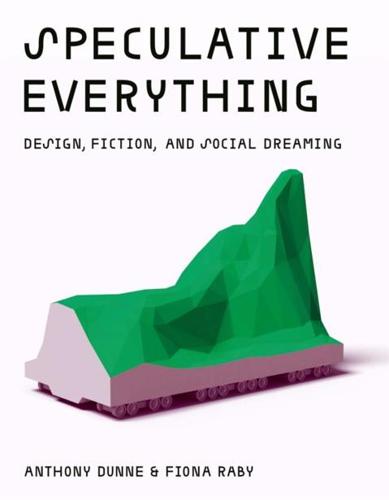
Speculative Everything: Design, Fiction, and Social Dreaming
by
Anthony Dunne
and
Fiona Raby
Published 22 Nov 2013
At times it is a hedonistic playground, a very loud, vast mobile pleasure paradise announced in advance by a slow thumping sound, like a party cruise boat on the Thames. But mostly, like the 1930s Californian homesteaders it is a community seeking isolation on the edges of civilization, away from the detrimental effects of the Anthropocene. An ecological wilderness similar to demilitarized zones has emerged along its route where an absence of humans means an abundance of wildlife, and rare species can thrive. Anyone who gets too close is zapped with a noise cannon. Their survival requires extraordinary discipline, but to maintain mental well-being in such a confined environment, diversity is accommodated as much as is possible.

Covid by Numbers
by
David Spiegelhalter
and
Anthony Masters
Published 28 Oct 2021
Anthony King How to See the World Nicholas Mirzoeff The Meaning of Science Tim Lewens Social Class in the 21st Century Mike Savage The European Union: A Citizen’s Guide Chris Bickerton The Caliphate Hugh Kennedy Islam: The Essentials Tariq Ramadan Basic Income: And How We Can Make It Happen Guy Standing Think Like an Anthropologist Matthew Engelke Hermeneutics: Facts and Interpretation in the Age of Information John D. Caputo Being Ecological Timothy Morton Object-Oriented Ontology: A New Theory of Everything Graham Harman Marx and Marxism Gregory Claeys The Human Planet: How We Created the Anthropocene Simon L. Lewis and Mark A. Maslin Think Again: How to Reason and Argue Walter Sinnott-Armstrong Parenting the First Twelve Years: What the Evidence Tells Us Victoria L. Cooper, Heather Montgomery, Kieron Sheehy Social Mobility: And Its Enemies Lee Elliot Major and Stephen Machin National Populism: The Revolt Against Liberal Democracy Roger Eatwell and Matthew Goodwin A Political History of the World Jonathan Holslag A Short History of Brexit From Brentry to Backstop Kevin O’Rourke Our Universe: An Astronomer’s Guide Jo Dunkley The Art of Statistics: Learning from Data David Spiegelhalter Chinese Thought: From Confucius to Cook Ding Roel Sterckx This is Shakespeare Emma Smith What We Really Do All Day Jonathan Gershuny and Oriel Sullivan The Government of No One Ruth Kinna Plunder of the Commons Guy Standing Artificial Intelligence Melanie Mitchell Can We Be Happier?
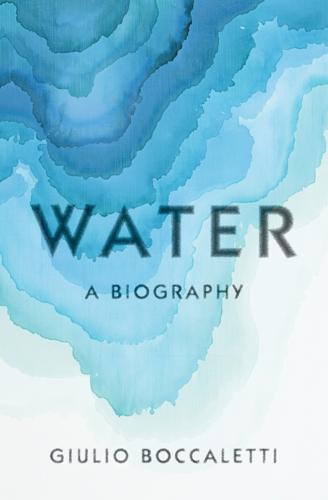
Water: A Biography
by
Giulio Boccaletti
Published 13 Sep 2021
Boccaletti has pinned down our complex relationship with our most vital resource. We live, like the ancients, in a hydraulic civilization—one determined to a remarkable degree by where and when we can find water. As he reveals with startling clarity, we face a water crisis as profound as our climate crisis. The fate of the Anthropocene hangs on the fate of water.” —Fred Pearce, author of When the Rivers Run Dry “Excellent. Boccaletti takes the reader on a polyglot tour de force that shows how the flow of human history, economics, and geopolitics is utterly connected to the constant blue thread of our need for water.
…
Its engineering had become an instrument of the state in creating an illusion of final emancipation from nature in service of a commonwealth. The question is what happens when—not if—the illusion of emancipation is shattered. At the dawn of the twenty-first century, humanity has become a force on the planet so powerful that some have renamed this era “the Anthropocene.” But that has not heralded the conquest of nature. Far from it. The profound modifications inflicted on the planet have tightened, not severed people’s relationship with water. The increase in greenhouse gas concentrations in the atmosphere is having a measurable impact on the energy balance of the planet, modifying Earth’s water cycle.
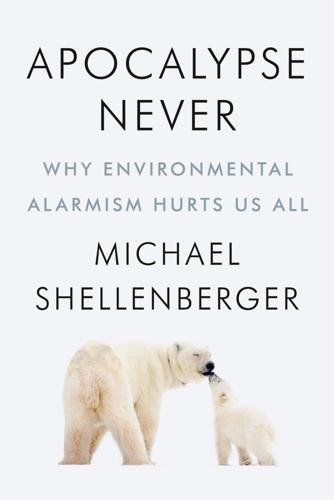
Apocalypse Never: Why Environmental Alarmism Hurts Us All
by
Michael Shellenberger
Published 28 Jun 2020
Sax, Steven D. Gaines, and James Brown, “Species Invasions Exceed Extinctions on Islands Worldwide: A Comparative Study of Plants and Birds,” The American Naturalist 160, no. 6 (2002): 766–783, https://doi.org/10.1086/343877. 9. Chris D. Thomas, “Rapid Acceleration of Plant Speciation During the Anthropocene,” Trends in Ecology & Evolution 30, no. 8 (2015): 448–455, https://doi.org/10.1016/j.tree.2015.05.009. 10. Kolbert, The Sixth Extinction, 186. 11. Ibid., 186–187. 12. Mark Sagoff, “Welcome to the Narcisscene,” Breakthrough Journal no. 9 (Summer 2018), https://thebreakthrough.org/journal/no-9-summer-2018/welcome-to-the-narcisscene. 13.
…
AquaBounty, “Ask your supermarket to stock GMO salmon,” AquaBounty, March 20, 2019, accessed October 8, 2019, https://aquabounty.com/ask-your-supermarket-to-stock-gmo-salmon. 95. Jesse Ausubel (environmental scientist) in conversation with the author, November 6, 2019. 96. Richard Rhodes, “Yale Environment 360: Why nuclear power must be a part of the energy solution,” Anthropocene Institute, July 19, 2018, https://www.anthropoceneinstitute.com/2018/07/yale-environment-360-why-nuclear-power-must-be-part-of-the-energy-solution. 97. R.B. Allen, “Backward into the future: The shift to coal and implications for the next energy transition,” Energy Policy 50 (2012): 17–23, https://doi.org/10.1016/j.enpol.2012.03.020. 98.
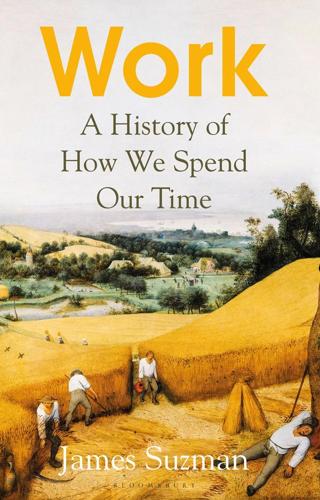
Work: A History of How We Spend Our Time
by
James Suzman
Published 2 Sep 2020
There is now far more evidence than there was in 1972 or even 2002, and computers are capable of spitting out simulations many orders of magnitude larger and more complex. The evidence is now so overwhelming that debate within the scientific community on the scale of human impact on our planet has shifted to asking whether the current geological era merits being redubbed the Anthropocene – the human era. In John Maynard Keynes’s economic utopia, there was no anthropogenic climate change. Nor was there ocean acidification or large-scale biodiversity loss. But if there were, it would almost certainly be under better control than it is now. His utopia was, after all, a place where the scientific method was respected, scientists were admired, and laypeople paid serious heed to their warnings.
…
Index aardvarks here, here abiogenesis here Abrahamic religions here, here Académie des Sciences here acetogens here Acheulean hand-axes here, here, here Adam and Eve here, here adenosine triphosphate (ATP) here advertising here Africa, human expansion out of here agriculture and the calendar here, here catastrophes here and climate change here, here human transition to here inequality as consequence of here and investment here Natufians and here, here, here, here productivity gains here, here, here, here, here proportion employed in here spread of here and urbanisation here Akkadian Empire here Alexander the Great here American Federation of Labor here American Society of Mechanical Engineers here animal domestication here, here, here, here, here animal tracks here animal welfare here animals’ souls here anomie here anthrax here Anthropocene era here anti-trust laws here ants here, here, here Aquinas, Thomas here, here, here archery here Archimedes here, here, here Aristotle here, here, here, here Arkwright, Richard here armies, standing here Aronson, Ben here artificial intelligence here, here, here, here, here, here, here, here, here ass’s jawbone here asset ownership here AT&T here Athens, ancient here, here aurochs here Australian Aboriginals here, here, here, here, here Australopithecus here, here, here, here, here, here, here, here automation here, here, here, here, here, here, here, here, here Aztecs here baboons here Baka here BaMbuti here, here, here, here, here bank holidays here, here Bantu civilisations here barter here, here, here, here, here Batek here Bates, Dorothea here beer here, here, here, here, here bees here, here, here, here Belgian Congo here, here Bergen Work Addiction Scale here Biaka here billiards here biodiversity loss here, here, here birds of paradise here bison, European here Black-Connery 30-Hours Bill here Blombos Cave here, here Blurton-Jones, Nicholas here boa constrictors here boats, burning of here Bolling Allerød Interstadial here, here, here Boltzmann, Ludwig here boredom here, here Boucher de Crèvecœur de Perthes, Jacques here, here bovine pleuropneumonia here bowerbirds here, here brains here, here, here increase in size here and social networks here Breuil, Abbé here Broca’s area here Bryant and May matchgirls’ strike here bubonic plague here ‘bullshit jobs’ here butchery, ancient here Byron, Lord here Calico Acts here Cambrian explosion here cannibalism here caps, flat here carbon dioxide, atmospheric here, here cartels here Çatalhöyük here, here Cato institute here cattle domestication of here as investment here cave paintings, see rock and cave paintings census data here CEOs here, here, here, here, here, here cephalopods here cereals, high-yielding here Chauvet Cave painting here cheetahs here, here, here child labour here childbirth, deaths in here Childe, Vere Gordon here, here, here, here chimpanzees here, here, here, here, here, here, here China here, here, here, here, here, here Han dynasty here medical licensing examination here Qin dynasty here services sector here, here Shang dynasty here, here Song dynasty here value of public wealth here Chomsky, Noam here circumcision, universal here Ciudad Neza here clam shells here Clark, Colin here, here climate change here, here, here see also greenhouse gas emissions Clinton, Bill here clothing, and status here Club of Rome here, here coal here Coast Salish here, here cognitive threshold, humans cross here, here ‘collective consciousness’ here ‘collective unconscious’ here colonialism here commensalism here Communism, collapse of here Conrad, Joseph here consultancy firms here Cook, Captain James here cooking here, here, here coral reefs here Coriolis, Gaspard-Gustave here coronaviruses here corporate social responsibility here Cotrugli, Benedetto here cotton here, here, here credit and debt arrangements here Crick, Francis here crop rotation here cyanobacteria here, here Cyrus the Great here Darius the Great here Darwin, Charles here, here, here, here, here, here, here, here debt, personal and household here deer here, here demand-sharing here Denisovans here Descartes, René here, here, here, here DeVore, Irven here Dharavi here diamonds here, here diamphidia larvae here Dinka here division of labour here, here, here DNA here, here, here mitochondrial here dogs here, here, here, here, here, here domestication of here Lubbock’s pet poodle here Pavlov’s here wild here, here double-entry bookkeeping here dreaming here Dunbar, Robin here, here Durkheim, Emile here, here, here, here Dutch plough here dwellings drystone-walled here mammoth-bone here earth’s atmosphere, composition of here earth’s axis, shifts in alignment of here East India Company here, here ‘economic problem’ here, here, here, here, here, here, here, here, here, here economics ‘boom and bust’ here definitions of here, here formalists v. substantivists here fundamental conflict within here ‘trickle-down’ here ecosystem services here Edward III, King here efficiency movement here egalitarianism here, here, here, here, here, here egrets here Egypt, Roman here, here Egyptian Empire here einkorn here Einstein, Albert here elands here, here elderly, care of here, here, here, here elephants here, here, here, here, here, here energy-capture here, here, here Enlightenment here, here, here, here Enron here Enterprise Hydraulic Works here, here entropy here, here, here, here, here, here EU Working Time Directive here Euclid here eukaryotes here eusociality here, here evolution here, here and selfish traits here see also natural selection Facebook here, here Factory Acts here, here factory system here, here famines and food shortages here, here fertilisers here, here fighting, and social hierarchies here financial crisis (2007–8) here, here financial deregulation here fire, human mastery of here, here, here, here, here see also cooking fisheries here flightless birds here foot-and-mouth disease here Ford, Henry here, here, here, here, here fossil fuels here, here, here, here, here, here, here Fox, William here foxes here, here bat-eared here Franklin, Benjamin here, here, here, here, here, here, here free markets here, here, here free time (leisure time) here, here, here, here, here, here, here, here, here freeloaders here, here, here Freud, Sigmund here Frey, Carl, and Michael Osborne here funerary inscriptions here Galbraith, John Kenneth here, here Galileo here Gallup State of the Global Workplace report here Garrod, Dorothy here, here gazelle bones here, here genomic studies here, here, here, here, here, here, here, here, here and domesticated dogs here geometry here gift giving here Gilgamesh here glacial periods here, here gladiators here Gladwell, Malcolm here globalisation here Göbekli Tepe here, here Gompers, Samuel here Google here Google AlphaGO here Gordon, Wendy here Gorilla Sign Language here gorillas here, here, here, here see also Koko Govett’s Leap here Graeber, David here, here granaries here graves here graveyards, Natufian here Great Decoupling here, here Great Depression here, here, here ‘great oxidation event’ here, here Great Zimbabwe here greenhouse gas emissions here, here see also climate change Greenlandic ice cores here grewia here Grimes, William here Gurirab, Thadeus here, here gut bacteria here Hadzabe here, here, here, here, here, here, here Harlan, Jack here harpoon-heads here Hasegawa, Toshikazu here Health and Safety Executive here health insurance here Heidegger, Martin here Hephaistos here Hero of Alexandria here Hesiod here hippopotamuses here Hitler, Adolf here hominins, evidence for use of fire here Homo antecessor here Homo erectus here, here, here, here, here, here, here, here, here, here Homo habilis here, here, here, here, here, here, here, here Homo heidelbergensis here, here, here, here, here Homo naledi here horses here, here wild here household wealth, median US here housing, improved here human resources here, here, here Humphrey, Caroline here Hunduism here hunter-gatherers, ‘complex’ here hyenas here, here, here, here, here immigration here Industrial Revolution here, here, here, here, here, here, here, here, here, here, here, here, here, here, here, here, here, here, here, here, here inequality here, here, here, here, here in ancient Rome here influenza here ‘informavores’ here injuries, work-related here Institute of Bankers here, here Institute of Management here intelligence here, here evolution of here interest here internal combustion engine here, here Inuit here, here, here, here Iroquois Confederacy here Ituri Forest here jackals here Japan here, here, here jealousy, see self-interest jewellery here, here, here, here, here Ju/’hoansi here, here, here, here, here, here, here, here, here, here, here, here, here, here, here and animals’ souls here contrasted with ‘complex hunter-gatherers’ here contrasted with farming communities here, here, here creation mythologies here and ‘creatures of the city’ here and demand-sharing here, here egalitarianism here, here, here, here, here, here energy-capture rates here life expectancy here and mockery here village sizes here Jung, Carl Gustav here kacho-byo (‘manager’s disease’) here kangaroos here Karacadag here karo jisatsu here, here karoshi here, here Kathu Pan hand-axes here, here, here Kavango here Kellogg, John Harvey here Kellogg, Will here Kennedy, John F. here Keynes, John Maynard here, here, here, here, here, here, here, here, here, here, here, here, here Khoisan here, here, here Kibera here Kish here Koko here, here, here Kubaba, Queen here Kwakwaka’wakw here, here labour/debt relationships here labour theory of value here Lake Eyasi here Lake Hula here Lake Turkana here, here language arbitrary nature of here evolution of here Gossip and Grooming hypothesis here, here Grammaticalisation theory here processing here Single Step theory here langues de chat (cat’s tongues) here latifundia here le Blanc, Abbé Jean here leatherwork here Lee, Richard Borshay here, here, here, here, here leisure activities here leisure time, see free time Leopold II, King of the Belgians here, here Lévi-Strauss, Claude here, here, here, here Liebenberg, Louis here life expectancy here, here life on earth, evolution of here lignin here Limits to Growth, The here lions here, here, here, here, here, here, here, here, here, here literacy, see writing living standards, rising here Loki here, here London neighbourhoods here longhouses here Louis XIV, King of France here Louis XVI, King of France here Löwenmensch (Lion Man) sculpture here Lubbock, Sir John here, here Luddites here, here, here Luoyang (Chengzhou) here, here luxury goods here McKinsey and Co. here, here, here ‘malady of infinite aspirations’ here Malthus, Rev.
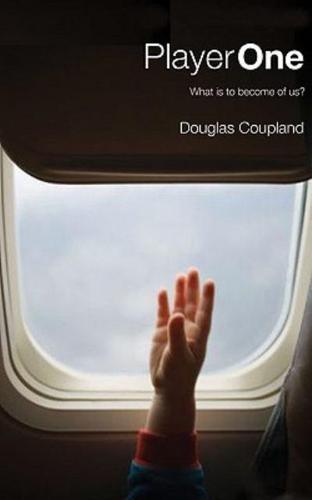
Player One
by
Douglas Coupland
Published 30 Jun 2011
That was just the most recent of numerous meteor strikes that caused mass extinctions and drastically altered life on earth over hundreds of millions of years. Androsolophilia The state of affairs in which a lonely man is romantic-ally desirable while a lonely woman is not. Anorthodoxical Isms The isms that pose the greatest threat to inflexible religious orthodoxies: Humanism Cultural Relativism Moral Relativism Secularism The Anthropocene A term recognizing that human intrusion on the planet’s surface and into the atmosphere has been so extreme as to qualify our time on earth as a specific geological epoch. Along with vast increases in anthropogenic emissions of greenhouse gases, which have drastically raised the atmospheric concentration of carbon dioxide, our human footprint now covers more than 83 percent of the earth’s surface, according to the Wildlife Conservation Society.
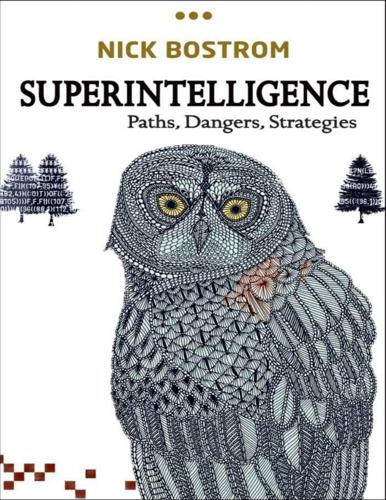
Superintelligence: Paths, Dangers, Strategies
by
Nick Bostrom
Published 3 Jun 2014
The principal reason for humanity’s dominant position on Earth is that our brains have a slightly expanded set of faculties compared with other animals.1 Our greater intelligence lets us transmit culture more efficiently, with the result that knowledge and technology accumulates from one generation to the next. By now sufficient content has accumulated to make possible space flight, H-bombs, genetic engineering, computers, factory farms, insecticides, the international peace movement, and all the accouterments of modern civilization. Geologists have started referring to the present era as the Anthropocene in recognition of the distinctive biotic, sedimentary, and geochemical signatures of human activities.2 On one estimate, we appropriate 24% of the planetary ecosystem’s net primary production.3 And yet we are far from having reached the physical limits of technology. These observations make it plausible that any type of entity that developed a much greater than human level of intelligence would be potentially extremely powerful.
…
Zahavi, Amotz, and Zahavi, Avishag. 1997. The Handicap Principle: A Missing Piece of Darwin’s Puzzle. Translated by N. Zahavi-Ely and M. P. Ely. New York: Oxford University Press. Zalasiewicz, J., Williams, M., Smith, A., Barry, T. L., Coe, A. L., Bown, P. R., Brenchley, P., et al. 2008. “Are We Now Living in the Anthropocene?” GSA Today 18 (2): 4–8. Zeira, Joseph. 2011. “Innovations, Patent Races and Endogenous Growth.” Journal of Economic Growth 16 (2): 135–56. Zuleta, Hernando. 2008. “An Empirical Note on Factor Shares.” Journal of International Trade and Economic Development 17 (3): 379–90. INDEX A Afghan Taliban 215 Agricultural Revolution 2, 80, 261 AI-complete problem 14, 47, 71, 93, 145, 186 AI-OUM, see optimality notions AI-RL, see optimality notions AI-VL, see optimality notions algorithmic soup 172 algorithmic trading 16–17 anthropics 27–28, 126, 134–135, 174, 222–225 definition 225 Arendt, Hannah 105 Armstrong, Stuart 280, 291, 294, 302 artificial agent 10, 88, 105–109, 172–176, 185–206; see also Bayesian agent artificial intelligence arms race 64, 88, 247 future of 19, 292 greater-than-human, see superintelligence history of 5–18 overprediction of 4 pioneers 4–5, 18 Asimov, Isaac 139 augmentation 142–143, 201–203 autism 57 automata theory 5 automatic circuit breaker 17 automation 17, 98, 117, 160–176 B backgammon 12 backpropagation algorithm 8 bargaining costs 182 Bayesian agent 9–11, 123, 130; see also artificial agent and optimality notions Bayesian networks 9 Berliner, Hans 12 biological cognition 22, 36–48, 50–51, 232 biological enhancement 36–48, 50–51, 142–143, 232; see also cognitive enhancement boxing 129–131, 143, 156–157 informational 130 physical 129–130 brain implant, see cyborg brain plasticity 48 brain–computer interfaces 44–48, 51, 83, 142–143; see also cyborg Brown, Louise 43 C C. elegans34–35, 266, 267 capability control 129–144, 156–157 capital 39, 48, 68, 84–88, 99, 113–114, 159–184, 251, 287, 288, 289 causal validity semantics 197 CEV, see coherent extrapolated volition Chalmers, David 24, 265, 283, 295, 302 character recognition 15 checkers 12 chess 11–22, 52, 93, 134, 263, 264 child machine 23, 29; see also seed AI CHINOOK 12 Christiano, Paul 198, 207 civilization baseline 63 cloning 42 cognitive enhancement 42–51, 67, 94, 111–112, 193, 204, 232–238, 244, 259 coherent extrapolated volition (CEV) 198, 211–227, 296, 298, 303 definition 211 collaboration (benefits of) 249 collective intelligence 48–51, 52–57, 67, 72, 142, 163, 203, 259, 271, 273, 279 collective superintelligence 39, 48–49, 52–59, 83, 93, 99, 285 definition 54 combinatorial explosion 6, 9, 10, 47, 155 Common Good Principle 254–259 common sense 14 computer vision 9 computing power 7–9, 24, 25–35, 47, 53–60, 68–77, 101, 134, 155, 198, 240–244, 251, 286, 288; see also computronium and hardware overhang computronium 101, 123–124, 140, 193, 219; see also computing power connectionism 8 consciousness 22, 106, 126, 139, 173–176, 216, 226, 271, 282, 288, 292, 303; see also mind crime control methods 127–144, 145–158, 202, 236–238, 286; see also capability control and motivation selection Copernicus, Nicolaus 14 cosmic endowment 101–104, 115, 134, 209, 214–217, 227, 250, 260, 283, 296 crosswords (solving) 12 cryptographic reward tokens 134, 276 cryptography 80 cyborg 44–48, 67, 270 D DARPA, see Defense Advanced Research Projects Agency DART (tool) 15 Dartmouth Summer Project 5 data mining 15–16, 232, 301 decision support systems 15, 98; see also tool-AI decision theory 10–11, 88, 185–186, 221–227, 280, 298; see also optimality notions decisive strategic advantage 78–89, 95, 104–112, 115–126, 129–138, 148–149, 156–159, 177, 190, 209–214, 225, 252 Deep Blue 12 Deep Fritz 22 Defense Advanced Research Projects Agency (DARPA) 15 design effort, see optimization power Dewey, Daniel 291 Differential Technological Development (Principle of) 230–237 Diffie–Hellman key exchange protocol 80 diminishing returns 37–38, 66, 88, 114, 273, 303 direct reach 58 direct specification 139–143 DNA synthesis 39, 98 Do What I Mean (DWIM) 220–221 domesticity 140–143, 146–156, 187, 191, 207, 222 Drexler, Eric 239, 270, 276, 278, 300 drones 15, 98 Dutch book 111 Dyson, Freeman 101, 278 E economic growth 3, 160–166, 179, 261, 274, 299 Einstein, Albert 56, 70, 85 ELIZA (program) 6 embryo selection 36–44, 67, 268 emulation modulation 207 Enigma code 87 environment of evolutionary adaptedness 164, 171 epistemology 222–224 equation solvers 15 eugenics 36–44, 268, 279 Eurisko 12 evolution 8–9, 23–27, 44, 154, 173–176, 187, 198, 207, 265, 266, 267, 273 evolutionary selection 187, 207, 290 evolvable hardware 154 exhaustive search 6 existential risk 4, 21, 55, 100–104, 115–126, 175, 183, 230–236, 239–254, 256–259, 286, 301–302 state risks 233–234 step risks 233 expert system 7 explicit representation 207 exponential growth, see growth external reference semantics 197 F face recognition 15 failure modes 117–120 Faraday cage 130 Fields Medal 255–256, 272 Fifth-Generation Computer Systems Project 7 fitness function 25; see also evolution Flash Crash (2010) 16–17 formal language 7, 145 FreeCell (game) 13 G game theory 87, 159 game-playing AI 12–14 General Problem Solver 6 genetic algorithms 7–13, 24–27, 237–240; see also evolution genetic selection 37–50, 61, 232–238; see also evolution genie AI 148–158, 285 definition 148 genotyping 37 germline interventions 37–44, 67, 273; see also embryo selection Ginsberg, Matt 12 Go (game) 13 goal-content 109–110, 146, 207, 222–227 Good Old-Fashioned Artificial Intelligence (GOFAI) 7–15, 23 Good, I.
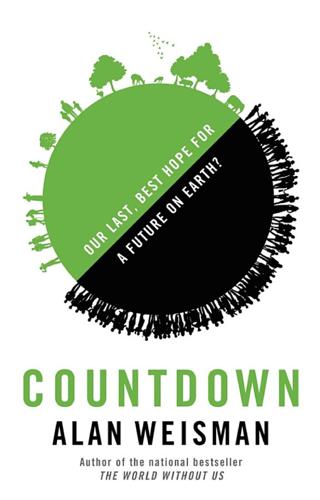
Countdown: Our Last, Best Hope for a Future on Earth?
by
Alan Weisman
Published 23 Sep 2013
“What the Money Spent in Iraq and Afghanistan Could Have Bought at Home in America.” Business Insider, August 16, 2011. http://articles.businessinsider.com/2011-08-16/news. Kareiva, Peter, and Michelle Marvier. “Conservation for the People.” Scientific American, October 2007: 2–9. _______, Robert Lalasz, and Michelle Marvier. “Conservation in the Anthropocene.” Breakthrough Journal, no. 2 (Fall 2011). Kennedy, Kelly. “Drugmakers Have Paid $8 Billion in Fraud Fines.” USA Today, March 6, 2012. Kiel, Katherine A., Victor A. Matheson, and Kevin Golembiewski. “Luck or Skill? An Examination of the Ehrlich-Simon Bet.” Research Series, Paper no. 09-08. College of the Holy Cross, Department of Economics Faculty, July 2009.
…
Khabar South Asia, June 22, 2012. http://khabarsouthasia.com/en_GB/articles/apwi/articles/features/2012/06/22/feature-02. Singh, S., and J. E. Darroch. Adding It Up: Costs and Benefits of Contraceptive Services—Estimates for 2012. New York: Guttmacher Institute and United Nations Population Fund (UNFPA), 2012. Steffen, Will, Paul J. Crutzen, and John R. McNeill. “The Anthropocene: Are Humans Now Overwhelming the Great Forces of Nature?” Ambio, vol. 36, no. 8 (December 2007): 614–21. Suckling, Kieran. “Conservation for the Real World.” Breakthrough Journal, April 2012. Sulat, Nate. “Feasibility Study: Reintroduction of the Bay Checkerspot Butterfly to Stanford University Lands.” http://woods.stanford.edu/environmental-venture-projects/feasibility-study-reintroduction-bay-checkerspot-butterfly-stanford.
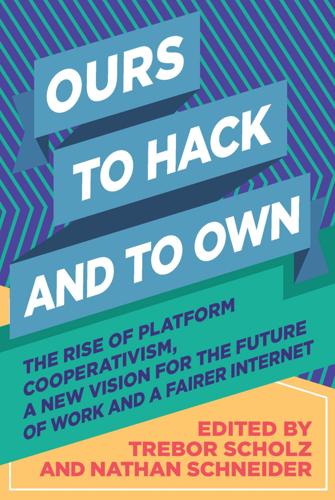
Ours to Hack and to Own: The Rise of Platform Cooperativism, a New Vision for the Future of Work and a Fairer Internet
by
Trebor Scholz
and
Nathan Schneider
Published 14 Aug 2017
Cameron continues to research what designers can learn from philosophies of making, material culture studies, and sociologies of technology. Cameron’s research and teaching focus on the design of systems that lower societal materials intensity, primarily by decoupling use and ownership: in other words, systems of shared use. McKenzie Wark is the author of Molecular Red: Theory for the Anthropocene (Verso, 2015), among other things, and teaches at The New School in New York City. Caroline Woolard’s interdisciplinary work facilitates social imagination at the intersection of art, design, and political economy. After co-founding and co-directing resource sharing networks OurGoods.org and TradeSchool.coop, Woolard is now focused on her work with BFAMFAPhD.com to raise awareness about the impact of rent, debt, and precarity on culture, and on the NYC Real Estate Investment Cooperative to create and support truly affordable commercial space in New York City.

Protecting Pollinators
by
Jodi Helmer
Published 15 Nov 2019
Endangered Species Coalition, November 20, 2009. http://www.endangered.org/climate-change-will-leave-ediths-checkerspot-butterflies-out-of-sync. Meyer, Christoph F. J., Matthew J. Struebig, and Michael R. Willig. “Responses of Tropical Bats to Habitat Fragmentation, Logging, and Deforestation.” Pp. 63–103 in Bats in the Anthropocene: Conservation of Bats in a Changing World, ed. Christian C. Voigt and Tigga Kingston. Berlin: Springer, December 8, 2015. https://link.springer.com/chapter/10.1007/978-3-319-25220-9_4. Midwest Center for Investigative Reporting. “EPA Eased Dicamba Regulations Following Monsanto Research, Records Show.”
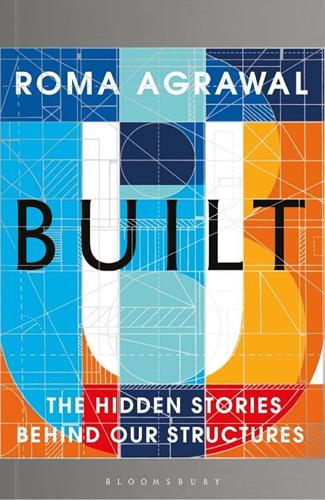
Built: The Hidden Stories Behind Our Structures
by
Roma Agrawal
Published 8 Feb 2018
Built reveals how human ingenuity keeps us safe from the raw forces of nature, all in a style that is down-to-earth as well as funny and personal.’ Uta Frith, psychologist and author of Autism: Explaining the Enigma ‘Hurrah! A joyful book that dissects our architecture to reveal the decisions behind the anatomy we rely on every day.’ Gaia Vince, journalist, broadcaster and author of Adventures in the Anthropocene Bloomsbury Publishing An imprint of Bloomsbury Publishing PLC 30 Bedford Square 1385 Broadway London New York WC1B 3DP NY 10018 UK US www.bloomsbury.com BLOOMSBURY and the Diana logo are trademarks of Bloomsbury Publishing Plc First published in 2018 Text and illustration copyright © Roma The Engineer Ltd, 2018 For picture credits, see here Roma The Engineer Ltd has asserted its right under the Copyright, Designs and Patents Act, 1988, to be identified as the Author of this work.
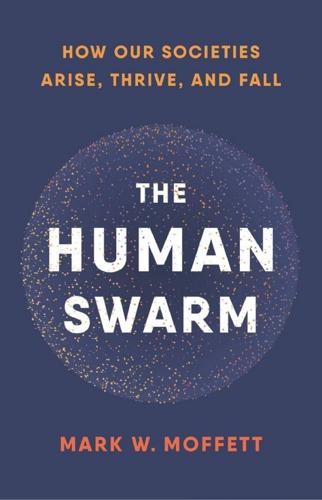
The Human Swarm: How Our Societies Arise, Thrive, and Fall
by
Mark W. Moffett
Published 31 Mar 2019
Who is responsible for fission in a free-ranging troop of baboons? Ethology 102:128–133. Roosevelt AC. 1999. Archaeology of South American hunters and gatherers. In RB Lee, R Daly, eds. The Cambridge Encyclopedia of Hunters and Gatherers. New York: Cambridge University Press. pp. 86–91. . 2013. The Amazon and the Anthropocene: 13,000 years of human influence in a tropical rainforest. Anthropocene 4:69–87. Roscoe P. 2006. Fish, game, and the foundations of complexity in forager society. Cross Cult Res 40:29–46. . 2007. Intelligence, coalitional killing, and the antecedents of war. Am Anthropol 109:485–495. Roth WE, R Etheridge. 1897. Ethnological Studies Among the North-West-Central Queensland Aborigines.
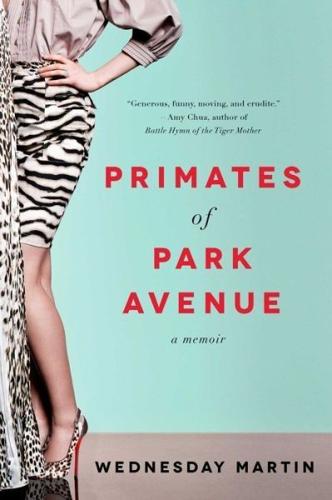
Primates of Park Avenue: A Memoir
by
Wednesday Martin Ph.d.
Published 1 Jun 2015
This is just one example of how, in our world, kids are work, and our lives are arranged around their needs, rather than the reverse. You can feel it every time you make your child’s bed or tidy up the kitchen after making her a special, kid-friendly meal. Or pay someone else to. Meredith Small has famously observed that children of the Anthropocene, our current geological era, are “priceless but useless.” We value them in our own way, practicing what we might think of as “descendent worship,” the same ways other cultures practice ancestor worship. But we also complain that kids are terribly costly and tiring, which they are—because they do very little to earn their keep.
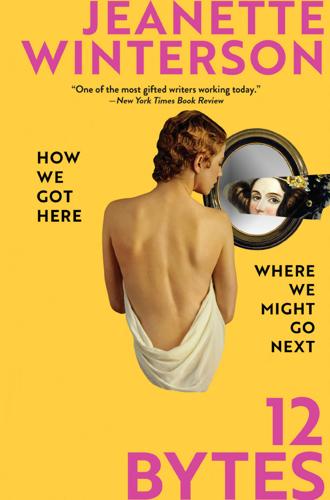
12 Bytes: How We Got Here. Where We Might Go Next
by
Jeanette Winterson
Published 15 Mar 2021
The social, psychological, and environmental costs of progress have been and are immense. Accounting is more than numbers; accounting is accountability. This time, the real costs of progress have to be faced and factored in. Earth scientist James Lovelock (creator of the Gaia theory) says that humankind is at the end of what he calls the Anthropocene (from anthropos, Greek for ‘human being’) and about to begin a wholly new departure, into the Novacene. (In astronomy, a nova is a star that suddenly releases a huge burst of energy.) Like Ray Kurzweil (creator of the Singularity theory), James Lovelock believes that this departure will be irreversible.

The New Nomads: How the Migration Revolution Is Making the World a Better Place
by
Felix Marquardt
Published 7 Jul 2021
Lord Adonis, former Secretary of State for Transport and former Minister of State for Education ‘An intelligent and insightful analysis of one of the great issues of our age, laced with some powerful real-life examples and culminating in a number of thought-provoking recommendations for change.’ Paul Polman, former CEO, Unilever ‘The New Nomads is like Confessions of an Economic Hitman for the Anthropocene.’ Tyson Yunkaporta, author of Sand Talk ‘Felix Marquardt set out to write a celebration of hyper-mobility, but something far more interesting happened along the way. He has given us a depiction of the complex patterns of migration in the early twenty-first century that is also a critique of the Davos elite.’
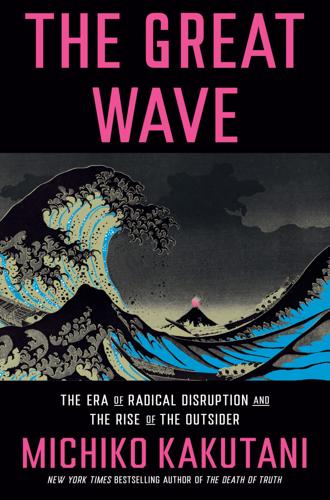
The Great Wave: The Era of Radical Disruption and the Rise of the Outsider
by
Michiko Kakutani
Published 20 Feb 2024
Created around 1831 by the brilliant Japanese artist Katsushika Hokusai, the image has been embraced by multiple generations and cultures, from middle-class art lovers in Edo (Tokyo) delighted to acquire a wood-block print for the price of a bowl of noodles, to the nineteenth-century artists in France who helped formulate European modernism, to graffiti artists and skateboarders who have turned the wave into an instantly recognizable emoji and meme. Hokusai’s print has been held up as a symbol of the Far East, the relationship between East and West, and the hazards of climate change and rising sea levels in the Anthropocene. The Great Wave has been copied and reimagined, adapted, sampled, recycled, parodied, appropriated, and commodified. It now appears on surfboards, shower curtains, sneakers, umbrellas, watches, socks, scarves, towels, cuff links, coasters, and COVID masks. And, somehow, none of this merchandising has diluted the power of the original image, which continues to possess the resonance it did nearly two centuries ago.
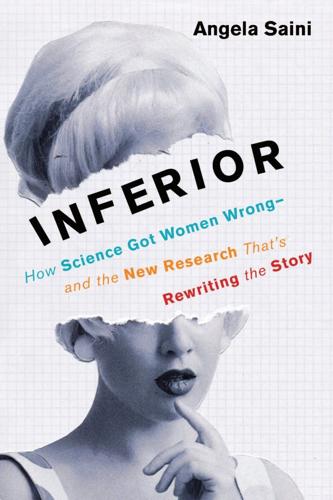
Inferior: How Science Got Women Wrong-And the New Research That's Rewriting the Story
by
Angela Saini
Published 29 May 2017
Research to date suggests that humans survived, thrived, and spread across the globe through the efforts of everyone equally sharing the same work and responsibilities. For most of our history, we lived hand in hand. And our biology reflects this. In some ways, of course, our biology makes no difference to how we live today. We’ve entered the epoch that scientists call the “anthropocene,” in which humans are recognized to have had a profound impact on global ecosystems. We control our environments in ways that no other animal can. What’s more, we control ourselves. We have birth control that can stop women getting pregnant and paternity tests that allow fathers to identify their children.
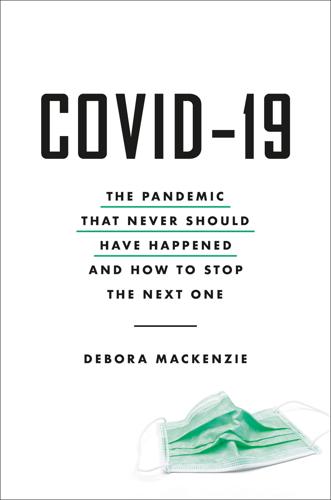
Covid-19: The Pandemic That Never Should Have Happened and How to Stop the Next One
by
Debora MacKenzie
Published 13 Jul 2020
So are its disputed wet markets,” Bloomberg, April 8, 2020, www.bloomberg.com/news/articles/2020-04-08/wuhan-is-returning-to-life-so-are-its-disputed-wet-markets. 17. Bats are traditionally… rarer: Tammy Mildenstein, Iroro Tanshi, and Paul A. Racey, “Exploitation of bats for bushmeat and medicine,” in Bats in the Anthropocene: Conservation of Bats in a Changing World, eds. Christian C. Voigt and Tigga Kingston (Cham, Switzerland: Springer Open, 2016), doi.org/10.1007/978-3-319-25220-9_12. 18. One, charging… into use: “Ye Ming Sha, bat feces, bat dung, bat guano,” Best Plant, www.bestplant.shop/products/ye-ming-sha-bat-feces-bat-dung-bat-guano. 19.
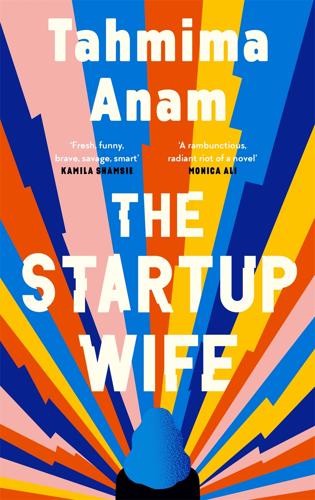
The Startup Wife
by
Tahmima Anam
Published 2 Jun 2021
A large man named Gil comes to our apartment every morning to yell energetic things at Cyrus. “It’s far healthier to confront death than to avoid it,” Cyrus says. “Ancient civilizations were obsessed with death.” “Our civilization is obsessed with never having to think about death,” I say. “The Anthropocene is corrupt.” “I’m concerned about bringing Marco on board.” “We’re developing a great working relationship,” Cyrus says, scooping up a dollop of paint from his palette. “Marco respects what we’re doing, and he agrees that we could bring the two companies together for everyone’s benefit.” I’m not sure what he means, exactly.
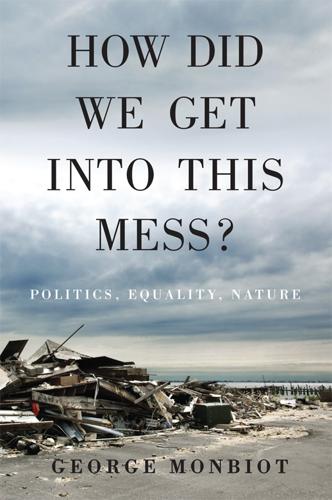
How Did We Get Into This Mess?: Politics, Equality, Nature
by
George Monbiot
Published 14 Apr 2016
Part 1 There Is Such a Thing as Society 1 Falling Apart What do we call the age we live in? It’s no longer the information age. The collapse of popular education movements left a void filled by marketing and conspiracy theories. Like the Stone Age, Iron Age and space age, the digital age says plenty about our artefacts, but little about society. The Anthropocene, in which humans exert a major impact on the biosphere, fails to distinguish this century from the previous twenty. What clear social change marks out our time from those that precede it? To me it’s obvious. This is the Age of Loneliness. Thomas Hobbes could not have been more wrong when he claimed that in the state of nature, before authority arose to keep us in check, we were engaged in a war ‘of every man against every man’.

The Narcissist Next Door
by
Jeffrey Kluger
Published 25 Aug 2014
The dinosaurs once thundered, but the dinosaurs were an entire clade—just like the clade of mammals—and now they’re all gone. Homo sapiens is a single species within that clade, and one that has been around for only 200,000 years. How powerful has that single line of beast become? Consider that some scientists increasingly refer to the modern era as the Anthropocene, joining the Pleistocene and the Holocene in the planet’s great geological epochs. Never mind the glaciers or tectonic plates—we are the most powerful force shaping the earth today. The numbers are as clear as they are scary. It took us 109 years to go from one to two billion people (from 1818 to 1927).
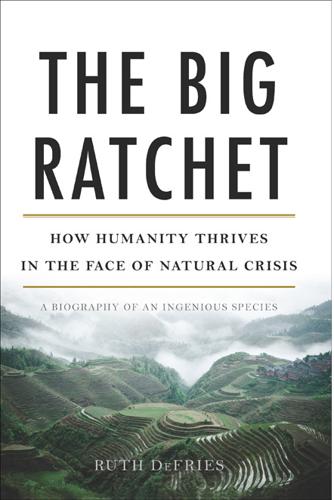
The Big Ratchet: How Humanity Thrives in the Face of Natural Crisis
by
Ruth Defries
Published 8 Sep 2014
Generalized antifungal activity and 454-screening of Pseudonocardia and Amycolatopsis bacteria in nests of fungus-growing ants. Proceedings of the National Academy of Sciences 106:17805–17810. Simon, J. L. 1981. The Ultimate Resource. Princeton University Press, Princeton, NJ. Steffen, W., J. Grineveld, P. Crutzen, and J. McNeill. 2011. The Anthropocene: Conceptual and historical perspectives. Philosophical Transactions of the Royal Society 369:842–867. Turner, B. L. I., and M. Fischer-Kowalski. 2010. Ester Boserup: An intersdisciplinary visionary relevant for sustainability. Proceedings of the National Academy of Sciences 107:21963–21965. United Nations. 2012.
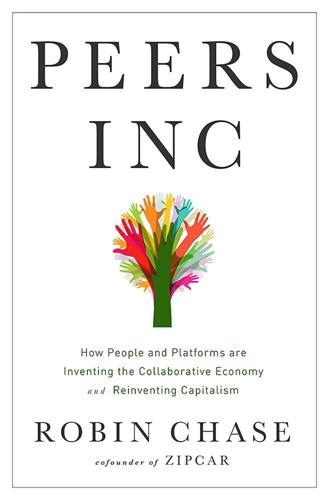
Peers Inc: How People and Platforms Are Inventing the Collaborative Economy and Reinventing Capitalism
by
Robin Chase
Published 14 May 2015
World Bank, “Turn Down the Heat: Why a 4°C Warmer World Must Be Avoided,” report for the World Bank by the Potsdam Institute for Climate Impact Research and Climate Analytics, November 1, 2012. 19. Ibid. 20. Intergovernmental Panel on Climate Change, “Climate Change 2014: Synthesis Report.” 21. Jim Robbins, “Building an Ark for the Anthropocene,” New York Times, September 27, 2014. 22. “London Congestion Charge,” Wikipedia, http://en.wikipedia.org/wiki/London_congestion_charge. 23. “Living Sustainably,” Cornell University, https://living.sas.cornell.edu/live/community/sustainability.cfm. 24. U.S. PIRG Education Fund, “Millennials in Motion: Changing Travel Habits of Young Americans and the Implications for Public Policy,” October 14, 2014, www.uspirg.org/reports/usp/millennials-motion. 25.
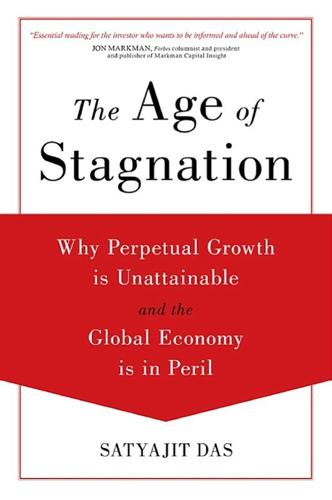
The Age of Stagnation: Why Perpetual Growth Is Unattainable and the Global Economy Is in Peril
by
Satyajit Das
Published 9 Feb 2016
Unlike energy, where renewable sources are theoretically available, metals may prove harder to replace, requiring increasing reliance on expensive recycling. The impact of human activity on the environment is the final constraint on future economic activity. The planet has entered a new geological period, the Anthropocene, wherein human activities are significantly altering the earth's ecosystems. Its central feature is anthropogenic global warming and the resulting climate change, caused by increasing atmospheric levels of carbon dioxide from fossil fuel combustion, ozone depletion, deforestation, and animal agriculture.
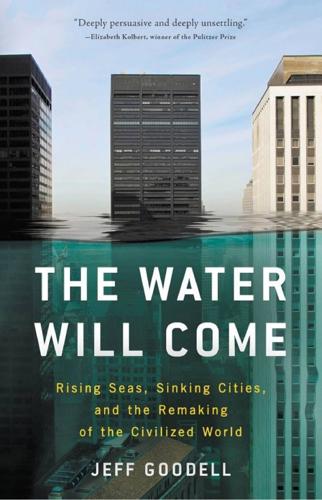
The Water Will Come: Rising Seas, Sinking Cities, and the Remaking of the Civilized World
by
Jeff Goodell
Published 23 Oct 2017
: How America’s Weirdest State Influences the Rest of the Country. New York: St. Martin’s Press, 2016. Platt, Harold L. Shock Cities: The Environmental Transformation and Reform of Manchester and Chicago. Chicago: University of Chicago Press, 2005. Purdy, Jedediah. After Nature: A Politics for the Anthropocene. Cambridge, MA: Harvard University Press, 2015. Redford, Polly. Billion-Dollar Sandbar: A Biography of Miami Beach. New York: Dutton, 1970. Rudiak-Gould, Peter. Surviving Paradise: One Year on a Disappearing Island. New York: Sterling, 2009. Ryan, William, and Walter Pitman. Noah’s Flood: The New Scientific Discoveries About the Event That Changed History.
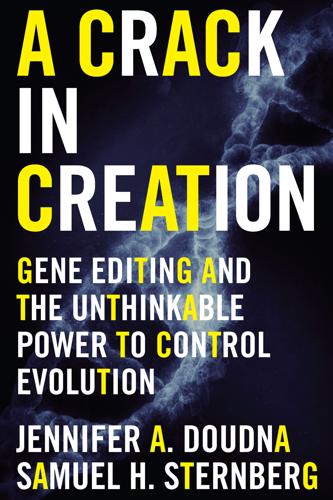
A Crack in Creation: Gene Editing and the Unthinkable Power to Control Evolution
by
Jennifer A. Doudna
and
Samuel H. Sternberg
Published 15 Mar 2017
Industrialization has caused climate change that threatens ecosystems around the globe, and this and other human activities have precipitated a surge in species extinction that is ravaging the diverse populations of creatures with which we share this earth. These transformations have prompted geologists to propose that we rename this era the Anthropocene—the human epoch. The biological world is also undergoing profound, human-induced changes. For billions of years, life progressed according to Darwin’s theory of evolution: organisms developed through a series of random genetic variations, some of which conferred advantages in survival, competition, and reproduction.
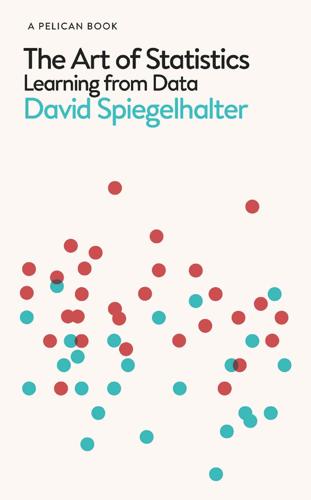
The Art of Statistics: Learning From Data
by
David Spiegelhalter
Published 14 Oct 2019
Anthony King How to See the World Nicholas Mirzoeff The Meaning of Science Tim Lewens Social Class in the 21st Century Mike Savage The European Union: A Citizen’s Guide Chris Bickerton The Caliphate Hugh Kennedy Islam: The Essentials Tariq Ramadan Basic Income: And How We Can Make It Happen Guy Standing Think Like an Anthropologist Matthew Engelke Hermeneutics: Facts and Interpretation in the Age of Information John D. Caputo Being Ecological Timothy Morton Object-Oriented Ontology: A New Theory of Everything Graham Harman Marx and Marxism Gregory Claeys The Human Planet: How We Created the Anthropocene Simon L. Lewis and Mark A. Maslin Think Again: How to Reason and Argue Walter Sinnott-Armstrong Parenting the First Twelve Years: What the Evidence Tells Us Victoria L. Cooper, Heather Montgomery, Kieron Sheehy Social Mobility: And Its Enemies Lee Elliot Major and Stephen Machin National Populism: The Revolt Against Liberal Democracy Roger Eatwell and Matthew Goodwin A Political History of the World Jonathan Holslag A Short History of Brexit From Brentry to Backstop Kevin O’Rourke Our Universe: An Astronomer’s Guide Jo Dunkley The Art of Statistics: Learning from Data David Spiegelhalter Chinese Thought: From Confucius to Cook Ding Roel Sterckx This is Shakespeare Emma Smith THE BEGINNING Let the conversation begin … Follow the Penguin twitter.com/penguinukbooks Keep up-to-date with all our stories youtube.com/penguinbooks Pin ‘Penguin Books’ to your pinterest.com/penguinukbooks Like ‘Penguin Books’ on facebook.com/penguinbooks Listen to Penguin at soundcloud.com/penguin-books Find out more about the author and discover more stories like this at penguin.co.uk PENGUIN BOOKS UK | USA | Canada | Ireland | Australia India | New Zealand | South Africa Penguin Books is part of the Penguin Random House group of companies whose addresses can be found at global.penguinrandomhouse.com.
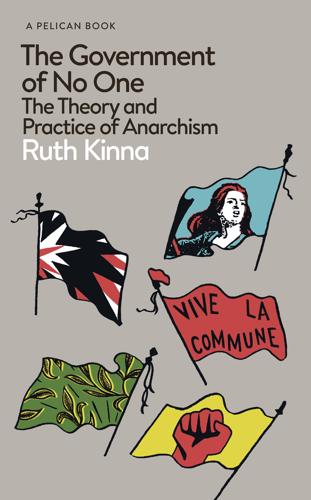
The Government of No One: The Theory and Practice of Anarchism
by
Ruth Kinna
Published 31 Jul 2019
Anthony King How to See the World Nicholas Mirzoeff The Meaning of Science Tim Lewens Social Class in the 21st Century Mike Savage The European Union: A Citizen’s Guide Chris Bickerton The Caliphate Hugh Kennedy Islam: The Essentials Tariq Ramadan Basic Income: And How We Can Make It Happen Guy Standing Think Like an Anthropologist Matthew Engelke Hermeneutics: Facts and Interpretation in the Age of Information John D. Caputo Being Ecological Timothy Morton Object-Oriented Ontology: A New Theory of Everything Graham Harman Marx and Marxism Gregory Claeys The Human Planet: How We Created the Anthropocene Simon L. Lewis and Mark A. Maslin Think Again: How to Reason and Argue Walter Sinnott-Armstrong Parenting the First Twelve Years: What the Evidence Tells Us Victoria L. Cooper, Heather Montgomery, Kieron Sheehy Social Mobility: And Its Enemies Lee Elliot Major and Stephen Machin National Populism: The Revolt Against Liberal Democracy Roger Eatwell and Matthew Goodwin A Political History of the World Jonathan Holslag A Short History of Brexit From Brentry to Backstop Kevin O’Rourke Our Universe: An Astronomer’s Guide Jo Dunkley The Art of Statistics: Learning from Data David Spiegelhalter Chinese Thought: From Confucius to Cook Ding Roel Sterckx This is Shakespeare Emma Smith What We Really Do All Day Jonathan Gershuny and Oriel Sullivan The Government of No One Ruth Kinna Plunder of the Commons Guy Standing THIS IS JUST THE BEGINNING Find us online and join the conversation Follow us on Twitter twitter.com/penguinukbooks Like us on Facebook facebook.com/penguinbooks Share the love on Instagram instagram.com/penguinukbooks Watch our authors on YouTube youtube.com/penguinbooks Pin Penguin books to your Pinterest pinterest.com/penguinukbooks Listen to audiobook clips at soundcloud.com/penguin-books Find out more about the author and discover your next read at penguin.co.uk PENGUIN BOOKS UK | USA | Canada | Ireland | Australia India | New Zealand | South Africa Penguin Books is part of the Penguin Random House group of companies whose addresses can be found at global.penguinrandomhouse.com.
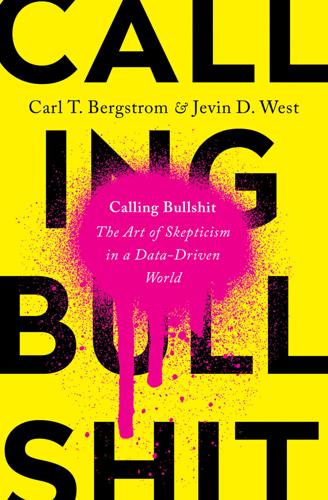
Calling Bullshit: The Art of Scepticism in a Data-Driven World
by
Jevin D. West
and
Carl T. Bergstrom
Published 3 Aug 2020
“Birth Rates for Females by Age Group: United States.” Centers for Disease Control and Prevention. 2020. https://data.cdc.gov/NCHS/NCHS-Birth-Rates-for-Females-by-Age-Group-United-S/yt7u-eiyg. Pelletier, F., and D. W. Coltman. “Will Human Influences on Evolutionary Dynamics in the Wild Pervade the Anthropocene?” BMC Biology 16 (2018): 7. https://bmcbiol.biomedcentral.com/articles/10.1186/s12915-017-0476-1. Potter, Andrew. “How a Snowstorm Exposed Quebec’s Real Problem: Social Malaise.” Maclean’s. March 20, 2017. Random Axis (blog). “A Subway Map of Maps That Use Subway Maps as a Metaphor.”
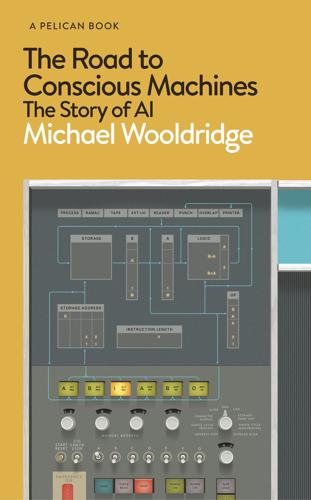
The Road to Conscious Machines
by
Michael Wooldridge
Published 2 Nov 2018
Anthony King How to See the World Nicholas Mirzoeff The Meaning of Science Tim Lewens Social Class in the 21st Century Mike Savage The European Union: A Citizen’s Guide Chris Bickerton The Caliphate Hugh Kennedy Islam: The Essentials Tariq Ramadan Basic Income: And How We Can Make It Happen Guy Standing Think Like an Anthropologist Matthew Engelke Hermeneutics: Facts and Interpretation in the Age of Information John D. Caputo Being Ecological Timothy Morton Object-Oriented Ontology: A New Theory of Everything Graham Harman Marx and Marxism Gregory Claeys The Human Planet: How We Created the Anthropocene Simon L. Lewis and Mark A. Maslin Think Again: How to Reason and Argue Walter Sinnott-Armstrong Parenting the First Twelve Years: What the Evidence Tells Us Victoria L. Cooper, Heather Montgomery, Kieron Sheehy Social Mobility: And Its Enemies Lee Elliot Major and Stephen Machin National Populism: The Revolt Against Liberal Democracy Roger Eatwell and Matthew Goodwin A Political History of the World Jonathan Holslag A Short History of Brexit From Brentry to Backstop Kevin O’Rourke Our Universe: An Astronomer’s Guide Jo Dunkley The Art of Statistics: Learning from Data David Spiegelhalter Chinese Thought: From Confucius to Cook Ding Roel Sterckx This is Shakespeare Emma Smith What We Really Do All Day Jonathan Gershuny and Oriel Sullivan The Government of No One Ruth Kinna Plunder of the Commons Guy Standing THIS IS JUST THE BEGINNING Find us online and join the conversation Follow us on Twitter twitter.com/penguinukbooks Like us on Facebook facebook.com/penguinbooks Share the love on Instagram instagram.com/penguinukbooks Watch our authors on YouTube youtube.com/penguinbooks Pin Penguin books to your Pinterest pinterest.com/penguinukbooks Listen to audiobook clips at soundcloud.com/penguin-books Find out more about the author and discover your next read at penguin.co.uk PENGUIN BOOKS UK | USA | Canada | Ireland | Australia India | New Zealand | South Africa Penguin Books is part of the Penguin Random House group of companies whose addresses can be found at global.penguinrandomhouse.com.

The Stolen Year
by
Anya Kamenetz
Published 23 Aug 2022
Or maybe because the people—let’s be honest, the women—who might have rallied around this bill were really goddamned tired. And Americans in general were feeling angry and beaten down, worried over threats to democracy and voting rights, viral variants and vaccine hesitancy, and the mundane yet intolerable conditions of everyday life in the Anthropocene. Still, on some other timeline, this could have been the signature accomplishment of an entire presidency. The American Families Plan offered more than practical assistance or economic investment. It drafted a new social contract unlike anything this country has ever seen. It was a long-delayed fulfillment of the hopes raised by the model day nursery at the Chicago World’s Fair in 1893 and dashed when shipyard childcare centers were shuttered after World War II.

Essential: How the Pandemic Transformed the Long Fight for Worker Justice
by
Jamie K. McCallum
Published 15 Nov 2022
A repulsive cabal of villainous billionaires were fleecing the American workforce: their time, their money, their unions, their autonomy, their privacy were all under siege. And then, of course, there’s climate change and the looming prospect of our species’ extinction. If we could have designed the pandemic to wreak the most havoc, launching it in 2019 makes perfect sense. In context, we can see it as a discrete part of a converging general breakdown of the Anthropocene—the inability to sustain human life. The prism through which you view this crisis depends on your perspective. Philosophers might pay most attention to the abundant moral hazards. Perhaps political scientists see first and foremost the indefensible abuses of power and necropolitical neglect for human life of the Trump administration.
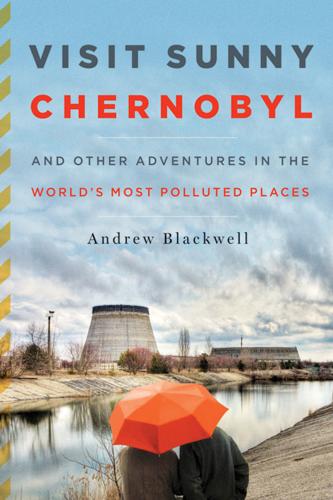
Visit Sunny Chernobyl: And Other Adventures in the World's Most Polluted Places
by
Andrew Blackwell
Published 22 May 2012
It is over the brink—over several brinks—and has been for some time. It was more than twenty years ago that Bill McKibben pointed out the simple fact that there is no longer any nook or cranny of the globe untouched by human effects. It’s time to stop pretending otherwise, to stop pretending that we haven’t already entered the Anthropocene, a new geological age marked by massive species loss (already achieved) and climate change (in progress). But the dream of nature is so dear to us that to wake from it seems like a betrayal. The sense that we have not yet gone over that brink—not quite—is what motivates us to our ablutions, our donations, our recycling, our hope.
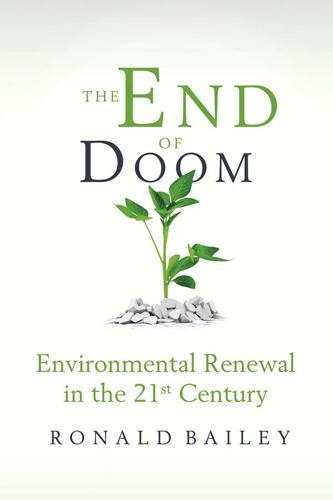
The End of Doom: Environmental Renewal in the Twenty-First Century
by
Ronald Bailey
Published 20 Jul 2015
somewhere between 75 and 80 percent: Gaylord Nelson, quoting Dr. S. Dillon Ripley, Look, April 1970. 709 known species as having gone extinct: IUCN Red List of Threatened Species, accessed May 30, 2014. www.iucnredlist.org/. 322 species have become extinct: Rodolfo Dirzo et al., “Defaunation in the Anthropocene.” Science 345.6195 (July 25, 2014): 401–406. www.sciencemag.org/content/345/6195/401. half the number of vertebrates: Richard McLellan, ed., Living Planet Report 2014. World Wildlife Fund, 2014. wwf.panda.org/about_our_earth/all_publications/living_planet_report/. 108 species as having gone extinct: Kieran Suckling, Rhiwena Slack, and Brian Nowicki, “Extinction and the Endangered Species Act.”
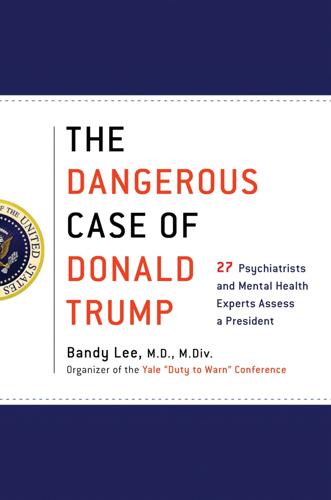
The Dangerous Case of Donald Trump: 27 Psychiatrists and Mental Health Experts Assess a President
by
Bandy X. Lee
Published 2 Oct 2017
Then, it came to two minutes to midnight. And it has been moving up and back since. In 2014, the analysts took into account for the first time something that had been ignored: the fact that the nuclear age—the beginning of the nuclear age—coincided with the beginning of a new geological epoch, the so-called Anthropocene. There has been some debate about the epoch in which human activity is drastically affecting the general environment; there has been debate about its inception. But the World Geological Organization is settling on the conclusion that it is about the same time as the beginning of the nuclear age.

The Glass Half-Empty: Debunking the Myth of Progress in the Twenty-First Century
by
Rodrigo Aguilera
Published 10 Mar 2020
The global transformation that would be needed to limit warming to 1.5°C requires enabling conditions that reflect the links, synergies and trade-offs between mitigation, adaptation and sustainable development. These enabling conditions are assessed across many dimensions of feasibility — geophysical, environmental-ecological, technological, economic, socio-cultural and institutional — that may be considered through the unifying lens of the Anthropocene, acknowledging profound, differential but increasingly geologically significant human influences on the Earth system as a whole. This framing also emphasises the global interconnectivity of past, present and future human–environment relations, highlighting the need and opportunities for integrated responses to achieve the goals of the Paris Agreement.2 There is not the remotest suggestion that liberal capitalism alone could combat climate change, which would be music to the ears of those who insist on market solutions to market problems.

The Deepest Map
by
Laura Trethewey
Published 15 May 2023
Johansson, vol. 7, WMU Studies in Maritime Affairs (Cham, Switzerland: Springer International Publishing, 2018), 77, https://doi.org/10.1007/978-3-319-78425-0_5. 7.Heïdi Sevestre, “Life in One of the Fastest-Warming Places on Earth,” Arctic Council, May 10, 2010, https://arctic-council.org/news/life-in-one-of-the-fastest-warming-places-on-earth/. 8.Lara Johannsdottir, David Cook, and Gisele M. Arruda, “Systemic Risk of Cruise Ship Incidents from an Arctic and Insurance Perspective,” Elementa: Science of the Anthropocene 9, no. 1 (2021): article 00009, https://doi.org/10.1525/elementa.2020.00009. 9.Jackie Dawson et al., “Temporal and Spatial Patterns of Ship Traffic in the Canadian Arctic from 1990 to 2015,” Arctic 71, no. 1 (2018): 15–26. 10.Wright and Baldauf, “Arctic Environment Preservation Through Grounding Avoidance.” 11.Ibid., 90. 12.Grant Sims, “A Clot in the Heart of the Earth,” Outside, June 1989, https://www.outsideonline.com/adventure-travel/clot-heart-earth/. 13.Karen Nasmith and Michael Sullivan, “Climate Change Adaptation Action Plan for Hamlet of Arviat” (Ottawa, Ontario: Canadian Institute of Planners, July 2010), 10, https://www.climatechangenunavut.ca/sites/default/files/arviat_community_adap_plan_eng.pdf. 14.Joshua Rapp Learn, “Arctic Search-and-Rescue Missions Double as Climate Warms,” National Geographic, September 19, 2016, https://www.nationalgeographic.com/adventure/article/arctic-search-and-rescue-missions-double. 15.
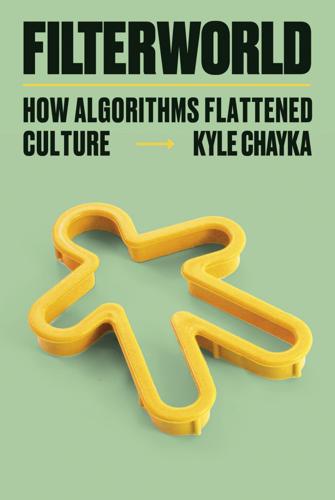
Filterworld: How Algorithms Flattened Culture
by
Kyle Chayka
Published 15 Jan 2024
Where the nineties had rambling narrative songs like Biggie’s “Juicy” and Tim McGraw’s “Something Like That,” or the Streets’s 2004 concept album A Grand Don’t Come for Free, storytelling in general in pop music also seems to have lately fallen off in favor of overall vibes and moods. Lyrics avoid requiring too much attention from the listener. Streaming-era songs are often brief, too—Grimes, for the deluxe version of her 2020 album Miss Anthropocene, released a few “Algorithm Mix” iterations of songs, cutting down their run time, making them denser and more immediately compelling, better for algorithmic feeds. (It’s not dissimilar to the “radio mixes” of the past.) On average, hit songs have gotten shorter in the past two decades, decreasing a total of thirty seconds from 4:30 in 1995 to 3:42 in 2019.
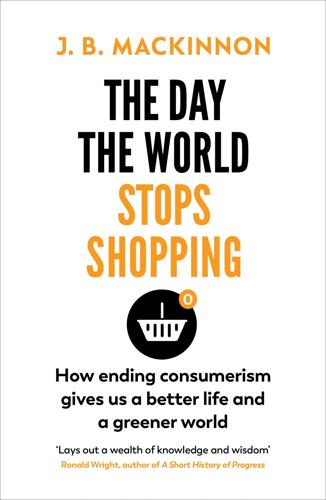
The Day the World Stops Shopping
by
J. B. MacKinnon
Published 14 May 2021
The Simple Life. New York: Oxford University Press, 1985. Suzman, James. Affluence without Abundance. New York: Bloomsbury, 2017. Zalasiewicz, Jan, Mark Williams, Colin N. Waters, Anthony D. Barnosky, John Palmesino, et al. “Scale and Diversity of the Physical Technosphere: A Geological Perspective.” Anthropocene Review 4, no. 1 (2017): 9–22. CHAPTER 1: What we give up and what we hang on to Additional sources include Levi Strauss & Co., US BEA and the National Bureau of Economic Research. Dittmar, Helga, Rod Bond, Megan Hurst, and Tim Kasser. “The Relationship between Materialism and Personal Well-being: A Meta-analysis.”

Whole Earth Discipline: An Ecopragmatist Manifesto
by
Stewart Brand
Published 15 Mar 2009
—Marshall McLuhan Whether it’s called managing the commons, natural-infrastructure maintenance, tending the wild, niche construction, ecosystem engineering, mega-gardening, or intentional Gaia, humanity is now stuck with a planet stewardship role. Paul Crutzen, the atmospheric chemist who won the Nobel Prize in 1995 for his work on ozone depletion, coined a word that has resonated. “It seems appropriate,” he wrote, “to assign the term Anthropocene to the present, in many ways human-dominated, geological epoch.” We are shaping Earth so profoundly that it is evident in the geological record. The atmospheric and ecological changes we have made are expected to reverberate for tens of thousands of years. If humanity’s role has expanded to the point that the entire Earth is our niche, the trend of the changes we have made lately indicates we are doing a poor job of niche maintenance.
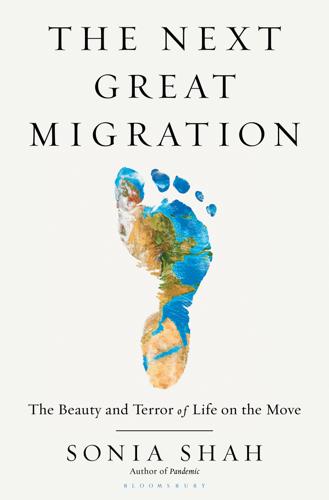
The Next Great Migration: The Beauty and Terror of Life on the Move
by
Sonia Shah
Species that have not lost their habitats Ken Wells, “Wildlife Crossings Get a Whole New Look,” Wall Street Journal, June 20, 2017; “World’s Largest Wildlife Corridor to Be Built in California,” Ecowatch, September 27, 2015; Gabe Bullard, “Animals Like Green Space in Cities—And That’s a Problem,” National Geographic, April 20, 2016; Eliza Barclay and Sarah Frostenson, “The Ecological Disaster That Is Trump’s Border Wall: A Visual Guide,” Vox, February 5, 2019. the more constrained animal movements became Marlee A. Tucker et al., “Moving in the Anthropocene: Global Reductions in Terrestrial Mammalian Movements,” Science 359, no. 6374 (2018): 466–69. Animals, winds, currents, and waves could freely travel Elisabeth Vallet, “Border Walls and the Illusion of Deterrence,” in Jones, Open Borders; see also Samuel Granados et al., “Raising Barriers: A New Age of Walls: Episode 1,” Washington Post, October 12, 2016; David Frye, Walls: A History of Civilization in Blood and Brick (New York: Scribner, 2018), 238.
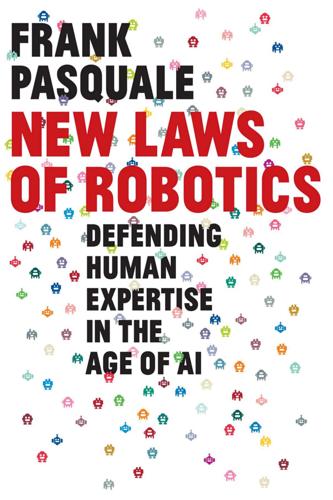
New Laws of Robotics: Defending Human Expertise in the Age of AI
by
Frank Pasquale
Published 14 May 2020
The acceleration of processing and inputs can make the digital world seem as unruly and uncontrollable as natural systems like weather. As the engineer and philosopher Mireille Hildebrandt has observed, we will increasingly find the digital environment as pervasively influential and consequential as the natural world.91 The Technocene complements the Anthropocene, reminding us how consequential unintended consequences can become. Even if they never become formal legislation, the new laws of robotics can help us imagine futures where AI respects and helps preserve human dignity and identity. AESTHETIC RESPONSE AND MORAL JUDGMENT One of the most profound artistic exemplars of such an imagined future is the oeuvre of artist Ernesto Caivano.
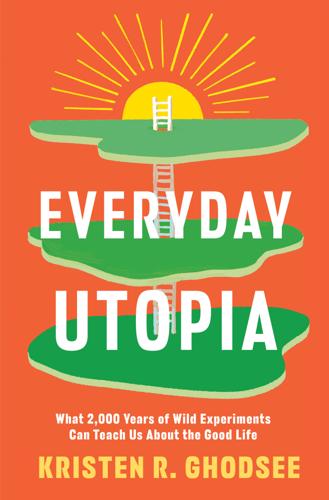
Everyday Utopia: What 2,000 Years of Wild Experiments Can Teach Us About the Good Life
by
Kristen R. Ghodsee
Published 16 May 2023
v=n1xp50ZM_wk. 40 Kathi Weeks, The Problem with Work: Feminism, Marxism, Antiwork Politics, and Postwork Imaginaries (Durham, NC: Duke University Press, 2011). 41 Holly Jean Buck, After Geoengineering: Climate Tragedy, Repair, and Restoration (London and New York: Verso Books, 2019). 42 Howard Zinn, “The Optimism of Uncertainty,” The Nation, 2004, https://www.thenation.com/article/archive/optimism-uncertainty/. 43 Donna Haraway suggests that we should all be “making kin.” See Donna Haraway, “Anthropocene, Capitalocene, Plantationocene, Chthulucene: Making Kin,” Environmental Humanities 6 (2015): 159–65. 44 Gerda Lerner, The Creation of Patriarchy. New York: Oxford University Press, 1986: 228. 45 Rutger Bregman, Humankind: A Hopeful History. New York: Little Brown, 2019. 46 Thomas Hardy, January 1, 1902, quoted in Florence Emily Hardy, The Life of Thomas Hardy (Stansted: Wordsworth Editions, 2007), 319. 47 “United Federation of Planets,” Memory Alpha, https://www.memory-alpha.fandom.com/wiki/United_Federation_of_Planets. 48 “Starfleet,” Memory Alpha, https://www.memory-alpha.fandom.com/wiki/Starfleet. 49 “All Is Possible (Episode),” Memory Alpha, https://www.memory-alpha.fandom.com/wiki/All_Is_Possible_(episode). 50 Thomas Richards, The Meaning of Star Trek (New York: Doubleday, 1997).
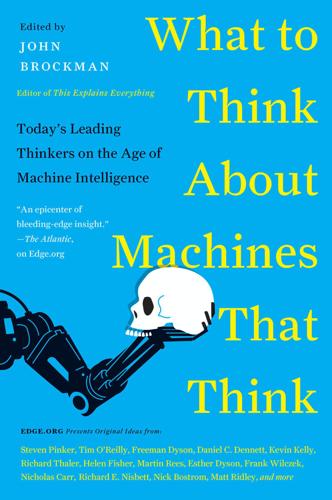
What to Think About Machines That Think: Today's Leading Thinkers on the Age of Machine Intelligence
by
John Brockman
Published 5 Oct 2015
Its power has increased as humans have networked more and more efficiently in larger and larger communities and learned how to tap larger flows of biospheric energy. In the last two centuries, the networks have become global, and we’ve learned to tap vast stores of fossilized sunlight buried for millions of years. This is why our impact on the biosphere in the Anthropocene is so colossal. Collective learning has also delivered thinking prosthetics, from stories to writing to printing to science. Each has cranked up the power of this fantastic thinking machine made from networked human brains. But in the last 100 years, the combination of fossil fuels and nonhuman computers has cranked it up faster than ever before.

Apollo's Arrow: The Profound and Enduring Impact of Coronavirus on the Way We Live
by
Nicholas A. Christakis
Published 27 Oct 2020
Westcott and S. Wang, “China’s Wet Markets Are Not What Some People Think They Are,” CNN, April 15, 2020. 2 F. Wu et al., “A New Coronavirus Associated with Human Respiratory Disease in China,” Nature 2020; 579: 265–269; T. Mildenstein et al., “Exploitation of Bats for Bushmeat and Medicine,” Bats in the Anthropocene: Conservation of Bats in a Changing World, Cham, Switzerland: Springer, 2016, pp. 325–375. 3 A.C.P. Wong et al., “Global Epidemiology of Bat Coronaviruses,” Viruses 2019; 11: 174. 4 D. Ignatius, “How Did Covid-19 Begin? Its Initial Origin Story Is Shaky,” Washington Post, April 2, 2020. 5 J.T.
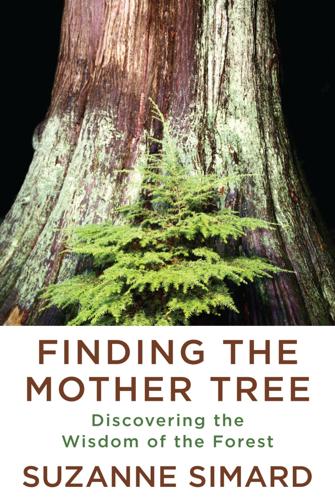
Finding the Mother Tree: Discovering the Wisdom of the Forest
by
Suzanne Simard
Published 3 May 2021
In Cold and Mountain Region Hydrological Systems Under Climate Change: Towards Improved Projections, Proceedings of H02, IAHS-IAPSO-IASPEI Assembly, Gothenburg, Sweden, July 2013. IAHS Publication 360: 77–82. Mathews, D. L., and Turner, N. J. 2017. Ocean cultures: Northwest coast ecosystems and indigenous management systems. Chapter 9 in Conservation for the Anthropocene Ocean, ed. Phillip S. Levin and Melissa R. Poe. London: Academic Press, 169–206. Newcombe, C. P., and Macdonald, D. D. 1991. Effects of suspended sediments on aquatic ecosystems. North American Journal of Fisheries Management 11: 1, 72–82. Palmer, A. D. 2005. Maps of Experience: The Anchoring of Land to Story in Secwepemc Discourse.
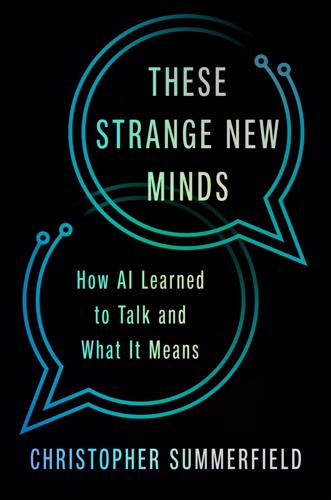
These Strange New Minds: How AI Learned to Talk and What It Means
by
Christopher Summerfield
Published 11 Mar 2025
We trumpet our triumphs and indignations to tens or hundreds or millions of people in the tumult of social media. These global edifices for mass information exchange – education, media and the arts – are the bedrock of our civilization. Over the centuries, they have transformed humans from hairy grub-foragers into the uncontested architects of the Anthropocene age. The collective weight of human scholarship – billions of words penned in books and journals every year – has also allowed us to notch up some pretty impressive scientific and technological achievements. Physicists now have a fairly decent sense of how the universe began, even though it happened some 13.8 billion years before any of us was born, and anthropologists have traced the pathways of human evolution and global dispersion over the past two million years, from the Rift Valley (the cradle of humanity) to Silicon Valley (the cradle of digital technology).
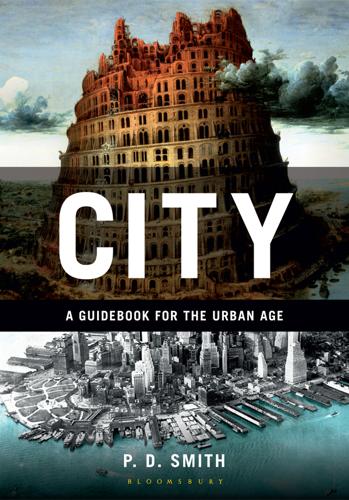
City: A Guidebook for the Urban Age
by
P. D. Smith
Published 19 Jun 2012
Prague’s system was still in use in 2002 and is currently being restored.7 Placing a mail canister into a pneumatic tube, 1930. Eco-Cities We are living through a unique period in the history of our planet. No other species has ever disrupted the delicate balance of the earth’s climate before. As the Nobel prize-winning chemist Paul Crutzen has said, we have entered a geological epoch of our own making – the Anthropocene. But it remains to be seen whether we can control the forces we have unleashed. The current level of carbon dioxide in the atmosphere – about 390 parts per million – is higher than at any time in the last half a million years. And it is set to rise still further. As the developing world rapidly industrialises, the International Energy Authority predicts that, from 2000 to 2030, humankind will pump more carbon dioxide into the air than was produced between 1750 and 2000.

The Peripheral
by
William Gibson
Published 23 Oct 2014
Why, when she’d run her perimeter around the corner, did she take it up to fifty-seven and double back? Why was she all Easy Ice now, if this wasn’t a shooter? 14. MOURNING JET Ash, flesh white as paper, was pulling down the lower lid of Netherton’s left eye. Her hand quite black with tattoos, a riot of wings and horns, every bird and beast of the Anthropocene extinction, overlapping line drawings of a simple yet touching precision. He knew who she was, but not where he was. She was leaning over him, peering close. He lay on something flat, very hard, cold. Her neck was wrapped in black lace, a black that ate light, fixed with a cameo death’s head.

Slowdown: The End of the Great Acceleration―and Why It’s Good for the Planet, the Economy, and Our Lives
by
Danny Dorling
and
Kirsten McClure
Published 18 May 2020
London then remained relatively pro-Tory, as shown in figure 59, until at least 2015, when Jeremy Corbyn became leader of the Labour Party. It was clear then that Londoners had become radical again. The radicalization began a little earlier when, against the wishes of the then Labour leadership, Ken Livingstone became the first radical London mayor in the year 2000. THE TRANSFORMATION OF A SPECIES The Anthropocene is not the end of our world. It’s just the beginning. Collectively, we have the potential to create a much better planet than the one we are creating now. So let’s start talking about the better future we want, and less about the future we don’t. It’s about articulating values, and about sharing, fairly, the only planet we have with one another and the rest of life on earth.

A Paradise Built in Hell: Extraordinary Communities That Arise in Disaster
by
Rebecca Solnit
Published 31 Aug 2010
Civil society is what saves people and creates the immediate conditions for survival—rescue teams, field kitchens, concerned neighbors—and it is a preventative too, as the Chicago heat wave, Cuban hurricanes, and many other disasters have demonstrated. Already, climate change is shaping up to be as unfair as disasters have ever been, impacting the vulnerable of the tropics, highlands, far north, and coasts while those most responsible for creating the turbulent anthropocene (or human-made) climate era stall on measures to limit and mitigate its effects. It too is a democracy question, about who benefits, who loses, who should decide, and who does. Surviving and maybe even turning back the tide of this pervasive ongoing disaster will require more ability to improvise together, stronger societies, more confidence in each other.

Reality Is Broken: Why Games Make Us Better and How They Can Change the World
by
Jane McGonigal
Published 20 Jan 2011
But these fundamental changes don’t happen overnight—surviving the twenty-first century together will require us to adopt longer horizons of thinking, acting, and collaborating. We need to play games that stretch our collective commitment months, years, or even decades ahead. We need to start playing with the future. CHAPTER FOURTEEN Saving the Real World Together We are living in a geological era that scientists dub the “anthropocene epoch,” from the Greek anthropo-, for “human,” and -cene, for “new” or “recent.” It’s the age of human impact on the earth. Our impact is measurable in myriad ways: increasing levels of carbon dioxide in the atmosphere, deforestation and continental erosion, a rising sea level. We may not have set out to remake the planet in any of these ways—but we have nonetheless.

Whole Earth: The Many Lives of Stewart Brand
by
John Markoff
Published 22 Mar 2022
Yet while it hasn’t received the attention and controversy of proposals to bring back extinct species such as the woolly mammoth or the passenger pigeon, Xerces may become the first species to be brought back from extinction. The idea of bringing Xerces back to life goes back at least to 2000, but in 2021 it came significantly closer to reality. A restored Xerces would become a powerful symbol of what French philosopher Bruno Latour describes as “Gaia 2.0.”[1] We have entered the Anthropocene era, and having completely reshaped our planet, we are faced with the reality that consciousness of humanity’s impact on the world entails responsibility as well. It is that realization that is the heart of Stewart Brand’s contribution and his continuing relevance. Revive & Restore was launched as a Long Now Foundation project in early 2012 after Brand and Phelan sponsored a small symposium at the Harvard Medical School, hosted by geneticist George Church, called Bringing Back the Passenger Pigeon.

The Goodness Paradox: The Strange Relationship Between Virtue and Violence in Human Evolution
by
Richard Wrangham
Published 29 Jan 2019
* * * — The aim of this book has been to understand better how evolution has shaped humanity into the best and worst of species. The aim was not to say how the story ends. We can at least limit the pessimism, however. As I emphasized earlier, an account of how aggression was adaptive in the Pleistocene does not lead to the conclusion that wars will continue in the Anthropocene. The evidence is overwhelming that there has been a long-term decline in the proportion of deaths that are due to violence. Among other reasons, societies have grown larger over time; and in larger societies, a lower proportion of the population is directly involved in war. The decline is understandable.

Who Owns England?: How We Lost Our Green and Pleasant Land, and How to Take It Back
by
Guy Shrubsole
Published 1 May 2019
The beach crunched and clinked under our boots as we picked our way over a morass of glass and pottery. But this wasn’t just rubbish deposited by the waters of the Thames. It was clearly eroding out of the sandy banks next to the shoreline, lapped by high tides, revealing a geological stratum of landfill clearly dateable to the Anthropocene. Some of the landfill waste was clearly pretty old, and showed little sign of breaking down. At one point, we strayed across a still-preserved scrap of newspaper bearing a photograph of inter-war Prime Minister Neville Chamberlain. Elsewhere, it was obvious the waste was more recent. And this was just the visible stuff: every now and then, we came across old lead car batteries, leaching acid into the Thames.

A World on the Wing: The Global Odyssey of Migratory Birds
by
Scott Weidensaul
Published 29 Mar 2021
Edelman, Nathaniel B., Tanja Fritz, Simon Nimpf, Paul Pichler, Mattias Lauwers, Robert W. Hickman, Artemis Papadaki-Anastasopoulou, et al. “No Evidence for Intracellular Magnetite in Putative Vertebrate Magnetoreceptors Identified by Magnetic Screening.” Proceedings of the National Academy of Sciences 112, no. 1 (2015): 262–267. Einfeldt, Anthony L., and Jason A. Addison. “Anthropocene Invasion of an Ecosystem Engineer: Resolving the History of Corophium volutator (Amphipoda: Corophiidae) in the North Atlantic.” Biological Journal of the Linnean Society 115, no. 2 (2015): 288–304. Elbein, Asher. “Some Birds Are Better Off with Weak Immune Systems.” New York Times, June 26, 2018, D6.

Ways of Being: Beyond Human Intelligence
by
James Bridle
Published 6 Apr 2022
Considering the whole span of earthly time, the opposite effect, in which life actually modifies its surroundings, has been relatively slight. Only within the moment of time represented by the present century has one species – man – acquired significant power to alter the nature of his world.’18 Today, we call this moment the Anthropocene, and its naming should cause us to take our power seriously, while also recognizing that it is temporal, and like all temporal things it is subject to change. A world in which the environment itself was dominant, an ecological world, is of much longer duration and, despite the thoughtless exercise of our power, has never gone away.

Life's Greatest Secret: The Race to Crack the Genetic Code
by
Matthew Cobb
Published 6 Jul 2015
A., Singer, S. J. and Wells, I. C., ‘Sickle cell anemia, a molecular disease’, Science, vol. 110, 1949, pp. 543–8. Pearson, H., ‘Genetics: What is a gene?’, Nature, vol. 441, 2006, pp. 398–401. Penney, D., Wadsworth, C., Fox, G. et al., ‘Absence of ancient DNA in sub-fossil insect inclusions preserved in ‘anthropocene’ Colombian copal’, PLoS ONE, vol. 8, 2013, article e73150. Pennisi, E., ‘ENCODE project writes eulogy for junk DNA’, Science, vol. 337, 2012, pp. 1159–61. Perutz, M., ‘DNA helix’, Science, vol. 164, 1969, pp. 1537–9. Perutz, M. F., ‘Erwin Schrödinger’s What is Life? and molecular biology’, in C.

Why We Can't Afford the Rich
by
Andrew Sayer
Published 6 Nov 2014
Figure 20.2: ‘Just wash the spoon’ Source: http://posters-for-good.tumblr.com/post/13199697341/just-wash-the-spoon Key environmental impacts include soil erosion, deforestation, water salinisation, accumulation of insecticides and pesticides, particulates in the air, tropospheric (lower atmosphere) ozone pollution, stratospheric ozone loss, toxic chemical waste, heavy metals, asbestos, nuclear waste, rapid biodiversity loss (marine as well as terrestrial), acidification of the oceans, hormone discharges into the water supply, endangered fish stocks and, of course, climate change (of which more later).30 No wonder some environmental scientists believe that the pace at which we are transforming the earth – land, sea and atmosphere – warrants the designation of a new geological period, ‘the anthropocene’. As the native American saying goes, ‘When the last tree has been cut down, the last fish caught, the last river poisoned, only then will we realize that one cannot eat money.’ More on yachts From George Monbiot: [T]here’s a strong correlation between global warming and wealth. I’ve been taking a look at a few super-yachts, as I’ll need somewhere to entertain Labour ministers in the style to which they are accustomed.

The Ice at the End of the World: An Epic Journey Into Greenland's Buried Past and Our Perilous Future
by
Jon Gertner
Published 10 Jun 2019
.: The National Academies Press, 1986. ———. Seasonal to Decadal Predictions of Arctic Sea Ice: Challenges and Strategies. Washington, D.C.: The National Academies Press, 2012. ———. Abrupt Impacts of Climate Change: Anticipating Surprises. Washington, D.C.: The National Academies Press, 2013. ———. The Arctic in the Anthropocene: Emerging Research Questions. Washington, D.C.: The National Academies Press, 2014. ———. Arctic Matters: The Global Connection to Changes in the Arctic. Washington, D.C.: The National Academies Press, 2015. Nickerson, Sheila. Harnessed to the Pole: Sledge Dogs in Service to American Explorers of the Arctic, 1853–1909.

Lifespan: Why We Age—and Why We Don't Have To
by
David A. Sinclair
and
Matthew D. Laplante
Published 9 Sep 2019
We are not only going to have to “touch the third rail” of politics—Social Security—but to douse ourselves in water and lie down upon it, adjusting our expectations about work, retirement, and who deserves what and when. We’re no longer going to be able to wait for prejudiced people to die; we’re going to have to confront them and work to soften their hearts and change their minds. We can’t just allow the Anthropocene extinction to continue—at a rate thousands of times higher than the natural rate—we need to slow it dramatically and, if we can, stop it altogether. To build the next century, we’re going to have to figure out where everyone is going to live, how they are going to live, under what rules they are going to live.

2312
by
Kim Stanley Robinson
Published 22 May 2012
White roof tiles covered by translucent photovoltaic film have been used for all new construction since the Accelerando, and retrofitted onto many older roofs as well; these days when seen from space, cities look like patches of snow. But clean tech came too late to save Earth from the catastrophes of the early Anthropocene. It was one of the ironies of their time that they could radically change the surfaces of the other planets, but not Earth. The methods they employed in space were almost all too crude and violent. Only with the utmost caution could they tinker with anything on Earth, because everything there was so tightly balanced and interwoven.

The Life and Death of Ancient Cities: A Natural History
by
Greg Woolf
Published 14 May 2020
Global temperatures rose rapidly between 13,000 and 10,000 years ago (although nowhere near as rapidly as they have over the last century). The world entered the current interglacial—the Holocene, the warm period that we still enjoy today. All this had happened many times before. But this time it was different, and it was our species that made the difference. Some scientists have even proposed that the Holocene be renamed the Anthropocene, the age in which humans have fundamentally altered the planet. To tell the truth, we had already started work on this well before the ice began to melt. During the long two-and-a-half million year Pleistocene period, humans of different kinds had often experienced the alternations of glacials and interglacials.

This Changes Everything: Capitalism vs. The Climate
by
Naomi Klein
Published 15 Sep 2014
, November 20, 2013; Rob Nixon, Slow Violence and the Environmentalism of the Poor (Cambridge, MA: Harvard University Press, 2011). 44. “Bill Gates: Innovating to Zero!” TED Talk, February 12, 2010, http://www.ted.com; Levitt and Dubner, SuperFreakonomics, 199. 45. Bruno Latour, “Love Your Monsters: Why We Must Care for Our Technologies as We Do Our Children,” in Love Your Monsters: Postenvironmentalism and the Anthropocene, ed. Michael Shellenberger and Ted Nordhaus (Oakland: Breakthrough Institute, 2011); Mark Lynas, The God Species: How the Planet Can Survive the Age of Humans (London: Fourth Estate, 2011). 46. Keith, A Case for Climate Engineering, 111. 47. Italics in original. Ed Ayres, God’s Last Offer (New York: Four Walls Eight Windows, 1999), 195. 48.

How to Survive a Pandemic
by
Michael Greger, M.D., FACLM
Hallmark/Westland meat recall. Washington: GPO; [accessed 2020 Apr 7]. https://www.govinfo.gov/content/pkg/CHRG-110shrg44333/html/CHRG-110shrg44333.htm. 3577. Willett W, Rockström J, Loken B, Springmann M, Lang T, Vermeulen S, Garnett T, Tilman D, DeClerck F, Wood A, et al. 2019. Food in the Anthropocene: the EAT-Lancet Commission on healthy diets from sustainable food systems. Lancet. 393(10170):447–492. https://doi.org/10.1016/S0140-6736(18)31788-4. 3578. Chinese Nutrition Society. 2016 May 18. Statement about the official version of the Chinese Resident Balanced Pagoda. Beijing: Chinese Nutrition Society; [accessed 2020 Apr 11]. http://dg.cnsoc.org/article/04/8a2389fd54b964c80154c1d781d90197.html. 3579.

She Has Her Mother's Laugh
by
Carl Zimmer
Published 29 May 2018
“In Vivo Transfer of the vanA Resistance Gene from an Enterococcus faecium Isolate of Animal Origin to an E. faecium Isolate of Human Origin in the Intestines of Human Volunteers.” Antimicrobial Agents and Chemotherapy 50:596–99. Lewis, Ronald L. 1974. “Slavery on Chesapeake Iron Plantations Before the American Revolution.” Journal of Negro History 59:242–54. Lewis, Simon L., and Mark A. Maslin. 2015. “Defining the Anthropocene.” Nature 519:171–80. Lewontin, Richard C. 1970. “Race and Intelligence.” Bulletin of the Atomic Scientists 26:2–8. ———. 1972. “The Apportionment of Human Diversity.” Evolutionary Biology 6:381–98. Li, Mu, and Creswell J. Eastman. 2012. “The Changing Epidemiology of Iodine Deficiency.”

Growth: From Microorganisms to Megacities
by
Vaclav Smil
Published 23 Sep 2019
The appeal cited increases in population, ruminant livestock numbers, CO2 emissions, and tropospheric temperature, and declines in freshwater resources, in marine catches, in forested areas, and in the abundance of vertebrate species as the key trends that pose a growing risk to sustaining biospheric conditions compatible with the long-term survival of humanity In contrast, Nielsen (2018, 1) assures us that “anthropogenic signatures are characterised by the Great Deceleration in the second half of the 20th century. The second half of the 20th century does not mark the beginning of the Anthropocene but most likely the beginning of the end of the strong anthropogenic impacts, maybe even the beginning of a transition to a sustainable future.” This is, of course, both expected (as all high growth rates must eventually moderate) and not at all reassuring as far as the state of the biosphere is concerned.

The Rough Guide to Brazil
by
Rough Guides
Published 22 Sep 2018
Inside there are exhibits on physics, cosmology and biology, all intertwined so as to show that these disciplines are interconnected. The cosmology area, for example, is not just about the nature of the universe but also about how life on earth depends on the internal physics of stars. The most important part of the museum, called the Anthropocene area, explores the idea that we, the human race, have now become part of the world’s geology, and a natural force in ourselves. The museum is hugely popular, with big queues, especially on Tuesdays and weekends, and in August and September you can’t even buy tickets on the door, only online in advance, which is often a good idea anyway, especially at weekends.